Categories
Subjects
Authors
Artists
Venues
Locations
Calendar
Filter
Done
November 8, 2024 – Feature
Hervé Guibert’s Suzanne and Louise
John Douglas Millar
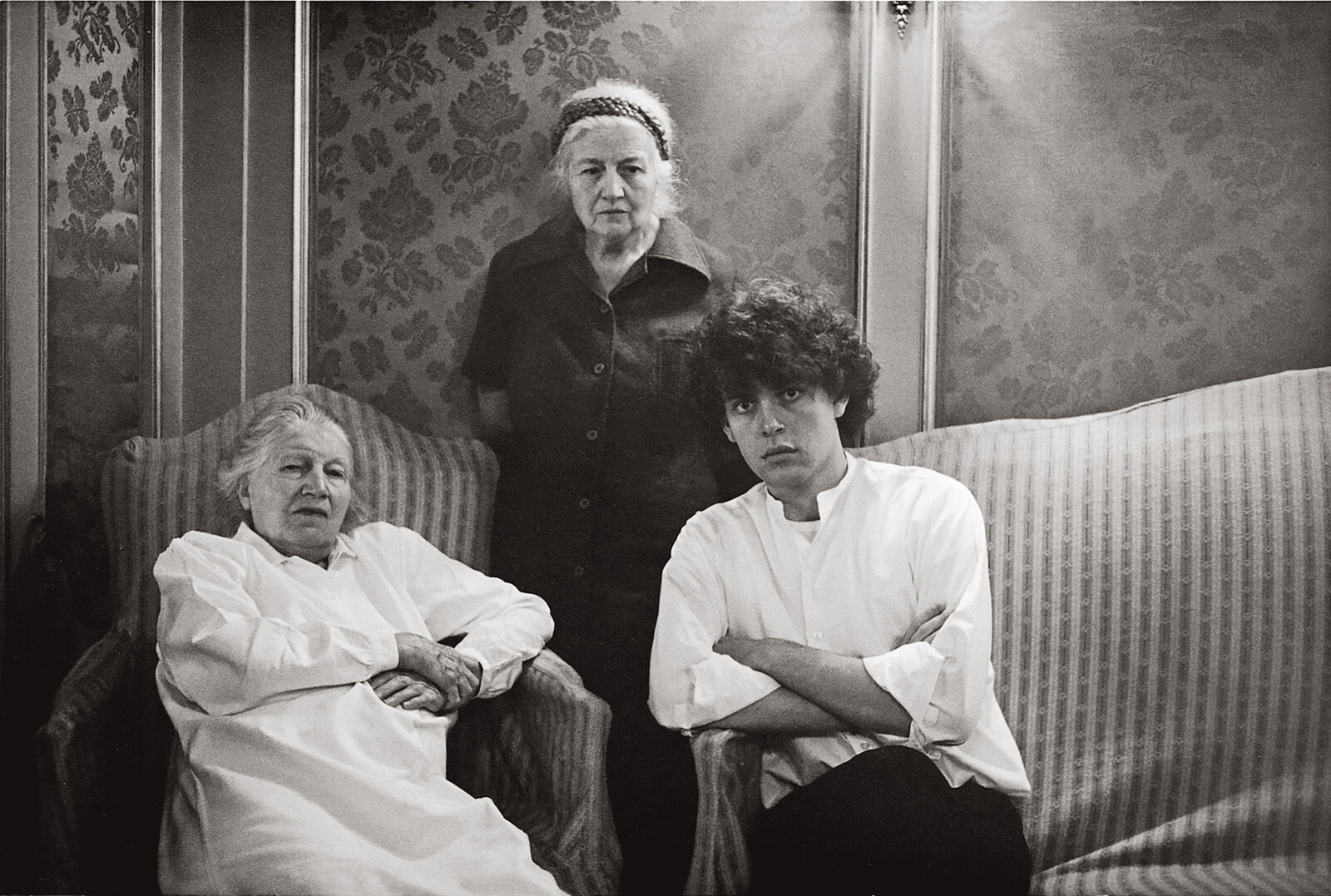
There is a line of criticism that argues that Karl Marx’s Das Kapital (1867–94) is the great gothic novel of the nineteenth century. It’s a line that runs through an essay by the poet Keston Sutherland that, in a bravura piece of close reading, explores the stakes involved in the translation into English of the German word Gallerte. When Marx writes about “bloße Gallerte unterschiedsloser menschlicher Arbeit,” Sutherland argues, he does not refer only to “congealed quantities of human labor,” as the line is most often rendered in English.
He is in fact referring to a staple of German foods and cosmetics; gallerte, Sutherland explains, “was made from the off-cuts and the discarded bits of animals from early industrial slaughter processes. It was the stuff the bourgeoisie wouldn’t want to eat in its natural form, but which could be boiled down and turned into this great mush and then used in breakfast condiments or cosmetics.”
Marx wants the reader to feel the full brutality of what capitalism does to laboring bodies. He wants to reveal the horror beneath the social codes by which the bourgeois protect themselves from the gory facts of the capitalist mode of production sustaining their existence. …
October 25, 2024 – Feature
Warsaw Roundup
Ewa Borysiewicz

Eight years of government by the right-wing Law and Justice party, which came to an end a year ago, severely damaged Poland’s cultural sector, not least by undermining the credibility of the capital’s art institutions. In these circumstances, the responsibility of safekeeping Warsaw’s reputation as a regional hub for contemporary art fell to its commercial galleries. In spite—or perhaps because of—the political and economic climate, recent years have also seen a growing number of non-commercial and artist-led initiatives in Warsaw, gathered together by the annual FRINGE Warszawa. Coordinated by members of the independent art community, its third edition platformed more than eighty spaces, complementing the more than 100 openings taking place as part of the simultaneous gallery weekend.
In contrast to the gallery weekend, the venues of which are concentrated around the city center, FRINGE sprawled across Warsaw. Visitors were invited to scout the Vistula riverbank for Karolina Majewska’s “Holy Trees” (2021–ongoing), a series of beeswax body parts attached to tree trunks, and venture to the Kowalscy confectionery, where Kacper Tomaszewski and Mateusz Włodarek’s exhibition “Through the Stomach to the Heart” celebrated friendship and sweets. The curators playfully paired the works with offerings from the city’s traditional pastry shop, giving …
October 18, 2024 – Feature
London Roundup
Chris Fite-Wassilak
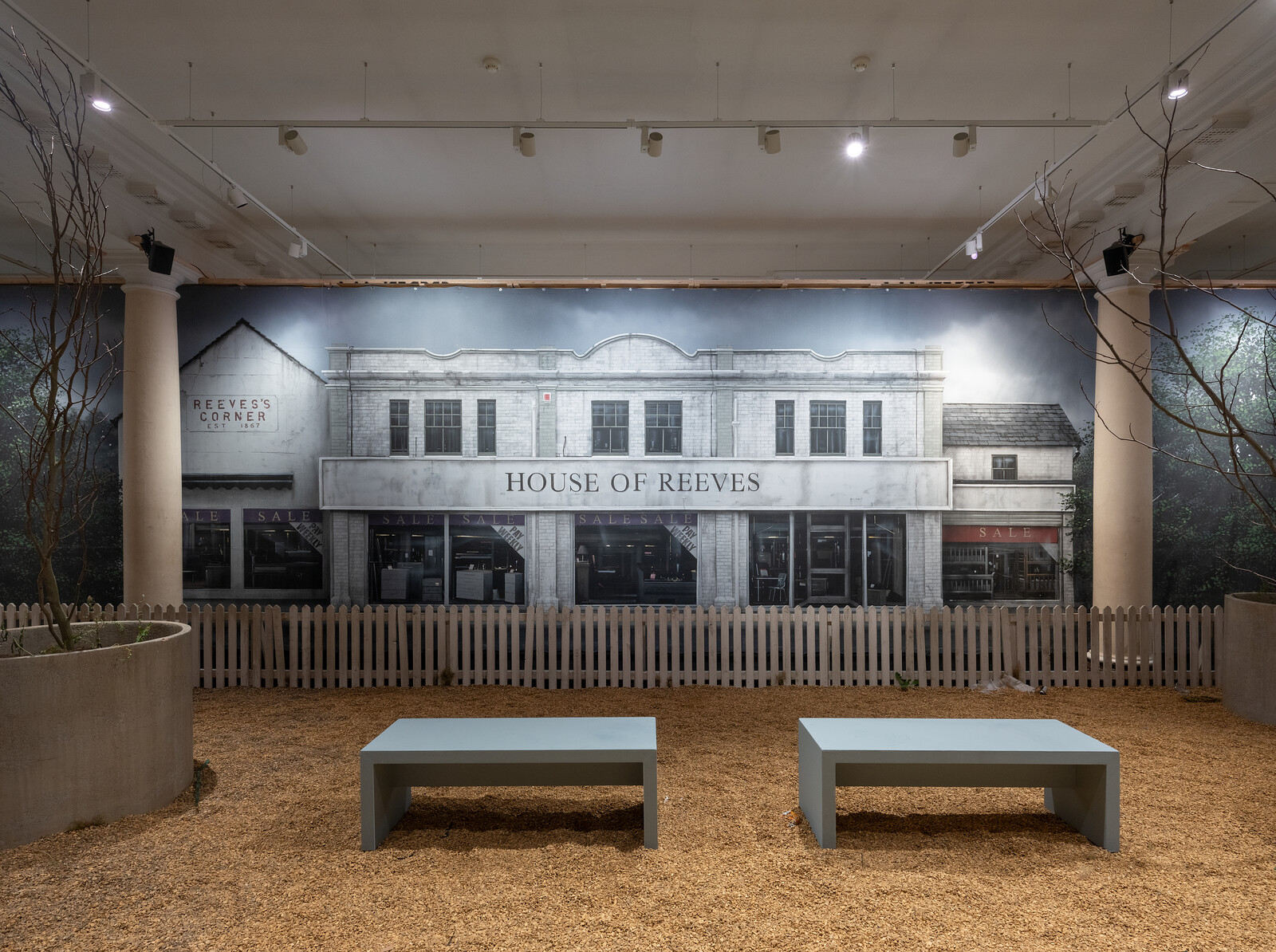
A BlackBerry phone in a vitrine plays a short video: a nighttime shot of a building on fire. The scene is familiar to anyone who was in London during the 2011 unrest that grew out of the police shooting of Mark Duggan: the House of Reeves furniture store in flames, caught on both shaky handheld phone and swooping helicopter footage, broadcast and shared over and over. In the next room in Imran Perretta’s “A Riot in Three Acts” at Somerset House is a meager set, as if belonging to an abandoned play, with a few benches plonked amongst pebbles strewn with rubbish, a large backdrop painted with a nondescript shopfront.
This is Reeves Corner in Croydon, where the burnt-out building once stood. A soundtrack of swelling strings fills the room—a quick-paced march, followed in a later section by soaring high notes—and adds narrative tension and the hope of redemption to Perretta’s non-film. Melodrama is part of the point here: while listening, I’m creating a mental film loaded with scenes shaped by that news footage, and bumped up with film conventions. History repeats itself, Perretta’s restaging suggests, first time as tragedy, second time as Hollywood special.
The causes of the 2011 …
October 11, 2024 – Feature
Jo Baer
Rachael Rakes

Jo Baer nicknamed the five large-scale abstract paintings that compose “The Risen” (1960/61–2019) series her “zombie” works. Despite living in Amsterdam for the past forty years, Baer remains associated with the American minimalist movement, both for her works and for her bold public engagements (and squabbles) with the New York art world’s sculptors, critics, and dealers. Destroyed by the artist in the early 1960s, before which they were documented by Polaroid photographs, the “Risen” paintings were recreated in 2020.
[figure ROSE_JOBAER6]
A few years earlier, the term “zombie formalism” was omnipresent in Western art criticism. A condemnation coined by Walter Robinson, it referred to an abstraction that had come back into favor in casual collusion with the speculative market, and suggested that an aesthetic not formed by new ideas but by a final evacuation of whatever shred of meaning was allowed to live within abstract painting. This notion came and went quickly in the currency of hot takes, but it hints at the changes and some lingering positional uniformity in art criticism in the six decades between Baer’s conception and recreation of these works.
Neither era’s discourses have sufficiently contended with Baer’s minimalist project, which found its stride and distinctive …
October 9, 2024 – Feature
Carrie Rickey’s A Complicated Passion: The Life and Work of Agnès Varda
Brian Dillon
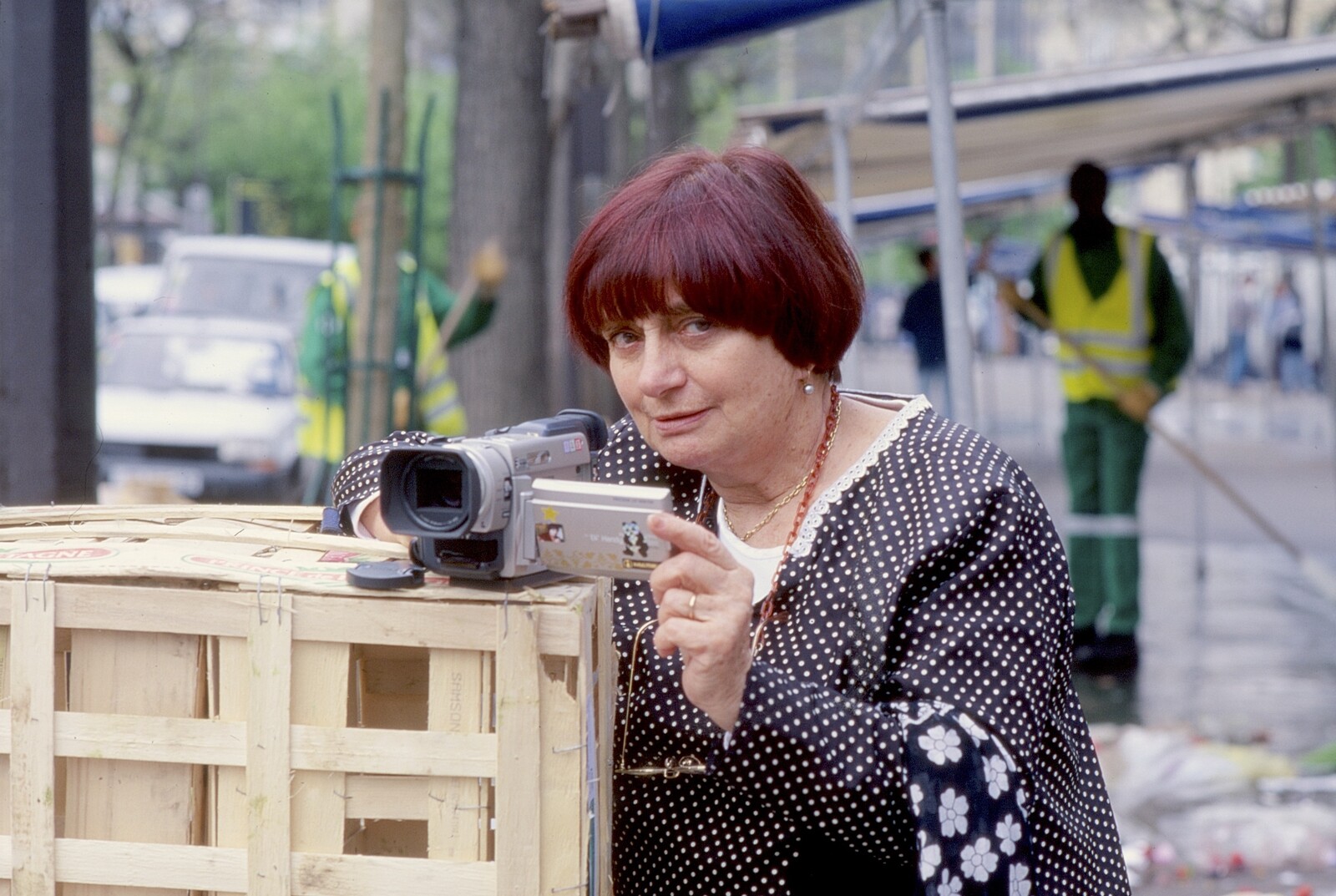
I once met her, if you could call it that, for a few seconds at the Frieze Art Fair; she turned to the person who introduced us and asked: “Is he going to look after me?” She must have meant it ironically, because in 2009, a decade before she died, Agnès Varda was not only busier than ever—after photography and film, she had lately embarked on her “third career” as an installation artist—but honored as a New Wave instigator and a pioneer feminist director. Also, to her delight, more and more beloved as an eccentrically turned-out presence on the film-festival and art-fair circuits: beneath the lifelong bob and variegated dye-job, she might turn up in silk pajamas, purple tracksuit (both by Gucci), or dressed as a potato. Varda’s last years formed a giddy and heartening coda to a life and a body of work that were playful and profound. And an artist who, if Carrie Rickey’s new biography of her is to be trusted, was utterly tireless on every front, artistic or intimate.
Varda was born in Brussels in May 1928—her parents named her Arlette, because she had been conceived in Arles. When the Nazis invaded Belgium in 1940, the …
October 3, 2024 – Feature
On Gego, Miguel Braceli, and the Reticuláreas
Mónica Amor
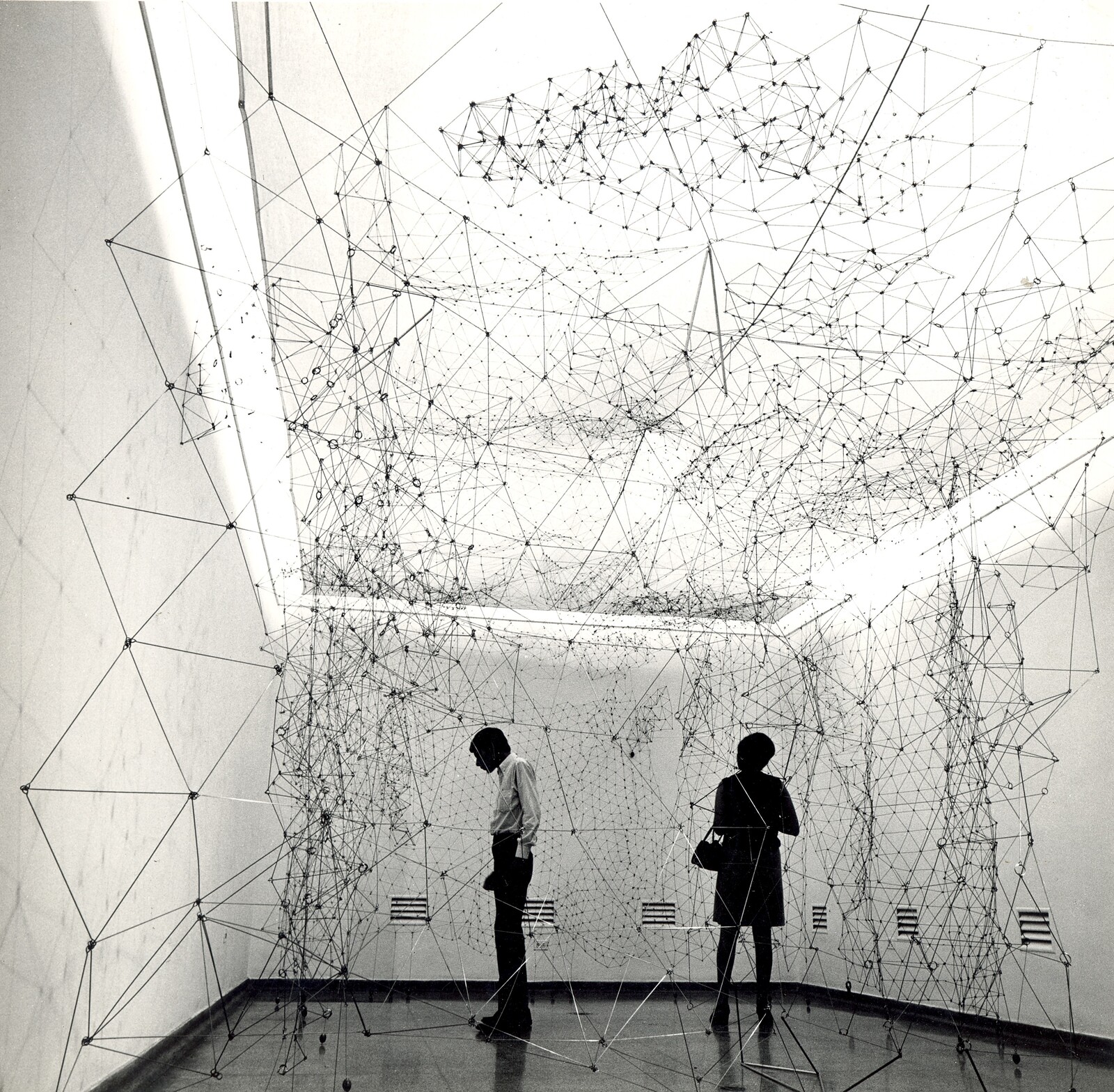
In a fit allegory for a country Luis Pérez-Oramas once defined as a “wasteland republic,” one of Venezuela’s greatest twentieth-century artworks remains out of sight, its status uncertain. Reticulárea—an environment made of metal nets, based on triangular modules, that hang from the ceiling and surround the viewer—was realized by the German-born artist Gego (1912–94), who arrived in Caracas in 1939 with a degree in Architecture and Engineering but no more than a few words of Spanish. First shown at the Museo de Bellas Artes of Caracas in June 1969, it was thereafter remade for several exhibitions until a room was dedicated to it in 1980. Since 2002, it has rarely been available for viewing, a limitation, attributed to conservation issues, which seems to have become permanent around 2009 (exact records are unavailable). In 2017 the work was deinstalled, losing both its form and its place, and rendering its absence total.
Despite this, the work has been germinal to contemporary Venezuelan art: its photographic record securing its reputation as a pioneering aesthetic proposal. The recent flowering of Gego’s international renown as a radical abstractionist who revolutionized postwar sculpture rests on the work’s refusal of volume, mass, monumentality, and its embrace of …
September 20, 2024 – Feature
New York City Roundup
Orit Gat
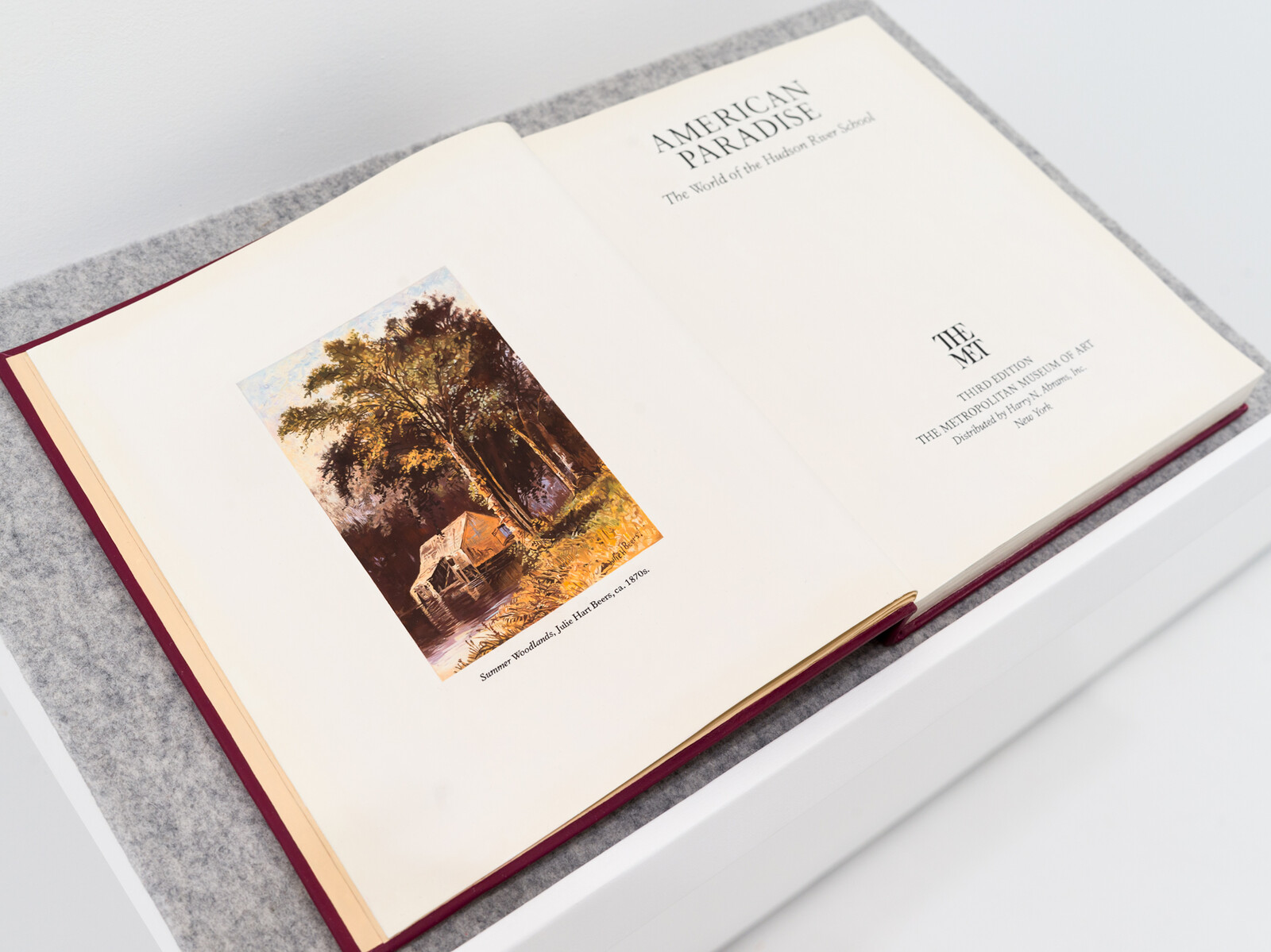
“American Paradise”: Anna Plesset took the title of her show at Jack Barrett Gallery from a 1987 exhibition at the Metropolitan Museum of Art about the nineteenth-century Hudson River School of American landscape painting, which featured twenty-five male artists and not a single woman. Plesset responds by researching the work of women artists of the time, applying an astonishingly skillful trompe l’oeil technique to the task of filling in historical gaps.
Her show opens with a sculpture mimicking the original exhibition’s catalogue, a perfect facsimile in oil on epoxy, aluminum, and steel placed on a plinth. Ostensibly the catalogue’s third edition (only one edition was published), the frontispiece is here replaced with a painting by a woman artist, Julie Hart Beers. In Value Study 2: Niagara Falls / Copied from a picture by Minot / 1818 (2021), Plesset paints an impeccable reproduction of the paper printout of an online image search for Louisa Davis Minot’s painting of the waterfalls, as if adhered to the canvas for reference using blue painter’s tape. The canvas itself shows the sketch and a beginning of a copy of Minot’s original. Plesset’s realism is not a remedy for historical injustice but a conceptual stop-and-start, a …
September 17, 2024 – Feature
Pallavi Paul
Pramodha Weerasekera
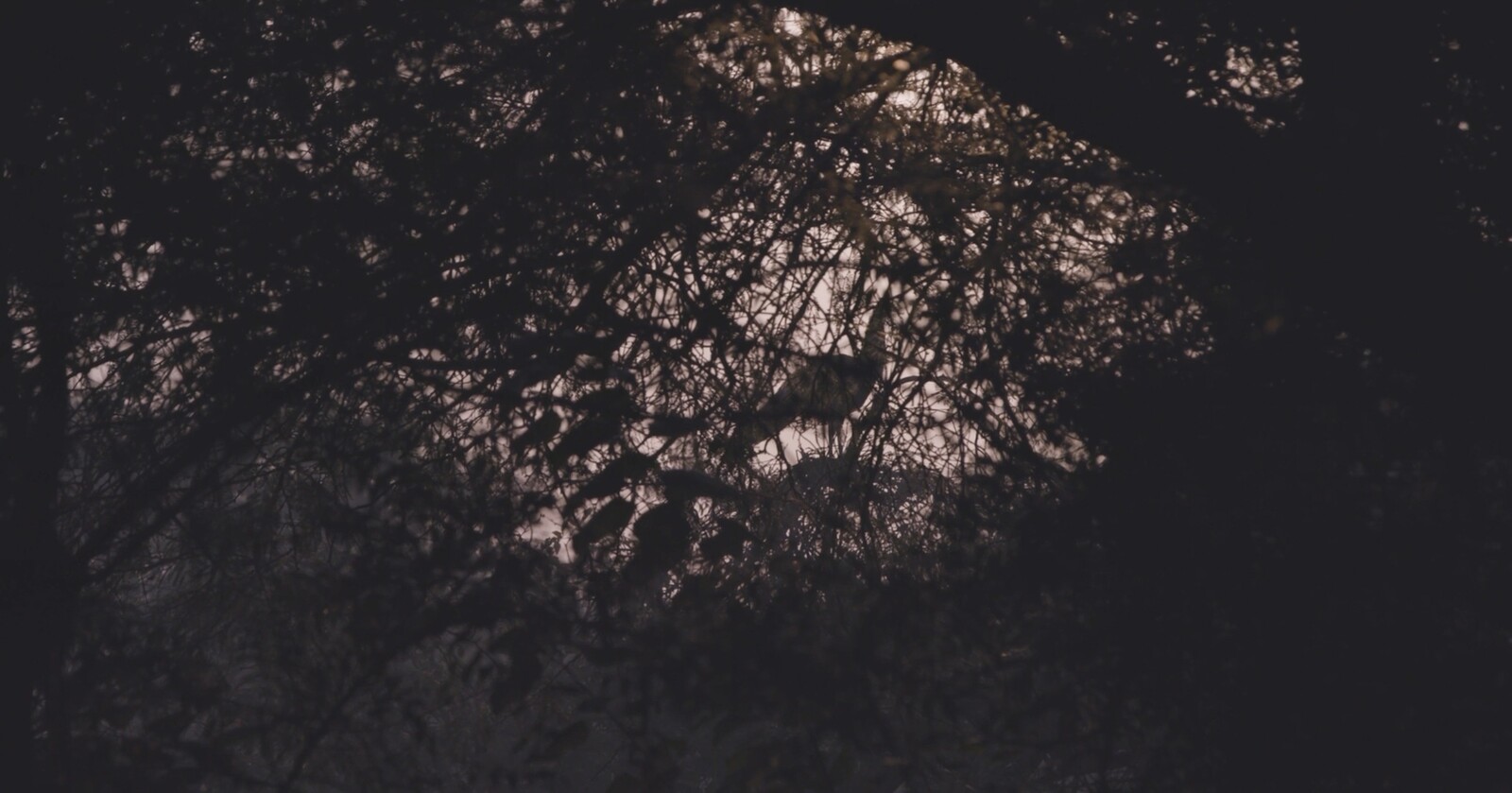
Pallavi Paul pursues a single goal across diverse disciplines: to make visible that which cannot normally be seen. Between 2013 and 2022, her works took inspiration from topics including India’s feminist movements (Long Hair, Short Ideas, 2014), the children abducted to fill arrest quotas for juvenile delinquency in the late 1970s (The Blind Rabbit, 2021), and the 2019 discriminatory citizenship law which precludes the naturalization of Muslims fleeing from Pakistan, Afghanistan, and Bangladesh due to fear of religious persecution in their home countries (in Far Too Close, 2020). Made between Paul’s bases in Delhi and Berlin, these multimedia installations, participatory performances, photographs, texts, and watercolors touch on concepts such as breath, grief, death, secrets, disappearance, reverie, and injustice.
In doing so they call to mind Ann Cvetkovich’s concept of an “unusual archive,” proposed as a solution to the un-representability of trauma and related emotions of love, rage, grief, and shame. Cvetkovich conceives of this archive as ephemeral, consisting of oral and video testimonies, memoirs, letters, journals, and more, just as Paul’s work over the past decade draws on both individual and collective memories. The artist’s choice to record and present people’s daily lives negotiates alternative approaches to documentation, media, and …
August 1, 2024 – Feature
Futuredays
The Editors
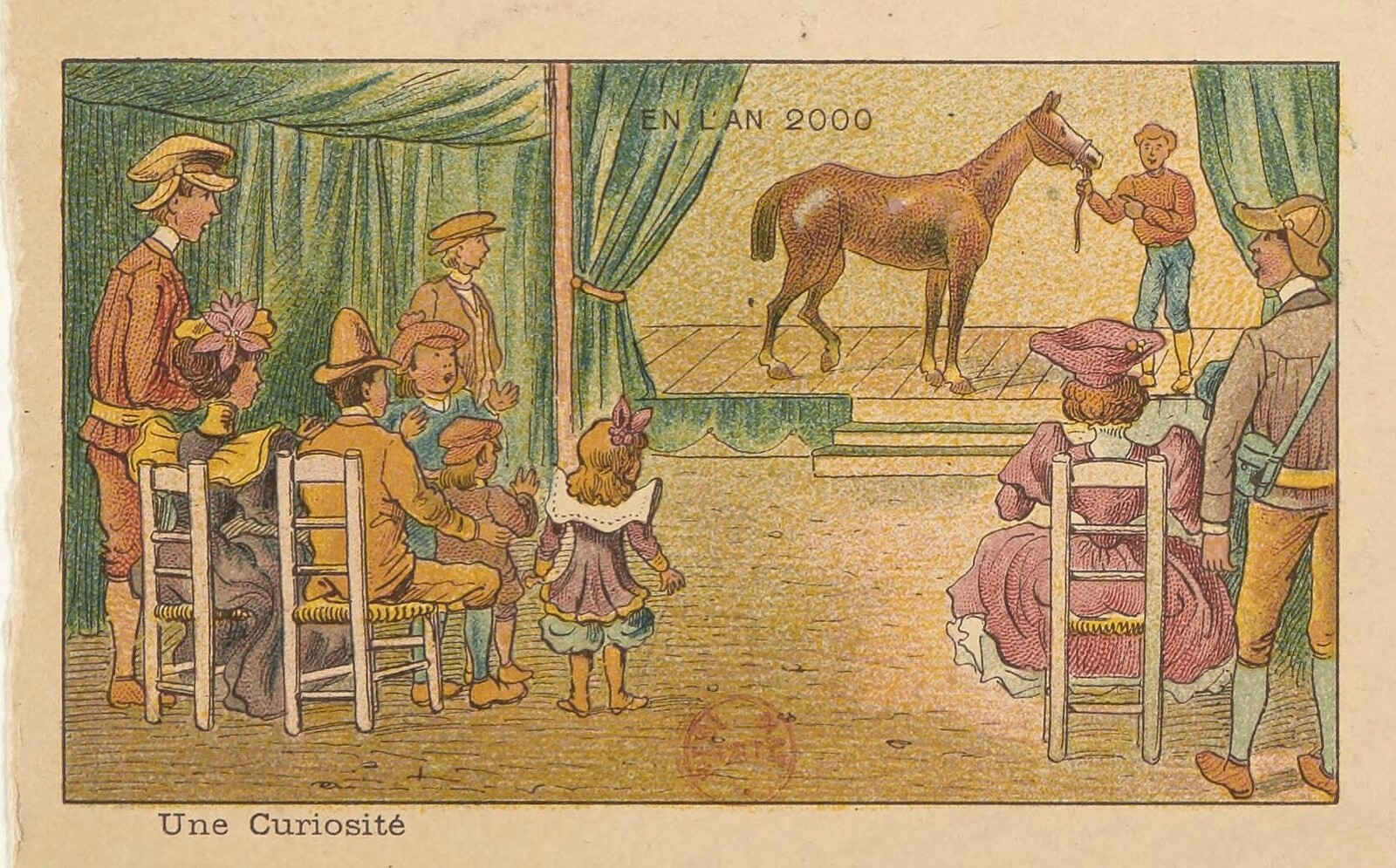
Archival documents “are not items of a completed past, but rather active elements of a present,” writes Ariella Azoulay. As e-flux Criticism takes a break from publishing new material in August, the editors have selected a few pieces from our free-to-access archive of more than 1,700 articles that might relate in new and unexpected ways to the moment. Search the archive yourself by clicking here.
“Defiant Muses: Delphine Seyrig and the Feminist Video Collectives in France in the 1970s and 1980s” by Barbara Casavecchia
Moving behind the camera was for actress and activist Delphine Seyrig “a revelation, an enormous pleasure, an incomparable revenge,” writes Barbara Casavecchia in her review of this 2019 exhibition at the Reina Sofia in Madrid. Showing how feminist collectives in France took inspiration from the revolutionary postcolonial filmmakers of the Global South, the show challenges the model of vanguard art beginning in the west and being adapted elsewhere to local conditions. Here as throughout the history of modern and contemporary art, the opposite is true: the example of the “margins” electrifies a moribund “center.”
LaToya Ruby Frazier: The Last Cruze by R.H. Lossin
LaToya Ruby Frazier’s “The Last Cruze” documented the fate of laborers at a GM …
July 31, 2024 – Feature
Mo Yi’s Selected Photographs, 1988–2003
Patrick Langley
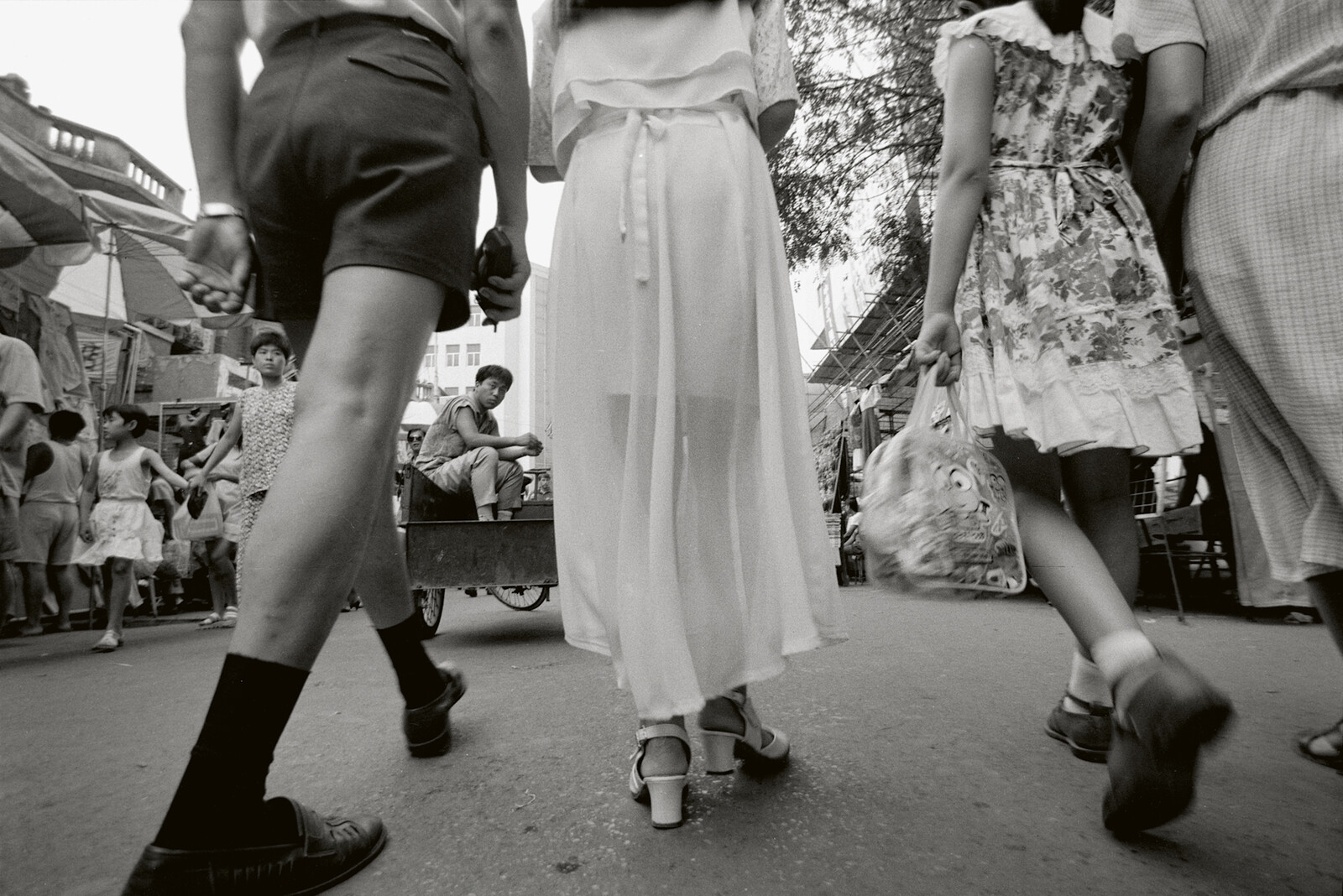
The photographer Mo Yi describes himself as “a stray dog.” It’s a useful metaphor for understanding both his peripatetic life and his restless approach to street photography. The images collected in his first monograph to appear in English—published to coincide with exhibitions at Beijing’s UCCA and Rencontres d’Arles curated by Holly Roussell, who edits the book and contributes the first of two essays—are the result of his rigorous commitment to chance.
As Christoph Wiesner notes in the second essay, Yi’s photographs of urban life, captured mostly outside and on the move, were inspired in part by Jackson Pollock’s action painting. He took these pictures not just intuitively but almost at random, moving the camera, his body, or both, sometimes mounted on his arm or hung around his neck, and often without looking through the viewfinder first. The mostly black-and-white photographs that result are as blurry, claustrophobic, and raw as you’d expect. They suggest the adrenalized mood of a country disoriented by breakneck change and uneasy about the relationship between the individual and the collective.
The series that opens the book, “1m—The Scenery Behind Me” (1988–89), features a handful of proto-selfies. Yi’s scrunched frown or truncated forehead appears at the bottom …
July 19, 2024 – Feature
60th Venice Biennale, Central Asian Pavilions
Nikolay Smirnov
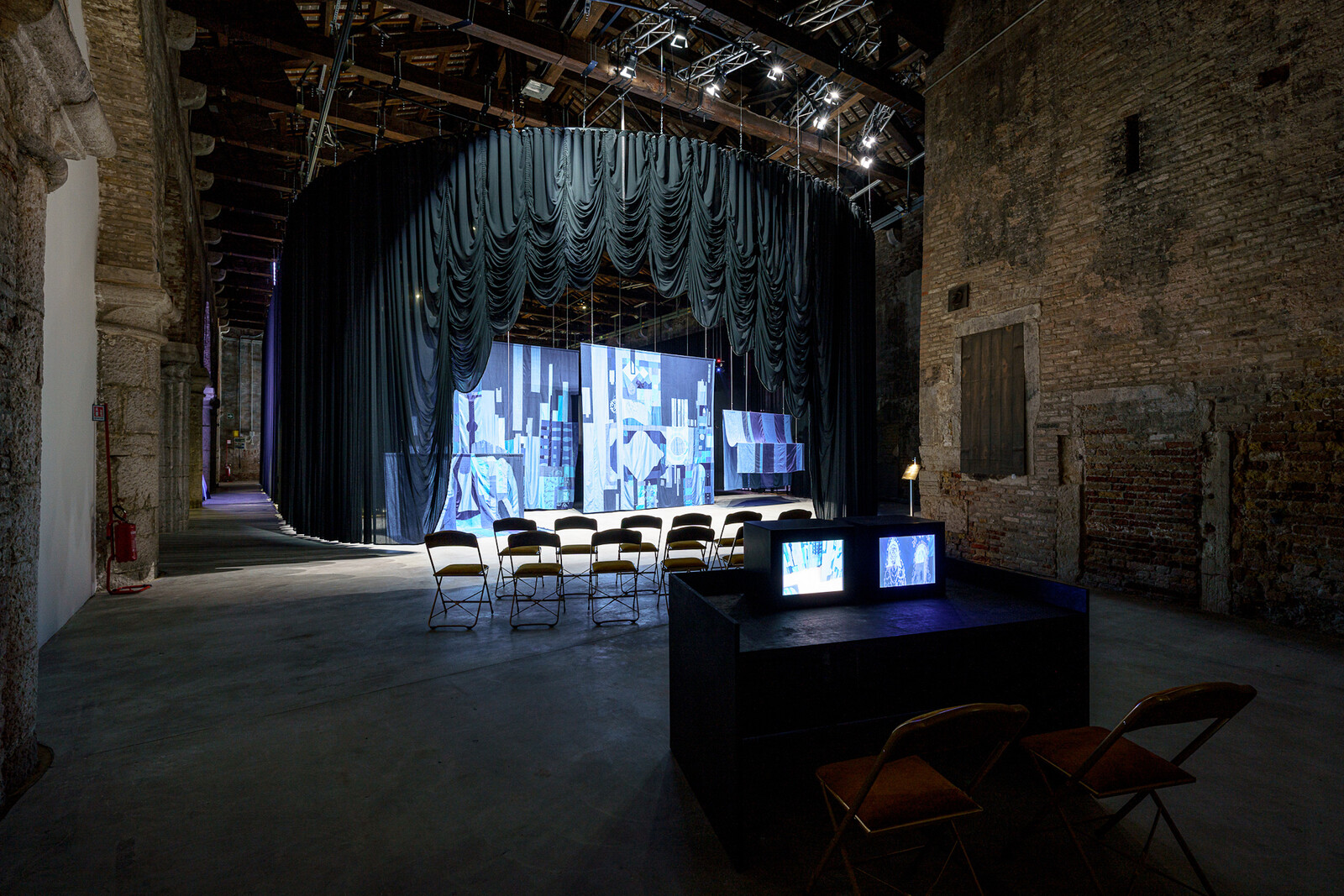
Between 2005 and 2013, the Central Asian Pavilion at the Venice Biennale presented work from the region. For the past two editions, Uzbekistan and Kazakhstan have exhibited independently, which raises the question of what they hope to achieve. The Uzbekistan Pavilion is run by the state-funded Art and Culture Development Foundation, which is closely connected to President Shavkat Mirziyoyev through his daughter and official advisor Saida, who is known as the country’s image-maker. It has significant resources to “integrate the art of Uzbekistan into the global art and cultural space,” including by staging spectacular installations in a spacious pavilion at the heart of the Arsenale.
Compared to these soft power aspirations, the Kazakhstan Pavilion is a private initiative, if also closely linked to family networks, in this case between curator and artist. For the 2024 edition of the Biennale, Astana gallerist Danagul Tolepbay wanted to exhibit the works of her father, Yerbolat Tolepbay, one of the most famous “official” artists of his generation, in a parallel program. Being receptive to the idea, representatives of the Biennale communicated to her that no official submission for the national pavilion had yet been made. So she sought and received approval and some support …
June 21, 2024 – Feature
Zürich Art Weekend
Orit Gat
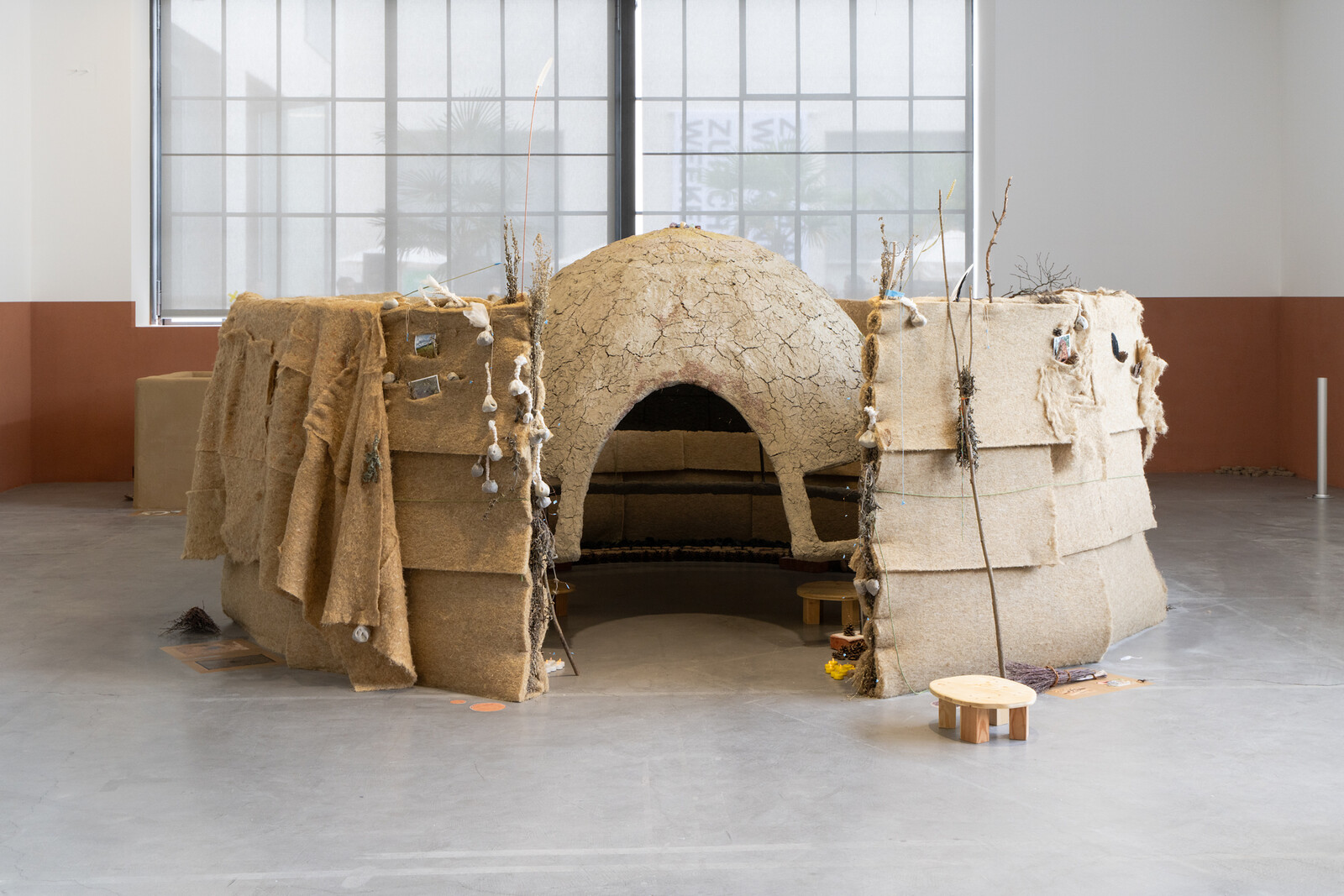
Heidi Bucher’s Skin Room (Rick’s Nursery, Lindgut Winterthur) (1987) is a mold made from latex and fish glue of a friend of the artist’s childhood room. On view at the Migros Museum as part of a collection show titled “Material Manipulations,” this “skin” hangs by clear strings from the ceiling: yellowish, haunting, still recognizably domestic. Next to Bucher’s sculpture, in Martín Soto Climént’s The Swan Swoons in the Still of the Swirl (Stills 1,2,3,4,5,6) (2010), metal Venetian blinds hang, spread like handheld fans, from ceiling to floor. These elegant sculptures, like Bucher’s work, figure the home as physical artifice, bricks and mortar, more material construction than abstract idea.
The effect is alienating and evocative at once, and the fragility of these homes suggests the impossibility of conceiving of the home as simple refuge. A second show at the Migros, Dineo Seshee Raisibe Bopape’s “(ka) pheko ye – the dream to come,” subverts this construction of home by bringing to the museum the very real conditions of Bopape’s native South Africa through clay display structures that echo the front yards in which people congregate, work, and socialize. Bopape makes a place for dreaming and “collective healing” through both objects—like the projector …
May 31, 2024 – Feature
Shadows of Reality: A Catalogue of W.G. Sebald’s Photographic Materials
Brian Dillon
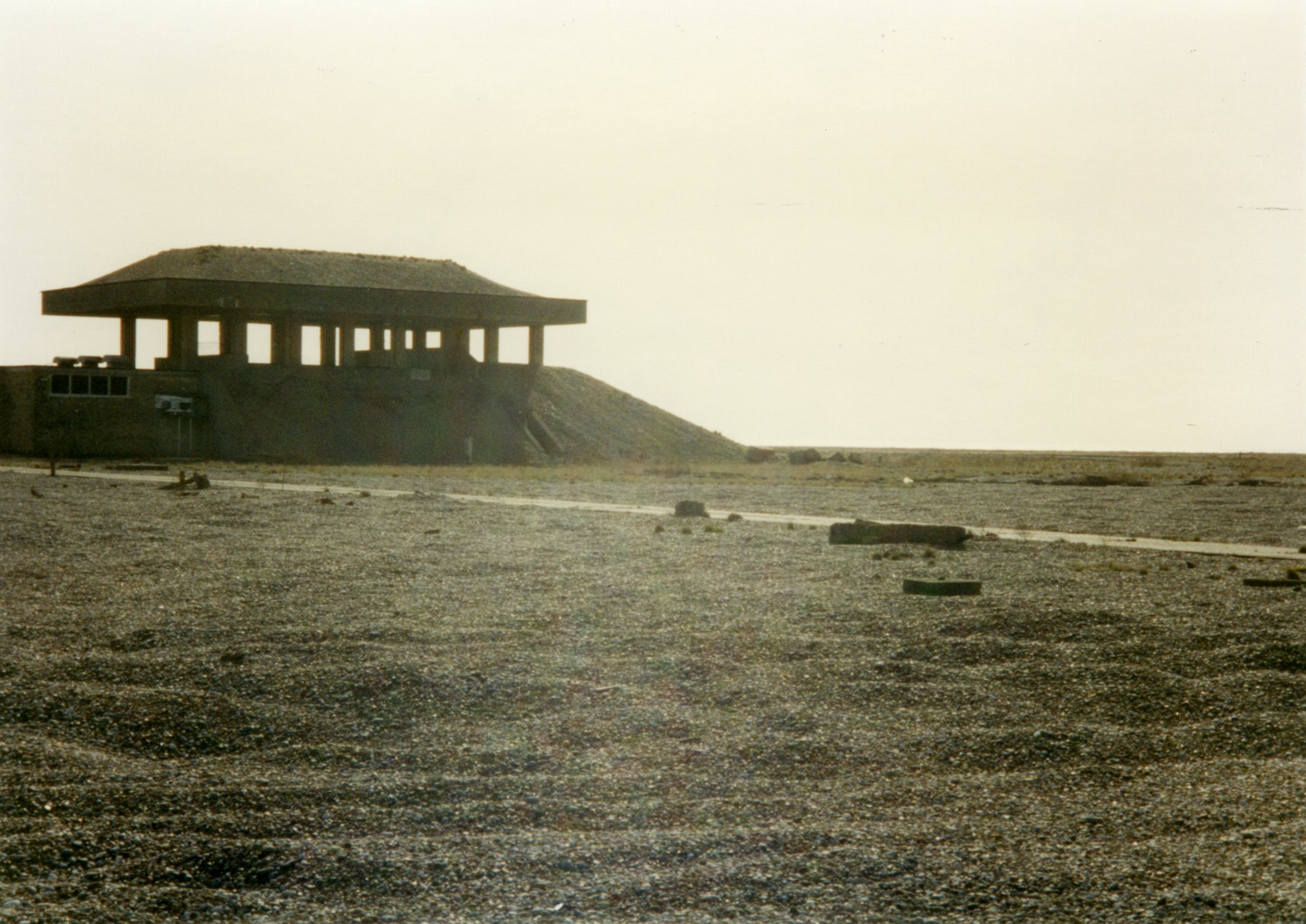
“The photograph is meant to get lost somewhere in a box in an attic. It is a nomadic thing that has only a small chance to survive.” W. G. Sebald was not the first writer of fiction to punctuate his prose with darkling snapshots and other photographic fragments. In 1892 the Belgian Symbolist Georges Rodenbach reproduced vacant canal scenes and brooding convents in his novel of obsession and uncanny doubling, Bruges-la-Morte. More renowned: André Breton’s inclusion of Parisian fragments and photographic montage in Nadja (1928). Sebald was well informed about such precursors, as also the Benjamin-Sontag-Barthes axis that sees photographs as phantasmic remnants and memento mori. But images in (and by) Sebald have a more vivid and varied life than this spectral-surreal lineage allows.
Until recently, the German author’s photographic habits and motivations have mostly been gleaned from interviews—he died in 2001—and from the books themselves, in which images of characters, landscapes, architecture, and historical disaster may or may not match the “real” thing. So many ways of saying: They are not illustrations, you know. What, then? There is no simple answer in Shadows of Reality, a lavish volume that collects as far as possible (with restrictions from his estate) …
May 30, 2024 – Feature
“Foreigners Everywhere”
Jace Clayton
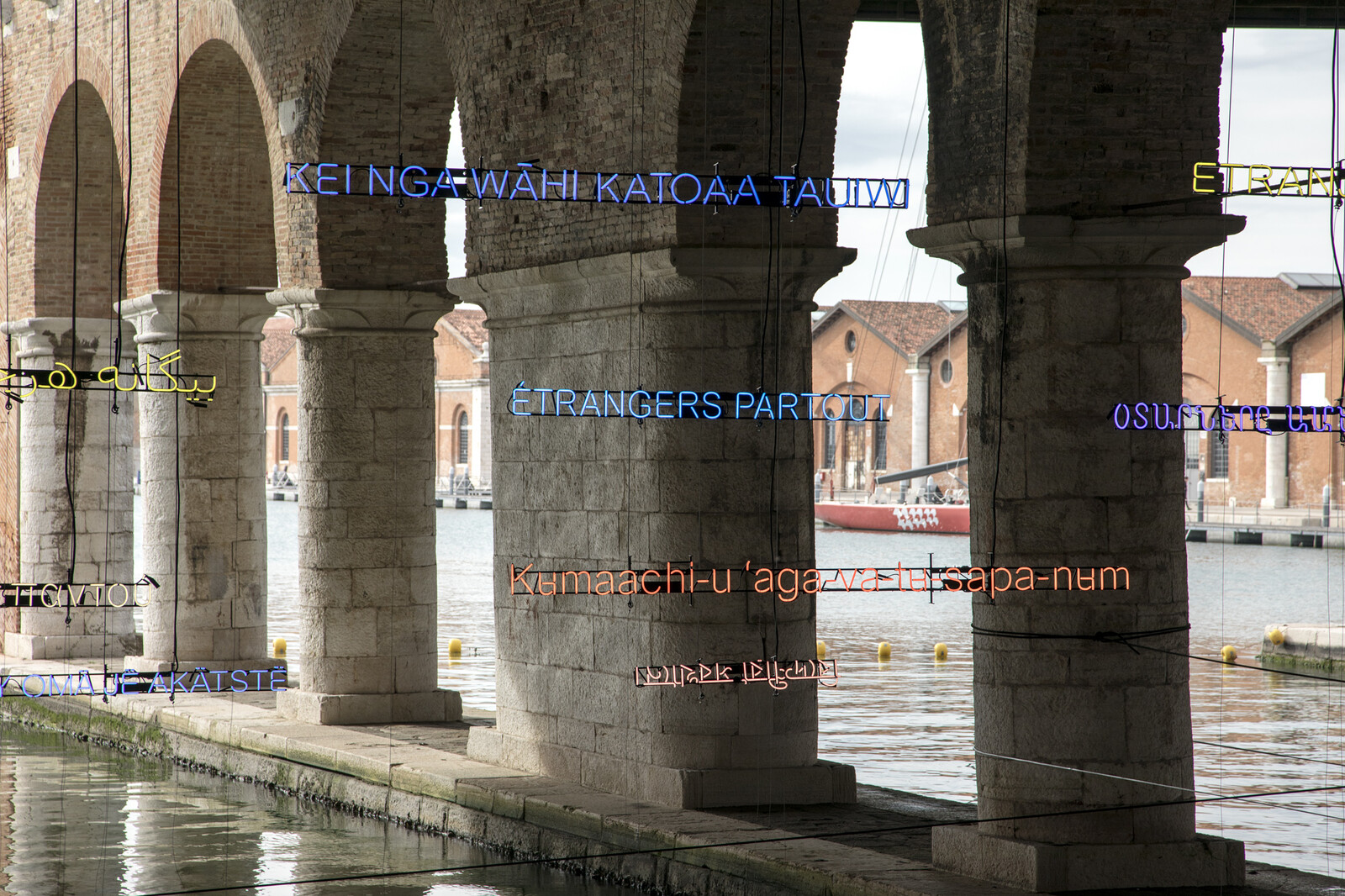
There are differences that make a difference and differences that don’t. The 60th Venice Biennale, curated by Adriano Pedrosa, announces its commitment to the ones that don’t with the title: “Foreigners Everywhere.” The phrase comes from a 2004 artwork by Claire Fontaine reprised for the exhibition but, when blown up to biennial scale, the one-liner turns didactic and presumptuous. Any number of approaches could have mitigated against a title that unites the work of 331 artists under a false equivalency (see also: “We Are the World,” “All Lives Matter”).
Pedrosa organizes the show around two broad identity rubrics: “Queer”—a metacategory that includes anyone “who has moved within different sexualities and genders,” along with outsider, folk, and Indigenous artists—and “Foreigner.” In a departure from the Biennale’s usual emphasis on contemporary makers, more than half of the featured artists are deceased. Folkloric, salt-of-the-earth vibes dominate: the mood is wholly at odds with the bland cosmopolitanism at play in terms of who shows up and how the work gets presented.
By the time one encounters the colorful burlap-backed tapestries credited to “Arpilleristas (unidentified Chilean artists)” in the Arsenale group exhibition, you’ll have already come across several superficially similar textiles from around the world. …
May 1, 2024 – Feature
Ben Rivers’s Collected Stories
Maria Dimitrova

This volume announces itself simply enough. “I am here to talk to you today about the work of Ben Rivers,” begins its opening chapter, which is by Daisy Hildyard. Hildyard’s piece offers a kind of inventory of the component parts of the celebrated British filmmaker: his name “comes from a Hebrew word meaning ‘son of’ and the geographical term, as in Ben Nevis, comes from a Gaelic word for mountain peak, or cone, which derives in turn from a word meaning ‘projection’.” His last name, as Hildyard points out, requires no explanation.
Hildyard’s essay is titled “The figure on the wall,” after Henry James’s short story “The Figure in the Carpet” (1896), about a journalist becoming obsessed with the hidden meaning embedded in the work of a novelist, the way a Persian rug features a repeated pattern. It’s a subtle introduction to the inherent premise of this volume, featuring fourteen writers responding to a different film by Ben Rivers, with no obligation to describe, discuss, or even mention the work in question. Far from being exercises in ekphrasis, many of these stories depict self-contained worlds—from a fairy tale queen giving birth to a beastlike son in Marina Warner’s “Blindsight” to …
April 4, 2024 – Feature
Cynthia Carr’s Candy Darling: Dreamer, Icon, Superstar
McKenzie Wark
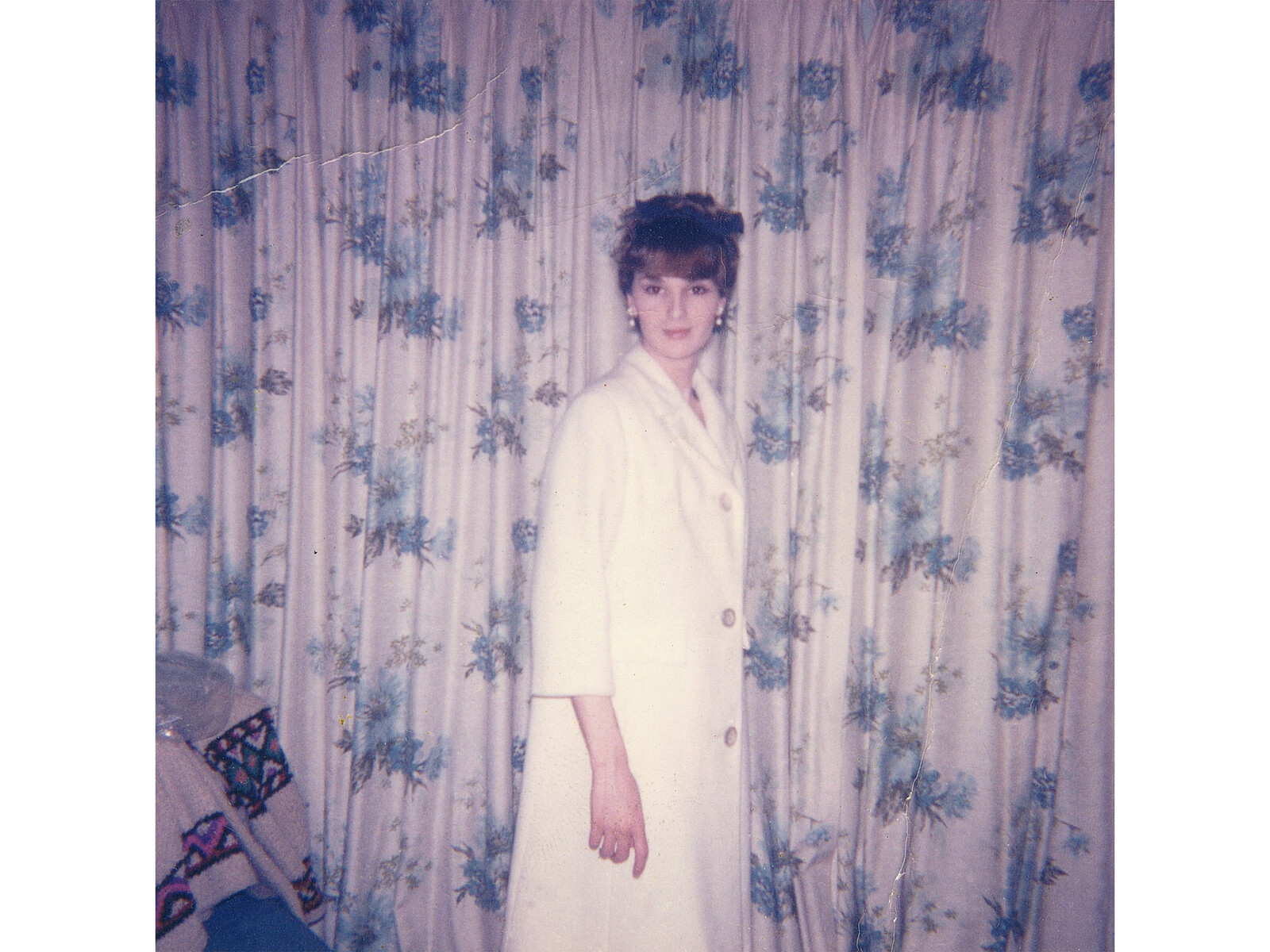
I probably speak for many trans readers of Cynthia Carr’s biography of Candy Darling when I say that I have very mixed emotions about it. On the one hand, I’m grateful for Carr’s tireless work in documenting the life of Andy Warhol’s most luminous trans superstar. On the other hand, it’s painful to read page after page of people who hated Candy, abused her, insulted her, exploited her, or, on a good day, merely disrespected her.
Born in 1944, Candy grew up on Long Island. Her father was an asshole. Her mother, at best, put up with her. She was one of those whom straight people, cis people, perceives as other from the start. High school was a torment. As a young Candy confided to her diary: “Nobody loves or understands me. This is a wicked world, I think.” She was right.
The wicked world was out to crush her long before she could fashion herself as “Candy Darling.” Around 1962 she started taking the Long Island Railroad into Manhattan to escape, mostly to hang out around Washington Square. She started constructing a persona through which to survive: “I must learn to charm people in a quiet way.”
Carr does …
March 25, 2024 – Feature
Multi-Sensory Languages: On Colomboscope 2024
Elena Sorokina
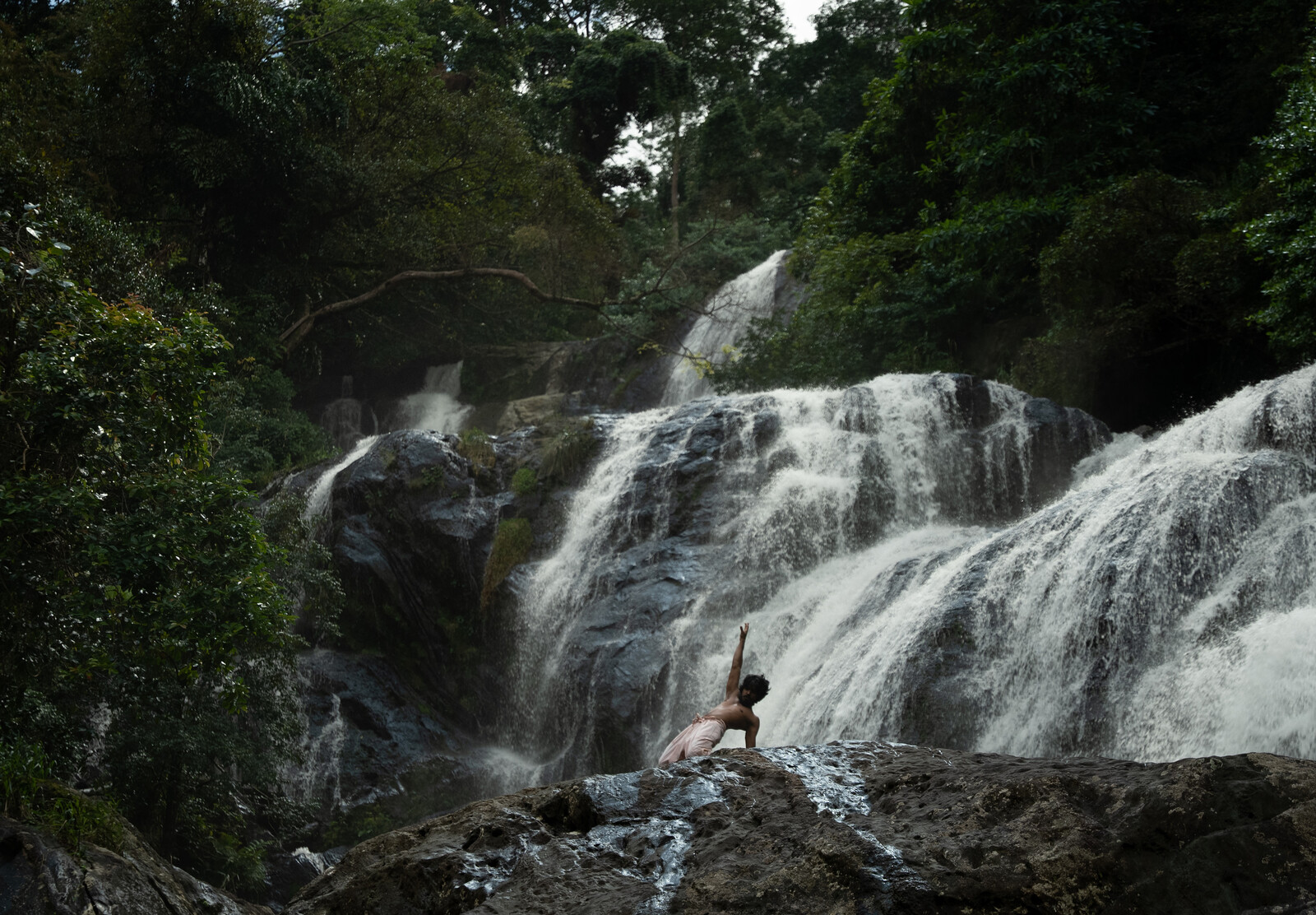
“The endless symbolism of forests lies in their low visibility,” writes Anna Arabindan-Kesson, “to move through the dense entanglements of these spaces we need all our senses.” The same might be said of Colomboscope, Sri Lanka’s interdisciplinary arts festival now in its eighth edition. Dense, multi-sensory, and rhizomatic, it speaks through entanglements and intersections, and flows beyond exhibition spaces to wetland walks, conversations with forest gods, and other “mushroomings.”
At JDA Perera Gallery, the main exhibition space, the architecture of meaning can be perceived like a forest stratification, combining a layered verticality with dense horizontal interconnections. Suspended between the gallery’s floors, Ecophora (2023), a light installation conceived by Pankaja Withanachchi and Roshan de Selfa, connects the layers, and calls attention to our precarious relationship with visibility. Deep in the forest, only a flickering vision is possible for the human eye, which occurs when sunlight shines through trees. This phenomenon—called Komorebi in Japanese—is recalled in the artwork’s evocation of the moving luminosity of the forest, inviting the viewers to activate all their sensors.
Ecophora’s shadows almost reach the Ceylon currency made by Laki Senanayake (1937-2021). One of a wave of post-independence artists in Sri Lanka whose work crossed disciplinary boundaries, Laki’s …
February 1, 2024 – Feature
“Condo London”
Orit Gat
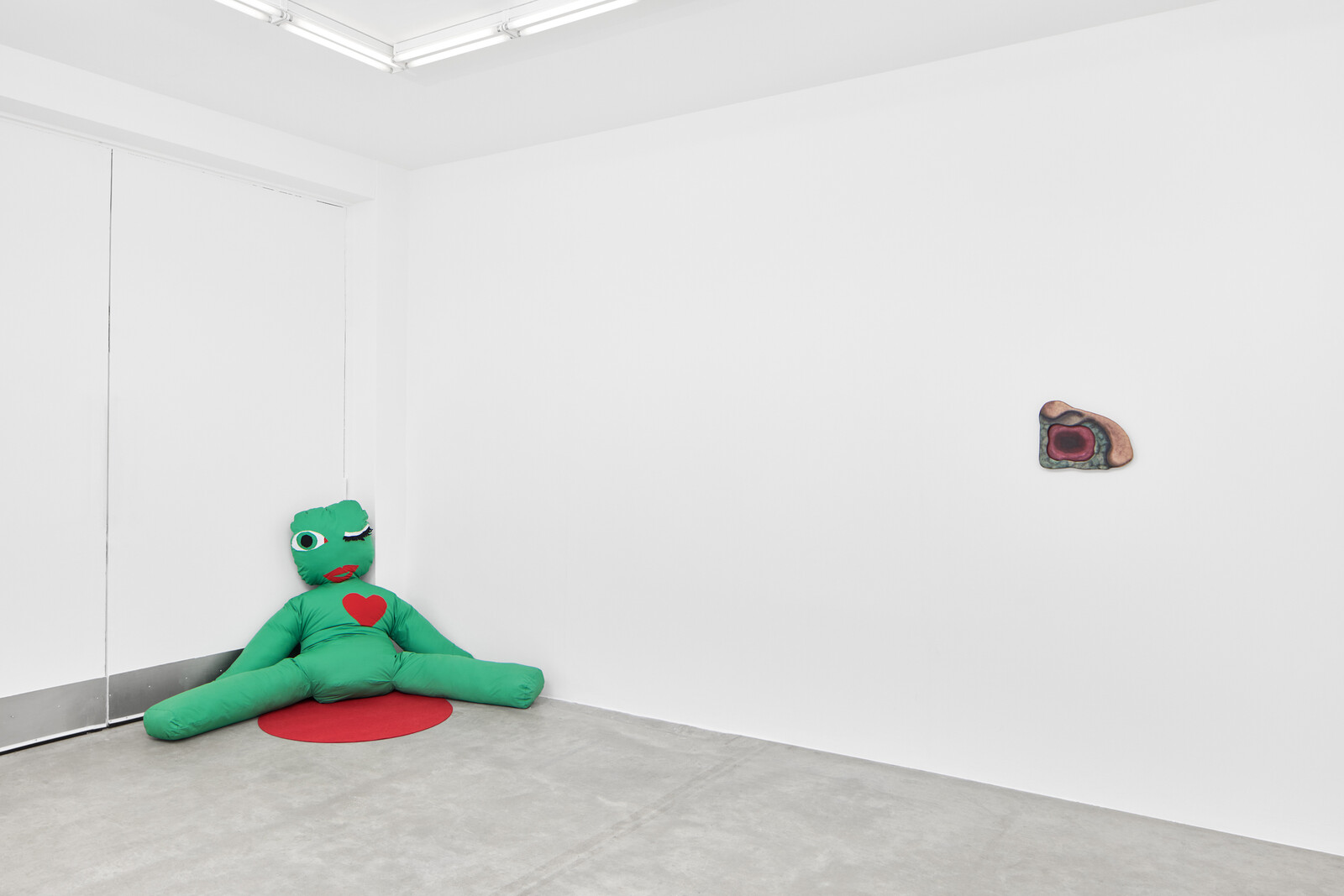
“I’ll be honest, I was a little shocked to recall the plate of bratwurst and mash that I tucked into three days after my husband died,” writes Kat Lister in The Elements. She goes on to describe Margaret Stroebe and Henk Schut’s “Dual Process Model” of bereavement—the way mourners shift between loss and reparation, a fluctuation of feelings in the face of tragedy. As Lister writes, things happen at the same time—grief, pain, bratwurst, mash. The audaciousness of living on. How to hold all these things at once: to be in London looking at a collaborative project where twenty-three galleries allocate their spaces to their international counterparts or stage shared exhibitions that bring together works of wildly disparate forms. To talk about hosting when homes are being ruined.
This uneasy simultaneity is visible throughout Condo. At Warsaw gallery Import Export, hosted by Rodeo, the artworks on view discuss war, heartbreak, and climate catastrophe all at once. Just to the left of the entrance is horses [konie] (2023), a large acrylic and ink on canvas by Ukrainian artist Veronika Hapchenko. Based on mosaics from Pripyat, a town that serviced and housed workers at the Chernobyl Power Plant, it’s a grayscale work …
January 10, 2024 – Feature
What is Wrong with Us?
R.H. Lossin

Even during the best of times—a category for which the present certainly does not qualify—writing about art requires a certain suspension of disbelief. Simply engaging in criticism implies a vague normative claim about the social or political importance of elaborate and often expensive objects. It is a role that can be hard to defend even, or perhaps especially, when the objects claim a political position. But since looking cannot be separated from thinking, Josh Kline’s recent retrospective at the Whitney Museum of American Art (and its exuberant critical reception) merits some extra attention. Not because of the show’s “inscrutable lucidity,” or because the work’s position “between irony and sincerity” offers meaningful insight into the “propaganda it evokes.”
The reason is far too simple to require such attempts to extract complexity from proximal antonyms. Americans spend enormous amounts of time consuming mediated violence, so when images of cut-up human bodies show up in a major art museum, we should pause and consider what exactly we are thinking as we look at the severed head of a waitress on a tray. Kline’s show was widely reviewed (the New York Times published two pieces about it, Artforum gave it the cover), and yet …
December 1, 2023 – Feature
Robert Glück’s About Ed
John Douglas Millar

How to convey the power of this book? The achievement of its language is such that it resists easy translation into criticism as practiced in any conventional mode. Narratively it recounts Glück’s life with the artist Ed Aulerich-Sugai in the 1970s, and the time he has lived since Ed’s death from AIDS in 1994. It is organized concentrically so that the death takes place at the precise center of the book, where there is an extraordinary description of the performing of a last rite, the washing of Ed’s corpse by Glück and Daniel, Ed’s final lover: “We hurry as though Ed might be impatient. Here is the dusky skin, here the straight back, the slightly bowed legs, the narrow waist, the flat ass. AIDS has restored the body I lived with long ago, so thin that I watched his heart beating against his chest till my senses bled in marvelling tenderness.” And right at the center of this description there is a single drop of blood: “Daniel pulls down Ed’s underwear and milks one bright red drop from Ed’s cock. The drop of blood is the only indication of the pandemonium that occurred within this body … Ed’s murderous blood.” …
October 25, 2023 – Feature
Mexico City Roundup
Gaby Cepeda

Mexico City’s cycle of exhibitions often feels like a hamster wheel that never stops turning. This fall’s openings, however, set a more introspective and meditative—and perhaps not as obviously market-driven—pace. Yes, there was a lot of painting. But much of it felt quite unexpected in its deviation from recent attachments to the colorful and the figurative, and notably more mature than the pop-culture fixations that have crowded the city’s galleries of late. This approach to painting could even be broadly described as a form of disengagement or retreat: a movement inwards, embracing dreams and memories.
One such example was José Eduardo Barajas’s “Saliva,” his debut solo show at PEANA. Barajas’s practice to date has dabbled in post-internet aesthetics, creating loosely rendered CGI images of diamonds and currency falling from the sky. Earlier this year, however, for “Mnemósine” at Proyectos Multipropósito, Barajas replaced the ceiling tiles in a massive office space with tile-sized, loosely landscape paintings showing clouds, sunsets, dice, car rims, and hair (among other things) in reconfigurations of his earlier, CGI-oriented work. That show was a preparatory sketch, of sorts, for “Saliva.” In this tighter—and more impressive—body of work, Barajas magnified his experiments with landscape painting, and turned them …
October 20, 2023 – Feature
London Roundup
Chris Fite-Wassilak
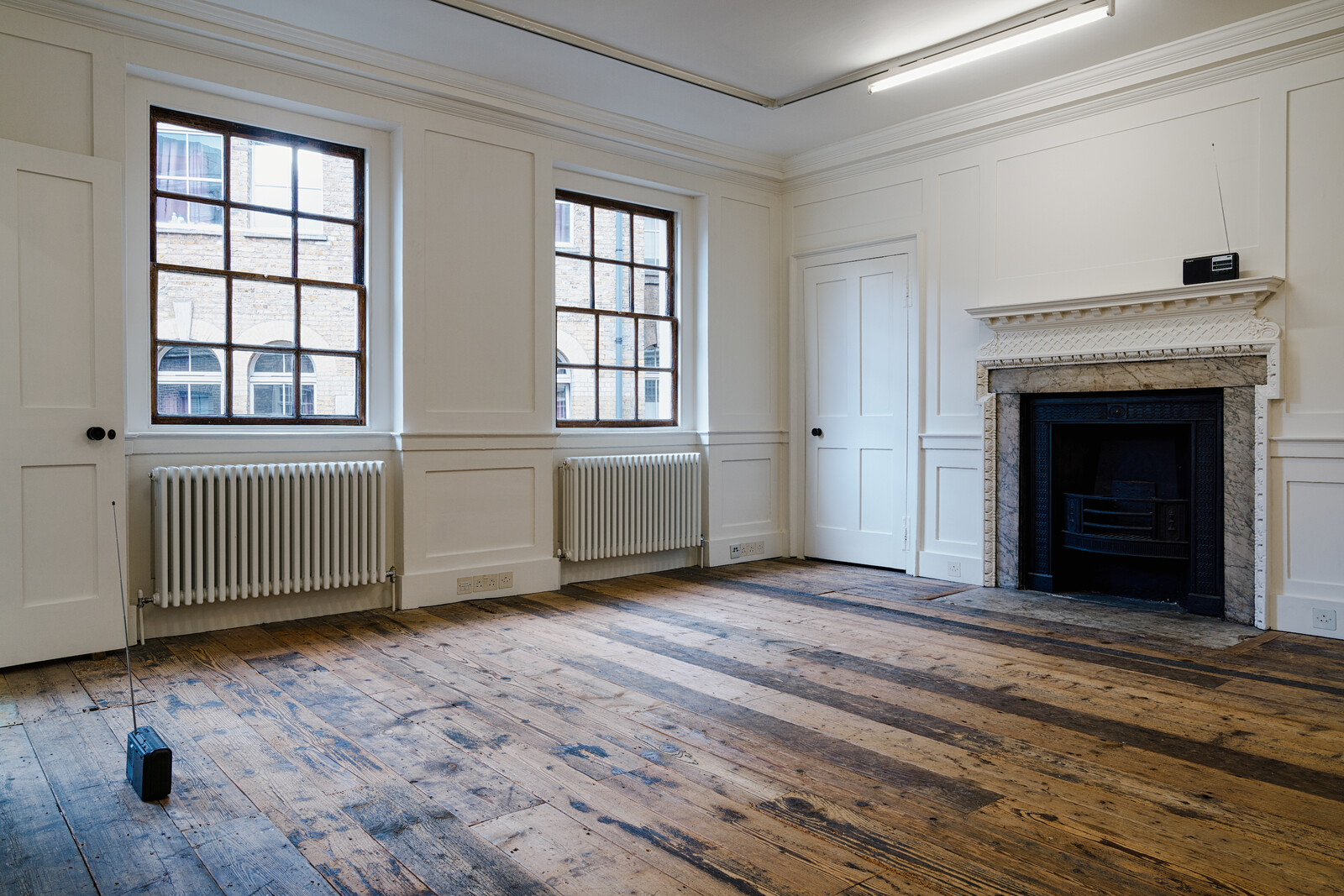
“Celebrating 20 years,” ran the bus and magazine ads for Frieze London, keen to capitalize on having reached a milestone. In 2003, the first fair was welcomed as a galvanizing and creative force—a Studio International review from the time breathlessly described it as the “the real thing […] the apotheosis of swing […] the Stargate.” Such enthusiasm seems cute now, after the artist projects that supposedly set the fair apart from other trade events (Mike Nelson earning a Turner Prize nomination in part for his 2006 installation at the fair) have been scaled back almost to invisibility, and the “Focus” section for younger galleries, introduced in 2013, effectively assimilated parallel smaller fairs such as Zoo and Sunday. Of the 164 stand-holders at this year’s Frieze London, only 30 of them (predominantly, of course, the larger multi-venue galleries) were at the first 2003 fair. Through all this, the fair has long presented itself as an annual temporary institution, masquerading as such among the long-term underfunding of the city’s public museums.
This hoarding of resources has a distorting effect on coinciding and parallel events that would otherwise register as an alternative, both to the fair and other art spaces around London. Several …
October 19, 2023 – Feature
Contextures: Art and the Politics of Abstraction, Representation, and Identity (Part Two)
Andrew Stefan Weiner
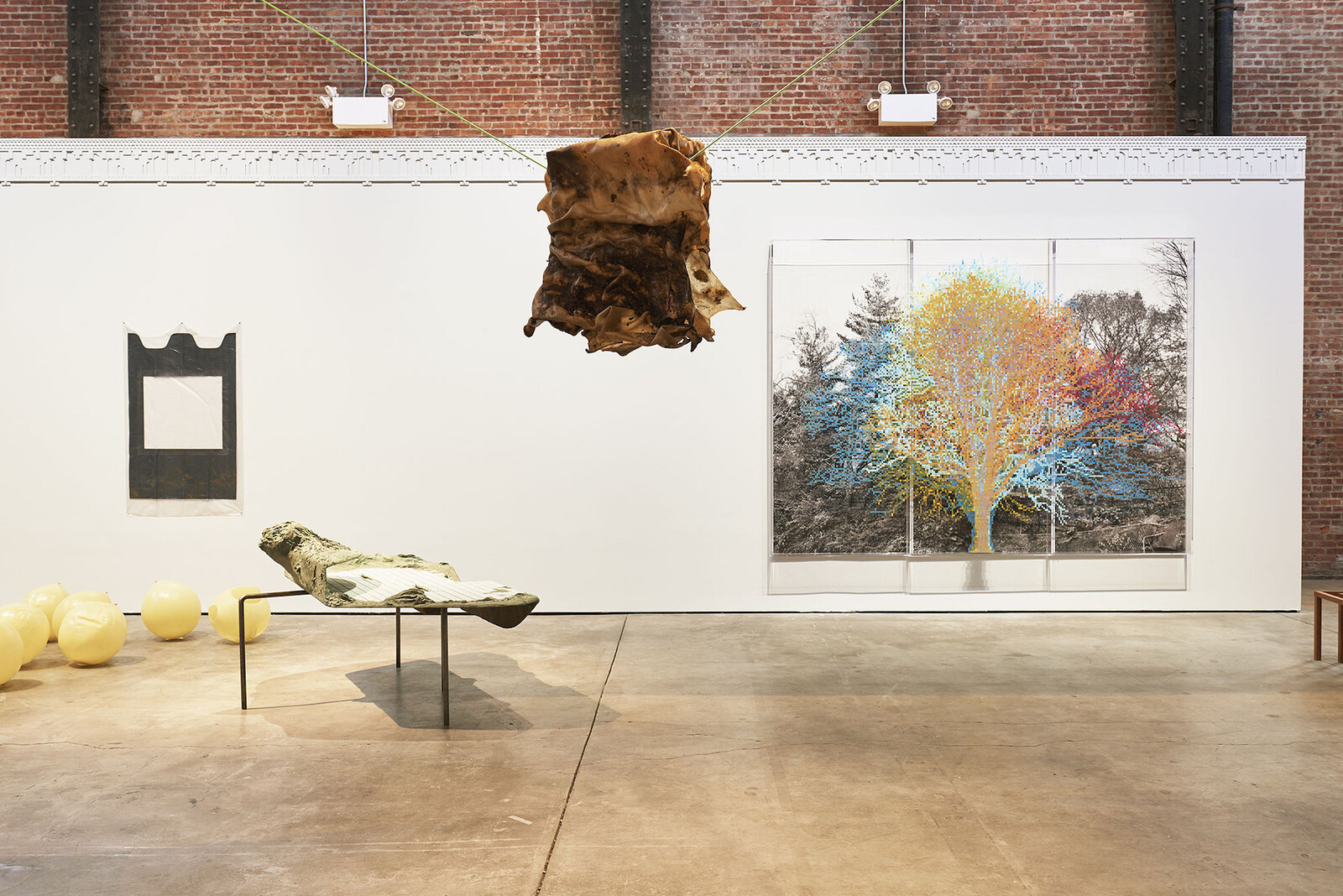
This is the second installment in a two-part essay exploring the aesthetics and politics of the representation/abstraction dyad. For part one, which considered the history of New York’s Just Above Midtown gallery, among other spaces, curators, and artists who rejected received ideas about how abstraction and representation should operate, please click here.
Given the intense pressures facing many artists who identify and/or are marked as being in some sense “Other,” it isn’t hard to understand why the radical aesthetic and political world of spaces like Just Above Midtown might seem so compelling and so contemporary, despite nearly fifty years of historical distance. Figures like Linda Goode Bryant, Senga Nengudi, David Hammons, Howardena Pindell, and Randy Williams confronted something approaching a double bind, in which loyalty to an emergent Black nation seemingly meant sacrificing artistic complexity, and yet managed to repurpose this contradiction as a source of creative, critical dynamism. Over and against the long-facile valorization of abstraction or more recent dogmas surrounding representation, such artists instead grounded their practices in the rejection of false oppositions and in attempts to trace the imbrication of aesthetics and politics in the hybrid, conceptual-material forms that Bryant memorably framed as contextures.
That said, …
October 18, 2023 – Feature
Contextures: Art and the Politics of Abstraction, Representation, and Identity (Part One)
Andrew Stefan Weiner

This is the first installment in a two-part essay exploring the aesthetics and politics of the representation/abstraction dyad, with the second half to appear later this week.
In late 2022, The New York Review of Books published an essay entitled “Between Abstraction and Representation,” by the veteran art critic Jed Perl. Framed as a strangely nostalgic jeremiad, Perl’s text laments the decay of a once-robust opposition between abstraction and representation in visual art. Once, it claims, in the heyday of mid-century Manhattan, a tight-knit cadre of artists and critics agreed to fiercely disagree in a “war of ideas,” where artistic positions amounted to all-in personal, aesthetic, and political commitments; from this battle royale the strongest emerged victorious, thereby enabling a collective evolution of artistic forms. However, Perl argues, in subsequent decades the advent of new hybrid strategies and modes––a grouping loosely termed “postmodernism”––led art to become dangerously complacent and vacuous.
Citing a heterogeneous group of artists including Julie Mehretu, Gerhard Richter, and Simone Leigh, Perl claims that more recent efforts to recombine abstraction and representation have robbed these forms of their autonomy and authority, producing a “muddleheaded eclecticism.” Opposing this process of decline, Perl calls for a return to the …
September 29, 2023 – Feature
Valerie Werder’s Thieves
Wendy Vogel

In Valerie Werder’s debut novel Thieves, Valerie—an autofictional alter ego—chronicles her slide from disgruntled gallery copywriter to brazen shoplifter. At first she steals for the rebellious thrill of inhabiting other identities; eventually, and more abstractly, she steals to reclaim her time, words, and sense of self. Thieves centers on the New York blue-chip commercial art world, with its fussy idiosyncrasies and particular flavor of exploitation. But it is equally a novel about the fungibility of female identity—and a shrewd indictment of how language operates under capitalism.
Werder’s decision to write in a self-reflexive mode—a contemporary novel in the lineage of Semiotext(e)’s influential “Native Agents” series, edited by Chris Kraus and featuring authors such as Kathy Acker, Lynne Tillman, and Kraus herself—speaks to a desire to expose and explore the conditions under which Thieves was produced. Yet Werder is critical of how language is strategically deployed in the name of “authenticity,” both within the art world and literature. In Thieves, words bolster value, then drain themselves of meaning. People become expendable, while material things reinforce their self-worth. Over the course of the novel, Valerie becomes both a precious object and a voracious acquisitor. She enables, and is enabled by, a mysterious …
September 20, 2023 – Feature
Barcelona Gallery Weekend
Patrick Langley
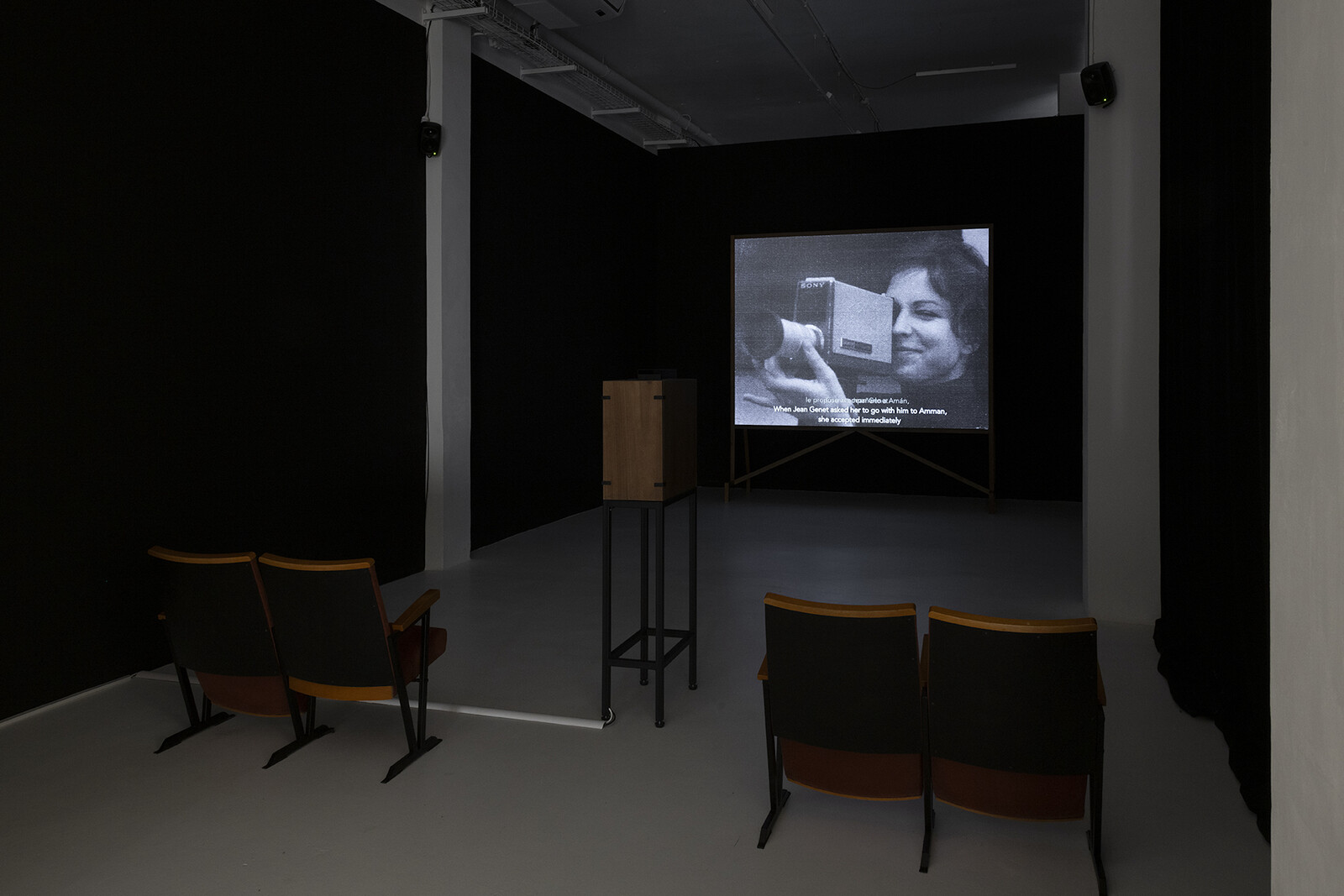
Enric Farrés Duran’s show at Bombon Projects was among the most on-the-nose exhibitions at this year’s Barcelona Gallery Weekend (BGW)—and not just because of the glasses. That technologies that purport to measure the world are not reliably accurate is less troubling, his work proposes, than the tendency to act as if they are. These stark and satirical pieces reference optometry (pairs of dysfunctional glasses, such as one with two holes in its lenses, on freestanding plinths), museum display practices (a canvas turned to face the wall, another with nothing on it but a few tips for cleaning glass), and shooting (a wall papered with rifle targets). One work—a glass-fronted frame containing smashed museum glass—reduces the theme to the point of absurdity: not the “cracked looking glass” of Joycean modernism but an art that flaunts its own shattered illusions. The spectacles are broken, but they haven’t yet been replaced.
BGW’s ninth edition, which featured works by more than sixty artists exhibited in twenty-seven galleries across the city, showcased the robustness and vitality of Barcelona’s gallery scene. As such, it set an ironic context for a shared concern of several exhibitions: fragility. This manifested in the use of delicate materials—glass featured prominently …
July 31, 2023 – Feature
Ethan Philbrick’s Group Works
Laura Nelson
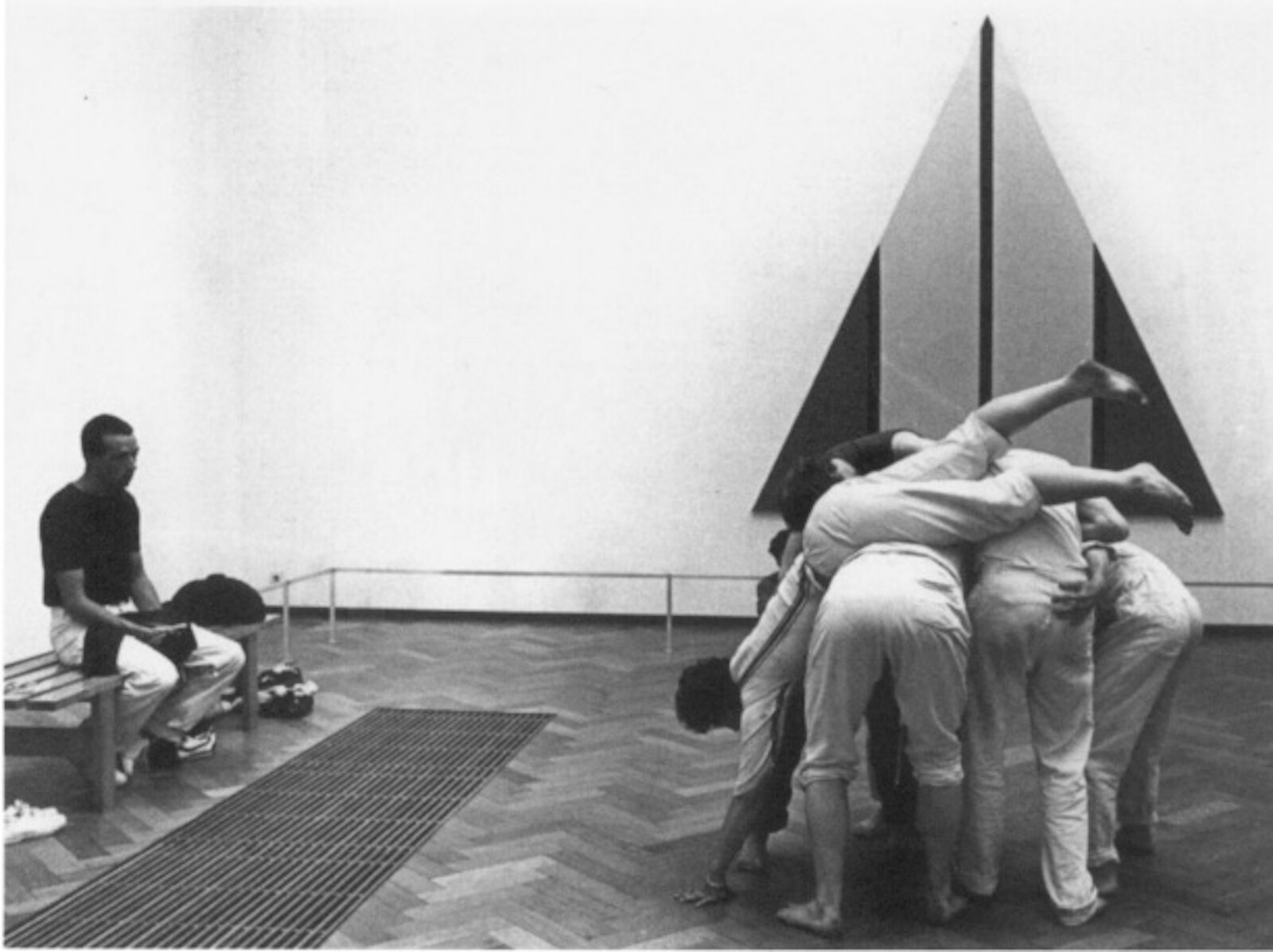
There are many ways to move through and think alongside Ethan Philbrick’s Group Works. At first glance, it’s a book of academic theory coming out of performance studies. Following a “desire for collectivity,” Philbrick takes the small-scale formation of “the group” as the locus of inquiry. He enters the text with a tentativeness toward groups, recognizing the ways that they are frequently viewed with healthy suspicion or uncritical celebration. He asks:
What kind of good-bad thing is a group to do?
When do we do things in groups, and why?
How do we group, and how does that matter?
Moving with these questions, the book turns to artists experimenting with novel group formations in dance, literature, film, and music in the 1960s and ’70s. Each chapter pairs a “group work”—Simone Forti’s 1961 performance Huddle, Samuel Delany’s 1979 memoir Heavenly Breakfast: An Essay on the Winter of Love, Lizzie Borden’s 1976 film Regrouping, and Julius Eastman’s 1979 musical piece Gay Guerrilla—with contemporary works that re-imagine, re-perform, or dialogue with these experiments. Taken together, each pairing amplifies and extends the book’s central impulses to consider how groups assemble and disassemble. Along the way, Philbrick introduces a chorus of thinkers—theorists of community, theorists of in-operative community, theorists …
July 28, 2023 – Feature
Interview with P. Staff
Francis Whorrall-Campbell
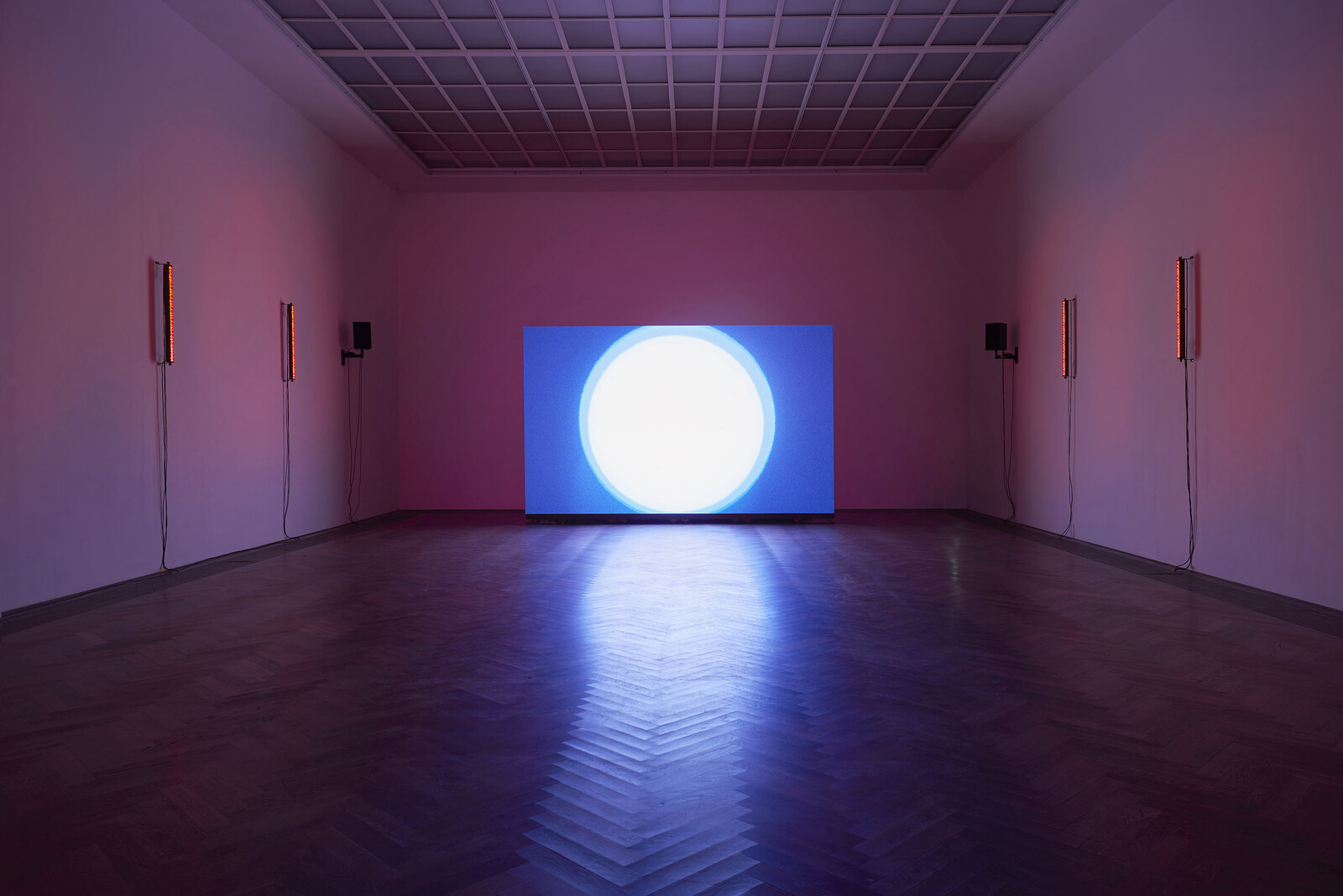
I was first introduced to P. Staff’s work via a pamphlet by Isabel Waidner, produced for their show “The Prince of Homburg” at Dundee Contemporary Arts in 2019. Recently out as trans, and isolated because of the pandemic, I became obsessed with the film at the center of the exhibition—a fraught dream sequence as experienced by the eponymous prince (taken from Heinrich von Kleist’s play) interspersed with interviews with contemporary trans scholars, activists, and artists—and how Staff’s disoriented, exhausted prince, sleepwalking his way to political martyrdom, could make sense of my own fear and exhaustion as reasonable responses to structural oppression. Having missed the show, I pieced it together from the commissioned texts and a few small images, and only later watched the film, when a friend gave me a bootleg copy on a USB alongside two works by Terre Thaemlitz. I remembered how I’d felt when I first encountered the work’s archive, but now I could also see its more hopeful proposition of dreaming as resistance.
Born in 1987, Staff’s work spans sculpture, performance, installation, and film: On Venus, shown at their 2019 show at the Serpentine, juxtaposed archival footage of industrial animal farming with a poem imagining …
July 6, 2023 – Feature
Jacqueline Humbert and David Rosenboom’s Daytime Viewing
Thea Ballard
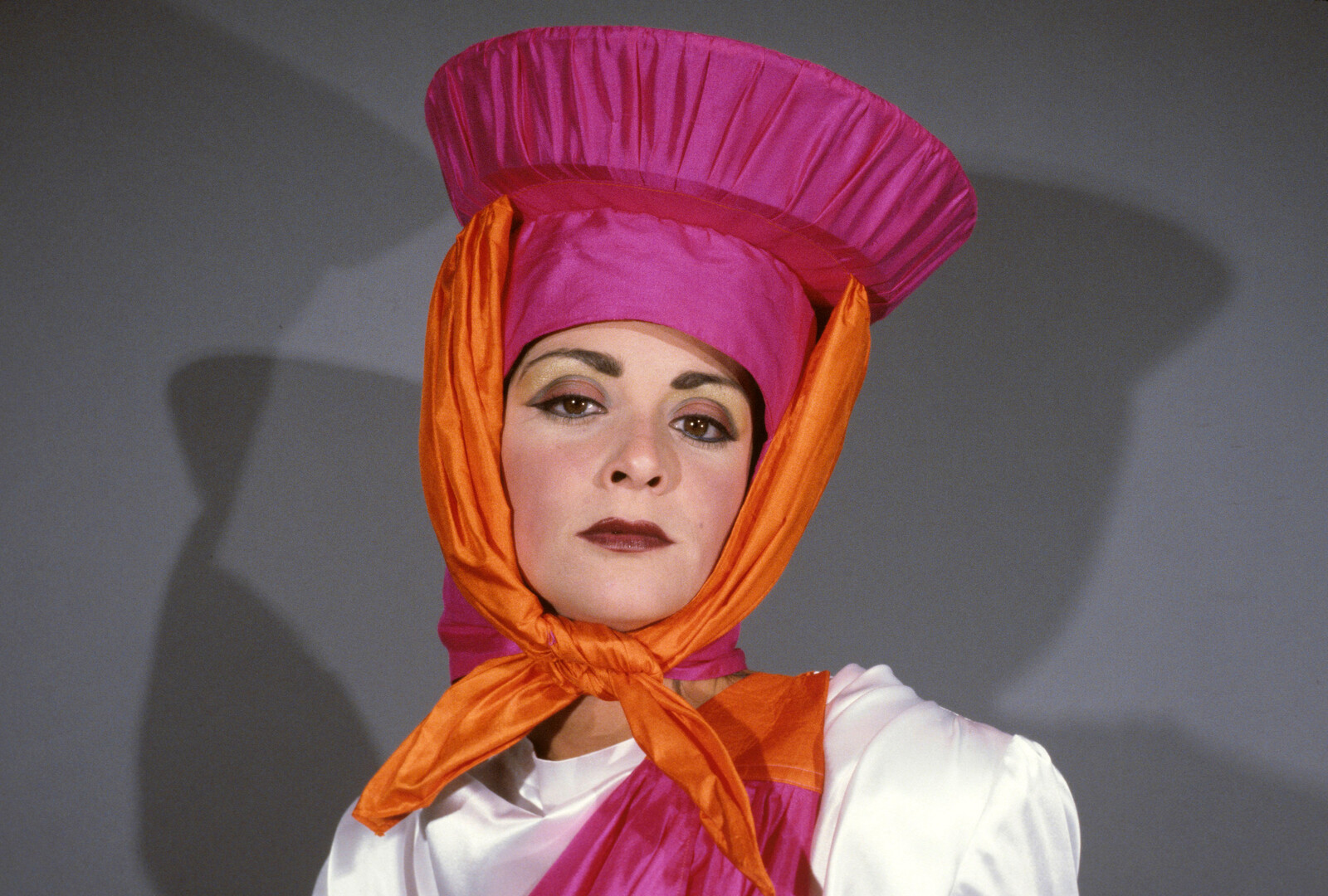
In a videotaped recording of a 1980 performance of Jacqueline Humbert and David Rosenboom’s song cycle Daytime Viewing, a woman wanders across a dim stage. She wears a bright green printed housedress—the shapeless body-concealing kind—and large fluffy slippers; she nervously settles into her spotlit destination, a chair set in profile close to a TV set. Her reflection is briefly visible on the blank screen as she fiddles with a knob to turn the set on, then, screen illuminated, she pulls up a channel displaying a nested image of another woman in profile watching TV. The tableau is soundtracked by uneasy synthesizer melody, and a voice narrating: “She was all she had, and it was more than enough for now. She was a survivor, addressing the struggle without by living within. She gathered momentum by living within, contained by a fascination with the view: this trance, this private daytime viewing where any world awaited her arrival.”
Both Humbert and Rosenboom are part of a cohort of musical avant-gardists who play with song as a form that can, often in just a few short minutes, bridge the popular inner core and absolute outer limits of American aesthetics and consciousness. Humbert designed costumes …
June 30, 2023 – Feature
The Letters of Rosemary and Bernadette Mayer, 1976-1980
Daniel Muzyczuk
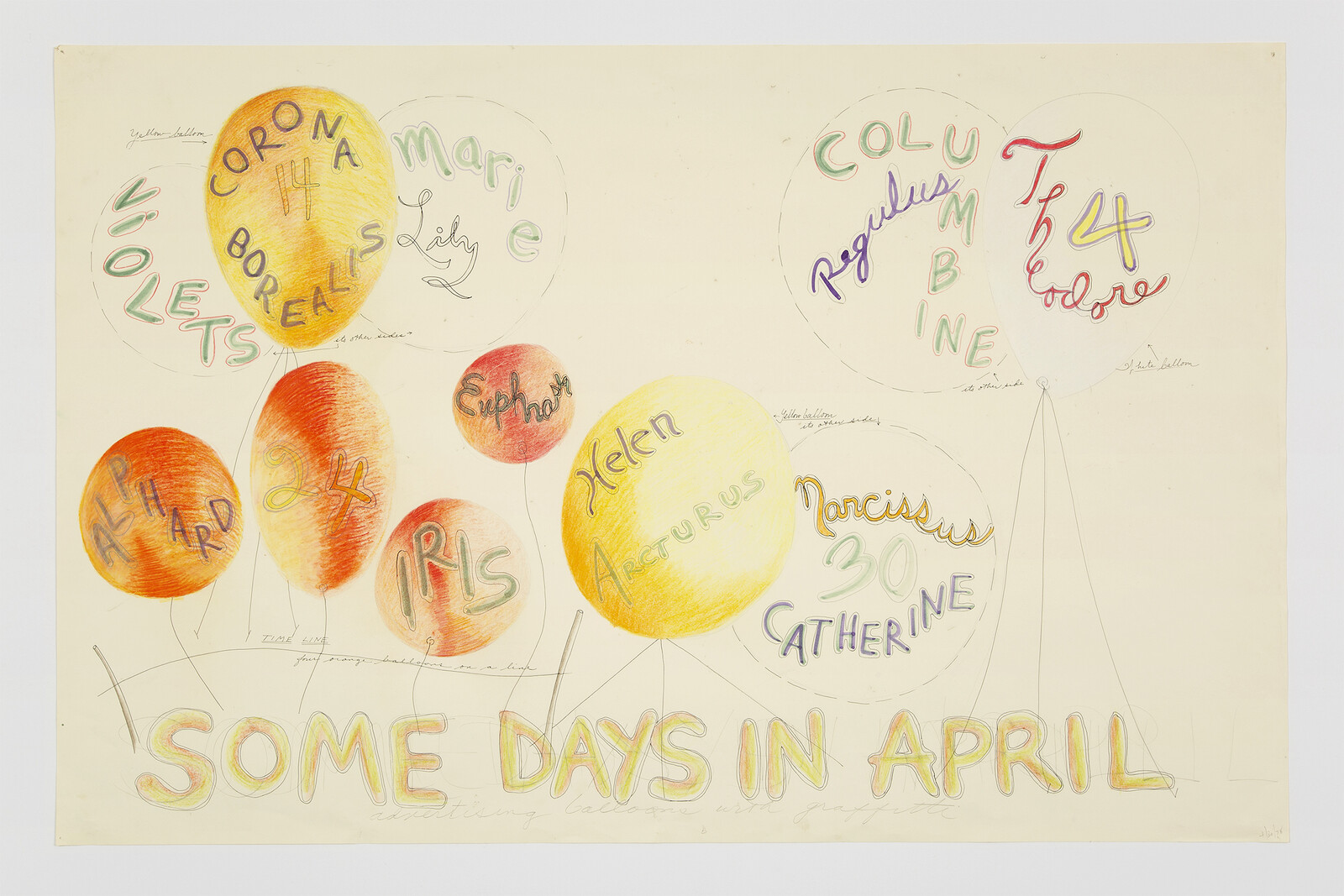
The poet Bernadette Mayer and her artist sister Rosemary began to write to each other when the former moved with her family from New York to Lenox, being deterred from phone calls by the expense. Over the four years covered by this anthology of their letters, Bernadette gave birth to two children, collaborated with her husband Lewis Walsh on the 1976 collection Piece of Cake, and worked towards her book-length poem Midwinter Day; Rosemary introduced the ephemeral installations involving snow or balloons that she called “Temporary Monuments.” Their correspondence—which complements Rosemary’s recent touring exhibition “Ways of Attaching”—both illuminates and substantiates the recent growth of interest in the sisters’ work: anecdotes of daily life mix with candid confessions of loneliness, worries about money, and, above all, attentive criticism of each other’s work and methods during these formative years in their practices.
A large number of these letters end with reading (and watching) lists: Braudel, Fassbinder, Genet, Stein… Rosemary visits the cinema in New York and recommends new movies to her sister (notwithstanding the fact that these were probably hard to find in rural Massachusetts). But when she begins to examine new trends in psychoanalysis, it’s Bernadette who offers advice on where …
June 29, 2023 – Feature
London Gallery Weekend
Orit Gat
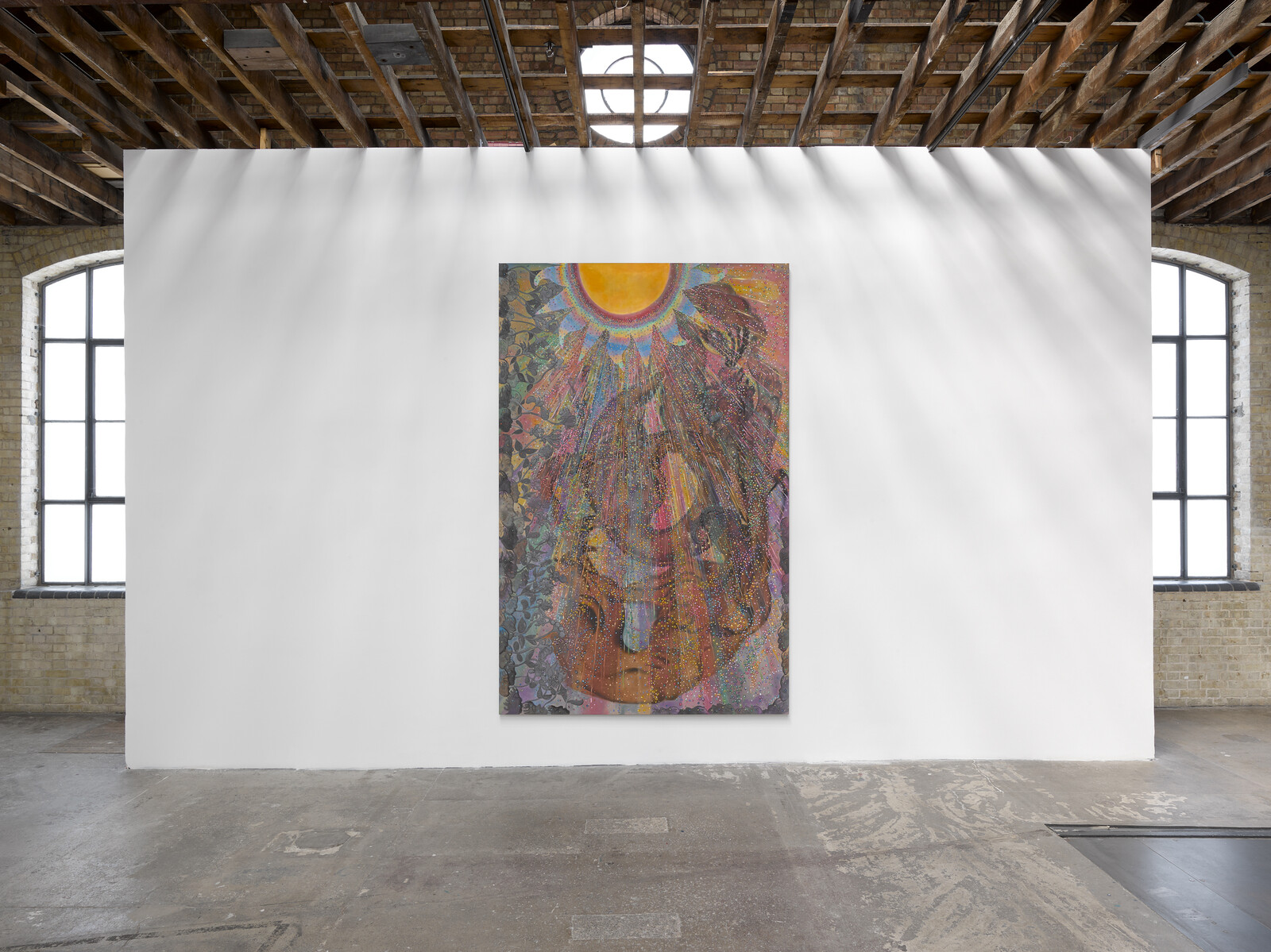
This year’s edition of London Gallery Weekend suggested something that initially surprised me: that the joy of seeing multiple shows in one weekend can be less in new discoveries than in meaningful re-encounters. Looking at Jadé Fadojutimi’s three-by-five-meter painting And willingly imprinting the memory of my mistakes (2023)—included in “To Bend the Ear of the Outer World,” an exhibition of contemporary abstraction curated by Gary Garrels at Gagosian—I thought, I still love this. I first encountered Fadojutimi’s work as part of the 2021 Liverpool Biennial; in this more formalist context I can see how the things I loved then—its blending of oil, pastel, and acrylic in one canvas, its massive presence—are in dialogue with painters I’ve been following for years. The invention and freshness of Laura Owens’s approach to painting is confirmed by every re-encounter; I continue to be amazed by how Charline von Heyl’s Circus (2022) evokes its colorful subject through abstract patterns of gray, black, and white.
Many galleries chose to dedicate their London Gallery Weekend shows to painting, and I loved many of the paintings on view. I was impressed with Shaan Syed’s four works at Sundy, which depict forms from the natural world—like the rubber plant—as …
June 16, 2023 – Feature
The World(end) of Yesterday
Xin Wang
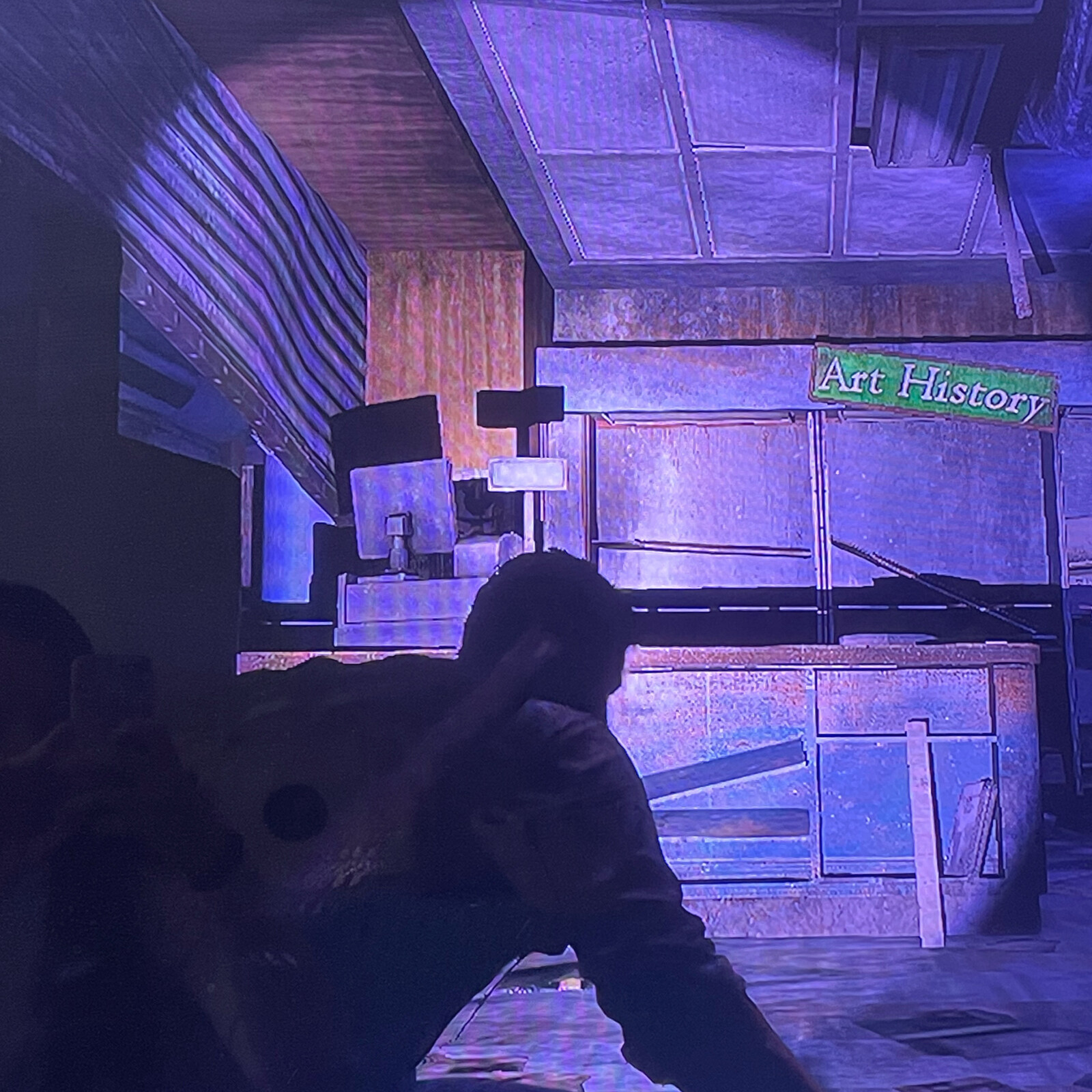
When the HBO adaptation of the video game The Last of Us came out at the start of 2023, it already felt nostalgic for an earlier cultural moment of imagined future apocalypses. The game premiered a decade earlier among a “cohort” that included the TV series The Walking Dead (in its third season), the game Resident Evil (in its sixth), the Hollywood blockbuster World War Z, and Cao Fei’s morbidly humorous Haze and Fog, a zombie film that offered incisive observations of middle-class ennui and environmental ruin, inspired by Cao’s own fascination with eschatological imaginations in the broader culture. I remember being captivated by the zealousness of “world-building” efforts dedicated to sensationalizing its end.
In The Last of Us we follow the journey of Joel, a middle-aged smuggler who lost his daughter at the start of a global fungal pandemic, and Ellie, a ferocious queer teenager who has never experienced the world before its collapse, across America on a mission to facilitate the creation of a cure/vaccine. Many beloved zombie games at the time featured stereotypical characters or cliched trash-talk (which can become its own campy genre), but The Last of Us built indelible characters enlivened by high-quality acting. Joel’s …
June 8, 2023 – Feature
Trinh T. Minh-ha’s The Twofold Commitment
Patrick J. Reed

The Twofold Commitment revisits Trinh T. Minh-ha’s time-dipping Forgetting Vietnam (2015), a documentary feature about the mythical origins of Vietnam. Which is to say, it’s a book about a film which reflects on what the name of a country evokes of the history, people, and cultures associated with it. Seven interviews conducted between Trinh and eight media scholars and critics compose half of the book. Each approaches the filmmaker and writer’s work from a different tack, focusing on aspects of Forgetting Vietnam that are representative of her multi-hyphenate career. Irit Rogoff, for example, homes in on what it means to make a film for the feminist viewer, while Stefan Östersjö concentrates on the multi-sonic soundscapes within it. And Lucie Kim-Chi Mercier’s discussion, “Wartime: The Forces of Remembering in Forgetting,” provides important historical background about the country in question.
As a filmmaker and theorist, Trinh strives to disavow classification and impress upon her audience the necessity of the extra- and non-categorical. Thus certain terminology, like some already employed in this review, requires inverted commas more often than not. “Documentary” refers to a moving-image essay composed of Hi8 footage from 1995 and HD footage from 2012, which Trinh gathered on separate visits …
June 6, 2023 – Feature
Trevor Paglen’s unstable truths
R.H. Lossin
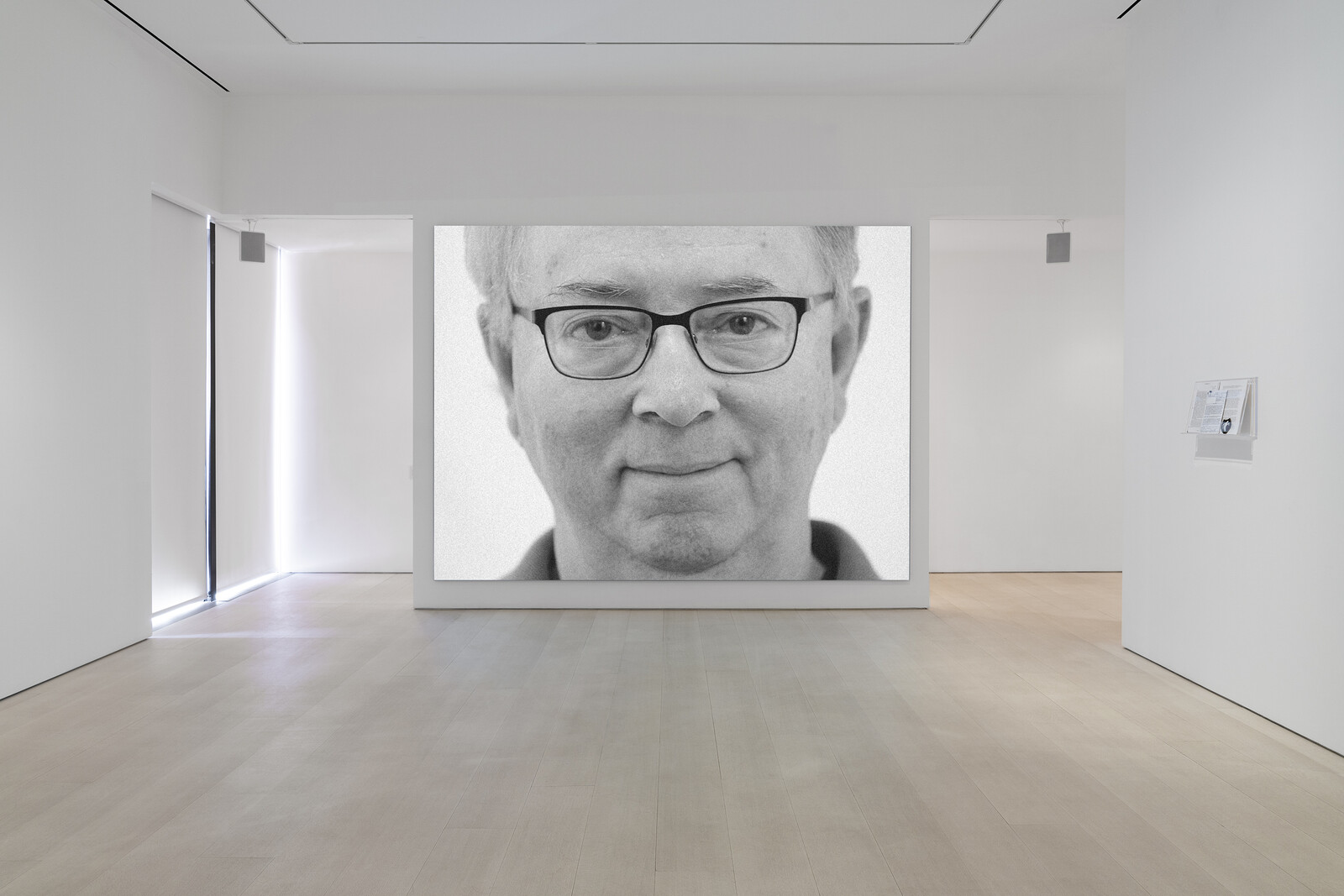
Trevor Paglen’s early work was made while George W. Bush was marching the United States and its allies into a war justified by an image that was neither real nor fake. Despite the convenient, racist confusion of Middle Eastern countries in the minds of many Americans, it was widely known that Iraq had no relationship to the attack on Wall Street in 2001. And so the pageantry of legitimate aggression was obliged to produce another justification for Operation Iraqi Freedom: proof that Saddam Hussein was manufacturing weapons of mass destruction. When Secretary of State Colin Powell addressed the UN Security Council in a bid to secure international sanction for the invasion, what he presented was a set of blurry, ambiguous satellite images of what appeared to be buildings. The official reason for invading Iraq was a specific, actively enforced interpretation of some grainy shapes. Before Powell’s UN speech transformed the grainy shapes into sites for nuclear weapons production, the tapestry of Pablo Picasso’s Guernica (1937/55), which depicts civilian death by aerial bombardment and hangs at the entrance to the Security Council chambers, was covered up. Wars are always fought with propaganda, but this one began with an image whose facticity …
May 30, 2023 – Feature
Sophia Giovannitti’s Working Girl: On Selling Art and Selling Sex
Wendy Vogel

In the opening pages of Working Girl, Sophia Giovannitti—artist, writer, sex worker—makes a case for her choice of “pleasure work” over the drudgery of a day job. “When I say make pleasure work, I mean to sell sex and art,” she writes, “not because doing what you love makes work more bearable, but because the particular economic conditions in these industries facilitate maneuvers and scams that allow people to work less and do what you love more.” Given this fiery beginning, I expected a full Marxist takedown of the art market, or perhaps an angry manifesto à la Virginie Despentes’s King Kong Theory (2006). Giovannitti borrows elements from both, at a cooler temperature, as she argues for working the system to one’s advantage. Threading together memoir and criticism, her volume charts a journey through contemporary art addressing prostitution and pornography, the blind spots of movements like MeToo, the politicized actions of sex workers, and finding a way to live beyond labor.
The bulk of Giovannitti’s text toggles between a discussion of erotically charged art and her own experiences navigating sex work. Drawing from scholarship by art historians such as Julia Bryan-Wilson, Giovannitti revisits a handful of now-historical works. She considers …
May 11, 2023 – Feature
New Rules of Immersion
Chris Fite-Wassilak

At the heart of Mike Nelson’s Hayward Gallery retrospective is a wooden workbench. Chained to it is a series of Halloween masks: Frankenstein’s monster, the wolfman, a few scary clowns. The bench is embedded in a dense web of steel mesh that sprawls through the gallery, the haze of mesh dotted at points with concrete heads on hooks that bear bugged-out eyelids and gurning teeth, evidently made using the masks as casts. Studio Apparatus for Kunsthalle Münster (2014) is the high concluding point of this exhibition of Nelson’s detailed and ominous theatrical installations, fully occupying its Brutalist surroundings, as well as providing a concise summation of his work. After wandering through the creepy maze of The Deliverance and The Patience (2001), banging open dozens of doors and dodging other visitors in order to inspect each cramped room lined with cryptic clues—a pantheistic altar in one, a worn-down travel office in another—the sense of being a detective, on the hunt for the whys and whats, is heavy in the dusty air. The masks feel like a tacit acknowledgement of the roles we’re meant to play here: we’re not just any detective, we’re a B-movie detective, pursuing these ready-to-wear cinematic monsters through …
May 5, 2023 – Feature
On Peter Hujar and Newspaper
John Douglas Millar
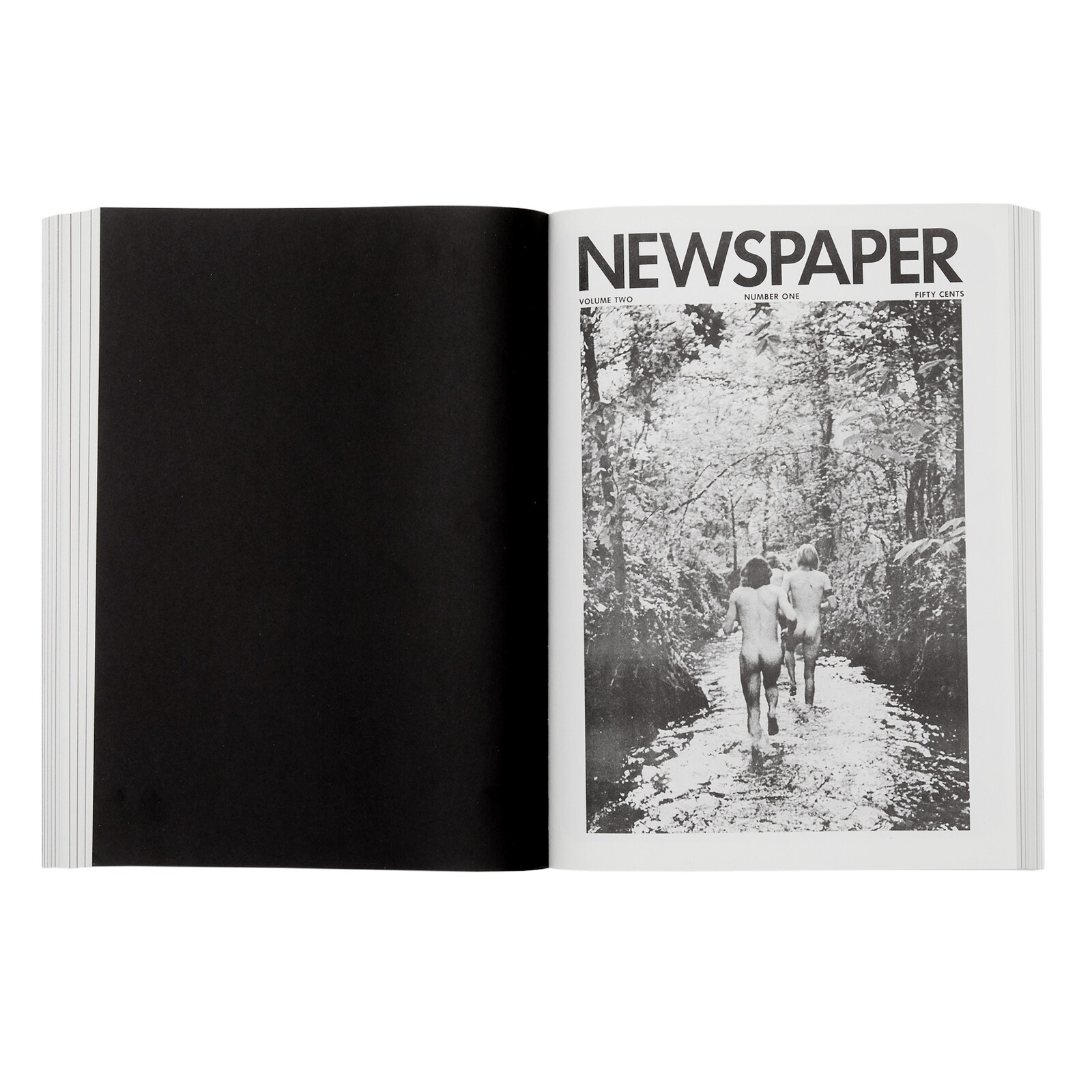
The critical literature on the photographer Peter Hujar’s work remains relatively slight, and that of value slighter still. One explanation for this is the limited primary material available; Hujar was coterie-famous in his lifetime, but never garnered the exposure that would generate a significant body of contemporary criticism. For reasons in part attributable to his difficult childhood—his father left before he was born, his mother was an irascible and sometimes abusive drinker who left him with his Ukrainian immigrant grandparents for the first years of his life—Hujar refused paternalism of any kind, either toward himself or his work, and he maintained an ascetic, almost Beckettian attitude toward speaking on behalf of either. He wrote almost nothing about his photography for publication. Many of his letters are lost. On the single occasion he was invited to speak before an audience he failed to prepare and froze at the lectern. He granted very few interviews, and in those he did allow he is a bristling, sprung, nervous subject, evasive to the point of embarrassment. In the only extensive interview he gave, conducted by his sometime lover and protégé David Wojnarowicz, almost the first thing he says is that he will not discuss …
April 28, 2023 – Feature
Claire Dederer’s Monsters
Orit Gat
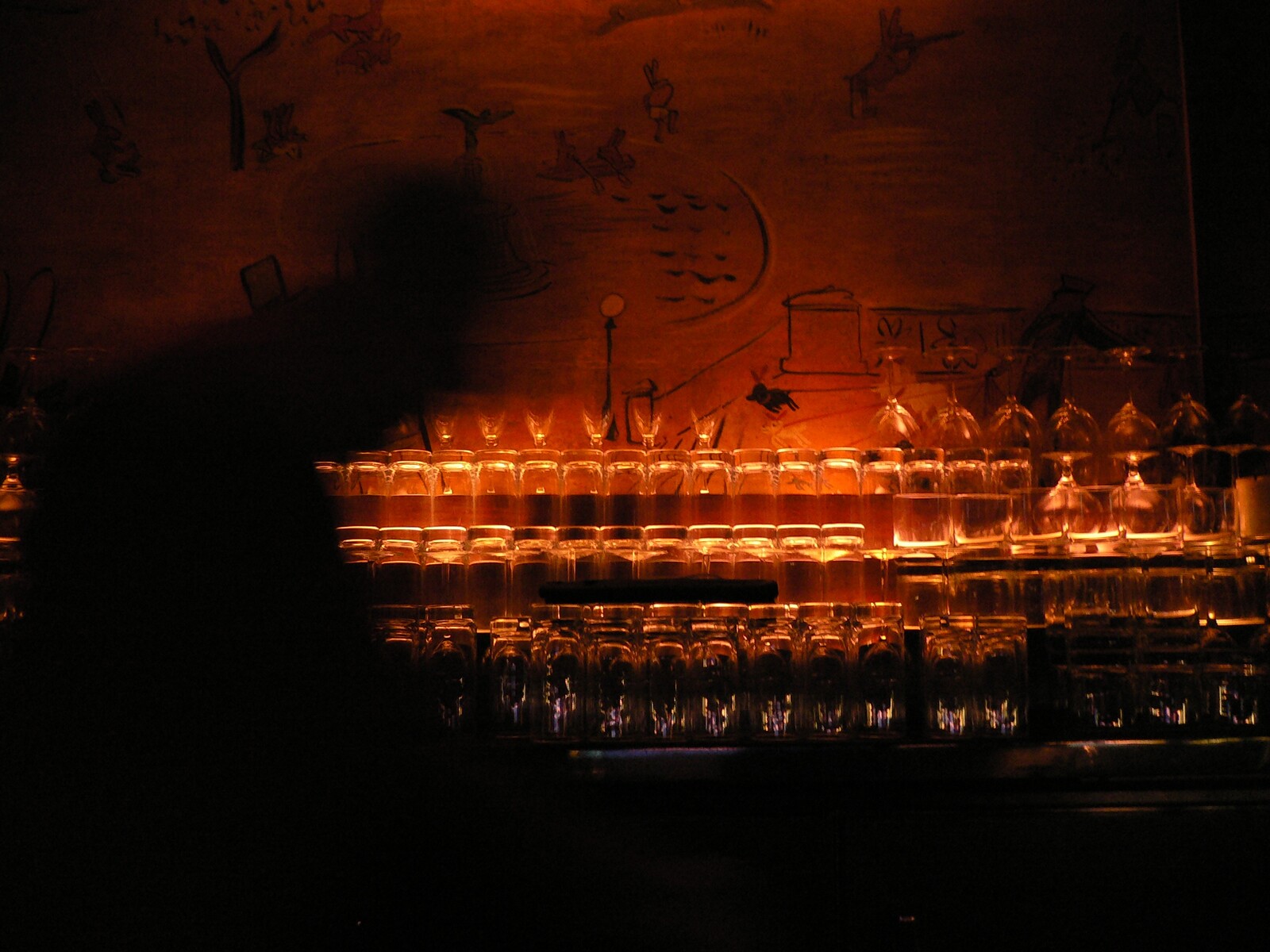
I hate to admit that on my honeymoon in New York I watched Woody Allen play the clarinet at the Carlyle. My ex-husband was a huge Woody Allen fan and at the time (for the record, I was very young) I had a loose sense that Allen was bad but didn’t know the details. And I loved Annie Hall (1977): Diane Keaton, her outfits and personality, the joyfulness of it. I wanted to love it; to love it, I had to avoid difficult questions.
Or just one question. “What do we do with the art of monstrous men?” This is the issue at the heart of Claire Dederer’s book, which tackles the dilemma of whether the artist’s biography can be separated from the work. In his 1967 essay “The Death of the Author,” Roland Barthes argued that to look away from biography enables the “birth of the reader,” indicating that it’s on us—readers—to come to terms with the moral ends of looking at art. But what happens when the artist was also an abuser?
Dederer, a film critic, opens with Roman Polanski, charged with drugging and raping a thirteen-year-old girl. The book goes on to discuss Allen, Michael Jackson, J. …
April 25, 2023 – Feature
Photography Report: Imaging Racial Capital
KJ Abudu
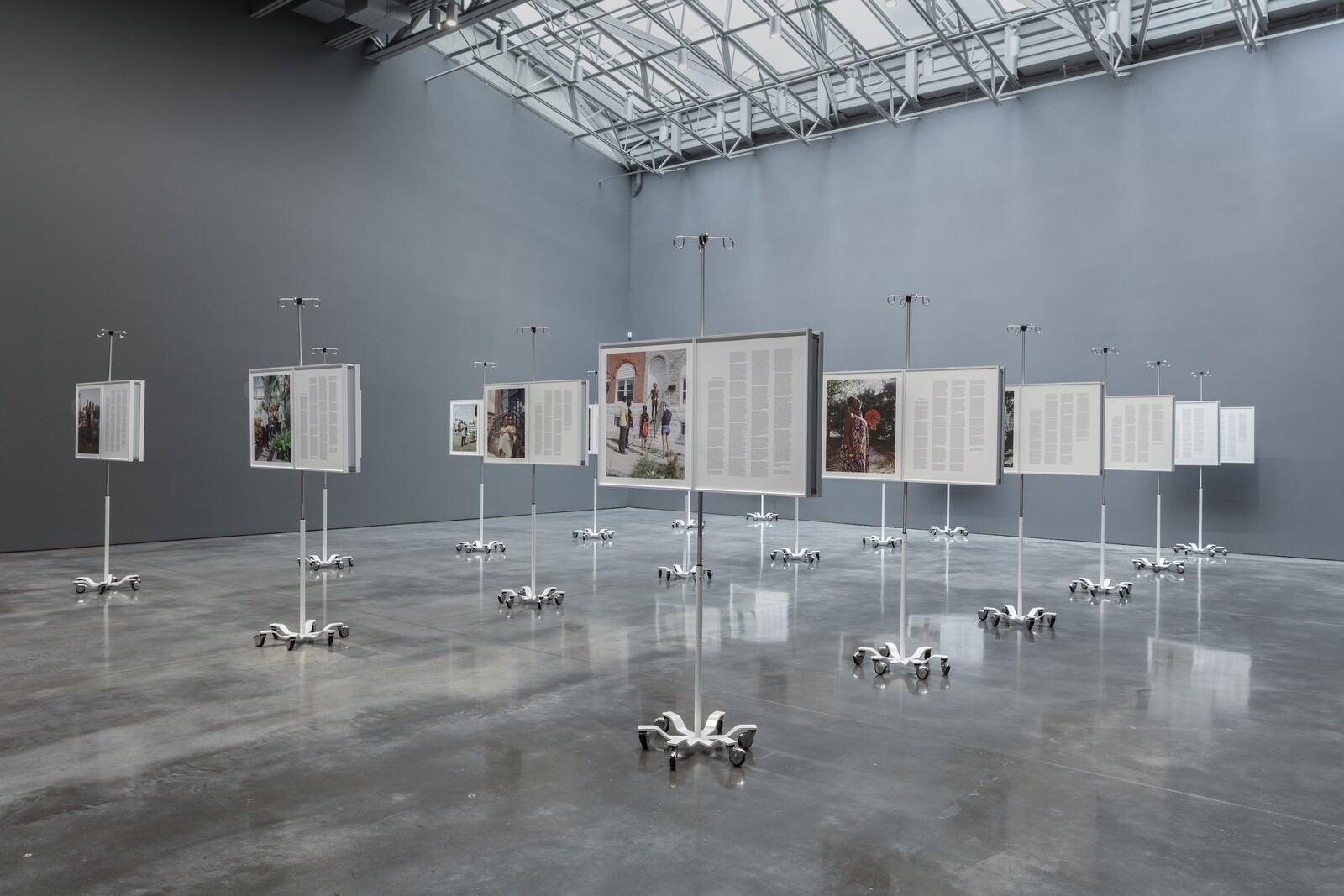
That photography has become one of the most banal visual interfaces in twenty-first-century life is no new observation. Every day, millions of people upload scores of images to privatized servers; encounter even more images on algorithmically governed online platforms; and craft their lives in accordance with the cohesive textures of branded imagery. With this, one might ask whether photography’s critical force and relevance has waned in our image-saturated present or, conversely, if its pertinence has been heightened by the unique burden it bears in reflecting on its ethical, political, and aesthetic relation to the accumulating heap of images. Three recent photography-led exhibitions in New York City forged unexpectedly generative dialogues, laying bare photography’s embodied contradictions. These exhibitions, by LaToya Ruby Frazier, Tina Barney, and Buck Ellison, suggest that the medium’s dissonant valences symptomize the wider social contradictions of racial capital and its attendant global crises.
Installed at Gladstone Gallery is LaToya Ruby Frazier’s More Than Conquerors: A Monument for Community Health Workers of Baltimore, Maryland (2021–22)—after its first showing at the 58th Carnegie International, for which it won the Carnegie Prize. Eighteen metal IV poles are arranged into a minimal grid, their fluid-filled bags notably absent, evoking the spectral gravity …
April 20, 2023 – Feature
Jimmie Durham’s uncompleted project
Elizabeth A. Povinelli

In his 2022 book Il rovescio della nazione [The reverse of the nation], Carmine Conelli tells readers about a group of Jesuits who have just returned to the region around Naples in 1561 after years of evangelizing in the Americas. Having honed the skills of spiritual conversion across the Atlantic, they dedicate themselves to doing the same amongst the wild southern “India italiana.” Naples was not merely one moment in the terrifying spiral of European history, it was arguably ground zero. As Maria Thereza Alves has shown, the Spanish invasion of Aztec and Inca worlds carted shiploads of crated silver into the ports of Naples, kicking off price inflation throughout Europe and initiating an exploratory arms race among the major powers of western Europe to find new worlds to claim and sack. Courts heard testimony about the rights of Europeans to slaughter or enslave others on the basis of their wild nature. Soon the same was said of lands within Europe. Mad contortions of self and other ensued. “Let’s do to us what we did to them,” runs the idea, “because some of us are wild and primitive, and yet none of us will ever be like any of them, …
March 31, 2023 – Feature
A. Laurie Palmer’s The Lichen Museum
Brian Karl

You’ve probably stepped on some quite recently. Or at least walked by, or even sat on a patch, though perhaps without registering what “they” were. Ordinary, near ubiquitous, seemingly static or at least glacially slow-growing, and not particularly cute or charismatic, lichen are seldom observed consciously at all, much less celebrated, related to, or clearly understood. Like a riddle straddling the edges of the living and the physical environment—faint dustings of powder or inert, wispy fronds—lichen occupies a subliminal place in most other creatures’ perceptions and consciousness.
A. Laurie Palmer’s ongoing The Lichen Museum project, on which she has been working for more than a decade, resolves in a new book that endeavors to re-focus human attention as an act of aesthetic intervention—i.e., both conceptually as well as perceptually. A series of thematically oriented chapters (“Lichen Time,” “In Place,” and “More than One” among them) interleave excerpts from ecological texts and interviews with scientists with her own accounts of lichens and lichenology, and range from natural observation to philosophical abstraction. Reading this work thus feels like taking a series of walks with a particularly curious and sensitive companion, consistently attentive to otherwise neglected facets of the actual environment. Yet Palmer’s …
March 30, 2023 – Feature
“Anatomies of Languages Lost and Found”
Mirene Arsanios / Dina Ramadan

In her collection of essays and stories, The Autobiography of a Language (2022), Mirene Arsanios both yearns for the comfort of a mother-tongue and rejects the nationalistic confines of monolingualism. In doing so she develops some of the themes previously explored in Notes on Mother Tongues (Ugly Duckling Presse, 2020) and A City Outside the Sentence (2015), a chapbook produced by Ashkal Alwan. Raised in a number of languages, the New York-based Lebanese writer and founding editor of the Arabic/English literary magazine Makhzin floats through the spaces between them in search of an ever-elusive narrative. Spanning significant personal and political changes for Arsanios, The Autobiography of a Language is an exploration of the possibilities and limitations of the narrative form, the frailty of the human body, the pain of dislocation and the trauma of lost inheritance. Through experimentation with style and form, language is dissected, its innards turned inside out, its distortions and contradictions laid bare, messy, and tangled.
Dina Ramadan: Perhaps we can begin by talking about the time frame of this book. These essays and stories come from very different moments, personally and politically, locally and globally.
Mirene Arsanios: Yes, thanks for noticing the temporal arc of the …
March 15, 2023 – Feature
Heman Chong and Renée Staal’s Library of Unread Books
Dan Visel
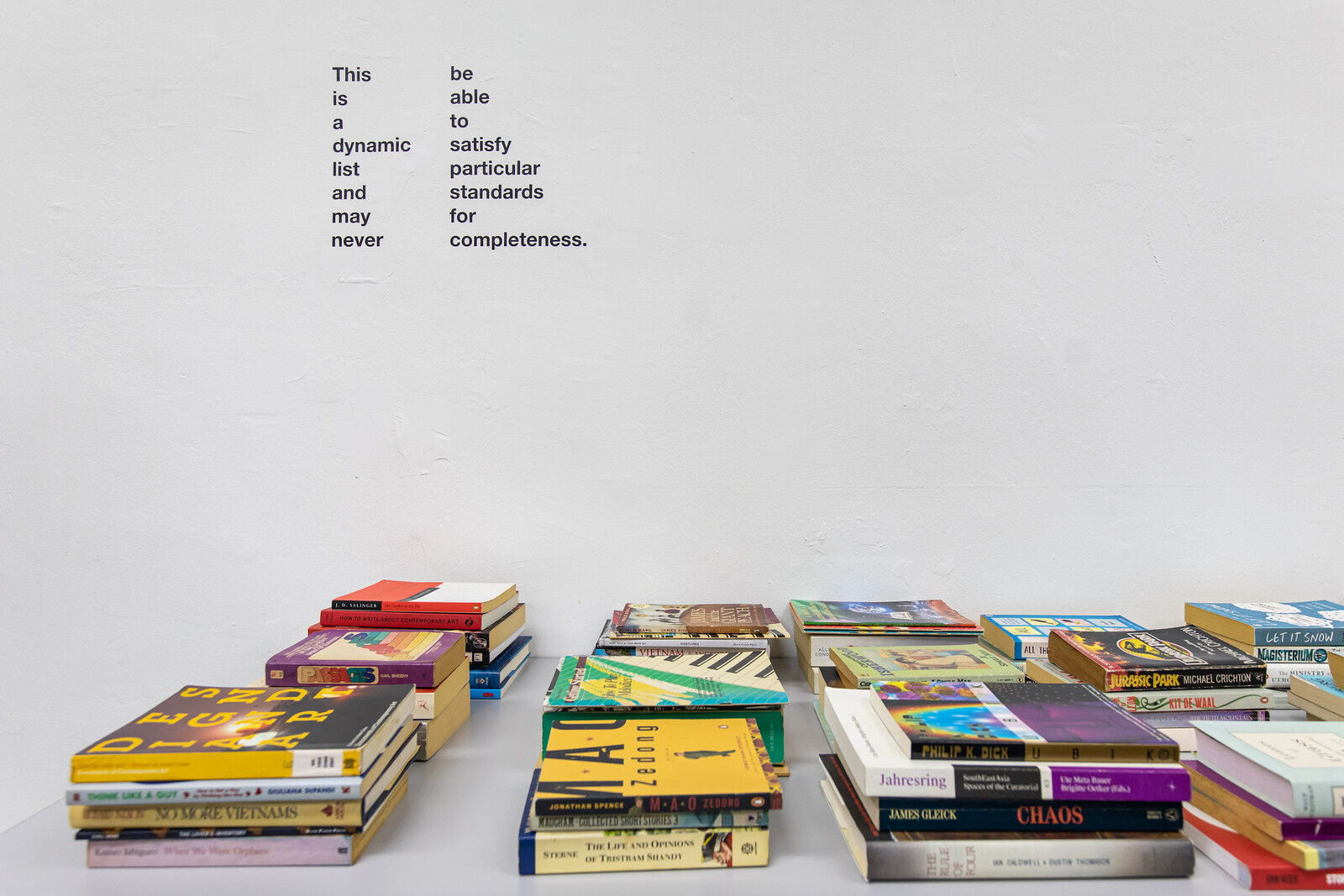
Marcel Duchamp almost had a career as a librarian. In November 1912, having given up on painting for the first time, Duchamp enrolled in library school. Soon, he started work as an intern at the Bibliothèque Sainte-Geneviève, where he read about perspective and made notes for what would become The Bride Stripped Bare by Her Bachelors, Even (1915–23, often referred to as The Large Glass). His period as a librarian was a crucial moment of transition: just as he abandoned art for books, he would end up dematerializing the art object, realizing that the notes he was taking might be more interesting than the work they putatively described. The Large Glass, ostensibly the end-stage of this part of his career, is ultimately less generative than The Bride Stripped Bare by Her Bachelors, Even (The Green Box) (1934), the suspiciously library-like set of notes that might combine, if assembled the right way, to make The Large Glass—or something else entirely.
A book can be seen as a node in a web of potential relationships—between author and reader, books past and future, even seller and consumer—modulated by the ecosystems around them which make such connections happen. The library is tailor-made for relational …
March 9, 2023 – Feature
Where is the Queer Rave?
Francis Whorrall-Campbell
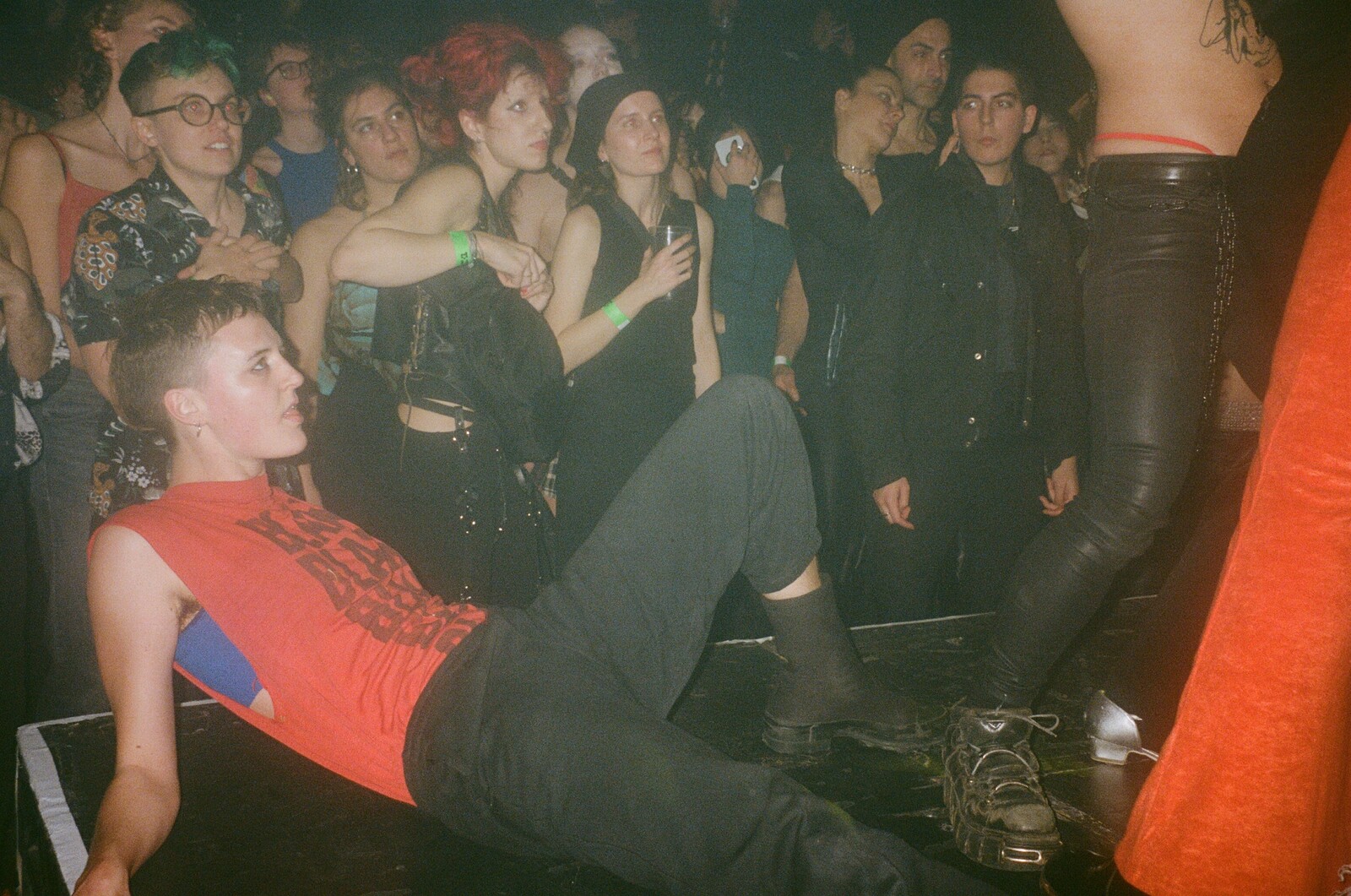
At the end of last year, the performance work Dyke, Just Do It (Excerpt) premiered as part of the roving queer rave INFERNO, hosted for the second time at London’s Institute of Contemporary Arts. An ensemble of self-identified dykes writhed, kissed, and ripped a button-down shirt, while glitching monitors and a towering projection flickered between footage of the virile bodies, commanding slogans, and images produced through designer and director Sweatmother’s “triple-baked method,” which uses a synthesiser to warp and interact with live audio and visuals of the performers in real time. Dyke stages a version of queer sex inside the rave; a performance of sexuality which blurs the lines between diegetic and “real” desire, as the non-professional dancers turn back into ravers and even the screens could be mistaken for high-concept club design. Dyke references LGBT kiss-ins, where gay desire becomes a public theater of protest, spectacularized but not faked. Placing these gestures alongside the visual language of advertising, Dyke speculates on the possibility of seeing the media’s voyeuristic commercialization of lesbianism through the same lens, reimagining these representations of queer desire as part of a sincere, underground economy of identification.
The commercialization of queerness is not only present in …
February 28, 2023 – Feature
Dare to Know: Prints and Drawings in the Age of Enlightenment
R.H. Lossin
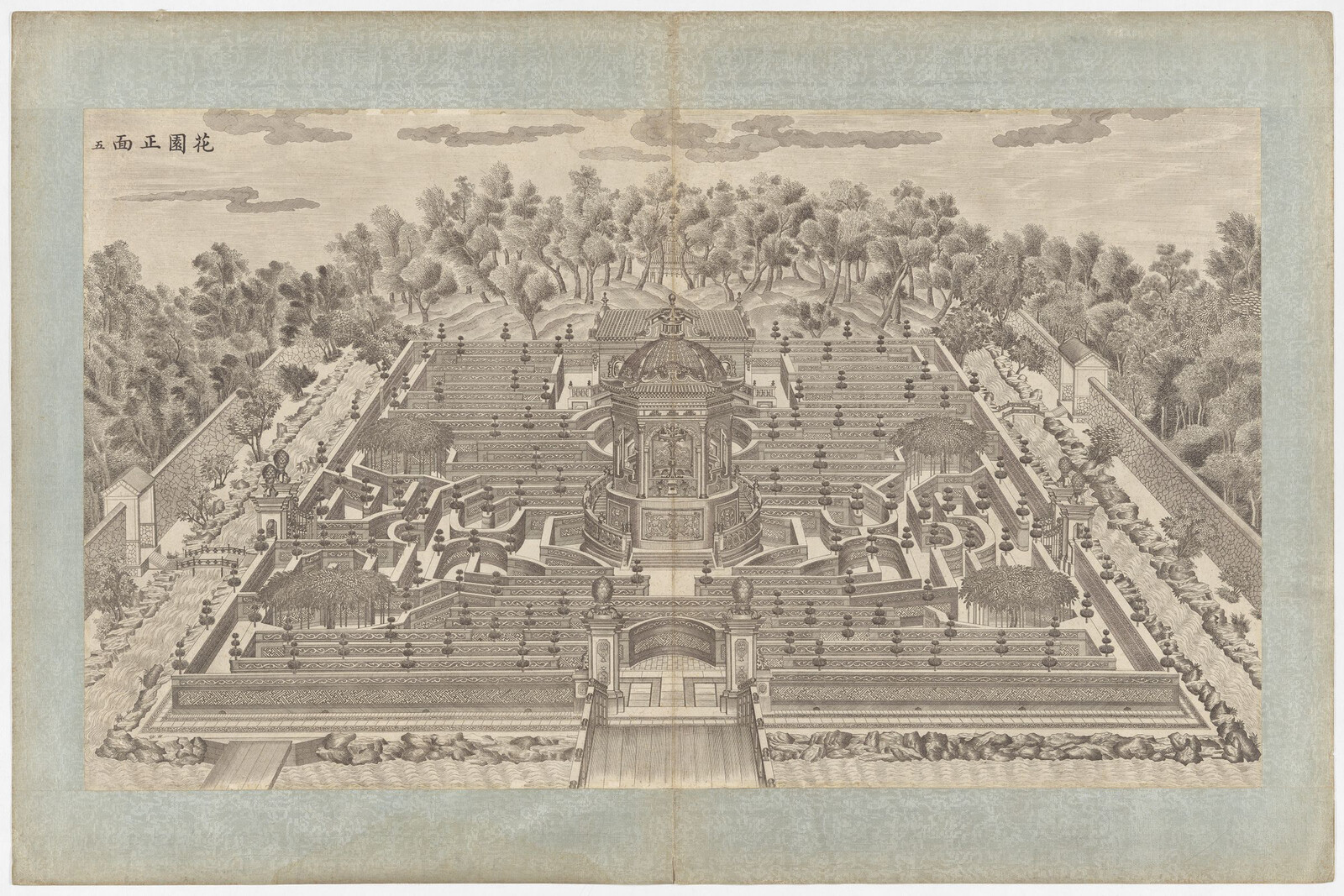
In 1784 a Berlin newspaper invited responses to the now-familiar question “What is Enlightenment?” Immanuel Kant’s reply retained the question as its title: a choice which has contributed to the sense that the question has, always, already been answered. But we keep asking it, and Kant’s “What is Enlightenment?” now ranks high among often cited and rarely read texts of the Western canon. It contains some dependable platitudes concerning free expression, as well as the exhortation “Sapere aude!” (“Dare to know!”), frequently taken as the most succinct version of his answer.
“Dare to Know: Prints and Drawings in the Age of Enlightenment” at the Harvard Art Museums brought together 150 prints, drawings, and books in order to examine how images contributed to the production and dissemination of Enlightenment knowledge between roughly 1720 and 1800. The accompanying catalog is an homage to Diderot and D’Alembert’s Encyclopédie (1751-72), with twenty-six alphabetically arranged articles on topics that shape our own understanding of eighteenth-century thought. According to Elizabeth Rudy and Tamar Mayer’s entry on “Time,” the very act of looking backward as a mode of inquiry is an intellectual operation that would not be possible without the notion of history that emerged in this …
February 22, 2023 – Feature
Hermann Burger’s Tractatus Logico-Suicidalis and Róbert Gál’s Tractatus
Ryan Ruby

“All great works of literature,” wrote Walter Benjamin, “found a genre or dissolve one.” This is no more true of a novel like Proust’s In Search of Lost Time (1913–27), about which the observation was made, than of works not typically recognized as literature. Ludwig Wittgenstein’s Tractatus Logico-Philosophicus (1922) and Philosophical Investigations (1953), for example, attempted and failed to dissolve the genre of writing known as philosophy, only to found a different one, whose audience is mostly to be found in the slice of the literary field adjacent to the art world. Although the series of numbered propositions in the Tractatus owe a great deal to the pseudo-geometrical proofs of seventeenth-century philosophers like Spinoza and Leibniz, and the numbered paragraphs of the Investigations were modeled after an aphoristic tradition that extends from Epictetus to Nietzsche, both books were recognized as significant literary departures from the stylistic norms of the academic paper, and have proven more influential among those working outside philosophy proper than within it.
Putting aside fictionalizations of Wittgenstein’s life such as Bruce Duffy’s The World as I Found It (1987) and Thomas Bernhard’s Correction (1975), this genre would include David Markson’s experimental novel Wittgenstein’s Mistress (1988), Guy Davenport’s …
February 14, 2023 – Feature
Saadia Gacem, Awel Haouati, and Lydia Saidi’s Archives des luttes des femmes en Algérie
Natasha Marie Llorens
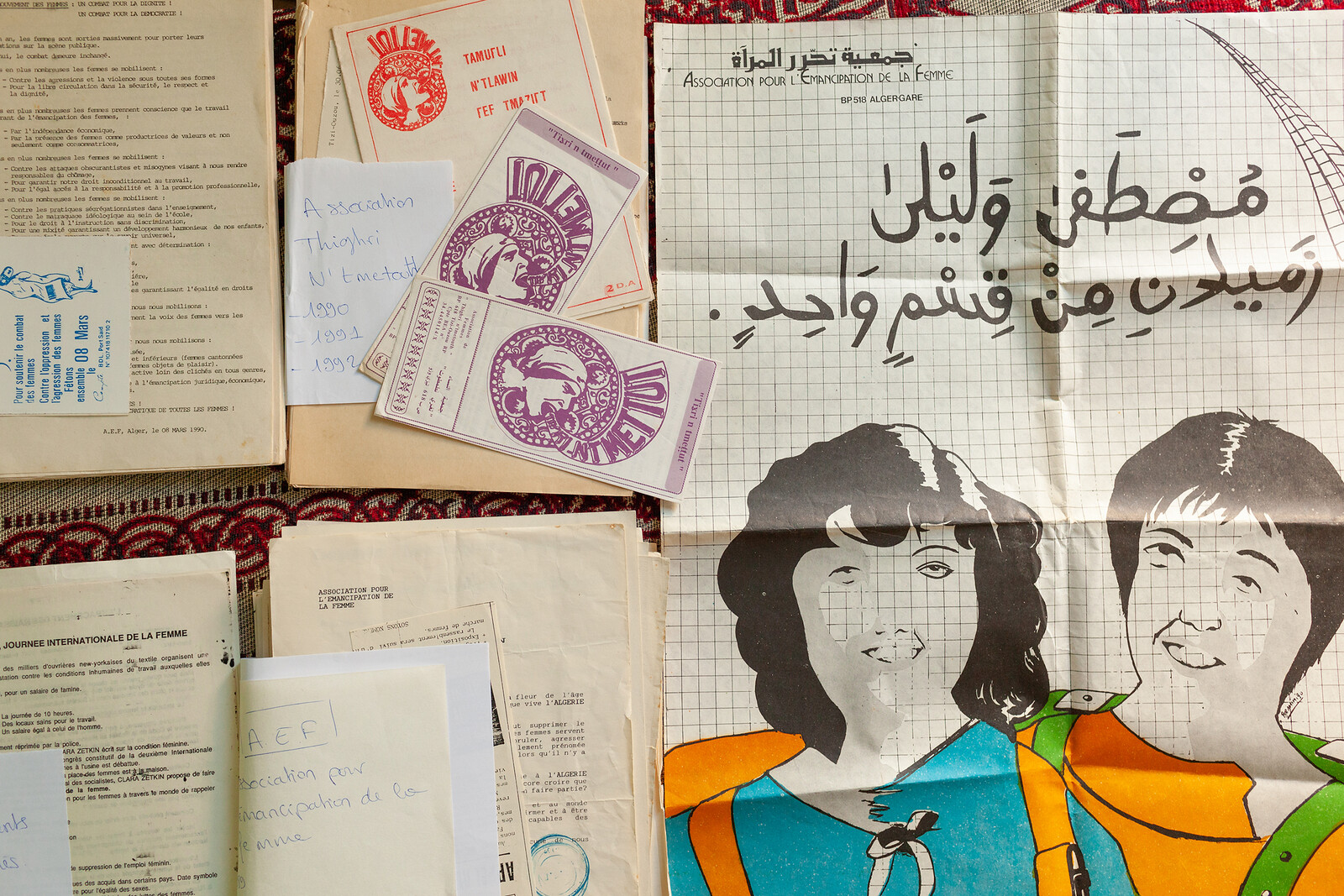
A slim ochre publication by Algerian collective the Archives des luttes des femmes en Algérie, or archive of women’s struggles in Algeria, has the light, open feeling of a notebook. It was produced to accompany their installation at Documenta 15 in 2022. The book was sold out by the time I got to Kassel in early September, and I would have to wait six months to find a copy, finally, in Algiers, one of six remaining from an informal shipment that had arrived the week before.
It is hard to find because the material Archives des luttes des femmes en Algérie reproduces—historical documents pertaining to women’s political organizations active in Algeria between 1988 and 1991—has rarely been seen, either inside or outside Algeria. The trilingual publication (in French, English, and Arabic) presents a selection of documents and photographs; an introduction and contextualizing essay about the International Women’s Day demonstrations on March 8, 1990, by one of the collective’s members, Awel Haouati; and a socio-historical treatment of the period in question by Feriel Lalami, an Algerian sociologist, political scientist, and feminist activist. Political tracts and photographs from what the authors describe as the “democratic breach” in Algerian politics are bracketed by …
January 31, 2023 – Feature
Ričardas Gavelis’s Vilnius Poker
Daniel Muzyczuk
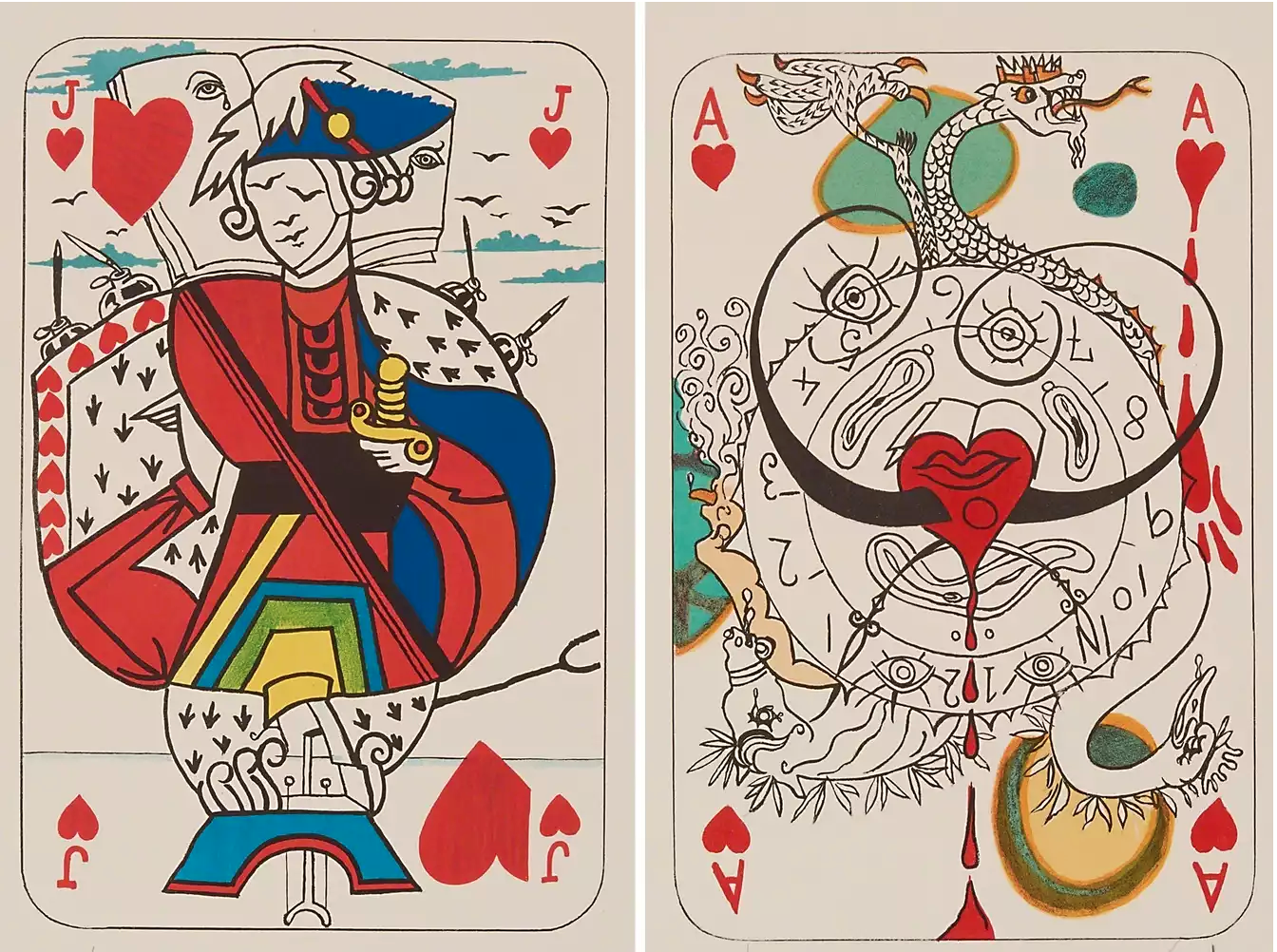
Begun in the late 1970s and only published in 1989, Ričardas Gavelis’s novel Vilnius Poker presents a nightmarish vision of Lithuania under Soviet rule as a rotting corpse, riddled with resentment and shot through with conspiratorial thinking. If the book feels newly relevant today, it is because it grounds a study of the political efficacy of conspiracy theories in close observation of the humiliating effects of colonial violence upon a populace. Gavelis’s novel examines connections between this phenomenon—in which paranoid conspiracies focused on abstract enemies, such as western liberalism, are marshalled in support of authoritarian regimes—and the decline of socialism in Eastern Europe.
Vilnius Poker is divided into four sections, each narrated by a different character. The eponymous city is at the epicenter of a plot orchestrated by a network of forces which, in keeping with their shadowy nature, are referred to as THEM. THEY have agents everywhere. THEY are strong in the Soviet government, but THEY are also working on the other side of the Berlin Wall. Indeed, THEY have infiltrated every global power. In Vilnius, THEY seek to turn all inhabitants into mindless followers. Vytautas Vargalys, who works at a library, believes that the final battle between the …
January 27, 2023 – Feature
An Expanded Cinephilia
Lukas Brasiskis

The Cinema Batalha in Porto was a landmark in the city’s film culture and played an influential role in shaping the cinephilia of generations of residents from its opening in 1947 through to its closure in 2003. The Batalha Film Center, which opened in December, occupies the same modernist building designed by Artur Andrade and responds to the rise of new, expanded approaches to cinema. Its inaugural program consisted of a complete retrospective of films by Claire Denis; “Politics of Sci-Fi,” a screening program curated by artistic director Guilherme Blanc and chief programmer Ana David; Premium Connect (2017), a video installation by French-Guyanese artist Tabita Rezaire that draws on a scene from The Matrix (1999); and a number of special events and discussions.
“Politics of Sci-Fi” explored the interrelation between the genre and politics, presenting a diverse range of international films across seven conceptual chapters. Sci-fi films, as this program makes clear, do not only predict but also shape political futures; in turn, the political contexts in which such films are made can influence their production. Among the works shown was The War Game (1966), Peter Watkins’s anti-war mockumentary originally made for the BBC and suppressed in the UK for …
January 25, 2023 – Feature
Grids and Clouds
Caterina Riva

Meta is a collaboration with TextWork, editorial platform of the Fondation Pernod Ricard, which reflects on the relationship between artists and writers. Following on from her essay on the work of Benoît Maire for Textwork, the curator Caterina Riva considers how the artist’s attitude towards waste and recycling resonates with her own writing process.
Finding the right tone and structure to tackle Benoît Maire’s oeuvre was tough. My hunch was to adopt a journalistic approach—more New Yorker culture desk than contemporary art analysis—something that could bypass art criticism’s claims to objectivity, but also avoid a personal subjectivity that might risk alienating the reader. After having assembled information from and around the artist, i.e. the evidence, I had to establish my vantage point and the voice in which to make intelligible the cloud of philosophical, digital, and painterly information that surrounds and feeds Maire’s artmaking. When I studied Curating, one professor would insist on the foreground, background and middle ground as strategies to imagine the layout of an exhibition; it struck me that these three concepts could lend themselves to writing, and to this author, writing in her second language, trying to negotiate her materials and ideas within an ongoing …
January 13, 2023 – Feature
The Cartoon Body of Boris Johnson
Julian Stallabrass
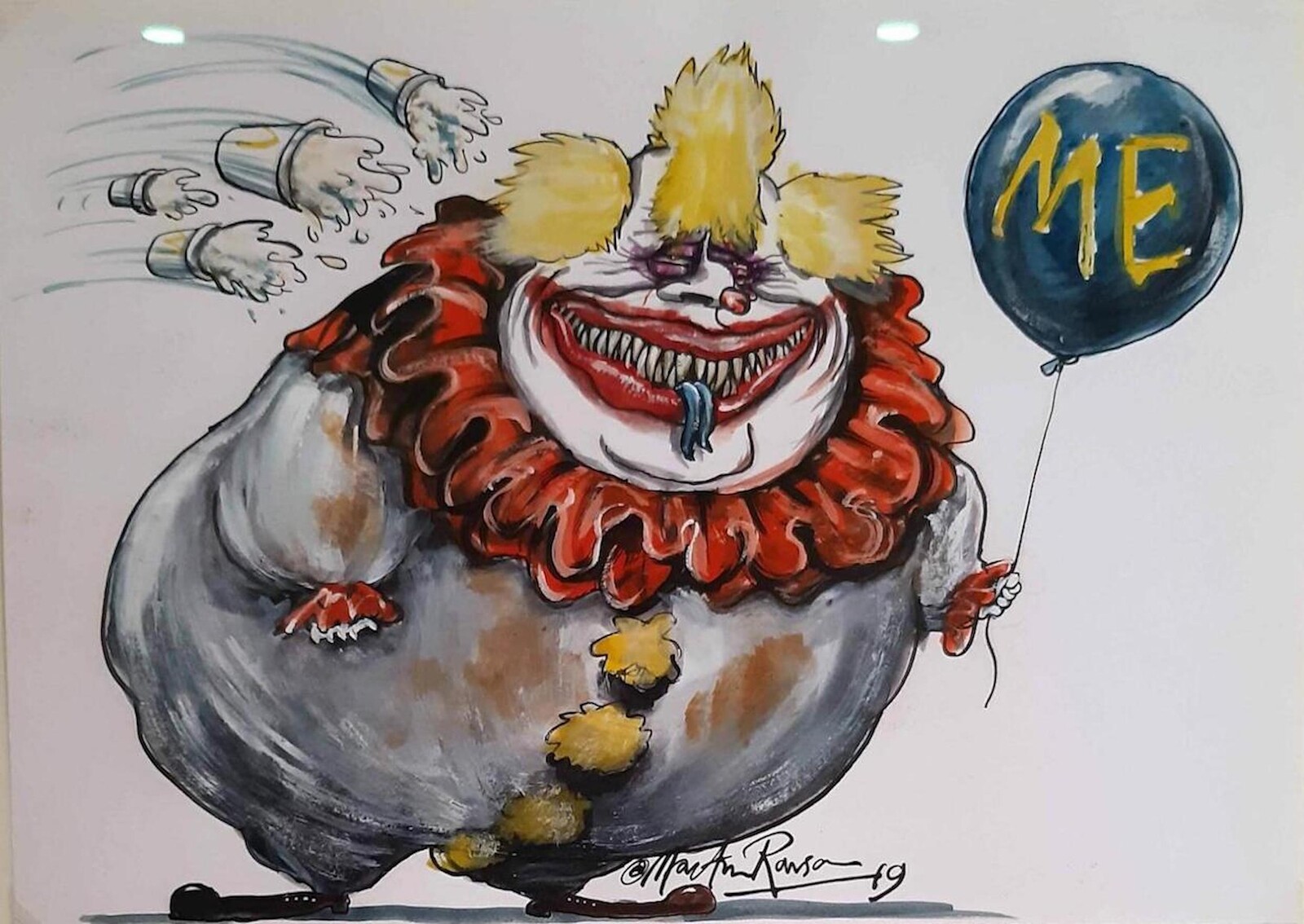
Boris Johnson, with his shambolic, lumbering presence, toddler’s hair, and talent for PR stunts and gaffes, was a lavish gift to cartoonists. So it made sense that, to mark his ousting as Britain’s Prime Minister in summer 2022, the Cartoon Museum in London should stage an exhibition laying out his extraordinary trajectory from the city’s mayor to champion of Brexit and divisive national leader. Johnson is a symptomatic as well as an eccentric figure, and this record of his presence in cartoons sheds light on wider issues with ramifications beyond the United Kingdom: the symbiosis between branded politicians and cartoonists, the bodies of populist leaders, and the role of revulsion in contemporary politics.
Cartoonists tend to fix upon those parts of Johnson’s body that generally go unmentioned in technocratic political discourse—particularly his arse. The first images the viewer encounters are fairground figures by Zoom Rockman of the kind you put your head through to be photographed (a reminder of the medieval stocks). In one of these, the user’s head appears through the arse of a flag-waving PM. And ever since his time as the Mayor of London, veteran political cartoonist Steve Bell has replaced Johnson’s face with an arse (a matter …
January 11, 2023 – Feature
Persistence or Renewal? On Gregory Halpern’s “19 Winters / 7 Springs”
Stanley Wolukau-Wanambwa

Over the past decade, Gregory Halpern has become an influential figure in American art photography, principally through the release of several wildly successful photobooks. Virtually all that work has centered on the postindustrial Midwest, so that it seems especially apt that the Transformer Station, in Ohio City, Cleveland should host his first major US solo exhibition.
“19 Winters / 7 Springs” comprises forty-one photographs and three floor-standing sculptures, all made in or depicting Halpern’s hometown of Buffalo, NY. In a faint echo of the geography of the region, in which Buffalo and Cleveland share a shoreline with the vast Lake Erie, this former substation has been refashioned into two reading rooms and twin gallery spaces linked by a single corridor. Upon entry, one finds at right a gallery framed by a large, Edenic portrait of a young white man perched on crutches beneath an immense tree, the bushes behind him a buoyancy of yellow flame (Untitled, 2004–2022). At left, in the Crane Gallery, Halpern shows a diminutive portrait of a muddy young African American student listing faintly after football practice, the looming gray trashcan beside him seemingly ready to swallow his weary frame whole (Untitled, 2004–2022). The two portraits map …
December 22, 2022 – Feature
What’s next?
The Editors
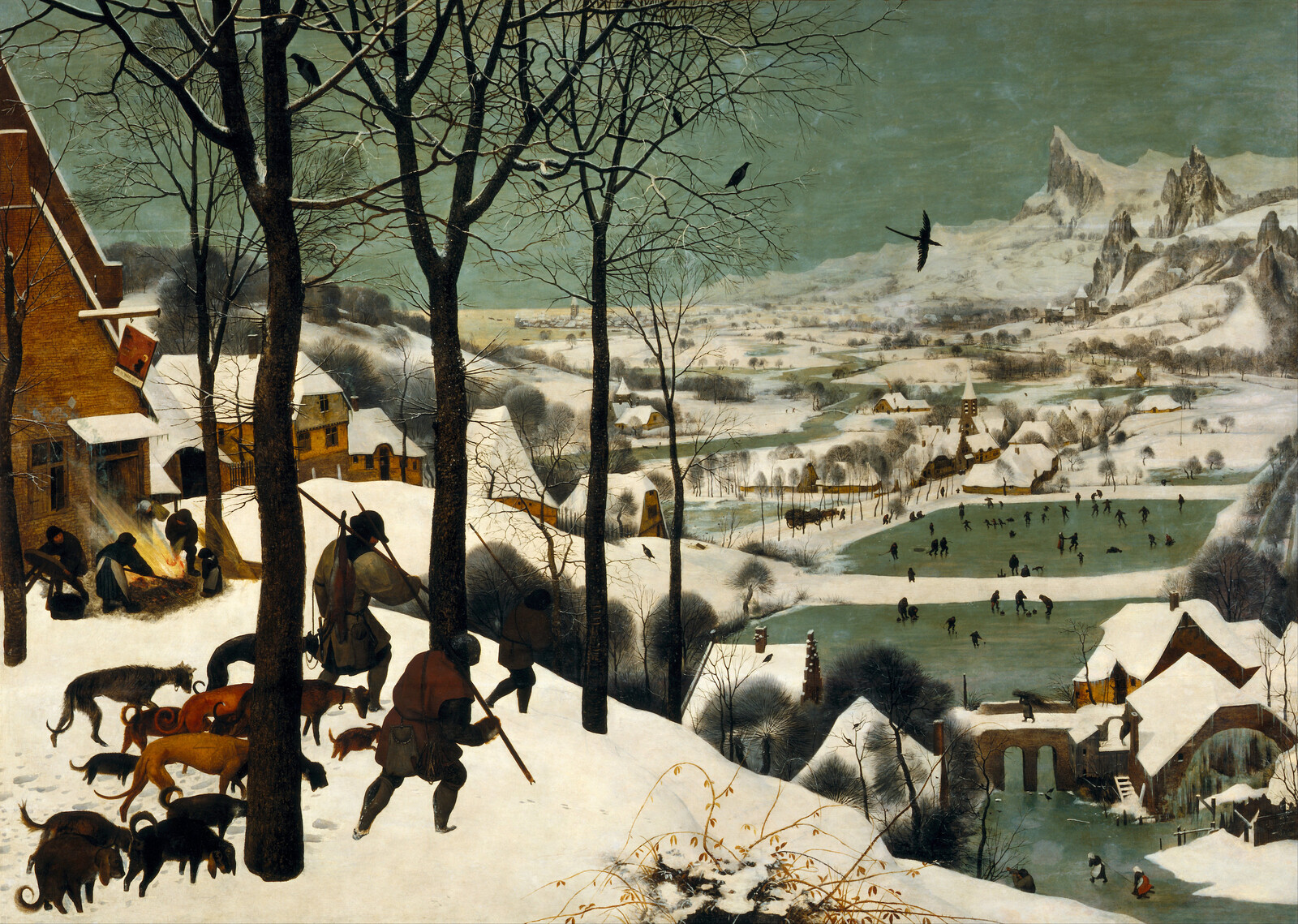
The past year has been marked by the restoration of normality to some parts of life and the transformation of others. So it was no surprise that, when we asked contributors to pick their highlights from 2022, so many nominated shows engaged with the question of what should be restored and what abandoned, what preserved and what confined to history. These creative responses to the moment took forms as varied as archival approaches to activist art, interventionist challenges to censorship, the rewriting of history, dispersed curatorial practices, and collective exhibition-making. With the new year we too will be changing, expanding our coverage to reflect the dissolution of old forms and the emergence of new ones. Look out for forthcoming announcements, and we’ll be back on January 6. In the meantime, happy holidays. The Editors
Hallie Ayres
I’ll take any opportunity to see work by the architecture collective Ant Farm. Most recently, their Dolphin Embassy project appeared in “Who Speaks for the Oceans?” at Baruch College’s Mishkin Gallery. Compiling work that ranged from whimsical to urgent, the quietly transcendent show offered a necessarily polyvocal approach to decentering the Anthropocene. Other stand-outs within the show included Myrlande Constant, Will E. Jackson, and Pia …
December 2, 2022 – Feature
This Machine is Broken: the Making of Populist Contemporary Art in Warsaw
Jakub Gawkowski
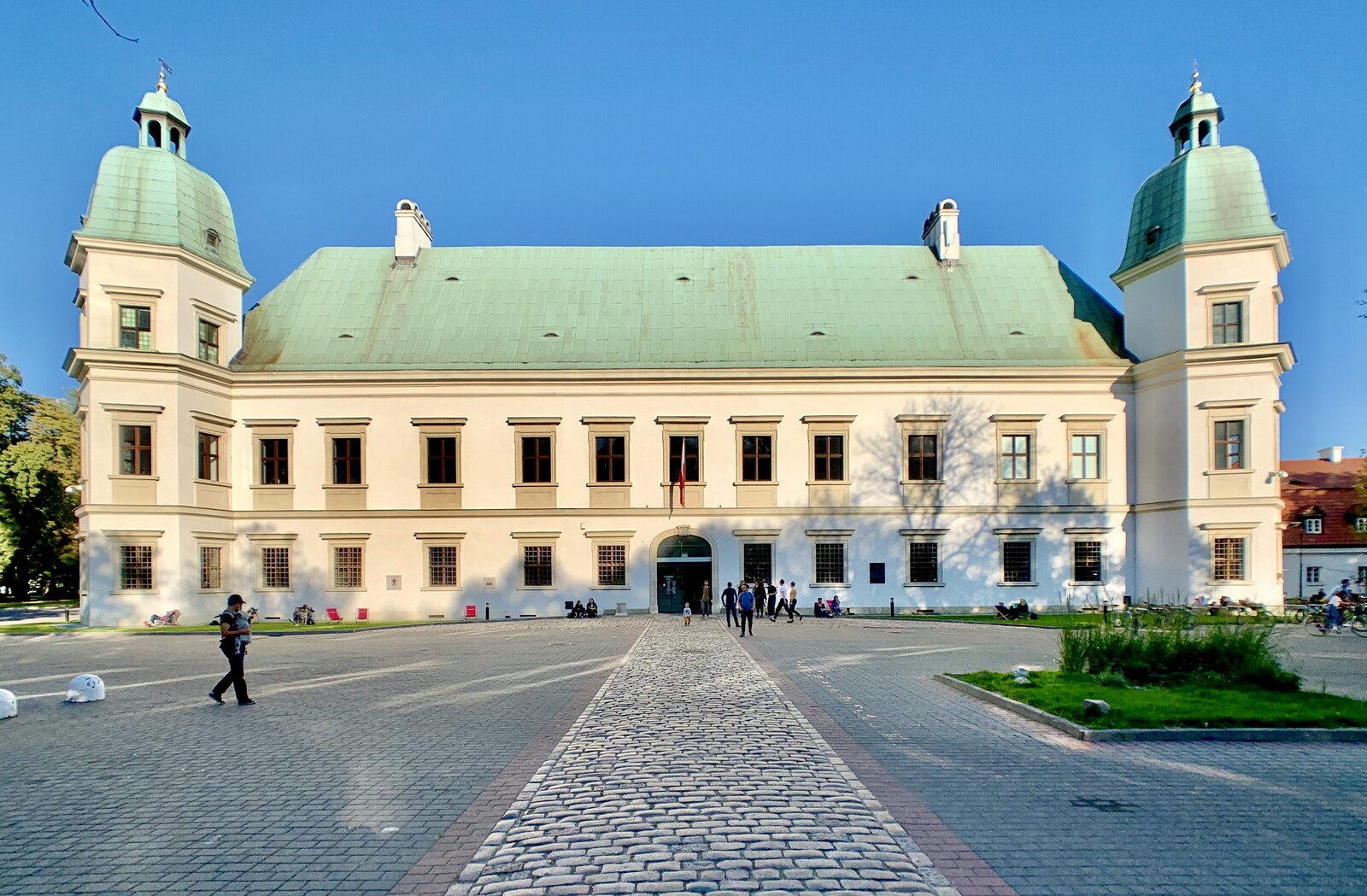
What if a contemporary art center, a space usually conceived as a laboratory for progressive ideas, became the opposite: a tool for promoting xenophobia, exclusion, and far-right propaganda? Under director Piotr Bernatowicz, the once-renowned Ujazdowski Castle CCA in Warsaw has pivoted to align with the values of the governing, populist Law and Justice Party that appointed him. Its latest show, “The Influencing Machine,” curated by Aaron Moulton and featuring regional and international artists from Chris Burden to Constant Dullaart, claims to tell the story of how the Soros Centers for Contemporary Art (SCCA) that sprang up across Eastern Europe in the 1990s were instruments of propaganda. More than anything, however, it shines a light on Polish nationalist populism and its conflicted, contradictory cultural-political mindset.
Since becoming director of Ujazdowski in 2020, Bernatowicz’s controversial program has sought to prove that contemporary art can be a place for conservative and nationalist values, and that an avant-garde might look back to the past, instead of forward to the future. The role of an experienced curatorial team in developing the program has been taken by loyal collaborators who not only lacked their expertise but even took to warning the public of the deleterious …
November 29, 2022 – Feature
Mame-Diarra Niang’s The Citadel: a trilogy
Sean O’Toole

Paris-based artist Mame-Diarra Niang’s debut book, The Citadel: a trilogy, is a plush and enigmatic showcase of her interest in “the plasticity of territory”; more pointedly, of her use of the landscape genre as self-reflexive tool of knowing, basically as mirror. The multi-part book compiles discrete photo essays produced—and previously exhibited—in two African cities, Dakar and Johannesburg, between 2013 and 2016. The publication makes concrete the formal arrangement of each essay, as well as unifying them under a common rubric. The Citadel follows a number of ambitious books describing Africa’s complex urbanism, among them Guy Tillim’s Jo’burg (2005) and Joburg: Points of View (2014) and Filip De Boeck and Sammy Baloji’s hardcover tome Suturing the City: Living Together in Congo’s Urban Worlds (2016). Its distinction emerges out of Niang’s willingness to subordinate documentary exegesis to mythic questing.
The tension between self and place is central to the slow crescendo proposed by the three individually titled and numbered books—Sahel Gris, At the Wall, and Metropolis—that constitute The Citadel. “It is important to me to address the representation of the self as a body that does not reduce itself to flesh, but possesses many places ‘without place’,” Niang stated in a 2015 …
October 31, 2022 – Feature
Kaelen Wilson-Goldie’s Beautiful, Gruesome, and True
Orit Gat
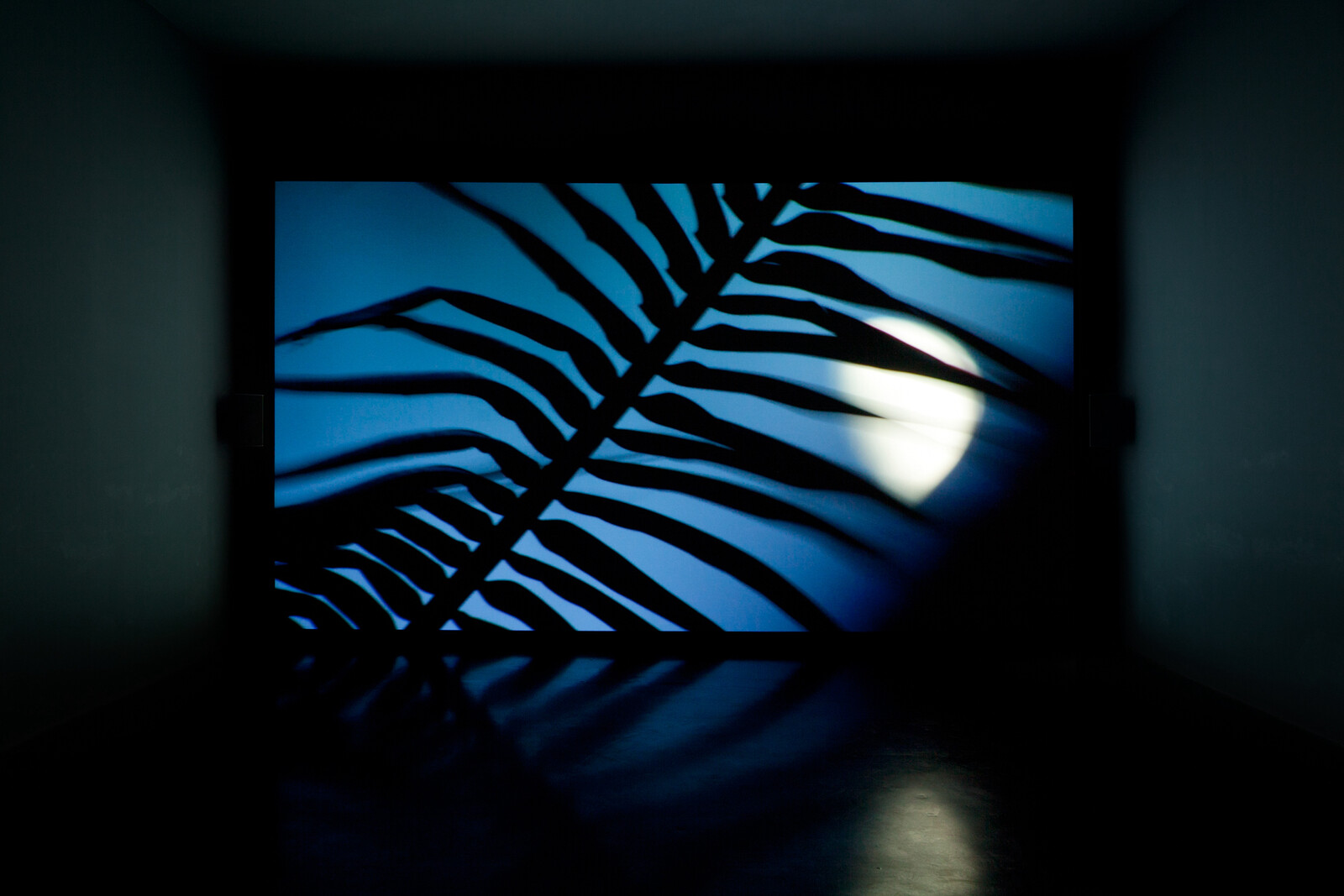
“What can you say about violence except that it should not happen?” asks Amar Kanwar. Writing from a conviction that art matters in the face of the “forever wars of our time,” art critic and journalist Kaelen Wilson-Goldie explores the works of three artists: New Delhi–based Kanwar, Mexican artist and activist Teresa Margolles, and Abounaddara, a collective of filmmakers who released weekly videos online from the beginning of the Syrian Civil War showing the realities of life under the regime. In making art, Wilson-Goldie argues, each found a space in which to reflect on the politics of the places they are from in ways that go beyond the documentation of violence, to transformative effect.
In her chapter on Abounaddara, Wilson-Goldie follows the collective in showing how life in wartime is shaped by conflict but, crucially, not wholly defined by it. The work of Kanwar, meanwhile, offers an example of how art can engage with popular struggles over labor rights, land, and resources. He’s been returning to the Indian state of Chhattisgarh ever since labor activist Shankar Guha Niyogi was murdered in 1991, on the day before Kanwar had arranged to film him. Writing about Margolles, Wilson-Goldie starts with her work …
October 28, 2022 – Feature
“Ultra-clearness”
Andrés Jaque / The Editors
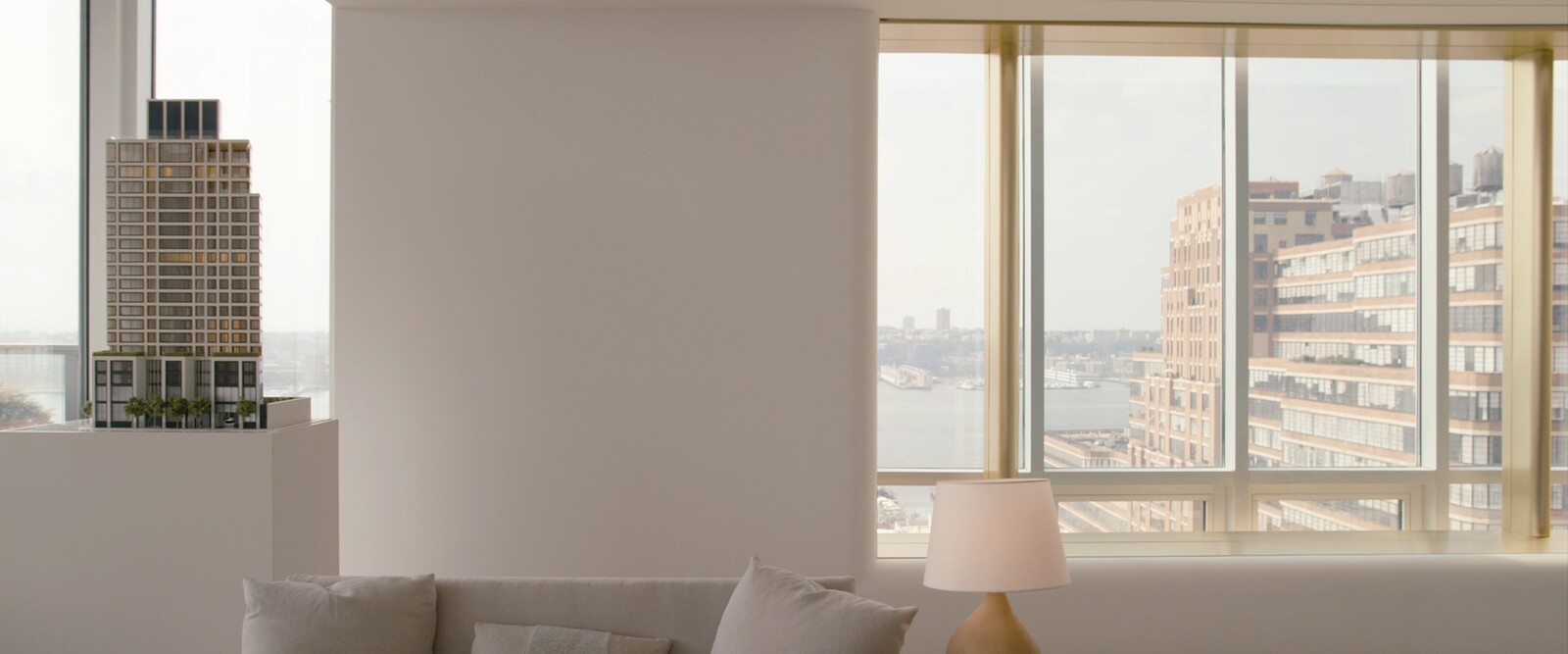
Andrés Jaque is an architect, writer, and curator whose work considers how architecture shapes our societies. In 2003 he founded the Office for Political Innovation, an architectural firm operating at the crossroads of research, design, and ecological studies to foster debate around the wider ramifications of human intervention into the landscape.
These projects frequently address the literal and figurative “transparency” of buildings. When commissioned in 2002 to design a hoarding that would hide the construction of the Cidade da Cultura de Galicia from view, for instance, Jaque proposed “twelve actions to make Peter Eisenman transparent.” Arguing that the site was “already concealed because it could hardly be understood by anyone not directly involved in its management,” he instead invited the public in to discuss its economic, environmental, and political impacts.
Jaque’s 2012 intervention into Mies van der Rohe and Lilly Reich’s Barcelona Pavilion foregrounded the contributions of water lilies and cats to a modernist masterpiece; commissioned by the 2021 Performa Biennale, Being Silica reproduced a fracking site in a Manhattan skyscraper. Now director of the Advanced Architectural Design Program at Columbia University, Jaque was co-curator of Manifesta 12 and chief curator of the 13th Shanghai Biennale. This interview is part of the …
October 25, 2022 – Feature
Mexico City Roundup
Gaby Cepeda
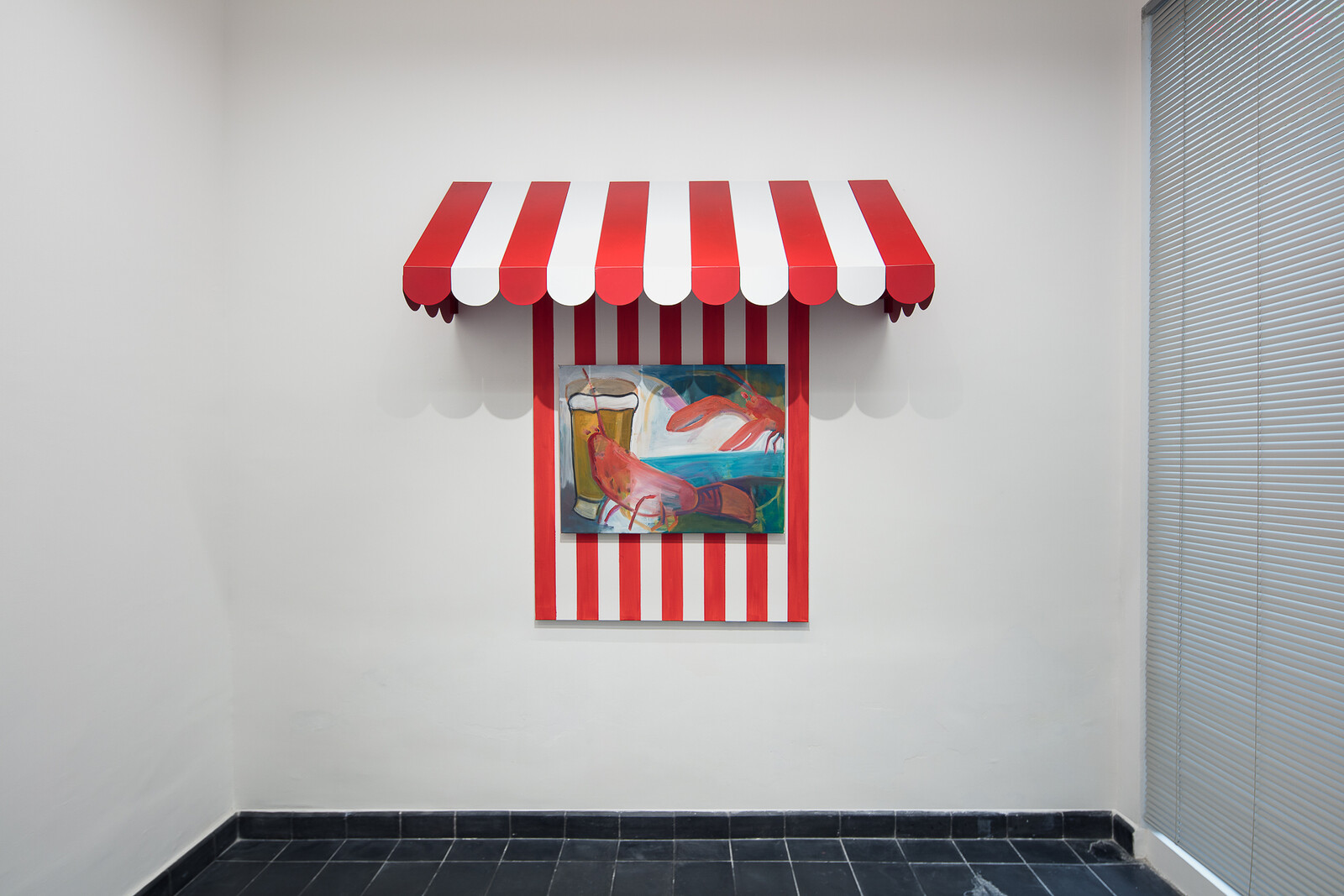
Mexico City’s fall openings are marked by a theatrical turn. The most overt expression is “Destino” [Destiny], organized by Mario García Torres at Museo Experimental El Eco. Displayed on a screen in the museum’s narrow entranceway is Disculpa [Apology] (2022), a video by García Torres and Eduardo Donjuan that sets the scene. The buffoonish face of Alejandro Suárez—a comedian well-known to Mexicans born before the turn of the millennium—performs a monologue in a painstaking, over-acted way. He goes on about his agent bringing him the offer to participate in this show, talks of “an air of the avant-garde” as a reason for accepting the invitation, and digresses on the similarities between art and spectacle. There are passing references to the Museo Experimental El Eco’s history: first established as an art institution in the 1950s, it later became a gay bar, a punk bar, a restaurant, a boxing gym, and a small theater, before reverting to its original function. At one point, Suárez recites a poem and then dances enthusiastically—it’s equal parts kitsch and unsettling to watch. He touches on some of Mario García Torres’s enduring fixations, evident in his earlier monologues and performances including I Am Not a Flopper (2007) …
October 17, 2022 – Feature
London Roundup
Chris Fite-Wassilak

There’s a moment towards the end of Jumana Manna’s film Foragers (2022), in her show of the same name at Hollybush Gardens, that stuck with me through Frieze week. After an hour spent following Palestinian foragers searching for a plant the Israeli authorities have deemed illegal to pick, the viewer is plunged into darkness shot through with brief glimpses of rusted orange-red semicircles. Slowly, the image resolves into low foliage illuminated fleetingly by a patrol car’s rotating beacon lights. This momentary break from reality—from documentary-style footage towards something resembling abstract animation—resonated with a wider disorientation I felt across some three-dozen exhibitions and an art fair. I don’t know if you can call it a theme, a trend, or a vibe, but it is perhaps best described as a sense of unease.
Such unease seems to prompt the creation of shelters or safe-spaces in works as disparate as the dark cork-lined walls of William Kentridge’s retrospective at the Royal Academy and Olukemi Lijadu’s cloth-lined viewing room for her film Guardian Angel (2022) at V.O Curations. When time is jumbled or out of joint, art can be a means to step ever so slightly back, to gain perspective, and to reimagine a …
October 12, 2022 – Feature
“The little bird must be caught”
iLiana Fokianaki

In the wake of the 2008 financial crisis, the Latvian Centre for Contemporary Art elected to establish an annual festival addressed to a changing world and proposing “survival strategies.” Now in its thirteenth year, Survival Kit takes place under the shadow of Russia’s full-scale invasion of Ukraine and its implications for a country in which around one quarter of the population are Russian speakers.
An exhibition curated by iLiana Fokianaki and taking inspiration from the “Singing Revolution” that preceded the Baltic States’ independence from the USSR has clear resonances with the present situation in Eastern Europe, but also reverberates more widely. Poetry, music, and song are figured by artists from Andrius Arutiunian to Wu Tsang as powerful expressions of resistance to imperialism, not only as the vehicles by which marginalized traditions are transported into the future but also as defiant expressions of feelings that cannot be suppressed. After seeing the exhibition in Riga last month, we talked to Fokianaki about a world in flux and the role of art within it.
art-agenda: A year ago you proposed a show which would consider the impact of rising authoritarianism on issues of national identity and free speech through the lens of Latvia’s …
September 30, 2022 – Feature
M. E. O’Brien and Eman Abdelhadi’s Everything For Everyone
Andreas Petrossiants

In her Manifesto for Maintenance art, 1969!, Mierle Laderman Ukeles asked: “after the revolution, who’s going to pick up the garbage on Monday morning?” If sectarian communism and reformist socialism do not challenge the classical Marxist separation between productive and reproductive labor, then what else could revolution lead to but a perpetuation of the same hierarchies by different names? Lizzie Borden’s documentary-styled film Born in Flames (1983) provided one answer to Ukeles’s question: after the United States’ transition to state socialism, violence against women, unremunerated labor, and homophobia remain rife, even amongst “comrades.”
M. E. O’Brien and Eman Abdelhadi’s speculative fiction offers another. It imagines a future in which rebellions have brought about post-capitalist worlds: commodities and the state have not only been abolished, but forgotten. The authors—performing versions of themselves five decades from now, and two decades after the insurrection reached New York—interview twelve different characters for the “New York Commune Oral History Project.” Beginning with an introduction from the future that doubles as a primer on communization theory, it’s an impeccable act of world-building. Intimate, at times confrontational, dialogues address the localized but globally oriented insurrections that brought down capitalist, white supremacist states throughout the world. The interviewees …
September 29, 2022 – Feature
“Life after ruins”
Kateryna Iakovlenko
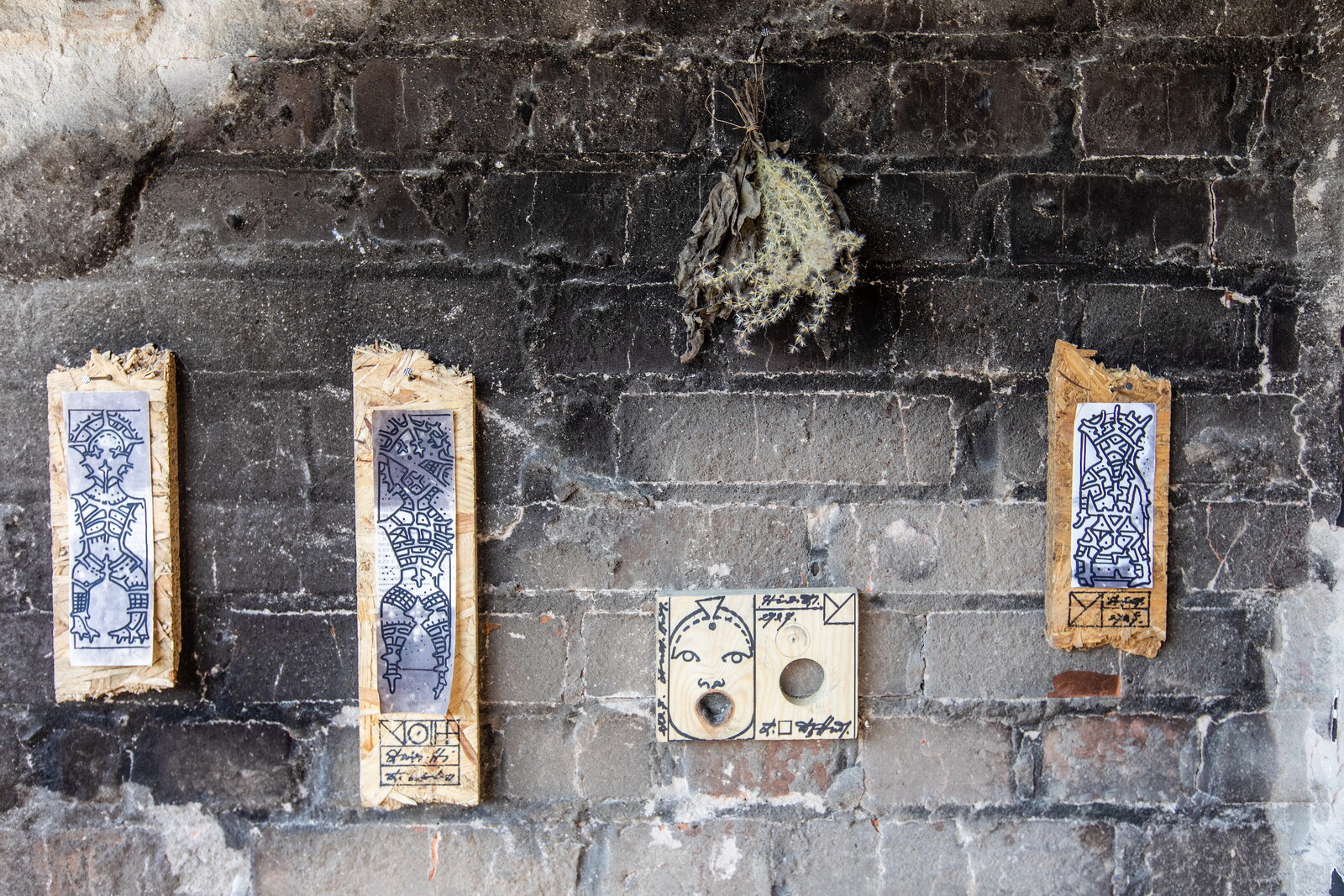
On March 18, a few days after the writer and curator Kateryna Iakovlenko left her hometown of Irpin in Kyiv Oblast, she learned that her apartment had been hit by a rocket. In August, having returned to the city, she organized an exhibition in what remained of her home. Titled “Everyone is afraid of the baker, but I am grateful,” the show featured work by Katya Buchatska, Mark Chegodaiev, Sasha Kurmaz, Roman Mykhailov, Anatol Stepanenko, Stas Turina, Tamara Turliun, and Anna Zvyagintseva. In this conversation over email, she tells us how the project explored the possibility of articulating trauma, the role of archives, and what it means to live after ruins. Not least, she draws attention to the many artists in Ukraine who have continued to work through the invasion of their country, and in resistance to it.
art-agenda: How did you learn that your apartment had been ruined, and why choose to make an exhibition in the space when you returned to Ukraine?
Kateryna Iakovlenko: Six days after I arrived in Vienna, I saw a report that the remnants of a rocket had hit our building. I learned from my neighbors’ posts on social media that it had …
September 21, 2022 – Feature
A short and incomplete history of “bad” curating as collective resistance
Gregory Sholette

In the last of our dispatches from Documenta 15 over the course of its 100 days, Gregory Sholette defends the exhibition’s daring, decentralized curation, placing it in the context of artistic and activist movements from the nineties to the present, and contrasting it to the presentation of the Berlin Biennale.
Between the start of this year and the end of September, the artistic universe has delivered up an increasingly ominous sequence of events that, for me at least, resembles the tangled history of decentralized curating, the recrudesce of which feels downright spooky. Der Spiegel’s recent exhortation regarding Documenta 15 that “the German cultural sector has a big problem,” for instance, made me think of a threat made by Walter White in Breaking Bad: “There will be consequences.” Given that much of the criticism of Documenta 15 has focused on alleged curatorial inadequacies—and has included not only menacing editorials recalling sensational crime drama, but direct threats of violence against curatorial staff and artists—it feels pertinent to ask: a big problem for whom? And if the show’s decentralized curating has been attacked as “bad,” then according to what reputed standards?
In 1998, as the recently hired Curator of Education at New York’s …
September 16, 2022 – Feature
“Fire Complex”
Uta Kögelsberger / Julian Stallabrass
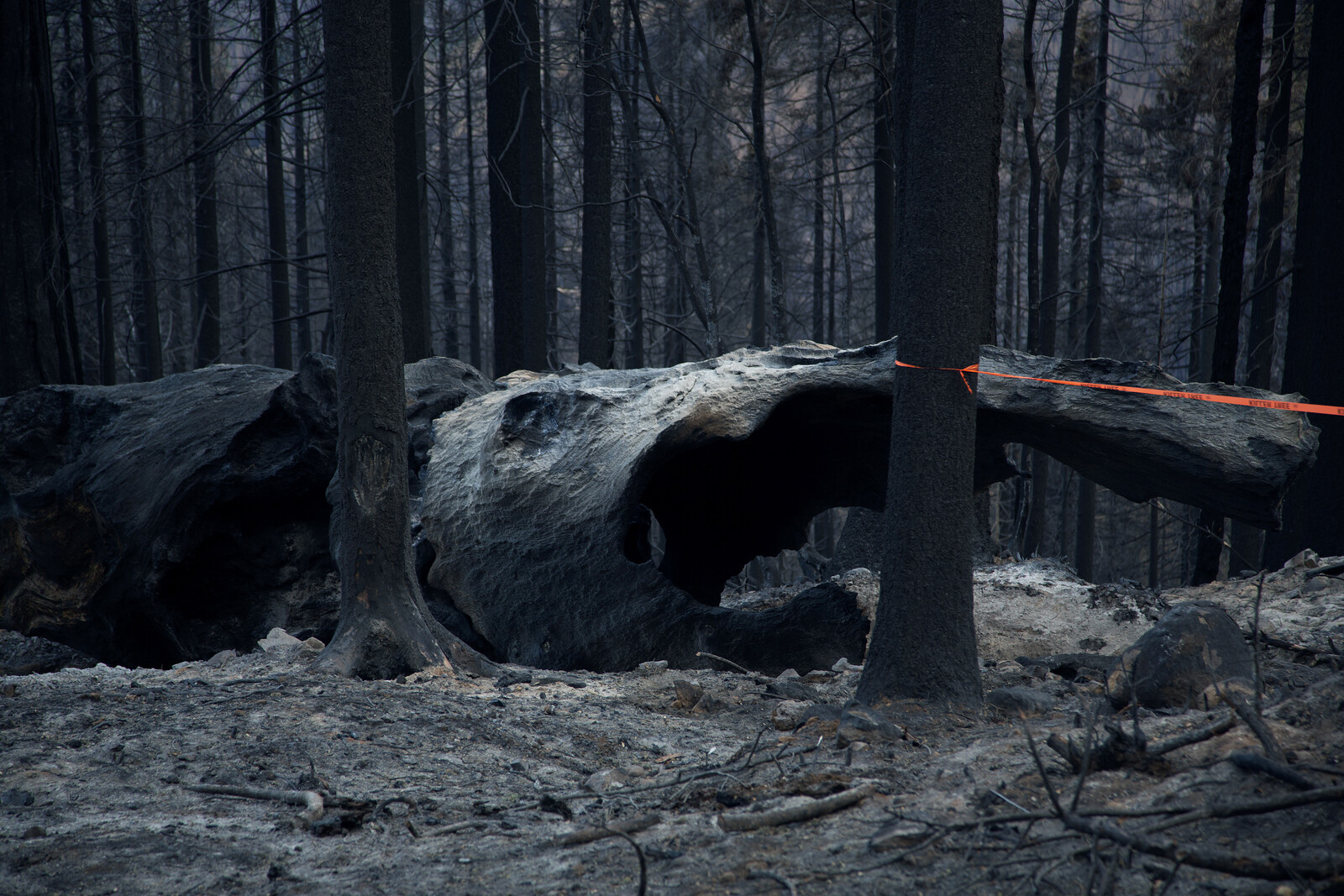
In 2020, the Castle Fire wildfire swept through 174,000 acres of Sequoia National Forest, destroying an estimated 14 percent of the world’s giant sequoia population. Uta Kögelsberger embarked on a series of works and actions to render the destruction and its wider implications palpable, and to start to restore the land.
In her multi-screen video work Cull (2022)—which has been shown in different iterations in Los Angeles, London, and online—a dire spectacle unfolds before the viewer: a burnt forest with tall but stripped trees standing amid ash and snow. Giant sequoias, the largest and among the longest-living of trees, have historically survived these fires. Large firs, cedars, and other trees are being felled. The looping, 15-minute video is largely silent until the trees crash to the ground, shattering branches and throwing up huge clouds of ash. Some fall heavily, as we might expect, but others lightly, gently, as if with a sigh. To any lover of trees and forests, the work is deeply affecting.
Once, darkly beautiful scenes such as these—some of the static shots look like an apocalyptic variant of Ansel Adams—would have been experienced as sublime. In the current climate emergency, they are more immediately threatening: a vision of the …
September 15, 2022 – Feature
Warsaw Roundup
Ewa Borysiewicz
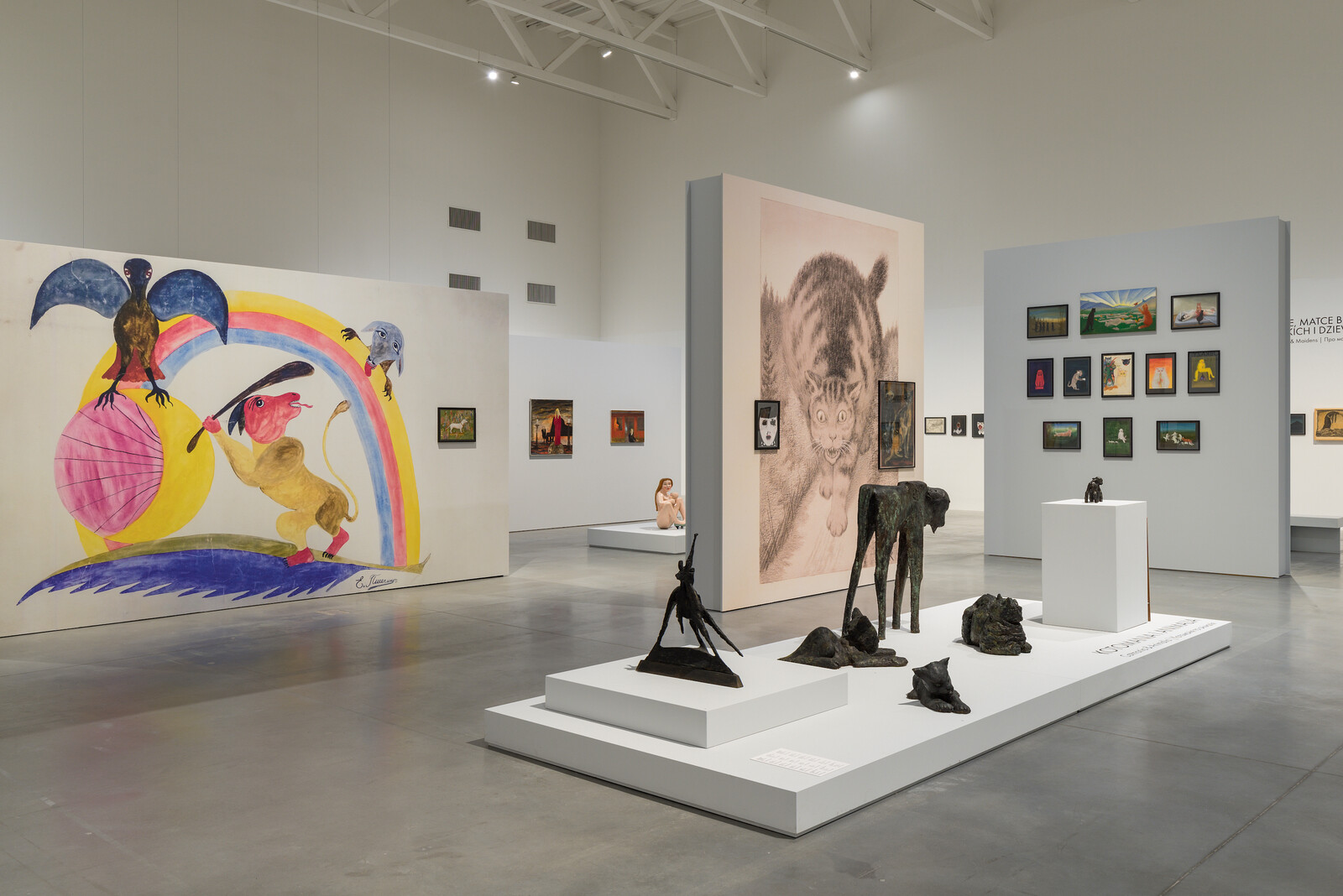
Poland, as the theorist Maria Janion has noted, lies East of the West and West of the East. The cognitive dissonance can sometimes manifest in a complex blend of inferiority complex and messianic pride, often expressed via tales of the nation’s suffering and past glory. The majority of post-1989 efforts to tell the nation’s history have focused on repressing “Eastern” attributes in favor of “Western,” but Russia’s war on Ukraine has seen the nation assert its solidarity with its beleaguered eastern neighbor.
Warsaw’s Museum of Modern Art is trapped between the Stalinist Palace of Culture and Science and proliferating skyscrapers, and the institution’s programming reflects the difficulty of reconciling these two influences. Its temporary home, close to the Vistula River, currently hosts “The Dark Arts: Aleksandra Waliszewska and Symbolism from the East and North,” curated by Alison M. Gingeras and Natalia Sielewicz. The reclusive painter has gained an enormous online following for her somber, cryptic gouaches depicting a cast of mysterious figures including woman-spider hybrids, sinister Slavic wraths, lonely hangmen, flayed youngsters, and bleeding mystics.
The curators have applied a decorum-defying social media logic to the show’s methodology, juxtaposing works of varying provenances and gravities. Yet the physical center of …
September 8, 2022 – Feature
Rachel Cusk & Chris Kontos’s Marble in Metamorphosis
Aliki Panagiotopoulou
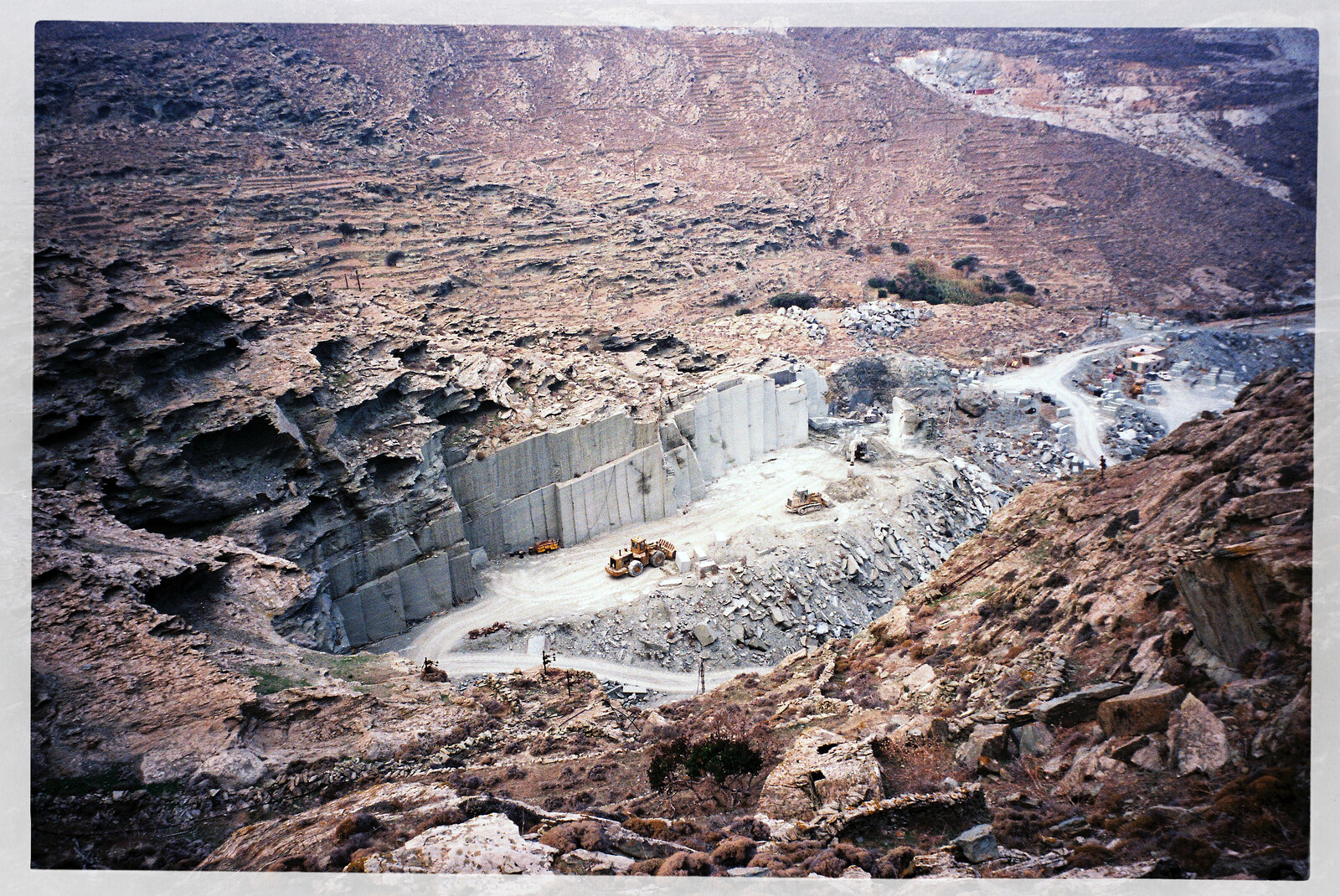
In 1894, just a year after Prime Minister Charilaos Trikoupis had declared Greece bankrupt, Athens was chosen to host the first modern Olympics. The occasion demanded the total refurbishment of the Panathenaic Stadium, a venue used for athletic competitions since ancient times. As the city embarked on this expensive endeavor, someone (the Olympic committee, mayor, or king, according to different versions of the story) posed the question “Ποιος θα πληρώσει το μάρμαρο;” [Who is going to pay for the marble?] In the decades since, the ancient Greek word has come to acquire a new significance in the modern vernacular: that of damage.
Marble in Metamorphosis, a book which “contemplates the physical and cultural life of marble,” is published by an Australian property development company active in Athens. Much like a mockup apartment, everything about this object is designed to showcase the company’s taste: an essay by Rachel Cusk, Chris Kontos’s sleek photographs of Athens and the island of Tinos, excerpts from poems by major Greek poets Giorgos Seferis and Yannis Ritsos, and a poetic afterword by Nadine Monem, all make for a chokehold of beauty. Yet, in recent years, public policies that prioritise property over home, investment over sanctuary, and …
September 6, 2022 – Feature
“That’s not it”
Daisy Hildyard
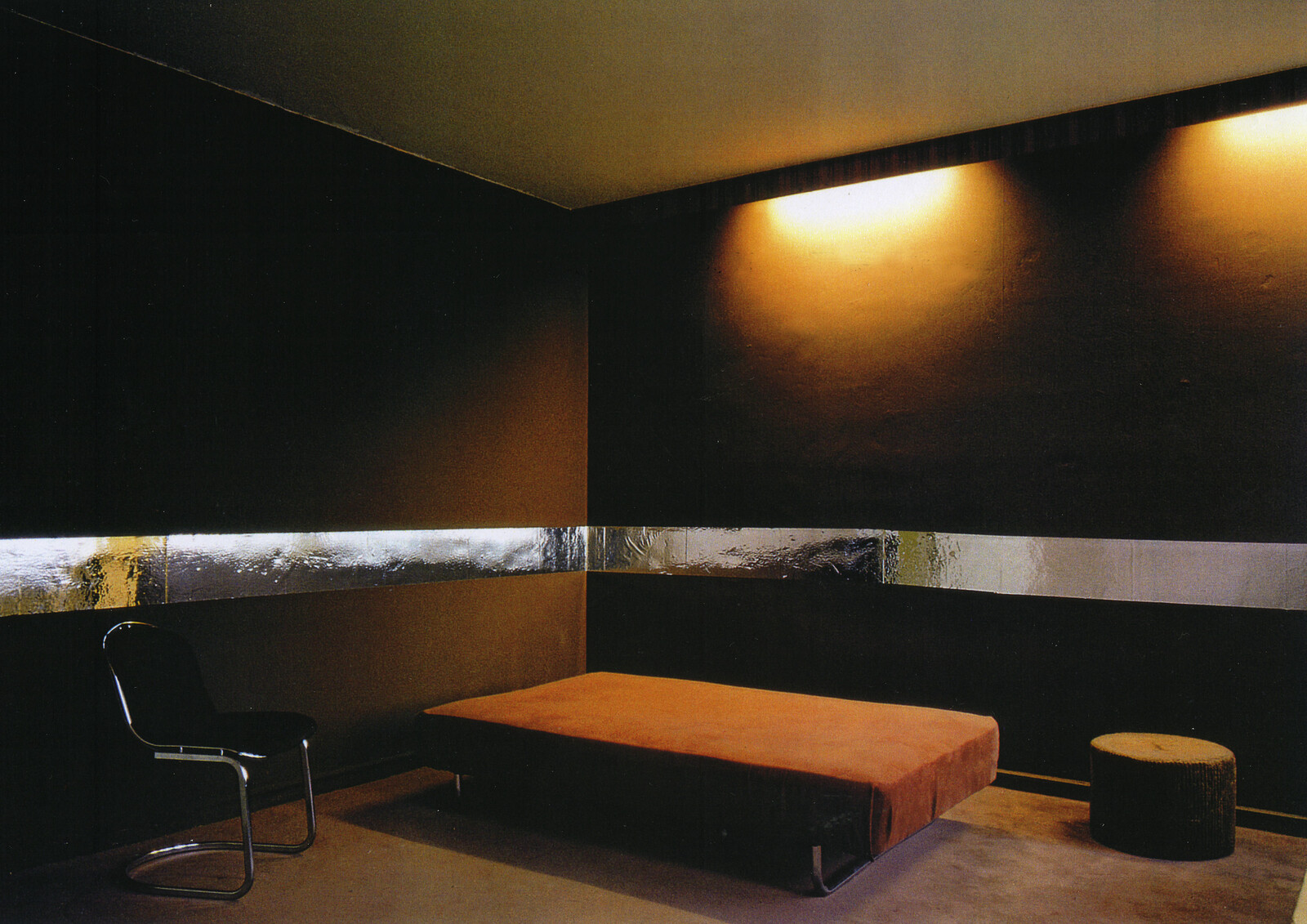
Meta is a collaboration between art-agenda and TextWork, editorial platform of the Fondation Pernod Ricard, which reflects on the relationship between artists and writers. Following on from her essay on Dominique Gonzalez-Foerster for Textwork, the novelist Daisy Hildyard considers the importance of unknowing and vulnerability in any critical response to a work of art.
There is a poem by Elizabeth Bishop about a sandpiper, a small seabird who is seen running along the shoreline, stabbing his head in the sand for grubs. On a frantic mission for food, “His beak is focussed; he is preoccupied,/ looking for something, something, something. Poor bird, he is obsessed!” This attention is sadly misplaced: Bishop’s sandpiper, in his “state of controlled panic,” is oblivious to the ocean that roars right next to him.
The sandpiper is overlaid in my mind with a passage from Virginia Woolf’s diaries in which she describes her experience as an obsessive search for something—but she doesn’t know what. “I have some restless searcher in me. Why is there not a discovery in life? Something one can lay hands on and say ‘This is it’? […] I’m looking: but that’s not it—that’s not it. What is it?” I see …
August 3, 2022 – Feature
“The double bind”: on Documenta 15
Skye Arundhati Thomas
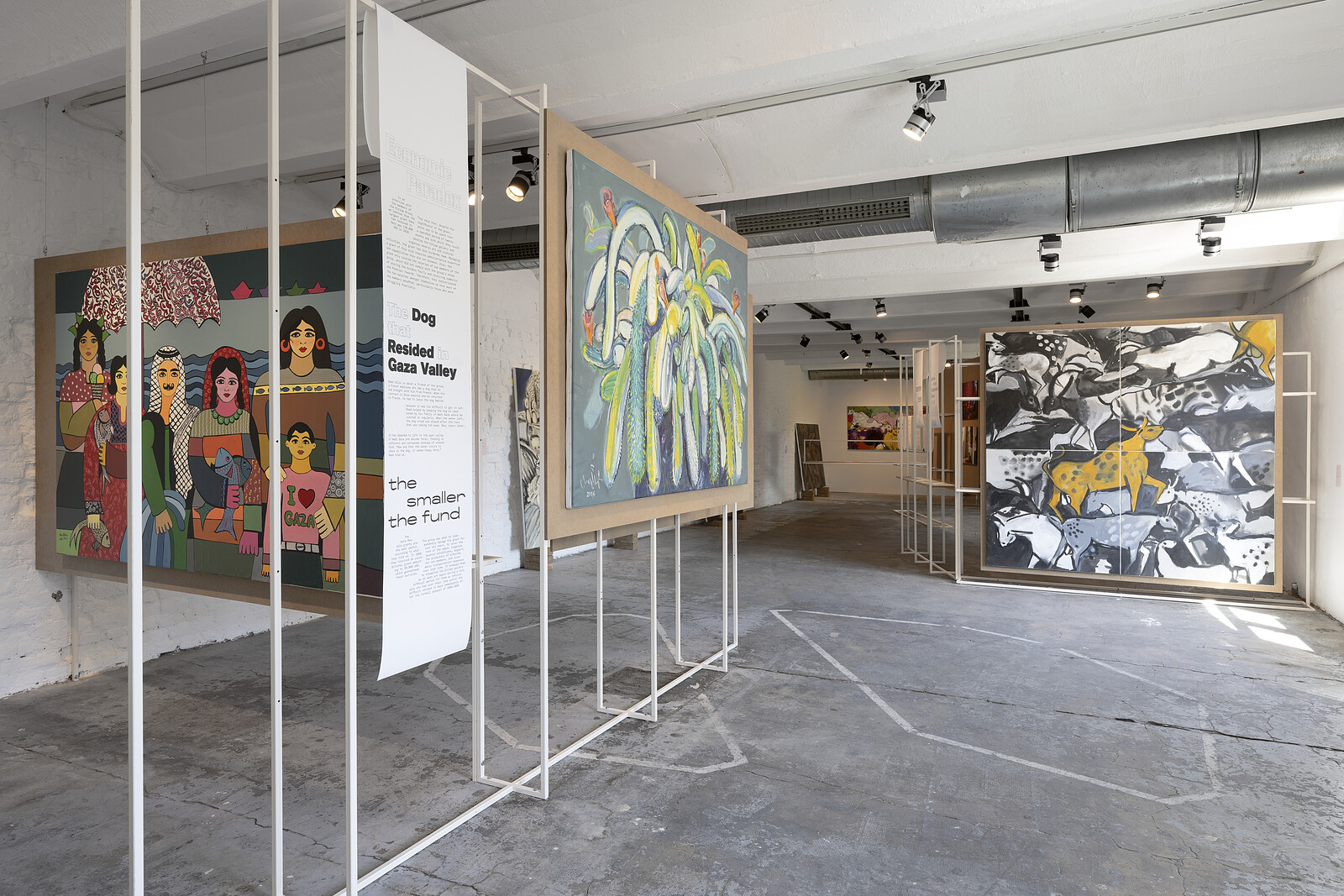
In the third of our dispatches from Documenta 15 over the course of its 100 days, Skye Arundhati Thomas reflects on the exhibition’s foregrounding of collectives from the Global South, how this has been received, and what it might mean for the future of exhibition-making.
Collectives are often born out of necessity. In India, where I live, I see how essential communal endeavors can become: raising money for bail bonds, distributing funds for the living costs of members, building infrastructure. Collectives of this kind—often occupying a blurred borderland between activism, art, and social work—respond to a political and social alienation bred from the breakup of communities under the mechanisms of authoritarianism. In situations of near continuous emergency, and in the absence of welfare states, public funding, and institutions, the task of providing support and crisis work often falls onto individuals and their capacity to build community.
“Lumbung,” the Indonesian rice barn which serves as the curatorial proposition of ruangrupa’s Documenta 15, is a means by which to collect, store, and share resources. In keeping with that principle, theirs is a show engineered towards a relational rather than an aesthetic experience. Fourteen primary participating collectives were given €25,000 as “seed money,” …
July 15, 2022 – Feature
Reclamation in Whose Name?
Natasha Marie Llorens
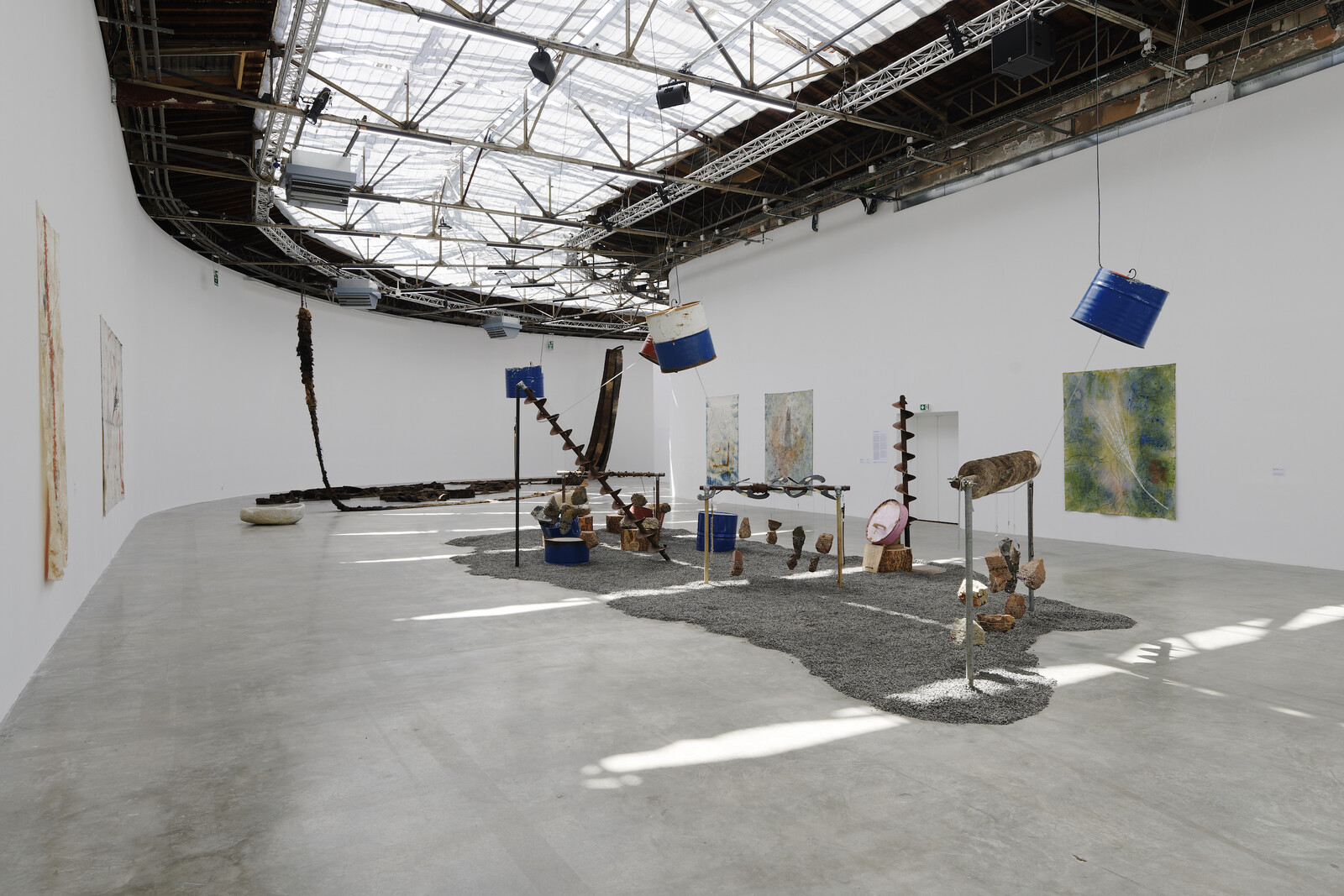
“Ecological turns” is a series in which writers consider how the ecological discourse is shaping the production, exhibition, and reception of contemporary art. In this instalment, Natasha Marie Llorens reflects on a group exhibition at Palais de Tokyo which takes a “rallying cry” for a title: “Reclaim the Earth.”
Solange Pessoa’s long swaths of felted horsehair, culled and woven together over many years, are suspended from the Palais de Tokyo’s high ceilings, their rough surfaces and variegated brown tones visible from a distance as I enter the gallery. Cathedral (1990–2003) is part of a group show entitled “Reclaim the Earth,” encompassing the work of fourteen artists, conceived as a multi-generational and multi-cultural “rallying cry” in response to climate collapse. Pessoa’s references to horses imported to Brazil by the Spanish are described by the wall label as evocative of “distant memories of Brazil’s colonization by the Europeans,” and the artist’s contribution to the exhibition is summarized as animating “both living and non-living elements, mixing present time with the ancestral past.” I am attracted to the abject quality of Pessoa’s lines traced over the ghost image of Oscar Niemeyer’s Brasilia Cathedral, but I balk at the softness of the generalization “European colonization,” …
July 12, 2022 – Feature
“Shared memories”
Akin Oladimeji / Jelili Atiku
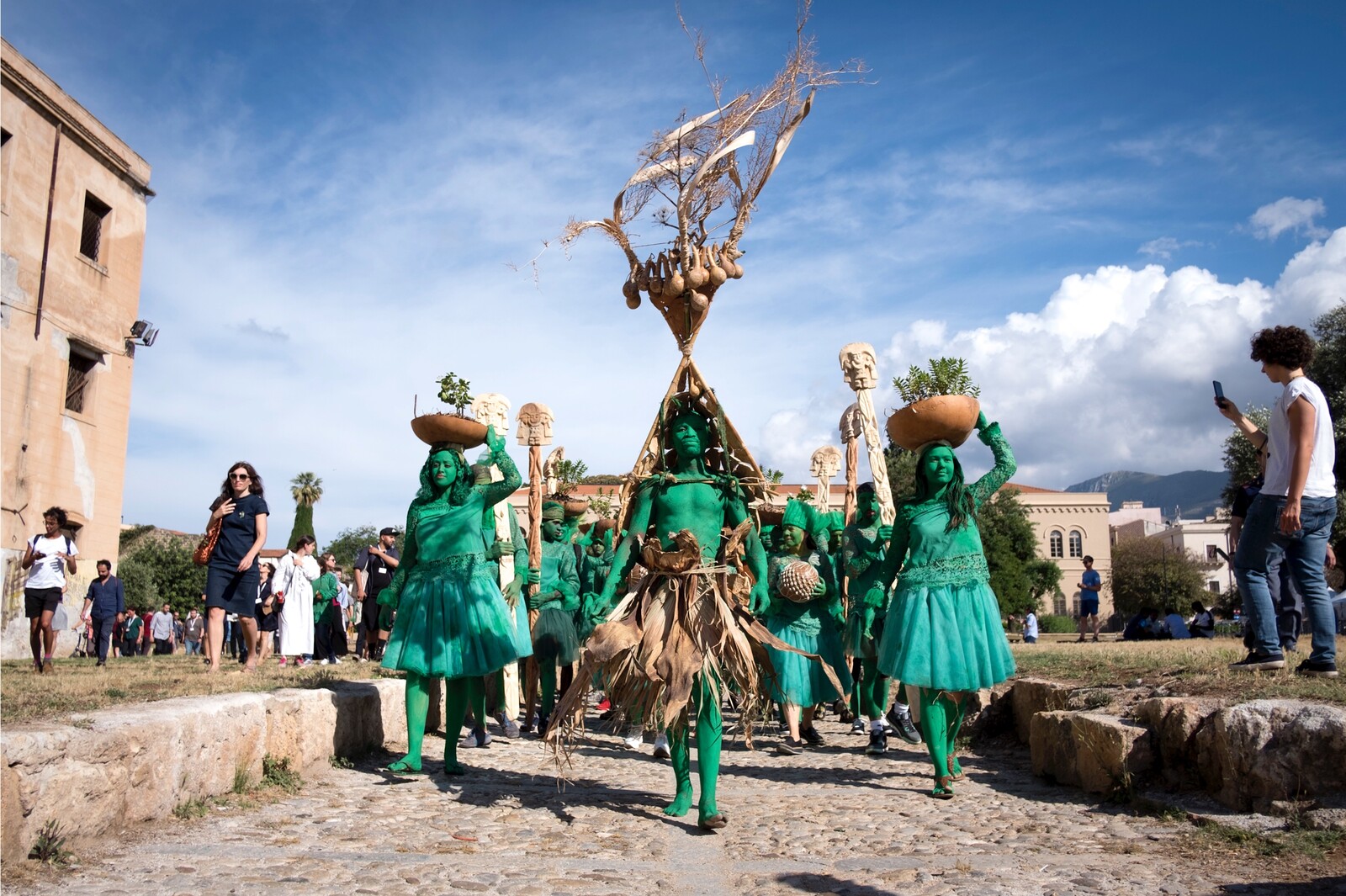
Last month the Lagos-based artist Jelili Atiku trod tenderly through a public square in London, weighed down by maquettes strapped to his feet. Small sculptures, mounted on a large cardboard box daubed with “Pfizer,” “Kano,” and “1996,” obscured his vision. The performance—titled Wórowòro, Kóbokòbo and shown as part the group exhibition “In a Pot of Hot Soup: Art and the Articulation of Politics in Nigeria” at the Brunei Gallery in the School of Oriental and African Studies (SOAS) at the University of London—was Atiku’s response to the Pfizer drug trial scandal of 1996 and its impact on our pandemic-scarred present. During that controversy, the pharmaceutical giant pledged to combat a meningitis epidemic in Kano, northern Nigeria, by trialling a new drug on 200 infected children, leaving eleven dead and dozens more injured.
Atiku’s work across drawing, multimedia installation, and performance combines Yoruba performance traditions with political activism to address subjects including human rights abuses and postcolonial trauma, at times with the intention of directly provoking political change. In 2016, he was arrested in Ejigbo, Lagos, on charges of “public disturbance and inciting the public” over his performance work Aragamago Will Rid this Land of Terrorism. The piece, which invoked Yoruba …
July 8, 2022 – Feature
“Towards Life”
Chus Martínez
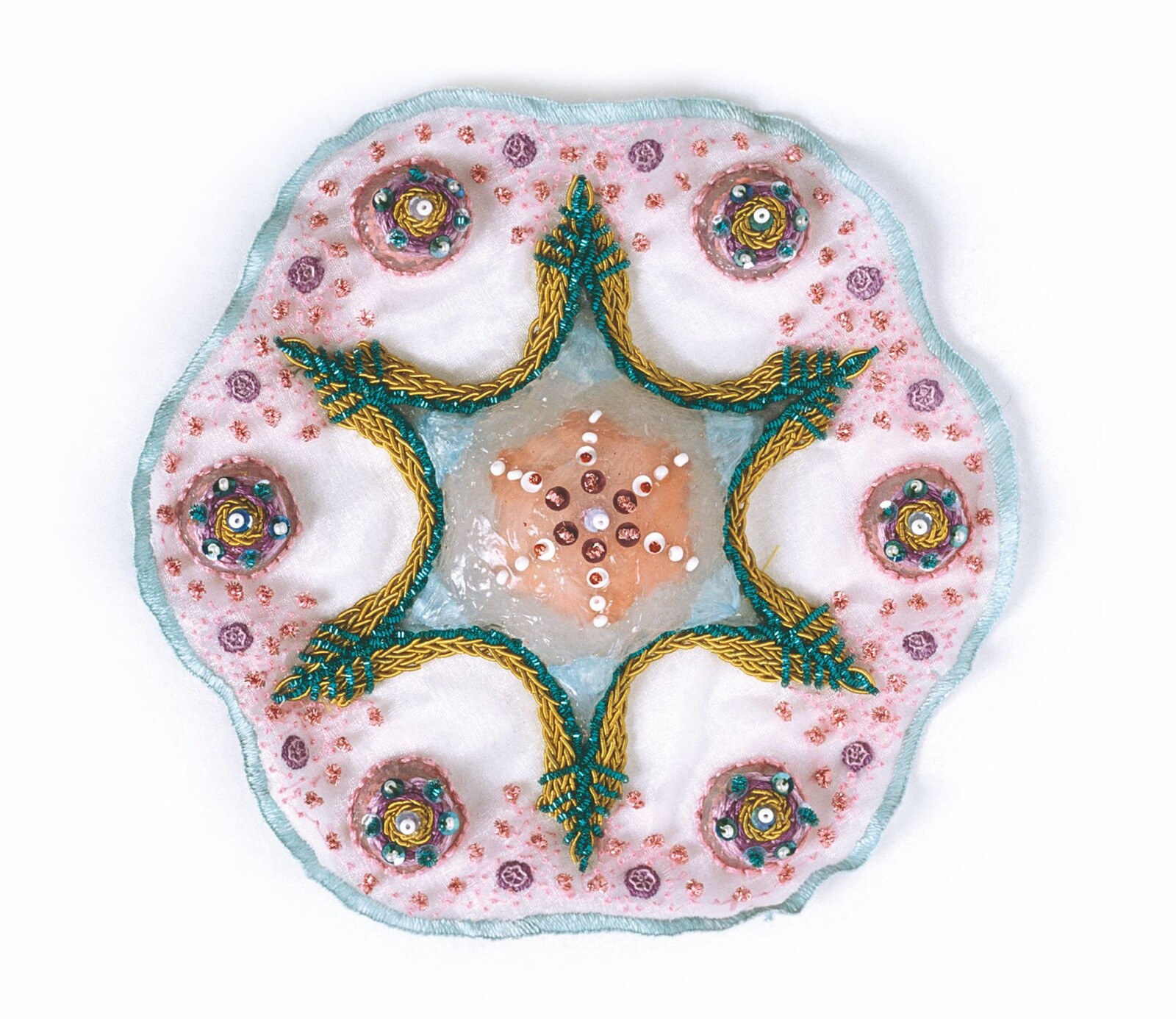
Meta is a collaboration between art-agenda and TextWork, editorial platform of the Fondation Pernod Ricard, which reflects on the relationship between artists and writers. In her essay on the work of Martine Aballéa for Textwork, Chus Martínez considered how its new “ways of sensing” the world might suggest new ways of acting within it. This curiosity about how other consciousnesses—human and nonhuman—construct their surroundings also characterizes Martínez’s work as artistic director of TBA21–Academy’s Ocean Space in Venice, which is dedicated to improving our understanding of the oceans through art, and as director of the Art Institute at the FHNW Academy of Art and Design in Basel. This conversation picks up threads from that text, ranging from what it means to think of art as a living being to why she retains “the highest respect for joy.”
art-agenda: You write beautifully of how reality is constructed by our sensory faculties: so the world as inhabited by a human does not only look different but is different to the world inhabited by, to take your example, a turtle. How can art help us to reconstruct the world?
Chus Martínez: I am always fascinated by how we fantasize: how fantasy allows the human …
July 1, 2022 – Feature
Natasha Soobramanien & Luke Williams’s Diego Garcia
Orit Gat

The narrator of Diego Garcia, a novel written collaboratively by Natasha Soobramanien and Luke Williams, is sometimes a he, sometimes a she, always a we. When its two speakers, Oliver and Damaris, are not together, the narrative can fracture into separate columns. They live in Edinburgh. It’s 2014. “We” walk to the library; “he” makes coffee in the morning; “she” loves the cardamom buns at the Swedish café. The city is a backdrop to their conversations about Theodor Adorno and James Baldwin, the Velvet Underground, writing, and money; they discuss their debts in numbers, their credit scores in terms of unavailable futures. On the streets are posters for the Scottish Independence referendum.
Their life feels detached until one day they meet Diego. Diego is Chagossian, from the community exiled to Mauritius and the Seychelles by the British government between 1967 and 1973 so that the island of Diego Garcia could be turned into a US military base. Diego—the name he adopted in acknowledgement of his lost homeland—meets them one night for a drink. They never see Diego again, but before he leaves he tells Damaris his life story: how he grew up in Mauritius and ended up undocumented in the …
June 29, 2022 – Feature
“Contested Histories”: on Documenta 15
Jörg Heiser
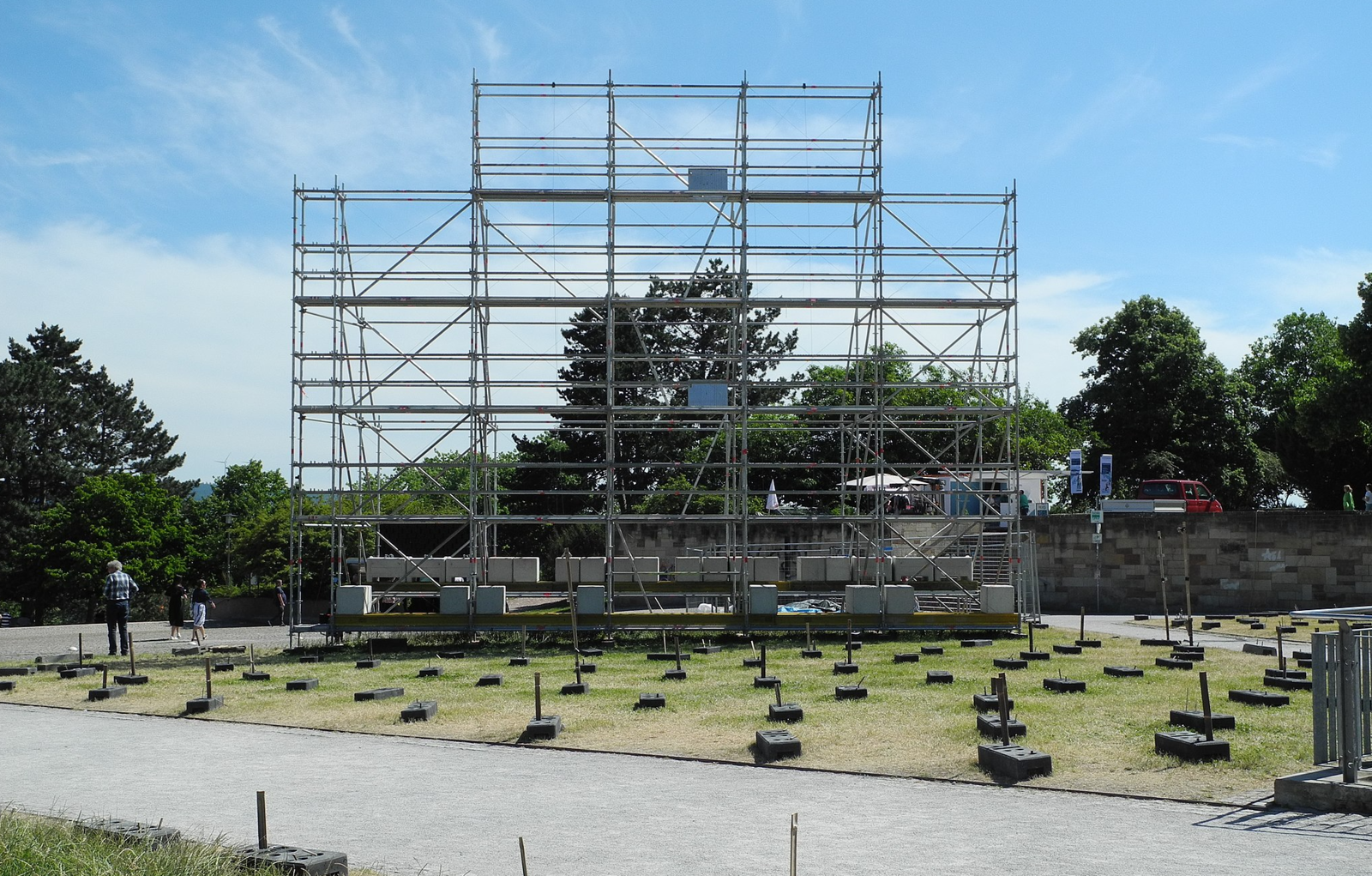
In the second of our dispatches from Documenta 15 over the course of its 100 days, Jörg Heiser considers the row over anti-Semitic content that erupted shortly after the exhibition’s opening.
This January, a Kassel-based group called Bündnis gegen Antisemitismus [Alliance Against Anti-Semitism], which prides itself on anti-Muslim racism (“we make no secret of the fact that we take a critical view of Islam”), published a post on its blog. The post denounced members of ruangrupa, the Indonesian collective curating this year’s Documenta, as well as members of the exhibition’s Finding Committee and Artistic Team, as anti-Semites, pointing to their support—amongst 16,000 other co-signers—for the May 2021 “Letter against Apartheid.” (I haven’t signed the letter because I disagree with its terminology and some of its demands, but the assumption that everyone who did is automatically an anti-Semite is absurd.) In a newspaper interview in January, German Historian Ulrich Schneider—federal spokesman of the anti-fascist Vereinigung der Verfolgten des Naziregimes [Association of the Persecuted of the Nazi Regime]—described the “alliance” as “concerned with denouncing people who are critical of Israel’s occupation policy. They deliberately use the blanket accusation of anti-Semitism as a killer argument.” Nevertheless, a string of newspaper articles across …
June 24, 2022 – Feature
“A new kind of archive”
Dina Ramadan / Mahmoud Khaled
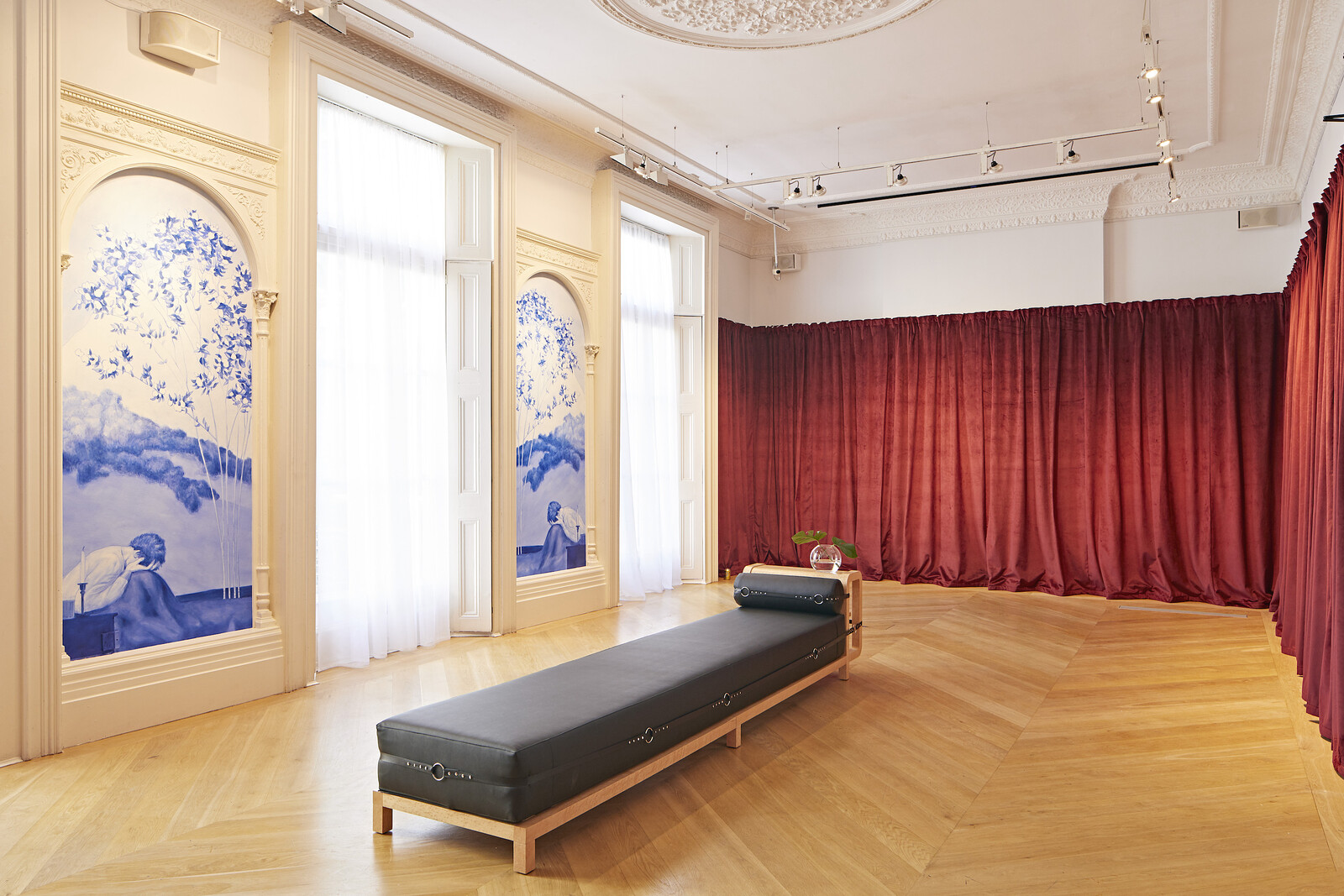
Mahmoud Khaled has in recent years taken the house museum—a space dedicated to the legacy of the person (real or invented) who lived there—as his medium. Beginning with “Proposal for a House Museum of an Unknown Crying Man” at the 15th Istanbul Biennial in 2017, Khaled has used these imagined sets to explore the violence and power of memorialization. In his first UK solo exhibition at The Mosaic Rooms, “Fantasies on a Found Phone, Dedicated to the Man Who Lost it,” the Berlin-based, Egyptian artist transforms the gallery space into a domestic setting. This immersive environment—featuring murals, sculpture, photography, a sound piece, and an artist’s book—imagines the life of the anonymous owner of a misplaced phone in order to commemorate it. This project builds on Khaled’s continued interest in museums and archives as apparatuses of history-telling that can be reappropriated to document and celebrate marginalized queer lives. His work examines the tension between the public and the private, as well as the relationships between identity, anonymity, and intimacy.
Dina Ramadan: Your first use of the form of the house museum memorialized a character you call the “unknown crying man.” Who was this figure?
Mahmoud Khaled: The image that started …
June 17, 2022 – Feature
Diamela Eltit’s “Custody of the Eyes”
Olivia Casa
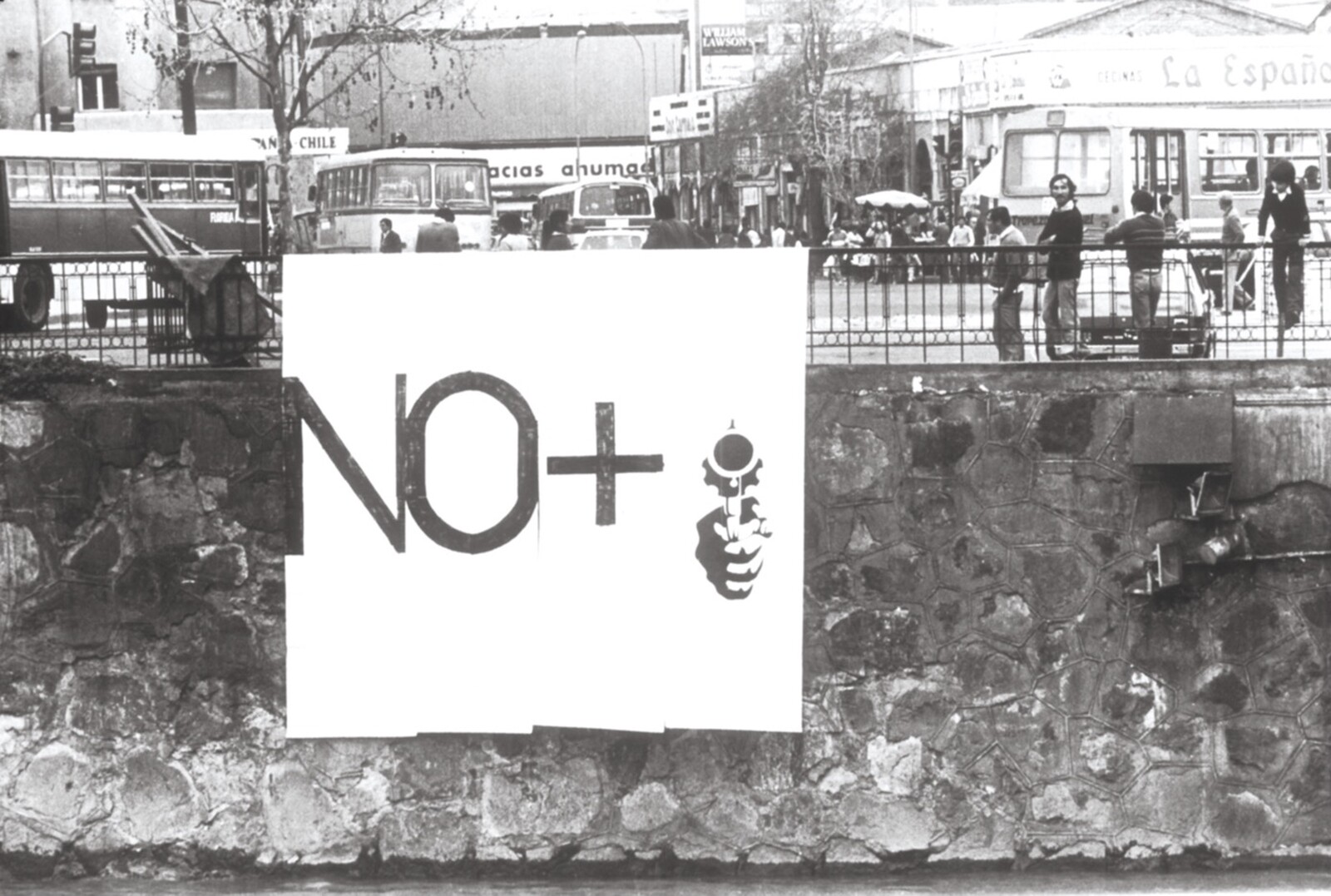
The Rearview series addresses blind spots in recent art history by returning to an influential exhibition, artwork, or text from the past and reflecting on its relevance to the present. In this edition, Olivia Casa takes a new translation of Diamela Eltit’s Los vigilantes (1994) as an opportunity to highlight her pioneering artistic activism.
Diamela Eltit was a key member of the Escena de Avanzada, a group of Chilean artists and writers who denounced Augusto Pinochet’s military dictatorship in the aftermath of the 1973 US-backed coup that overthrew Salvador Allende. Varying in their approaches, they were united in their search for experimental strategies that would confront the regime’s policies and discourse—an aim epitomized by Colectivo Acciones de Arte (CADA), of which Eltit was a founding member.
The reissue of Eltit’s 1994 novel Los vigilantes, published in English as Custody of the Eyes, offers an opportunity to consider the relevance of the Escena de Avanzada to contemporary debates about art’s discursive strategies under repression. An epistolary novel narrated through a series of desperate letters dispatched by “Mama,” or Margarita, from a dystopian, authoritarian city, it leads us through a series of increasingly sinister events in which citizens are turned against one …
May 31, 2022 – Feature
Karen Archey’s After Institutions
Ben Eastham

The question of whether and how contemporary art can contribute to the reform of society is, let’s say, increasingly pressing. Emerging from a cancelled exhibition at the Stedelijk Museum, where Karen Archey is curator of contemporary art, this book-length essay posits a “reinvigorated” Institutional Critique as the best available means to this end. Featuring artists from Hans Haacke to A.K. Burns, the show aimed to reflect the influence on cultural production of the post-2008 economic recession and social movements including Occupy Wall Street, #MeToo, and Black Lives Matter. In articulating the ideas behind it, After Institutions makes the case for works of art that, by situating their critique in institutions ranging from healthcare to education, might meaningfully change them.
To demonstrate that this is the natural next step in the evolution of what Archey, following Andrea Fraser, calls a “methodology” rather than a movement, she divides a potted history of Institutional Critique into three “waves.” Emerging out of the overwhelmingly white and Eurocentric context of western Conceptual Art in the late 1960s, the first focused its critique on the social and economic structures supporting the art institution. In order to resist its recuperation by the market and foreground idea over …
May 20, 2022 – Feature
London Roundup
Orit Gat

In the local elections held the week before London Gallery Weekend, the residents of Westminster City Council, which covers much of central London, voted Labour into a majority for the first time since the council’s creation in 1964. The vote was partly informed by the Conservative council’s misguided decision, widely publicized in 2021, to spend six million pounds on the “Marble Arch Mound,” a twenty-five-meter-tall astroturf hill and viewing point designed to lure viewers back to the city’s busiest shopping district. It failed: many stores are still covered with for-rent signs, one of which peddled a “blank canvas for new ideas.” These are the visual and linguistic relics of the before-time: they represent old ideas of urban environments and their inhabitants’ habits, and beg the question, “What if we don’t want to return to how things were?”
At Emalin, Augustas Serapinas is displaying eight large black reliefs made of roof shingles taken from a wooden house from his home country, Lithuania. Many of these traditional architectures are now abandoned or destroyed and used for firewood. Serapinas bought one, broke it apart, charred its roof shingles, and repurposed them into monochromes that are part-painting, part-sculpture. They are heavy, loaded with their …
May 19, 2022 – Feature
“Dance Reflections”
Isobel Harbison
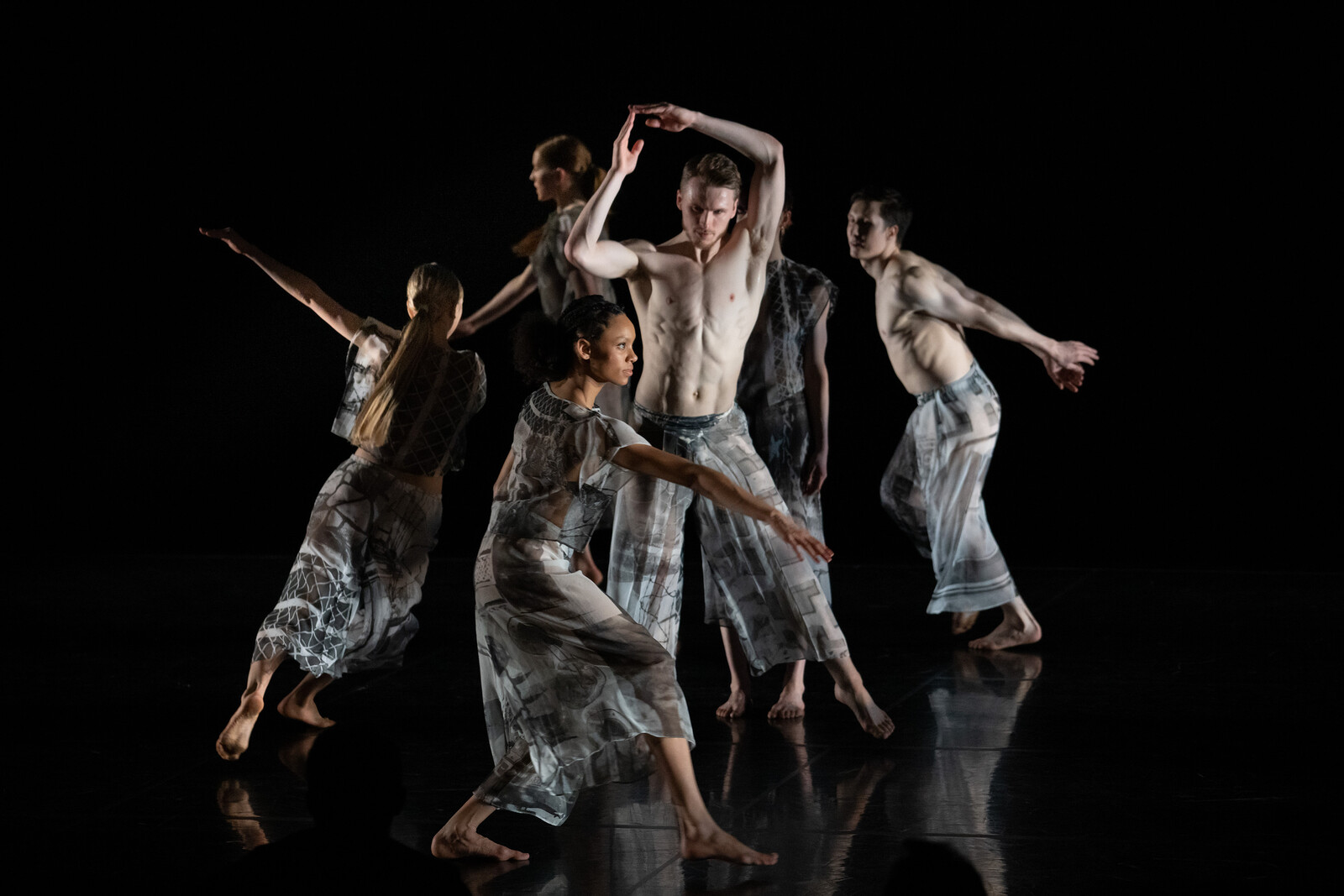
“WORKING WITH BOTH TRISHA BROWN AND LAURIE ANDERSON WILL BE ONE OF THE MOST UNIQUE THEATRICAL CHALLENGE [sic] IN MY CARREER [sic],” wrote Robert Rauschenberg prior to the production of Set and Reset (1983), in his signature uppercase. “THE EXPERTISE RELIES ON WHAT KIND OF ROOM WE MAKE FOR EACH OTHER. NO ONE COULD BE MORE CURIOUS ABOUT THIS THAN I AM.”
Set and Reset premiered at the Brooklyn Academy of Music (BAM) in the institution’s inaugural “Next Wave” festival. The collaboration between Anderson, Brown, and Rauschenberg was funded by the National Endowment for the Arts—part of a new grants program supporting the interdisciplinary artistic collaboration increasingly evident in the city—and it became a commercial and critical success. Forty years on, the work headlines “Dance Reflections,” a new international festival of contemporary dance set across London’s Tate Modern, Sadler’s Wells, and the Royal Opera House. While the first festival iteration of Set and Reset elevated avant-garde performance from the ad hoc spaces used by Brown during the 1960s and ’70s onto the grand theatrical stage, this recent one re-grounded it onto a different space altogether: the museum floor. This marks another phase in the life cycle of avant-garde dance: …
May 5, 2022 – Feature
“One long crime”
Lawrence Abu Hamdan / Skye Arundhati Thomas
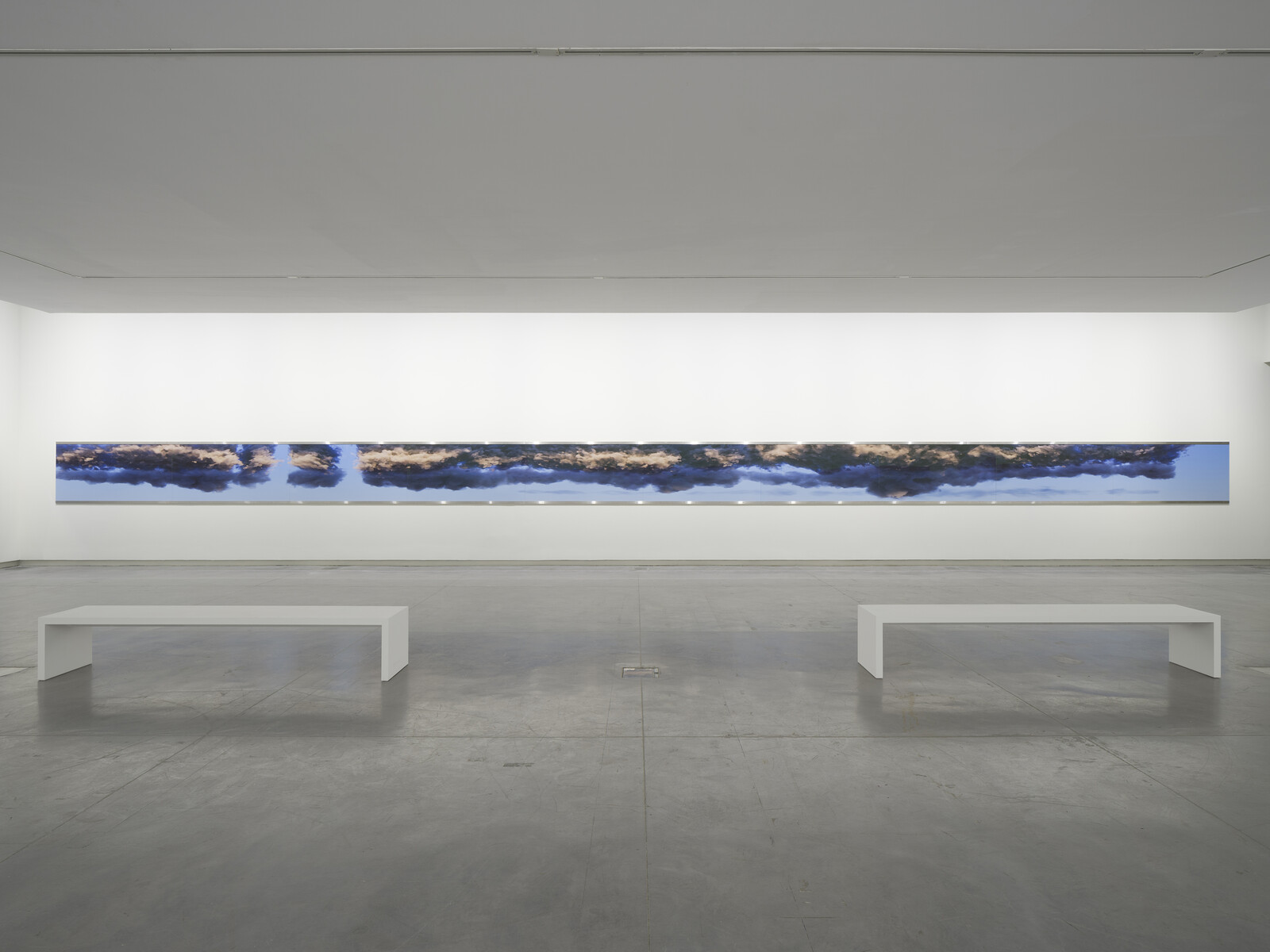
On August 4, 2020, a 2,750-ton cache of ammonium nitrate exploded at a warehouse of the main port in Beirut, Lebanon, in one of the largest non-nuclear explosions in history. An enormous toxic red cloud hung for days over the city; according to Human Rights Watch, 300,000 people were displaced by the damage, 7,000 injured, 218 killed. An official investigation is ongoing, and no clear resolutions have yet been found. The city—and country—has since been subject to long power blackouts, a collapse of healthcare infrastructure, and skyrocketed inflation. “My government did this,” reads a graffiti scrawled in black ink by the side of the port. The artist and self-styled “private ear” Lawrence Abu Hamdan, who has previously conducted sonic investigations into asylum tribunals in the UK and ballistic reports of instances of military brutality in Palestine, turned his attention to these events; judging the explosion the result of state negligence, he began to map out a longer history of governmental corruption and military occupation in the region.
On 8 March, 2022, a crowd gathered in Sharjah’s “Flying Saucer,” a Brutalist theatre shaped like a star, where Abu Hamdan presented an audiovisual essay. He circled the perimeter slowly as we …
April 29, 2022 – Feature
Erin L. Thompson’s Smashing Statues
R.H. Lossin

Amid the waves of protests against the murder of unarmed black people by the police, many more US citizens began to question the validity of statues honoring men who massacred the continent’s indigenous inhabitants, owned slaves, and otherwise profited from the suffering, exploitation, and death of mostly non-European people. Some statues were successfully pulled down by crowds, others damaged, removed under the cover of night, and placed in storage. But most of these sculptures, as Erin L. Thompson documents in her much-needed history of public monuments and social change, have been legally protected in perpetuity by state legislatures. Take for example the Confederate Memorial Carving on Stone Mountain, which is the largest bas-relief sculpture in the world and depicts the heroes of the slave South Jefferson Davis, Thomas “Stonewall” Jackson, and Robert E. Lee as they ride toward something—possibly a future in which they exercise an inordinate influence. Thompson, a specialist in art crime, has written a thoroughly researched, convincing, and readable argument for the removal of the United States’ monuments to its colonial and slave history: in doing so, her book eradicates any lingering doubts as to the wisdom of suppressing these symbolic markers of the past.
Advocates of …
April 7, 2022 – Feature
“The world is the flask”
Cosmo Sheldrake / Merlin Sheldrake

In this instalment of the “Ecological turns” series, which considers how the production and reception of new art is being informed by developments in the ecological discourse, we talk to two brothers working across these fields: the composer Cosmo Sheldrake and the biologist Merlin Sheldrake. In his best-selling book Entangled Life: How Fungi Make Our Worlds, Change Our Minds, and Shape Our Futures, Merlin presents the world from the point of view of those fungal networks that stitch it together. In doing so, he contributes to a Copernican shift in our understanding of the relationship between human “culture” and nonhuman “nature” that has consequences for how we think and make art in the age of climate crisis.
Cosmo’s music explores similarly radical shifts in perspective, producing an album composed of recordings from endangered British birds and collaborating with the American sound ecologist Bernie Krause as part of “The Great Animal Orchestra” at the Fondation Cartier in 2016. Taking for a starting point the ideas of “listening” and “decomposition” as artistic strategies, the interview was moderated by art-agenda’s editor-in-chief, Ben Eastham, and the series’ co-commissioner, Filipa Ramos.
Editors: Writing about how fungi make life on earth possible, in Entangled Life Merlin …
March 31, 2022 – Feature
Kuba Szreder’s The ABC of the projectariat
iLiana Fokianaki
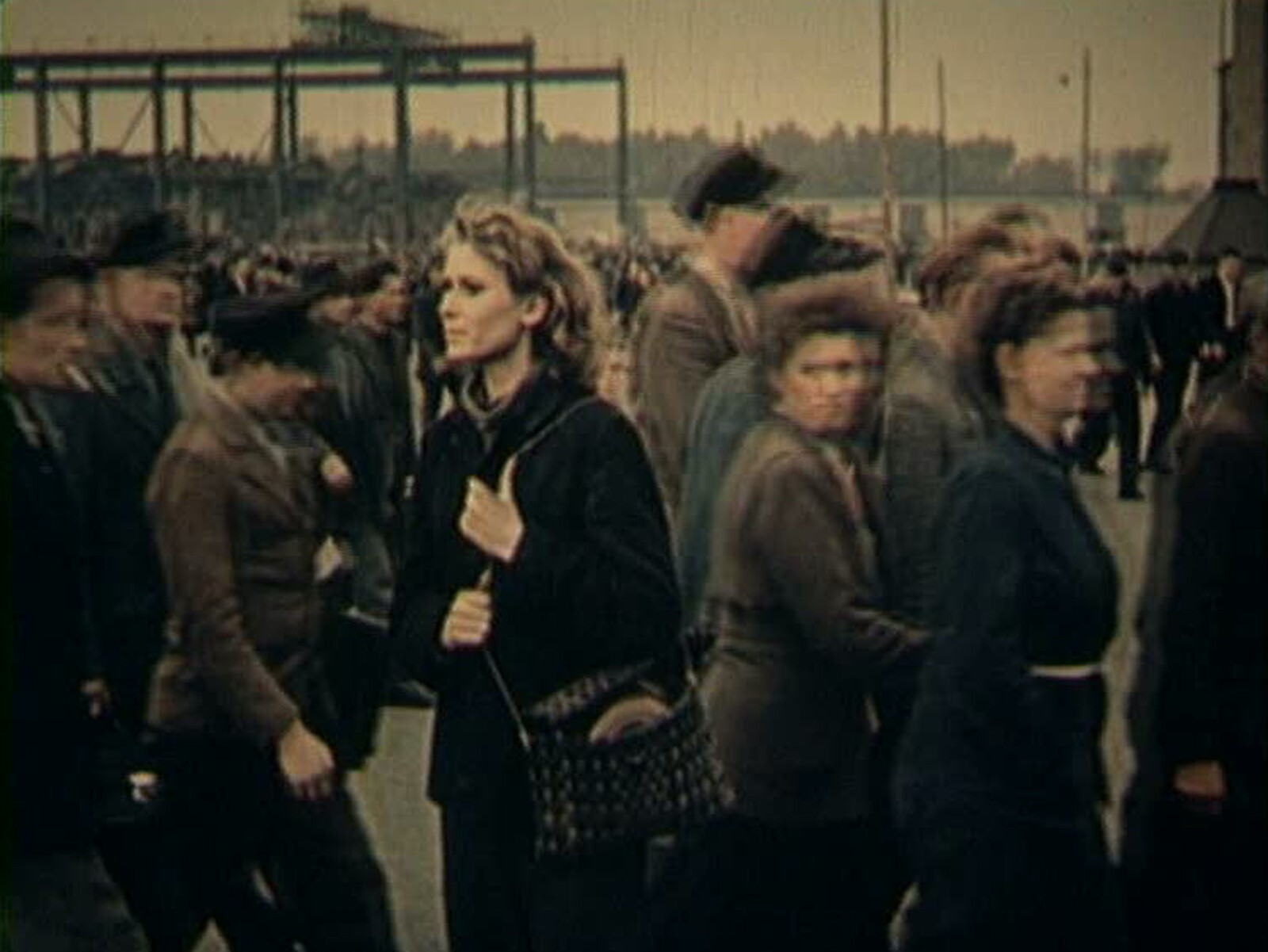
The ABC of the projectariat seems, at first glance, to be a humorous glossary of phenomena familiar to members of what Kuba Szreder names the “projectariat”: “a person who does projects in order to make a living.” Once you’ve read it, Szreder’s book—an acute account of the grim reality of working conditions within the contemporary art field—remains fun, but is no longer funny. Through sixty-six alphabetically ordered entries, the academic and independent curator offers an introduction to the work ecologies of the less glamorous subsection of the industry: a stressful life of pitching projects, managing painstakingly attained cultural capital, and the stress of making ends meet, given the fluctation in one’s monthly earnings, while traveling constantly via early-morning flights on budget airlines.
The book contains all the classic terms of the labor movement: C, for example, is for “Capital,” “Circulation,” “Curatorial Mode of Production,” and “Control.” More surprising entries like “Cynicism and Cliques,” “Time Machines,” and “Trawling” offer a fresh perspective on the bleaker aspects of our professional realm. D is for the dark side, or “Dark Matter,” referencing Gregory Sholette’s 2010 book which draws parallels between the invisible physical phenomenon that connects the universe and the unseen exploitation of …
March 2, 2022 – Feature
Zach Blas’s “Unknown Ideals”
Kevin Brazil

Unknown Ideals collects a range of texts written by the artist and educator Zach Blas since 2008: essays, a screenplay, poems, and the hallucinatory monologue of a mannequin getting fucked by a suction gun. These writings, and a selection of installation shots and stills from the exhibited works which prompted them, are interspersed with critical responses by theorists and art historians such as Alexander R. Galloway and Pamela M. Lee, as well as an interview conducted with curator Övül Ö. Durmuşoğlu. The book is far from a collected works: writing is central to Blas’s practice, and he has published a long bibliography of academic writings on film, queer theory, and digital media. Yet beyond being a simple miscellany, it serves as an introduction to the distinctive imaginary world which has animated the artist’s work in film, digital media, installation, and sculpture.
The opening text, “Unknown Ideals,” offers a panorama of that world: California, the site of the contemporary “informatic means of production.” Blas’s California—perhaps like every California—is fantasy. A landscape, retro and futuristic at the same time, of Disneyland, meditation retreats, and Silicon Valley; inhabited by The Doors and Jack Dorsey, but dominated by Ayn Rand, whose 1943 novel The Fountainhead …
February 22, 2022 – Feature
On Hybridity
Daisy Hildyard
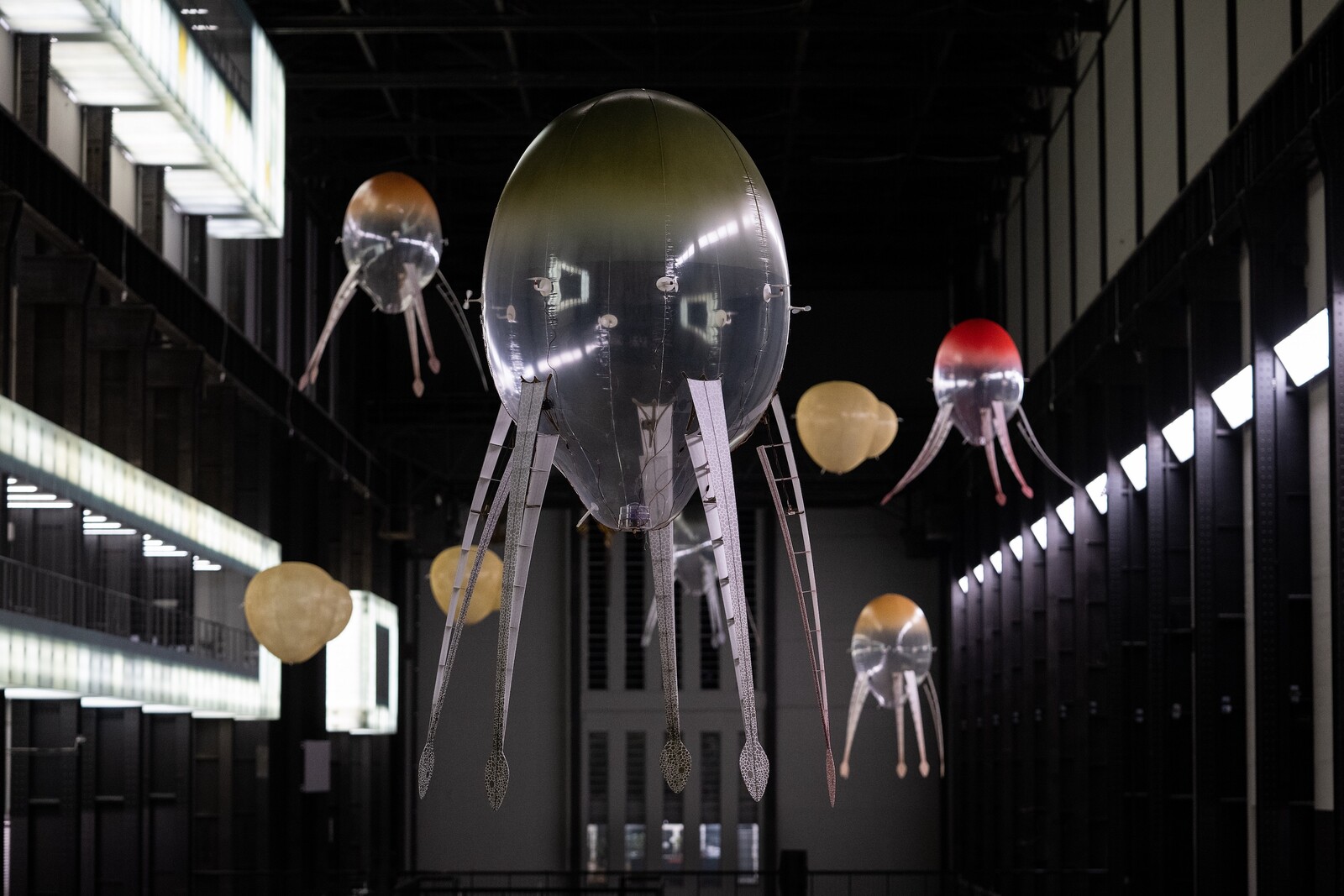
“Ecological turns” is a series in which writers from different fields of the ecological discourse consider new ways of making and responding to art. In this instalment of the program, which is co-commissioned with Filipa Ramos, the novelist and historian of science Daisy Hildyard reflects on the work of Anicka Yi.
I recently came across a poem that I found unsettling. I was reading Oli Hazzard’s Blotter and the voice appealed to me: it spoke in a direct way but the course of speech kept changing. There were images of sprouting seeds, cherry brandy, people kissing and whispering, Ukrainian coal imports, wandering deer. There was something that felt right about this jumbled reality, and something vulnerably human in the intimate experiences it alluded to: lips burned on hot tea, the fear of the dark wood, drowsiness, the pleasure of reading aloud. This is how the world feels, I thought. And then I read the book’s blurb, which explained that the lines I had found so characterful were generated by a Russian spambot. This was a speaker who could not grow drowsy, or burn its lips on tea.
My response to the poem, no doubt, says something about my own emotional intelligence—but more …
February 10, 2022 – Feature
Entering the Labyrinth: on Walid Raad’s “Two Drops per Heartbeat”
Julieta Aranda / Regine Basha
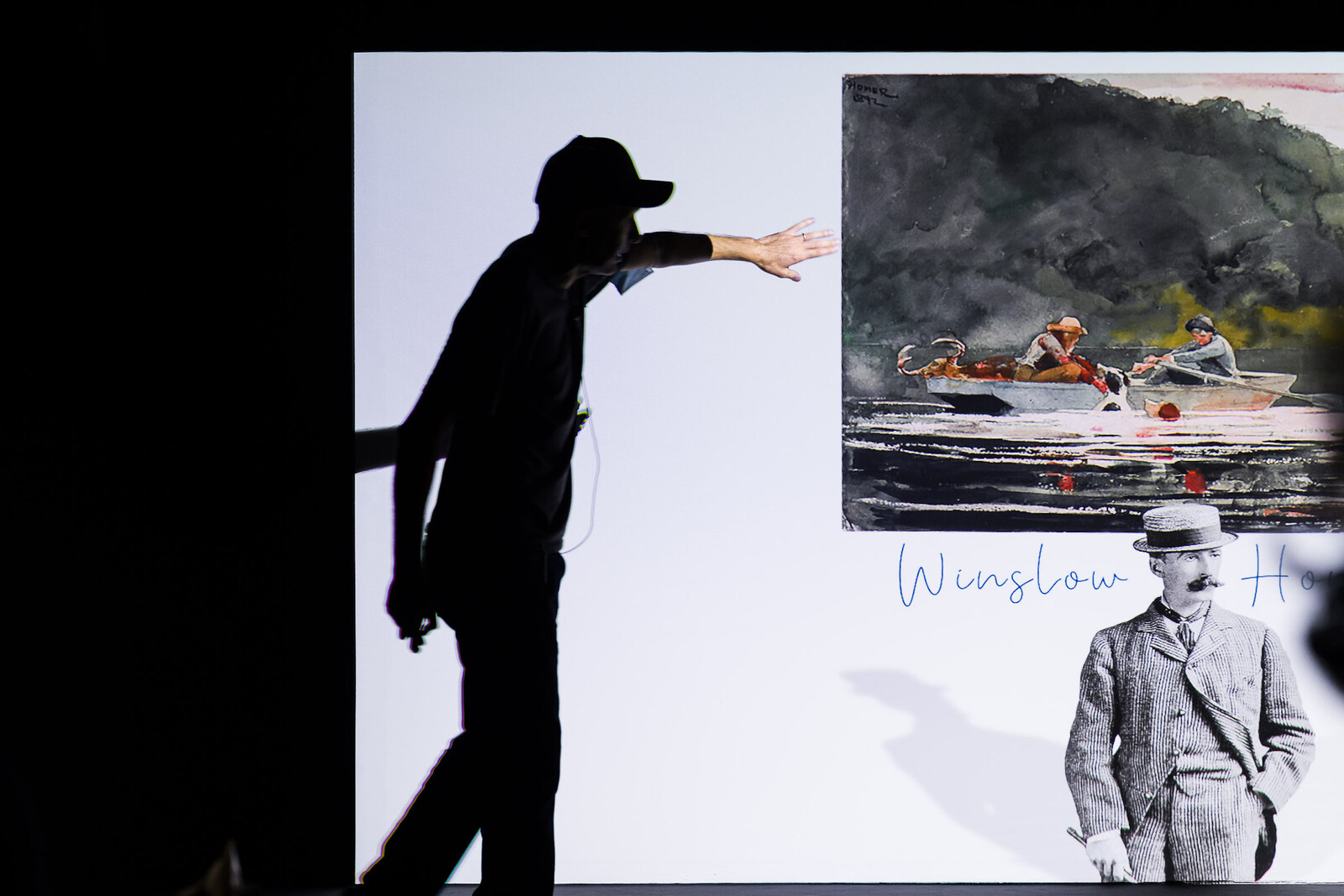
It was in 2007, in the setting of e-flux’s “United Nations Plaza” in Berlin, that we first met Walid Raad and Jalal Toufic, who were working as mentors at the alternative school. We learned then how they conspired (or co-inspired) together, with Toufic’s texts such as “Vampires” (2003) and “The Withdrawal of Tradition against a Surpassing Disaster” (1996) complementing Raad’s construction of cultural histories under the guise of the fictional preservation foundation The Atlas Group.
So when we learned that TBA21 Thyssen-Bornemisza Art Contemporary had commissioned Raad to create a new project around the history of the Thyssen-Bornemisza collection, we were naturally eager to see it. Having sharpened the methods and approaches pioneered with Toufic, Raad has produced a highly elaborate narrative intervention into the museum’s past. Titled “Cotton Under My Feet,” this investigation was paired with a 92-minute performative tour of the museum in the company of the artist called “Two Drops Per Heartbeat,” which took place a total of 67 times in the course of the show’s run.
The intervention focused, according to the show’s curator Daniela Zyman, on the events and documents around the sale, transfer, display, storage, and conditions of a collection that became one of …
January 28, 2022 – Feature
Jordan Stein’s Rip Tales: Jay DeFeo’s Estocada & Other Pieces
Chris Murtha

In November 1965 Jay DeFeo was evicted from her home and studio at 2322 Fillmore Street in San Francisco, the epicenter of a vibrant community of Beat-adjacent artists, writers, and musicians. In a now-famous story, the artist hired a moving company to box up and haul off her massive painting, The Rose, which she had labored over since 1958. Eleven feet tall, nearly a foot thick with sculpted oil paint, wooden armatures, and earlier drafts, and weighing 1,800 pounds, The Rose had to be hoisted out of her second-floor window.
When DeFeo vacated the apartment the following day, she left behind another work in progress—a comparatively slight painting, in oil on paper, stapled directly to the wall. The artist was only able to salvage a few roughly torn fragments from the scarred and stuccoed surface of Estocada, as the piece was titled (after a matador’s final murderous blow). Though The Rose spent decades languishing in storage and was only exhibited twice during the artist’s lifetime, the painting and its legend have come to define DeFeo’s career. Estocada’s story, on the other hand, has remained untold. But how does one write the story of an artwork that never really existed, unfinished …
January 27, 2022 – Feature
Web 3.0
Ma’an Abu Taleb
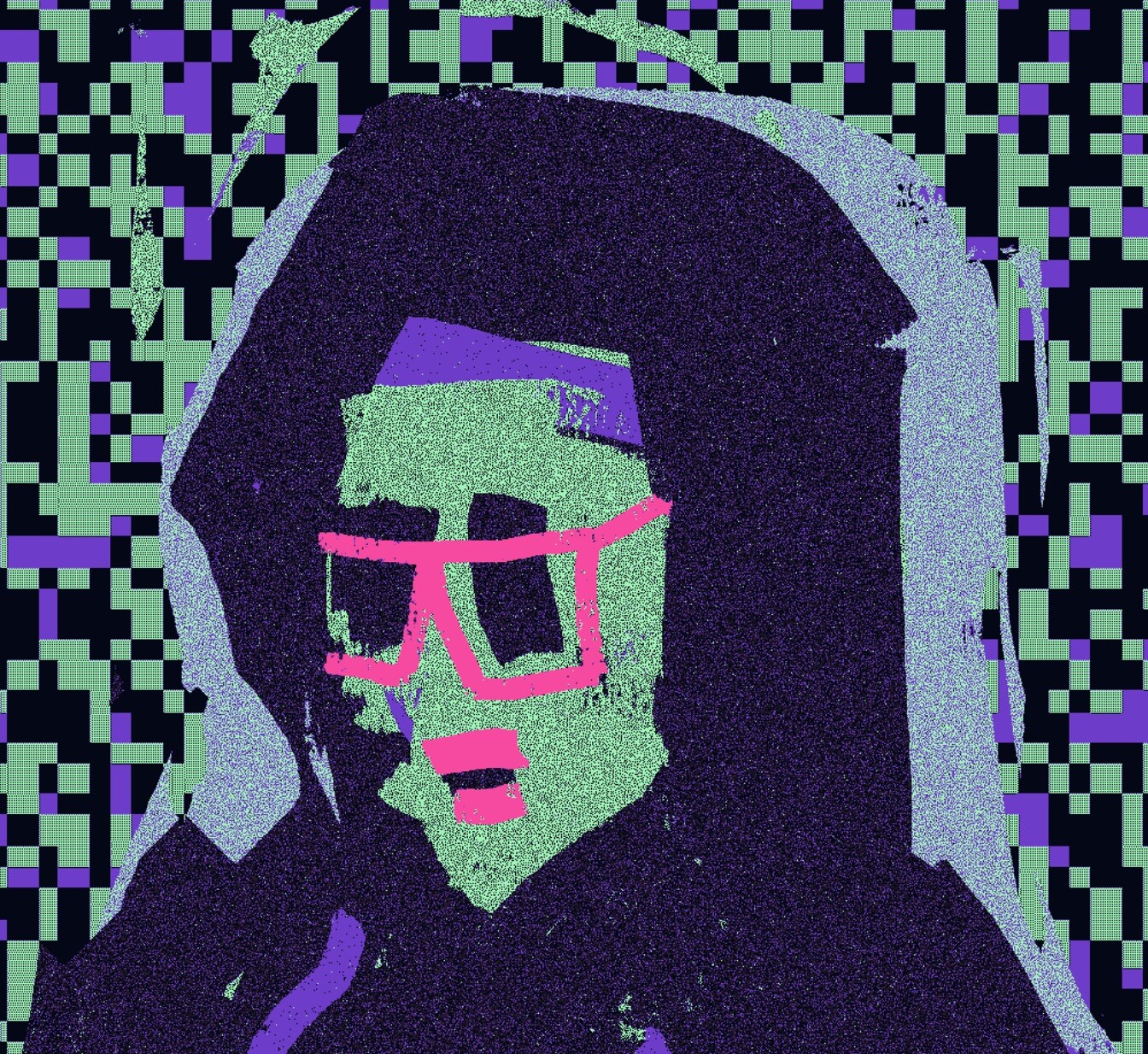
This is Clearly Money Laundering is a work of art by XCOPY which last sold on April 17, 2021 for 180 Eth, or $436,419.69 at time of purchase. Other works by the artist have sold for millions. NFTs, the tokens that situate these artworks on the blockchain where they are stored, were once referred to as deeds. They could one day be used for passports. The exorbitant prices these NFTs command, and their entanglement in controversy regarding the environmental impact of blockchains, mean that the actual images are often overlooked. Let’s assume that crypto is indeed a scam, and that it is bad for the environment. This, in itself, doesn’t invalidate the art.
When I first came across XCOPY’s work, my opinion wasn’t prejudiced by the above concerns. Still, I hated the art. I found it jarring and obnoxious, obscene even. It felt like it was made to annoy me. My dislike intensified the more it kept showing up as I tried to discover this new digital world. To be fair, much of what was happening at the time was unsettling to me. I had been a smug luddite until 2019, when I finally gave up my Nokia and got a …
January 25, 2022 – Feature
“Ecological turns”
Filipa Ramos / The Editors
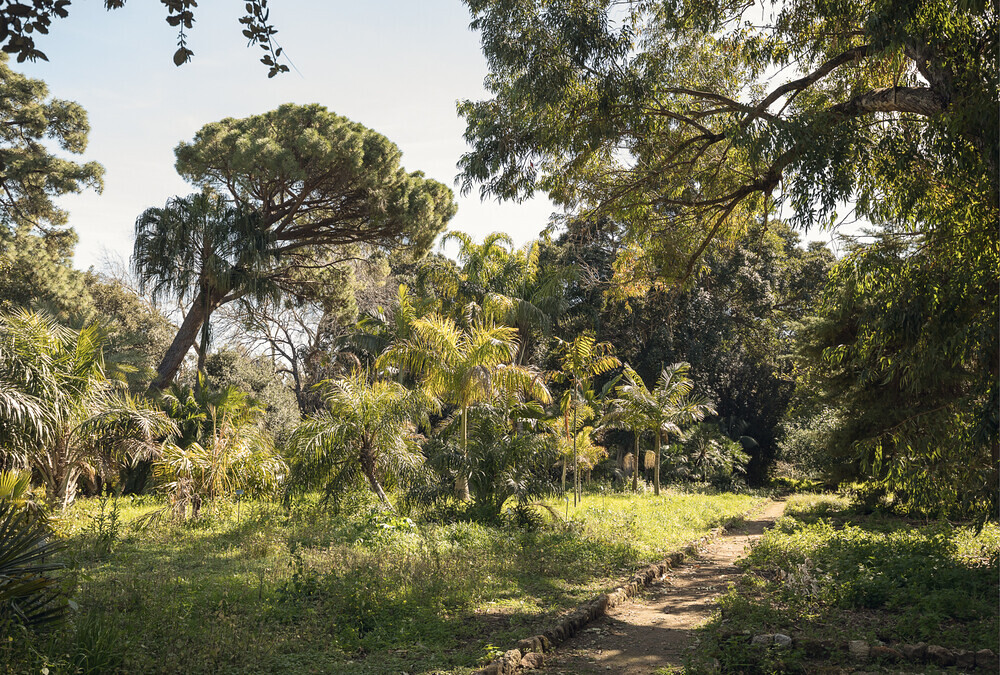
Among the functions of a critical publication is constantly to refresh the language that supports contemporary art. Not to reduce art and its transformations to words, but to make it possible for diverse audiences to conceptualize, experience, and discuss it; not to tie work to terminologies, but to liberate it from obsolete categories.
In conversations at the turn of the year Julieta Aranda suggested a series revolving around the various “ecological turns” in contemporary art of recent years. So, with the above in mind, we approached Filipa Ramos, a previous editor-in-chief and a passionate investigator of what “nature” means, to help us convene a thread of texts by authors working in different fields of the ecological discourse. In each case they will be invited to consider their knowledge in relation to the work being made and displayed today.
This relationship is not new, of course. Artists have always looked for new ways to experience, represent, and engage with “nature.” Yet even the scare quotes we feel obliged to add to the previous sentence speak to how dramatically perspectives have changed in recent decades, and how much this has transformed the way we speak about, more scare quotes, “culture.” As the …
January 21, 2022 – Feature
“Stories create more stories”
Marta Dziewańska

Meta is a collaboration between art-agenda and TextWork, editorial platform of the Fondation Pernod Ricard, which reflects on the relationship between artists and writers. In the latest addition to the series, Marta Dziewańska considers her work with Jagna Ciuchta in the context of storytelling and exchange.
“Storytelling,” wrote Hannah Arendt, “reveals meaning without committing the error of defining it.” In her essay on the writer Isak Dinesen, she opposes storytelling to conceptual thought. Storytelling, she argues, “recollects and ponders” rather than putting forth a notion of truth as revelation. In my writing and curating, I try to do the same. I’m not interested in describing, defining, or explaining; in hiding behind the artist, or disguising myself as some omniscient sage. On the contrary, I see my work as storytelling. First, I need to understand the artist’s language, and then think of my reaction to it: propose my own story.
This was the case in my text devoted to the work of Jagna Ciuchta. I was not familiar with her work, knew little about her artistic language, and the pandemic prevented me from meeting her in person. We saw each other a couple of times online and I was sent catalogues, …
December 22, 2021 – Feature
Looking back and leaping forth
The Editors
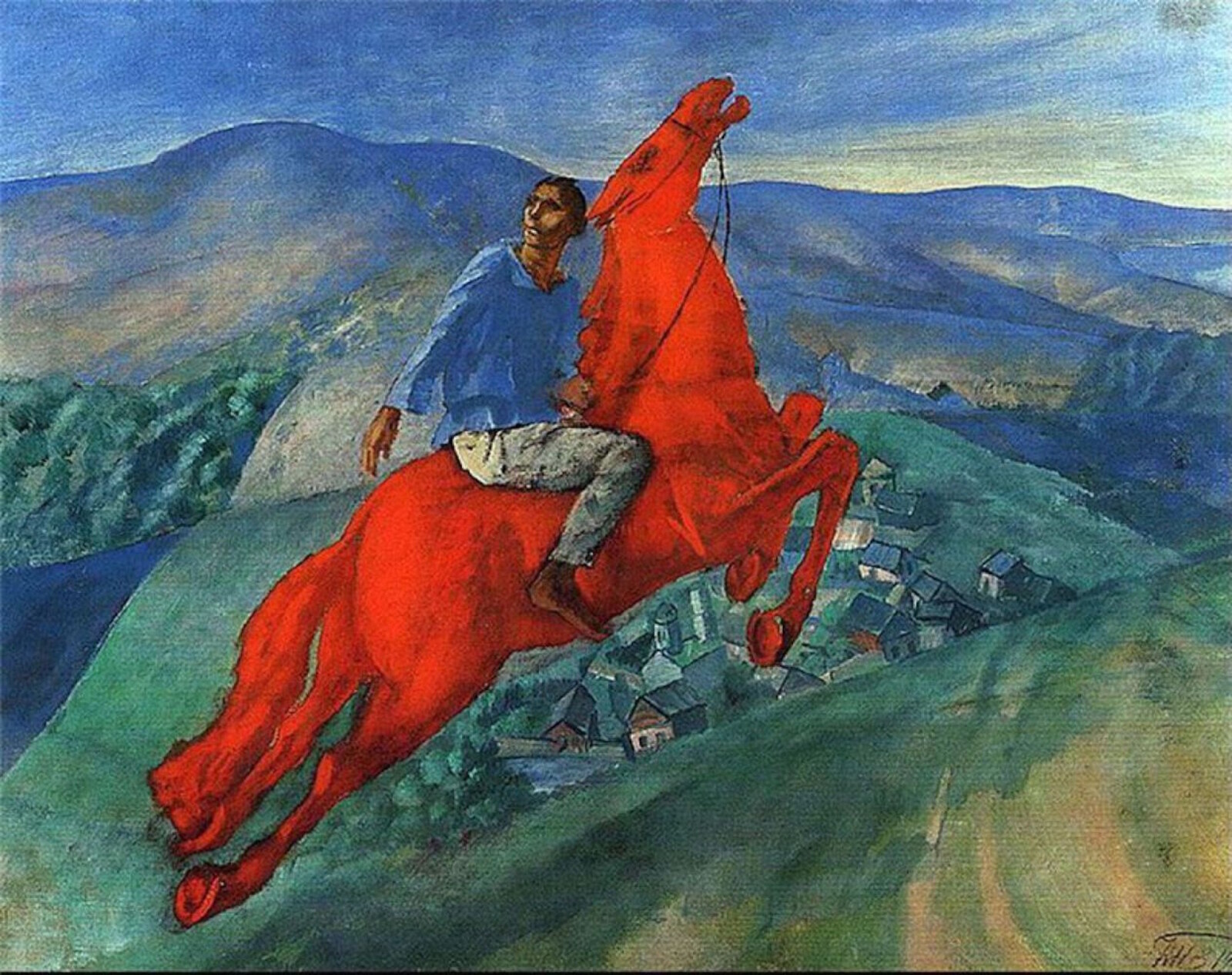
This time last year, we asked our contributors for a few festive sentences not on the shows they’d most enjoyed over the past twelve months, but the ones they would most have liked to have seen but couldn’t, for reasons ranging from gallery closures to travel bans to citywide lockdowns to periods of self-isolation. To reflect on 2021, we’ve returned—with tentative optimism—to the more conventional format. Our writers from around the world pick the best shows they did manage to see over the past year, whether these were retrospectives in established institutions or group shows in nimble pop-up venues, immersive installations in back gardens or video works shown on LED screens in the middle of fields, curated in well-ventilated gallery spaces or broadcast via Zoom. The best exhibitions, Jonathan Griffin suggests, are “the ones that surprise you, change your mind.” We hope this can also describe our program of criticism, which will recommence on January 3. The Editors
Julieta Aranda
The pressures of motherhood during a pandemic meant that I was unable to take up the invitation to participate in “Maternar.” But I have been thinking ever since about the necessity of exhibitions that present and represent the complexity and autonomy …
December 10, 2021 – Feature
Vienna Art Week, “Losing Control”
Novuyo Moyo
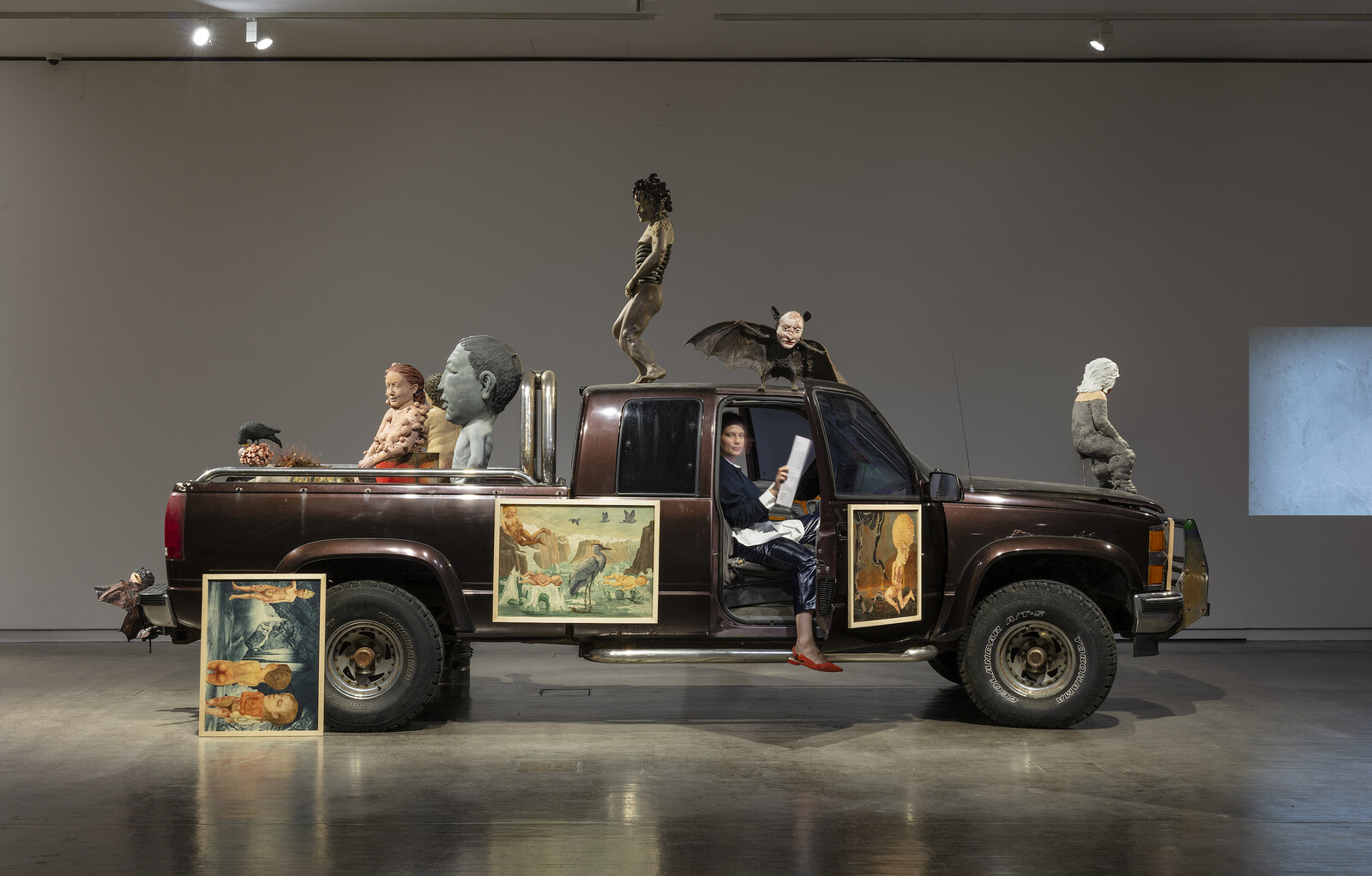
The group exhibition “House of Losing Control” gave this year’s Vienna Art Week a theme that proved fateful: just ten days after its conclusion, the Austrian capital went into lockdown after having failed to control the latest wave of Covid-19 cases. The opening night of the show featured installations, performances, and artworks dotted throughout a sprawling building complex in the north of the city that once housed an auto workshop, a club and, we were told, a brothel. All these institutions were functional until very recently; their abandonment is emblematic of the precarity that the latest lockdown (made necessary by the low vaccination uptake in the country) will amplify.
That context of economic decline and ecological disaster made the former auto shop a fitting location for Ernst Logar’s intensely researched works on the damaging effects of the petrochemicals industry. ÖLPEST (2021) unfolded in two parts: a large banner mounted onto the wall on which different translations for “oil spill” were written in crude oil, then on the floor a transparent hose contorted into various formations by the oil being pumped through it. The multilingual work—designed for an international audience—invites us to understand our collective responsibility for this type of disaster …
December 9, 2021 – Feature
Glomming, Cottoning
Nick Currie

Meta is a collaboration between art-agenda and TextWork, editorial platform of the Fondation Pernod Ricard, which reflects on the relationship between artists and writers. Here, Nick Currie discusses annotation, marginality, and piles of unread books in relation to his essay on Anne Bourse.
1. “I like to annotate,” Isaac Asimov told David Letterman in 1980. “The Bible, Shakespeare, various things. You simply copy down all the verses in The Bible and you make little footnotes and say whatever you please about each one. If you do it right the annotations are longer than the thing you’re annotating.” Nine years later Tim Berners-Lee invented the web, and soon annotation became something we all do pretty much all the time.
2. The annotation Asimov described resembles what generations of rabbis did with the Torah, calling the result the Talmud. Whereas the Torah is a fixed document of around 80,000 words, the Talmud is a massive accretion of debates, decisions, and commentaries—a huge nacreous encrustation built up around the original text over the course of many centuries. In his book Nothing Sacred: The Truth About Judaism (2003), Douglas Rushkoff suggests that early Judaism was comparable to open source software, but that the …
December 3, 2021 – Feature
Lost futures: on the work of Nam June Paik
Anna Mirzayan

Earlier this year, I returned to my home state for the first time since the pandemic began. The San Francisco Museum of Modern Art (SFMOMA) was hosting Nam June Paik’s first retrospective on the West Coast and, under the California sun, the Korean-American artist’s works seemed to couple the beauty of modern technology with just enough irony to stave off techno-determinism. It also prompted me to reflect on Paik’s status as a prophet of the idealism I had grown up with, and to consider how his work reads today, now that the hegemony of Silicon Valley’s IT corporations has come to pass.
In Paik’s TV Buddha (1974), which opens the show, a black Buddha statue sits across from a white television set, behind which looms a video camera. The closed-circuit camera, of the kind that Paik often used in his work, captures both statue and passing viewers and projects them onto the TV screen. Iconic and serene, the statue’s pose is reflected in a two-dimensional circuitous feed that seems to mimic Silicon Valley’s romanticized Zen Buddhism-lite. This “Buddhism” has replaced Protestantism as a catch-all for many Bay Area-dwellers looking for a spiritual supplement to the region’s hyper-corporate culture, as …
November 30, 2021 – Feature
Brad Haylock and Megan Patty (Eds.), Art Writing in Crisis
Orit Gat
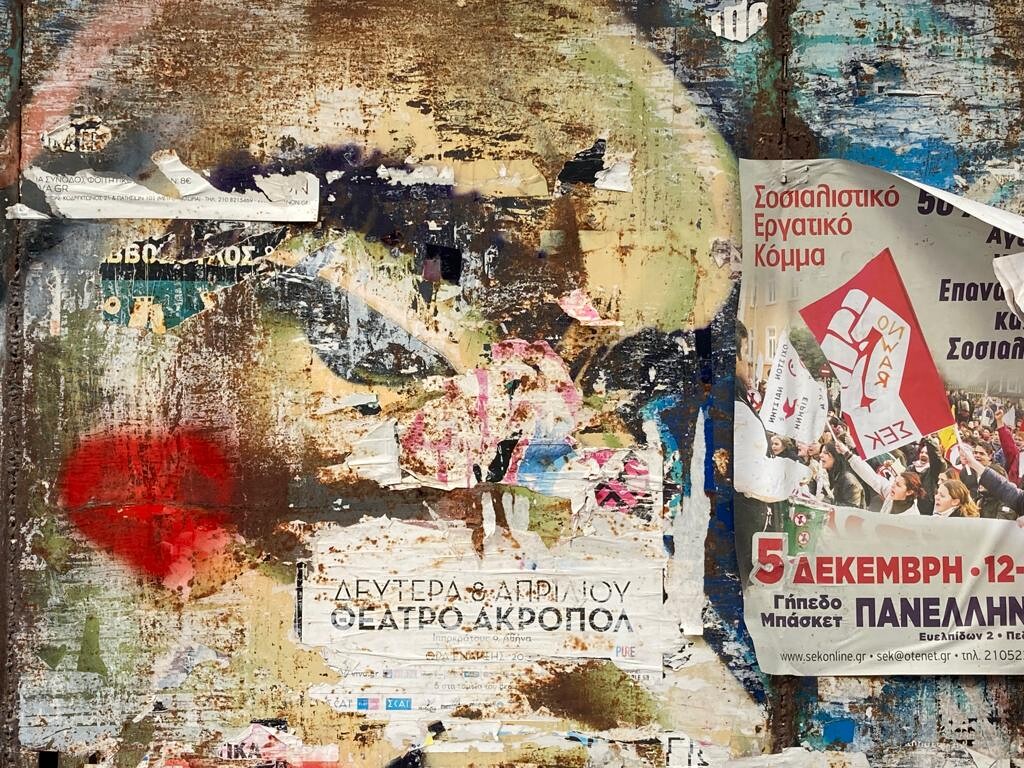
It is easier to discount the importance of things than it is to advocate for them. One would expect a book titled Art Writing in Crisis to make an argument for criticism in “times like these”—an exhausting task in which writers are cornered into justifying their practice, which may end up equating art, culture, and discourse with what is now termed “essential work.” The crisis in the title isn’t the one I initially thought it was: it’s not art criticism that is in crisis, but the world. Instead of proposing criticism as a solution to upheaval, the writers in this book are reflecting on how we work in the midst of global chaos. The theme of their essays is not the place of art criticism now; there are no solutionist ideals about the role of art in society, or claims of how crucial art and criticism are, “now more than ever.” Instead, the 22 texts are largely personal in approach but community-oriented in scope, and appended by historical surveys on art publishing and writing, making a true argument for the value of art and criticism—not to save a society in crisis, but to grow the sense of collectivity that builds …
November 22, 2021 – Feature
“Spacemaking and Soul Delay”
Sophia Al-Maria / Lydia Ourahmane
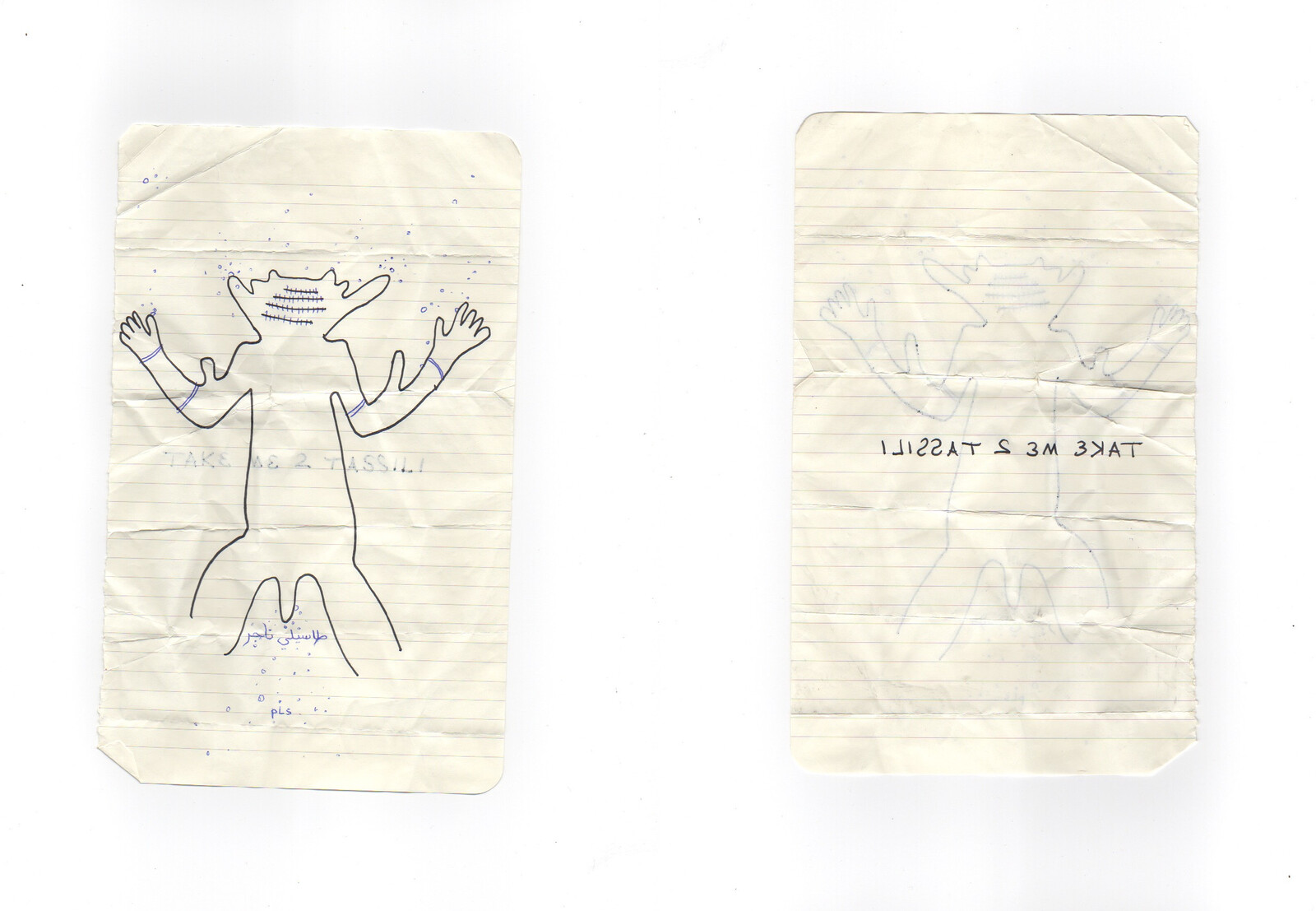
It’s been over a month since I went to Amsterdam to see Lydia Ourahmane’s “Survival in the afterlife” at de Appel, and I am still feeling the effects. On arrival, I felt a sense of having come to a place of safety after having been far from home for a long time. It was very, well, healing. The show’s starting point is the spiritual commune Ourahmane’s parents founded during the civil war in Algeria (1991–2002), so perhaps the feeling of peace that washed over me is no coincidence.
Ourahmane’s research-driven practice, which often involves sound and installation, explores questions of borders, migration, colonialism, and spirituality. The curved Aula at de Appel felt full-sail with the breath of more people than I’d been around in over a year. Shadows shifted over a vast raft of pattern-clashing mattresses that sprawled across the floor. The ambient incantation Notice the direction of fires (2021), composed by Ourahmane and collaborators Yawning Portal, was calming. Hie Tee, Lydia’s mother, sang soothingly over the speakers: “my peace, my peace, I give unto you.” I went to smoke, where Hie Tee talked to me about the importance of never turning away anyone who is in need and …
November 19, 2021 – Feature
Sophie Calle’s “The Hotel”
Cal Revely-Calder

The Rearview series addresses blind spots in recent art history by returning to an influential exhibition, artwork, or text from the past and reflecting on its relevance to the present. In this edition, Cal Revely-Calder considers a newly published edition of Sophie Calle’s The Hotel (1981) in the context of contemporary attitudes to privacy and surveillance.
How do you defend someone like this? She circulates people’s secrets, complete with photographs and notes. One time, she found an address book in the street: she rang up the names inside, asked them questions about its owner, and printed what they told her in a newspaper column, every day for a month. Another time, she got a job as a hotel maid: she removed objects from people’s luggage—underwear, medication, diaries—took pictures and wrote long captions, and published them in a book. She would follow people around without their knowledge, never mind their consent; she shadowed one couple from Paris to Venice, where she snapped them all day as they wandered around believing they were alone.
The Address Book (serialized in Libération in August 1983) was the project that got Sophie Calle denounced. The book’s owner, “Pierre D” (Pierre Baudry), returned to France that autumn; …
November 5, 2021 – Feature
“Fellow Travelers”: Nazi Art and Historical Amnesia
Jörg Heiser
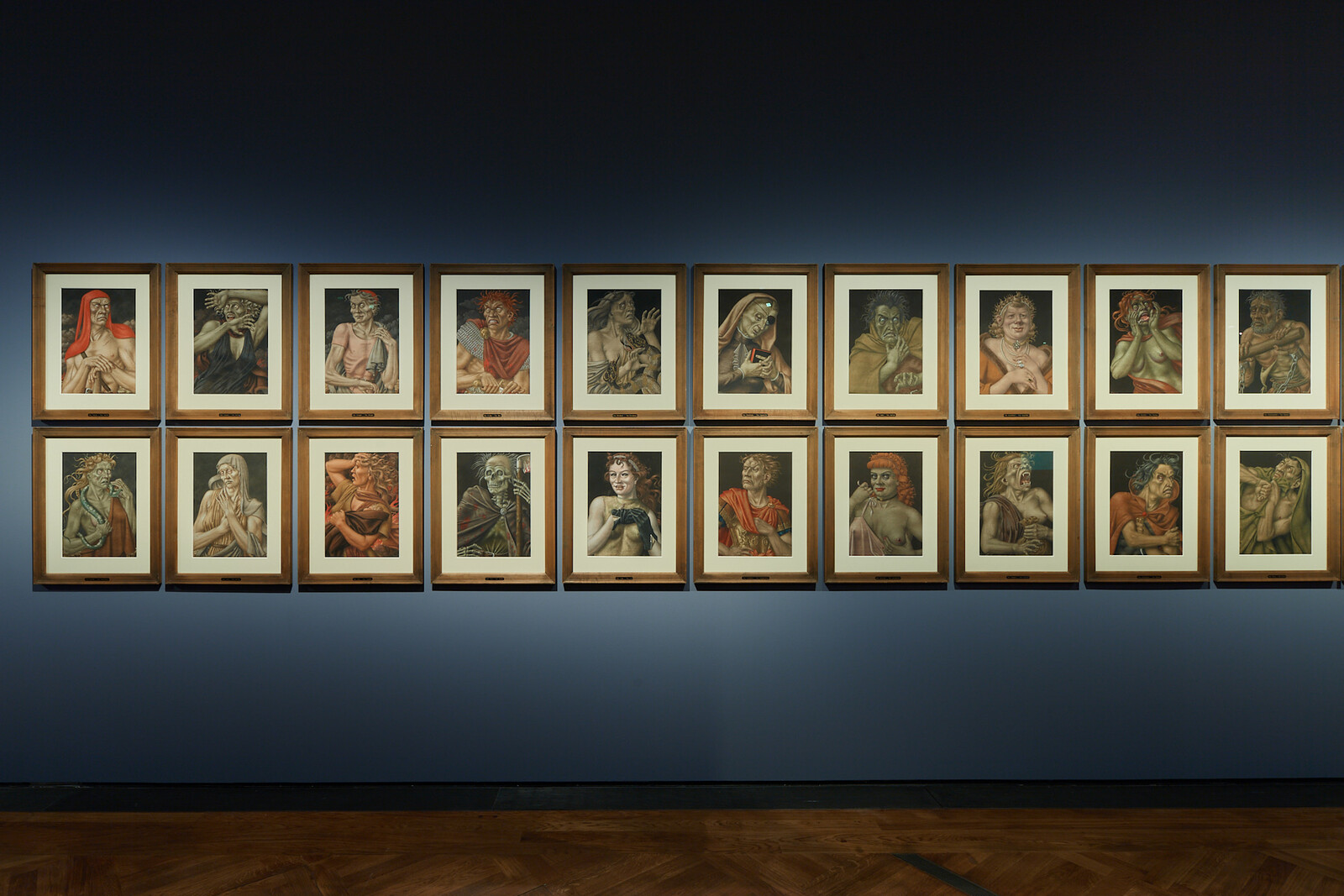
On the August day in 1944 that Charles de Gaulle headed a liberation parade through Paris, Joseph Goebbels noted in his diary: “We are drawing up a so-called ‘list of the Divinely Gifted,’ of about 300 to 400 truly outstanding artists, who will have an impact beyond their time, and who are to be exempted from frontline and labor service. These artists will be recruited from all branches of our cultural life.” The list was put together the following month, and included 114 (exclusively male) sculptors and painters. Typewritten on standard paper, the list is held in the Federal Archive of Germany in Berlin. Yet no-one had made a concerted effort to look up these names and see who among them made a career in postwar Germany, let alone make an exhibition of it, until now. The fruit of that research is “‘Divinely Gifted’: National Socialism’s Favored Artists in the Federal Republic” at the Deutsches Historisches Museum (DHM) in Berlin.
It is widely known that some Nazi artists continued their careers after the war, most famously Hitler’s favorite sculptor, Arno Breker. Declared a “fellow traveler” of the National Socialists in 1948 by an Allied de-Nazification tribunal, he continued to receive significant …
October 29, 2021 – Feature
Simone Forti’s News Animations
Ben Eastham

Simone Forti has been dancing the news for four decades. Prior to the death of her father in the early 1980s, the Fluxus artist was more likely to be found reinventing the possibilities of dance in New York or exploring the limits of consciousness in Woodstock than engaging in the quintessentially bourgeois leisure activity of reading the newspaper. Yet Forti took up the practice in homage to her father, whose careful attention to the newspapers prompted him to flee Mussolini’s Italy in 1938 with his wife and the three-year-old Simone (her uncle, a partisan, later died on the way to Auschwitz). From her reading Forti developed a series of improvisational performances that she calls “News Animations,” in which she brings a pile of newspapers onstage and, having arranged their pages into “maps” on the floor, responds with spoken word and bodily movement to what she can see. A headline might, for example, compel the artist to strike a pose which embodies contradiction or despair; she might see two unrelated stories and riff on what connects them.
This book, published to accompany an exhibition at the Centro per l’arte contemporanea Luigi Pecci in Tuscany, gathers together preparatory drawings, transcripts, and photographs …
October 28, 2021 – Feature
The dance: exhibition architecture in contemporary Russia
Alex Thyr

No other context I know places as much importance on exhibition architecture as today’s Russia. The level of ambition is very high: walls and other complex structures are built and painted, carpets are laid, walkways are constructed, and the rooms are illuminated as in a theater performance. As a visitor, or (better) experiencer, you are enveloped. It reminds me of the nineteenth-century Gesamtkunstwerk, and of Boris Groys’s famous description of Ilya Kabakov’s characteristically dense and atmospheric environments as “total installations.” But with a major difference: while the Gesamtkunstwerk and the total installation rely on affinities and correspondences between the display structure and the displayed, creating synergistic effects, the style that predominates in Russia tends to run its own race.
Exhibition architecture can certainly highlight art on its own terms and give energy to what is exhibited, but it can also make it difficult to reach art. One example of elaborate and costly design that made that connection strenuous was the Garage Museum of Contemporary Art’s “Assuming Distance: Speculations, Fakes, and Predictions in the Age of Coronacene” (March 26 – August 1) where visitors were led around an illuminated “catwalk.” This created an unfortunate contradiction between a laudable initiative—to support artists in …
October 14, 2021 – Feature
Toronto Roundup
Tess Edmonson

My tour of Toronto’s first Gallery Weekend started on a Saturday morning at Paul Petro Contemporary Art, where artist Andy Patton joined Petro in discussing a suite of new Carol Wainio paintings. In view of Wainio’s fluffy, Rococo landscapes, Patton reminded a small audience that paint is essentially “just colored glue.” A few days later, during the opening days of Greater Toronto Art 2021 (GTA), the inaugural edition of a triennial survey of Toronto artists at the Museum of Contemporary Art, I stopped in front of a Tony Romano sculpture (one element of a larger installation titled Between the Lilies and the Birds, 2021): a small, rough face rendered in ceramic. Big blue tears ornamented its right cheek, and the word “SAD” was carved into its chin. I left the museum listening to Lana Del Rey’s “Blue Banisters” (Republican music, sorry) and walked home through the very strong smell of chocolate (the museum is next to a chocolate factory). Something humbling was happening. The city was coming out of what’s been, by some measures, the longest consecutive lockdown of any major international metropolis. The exhausted, perennial questions that attend art’s relationship to event—why do this, who is it for, do …
September 30, 2021 – Feature
Cady Noland’s THE CLIP-ON METHOD
Alan Gilbert
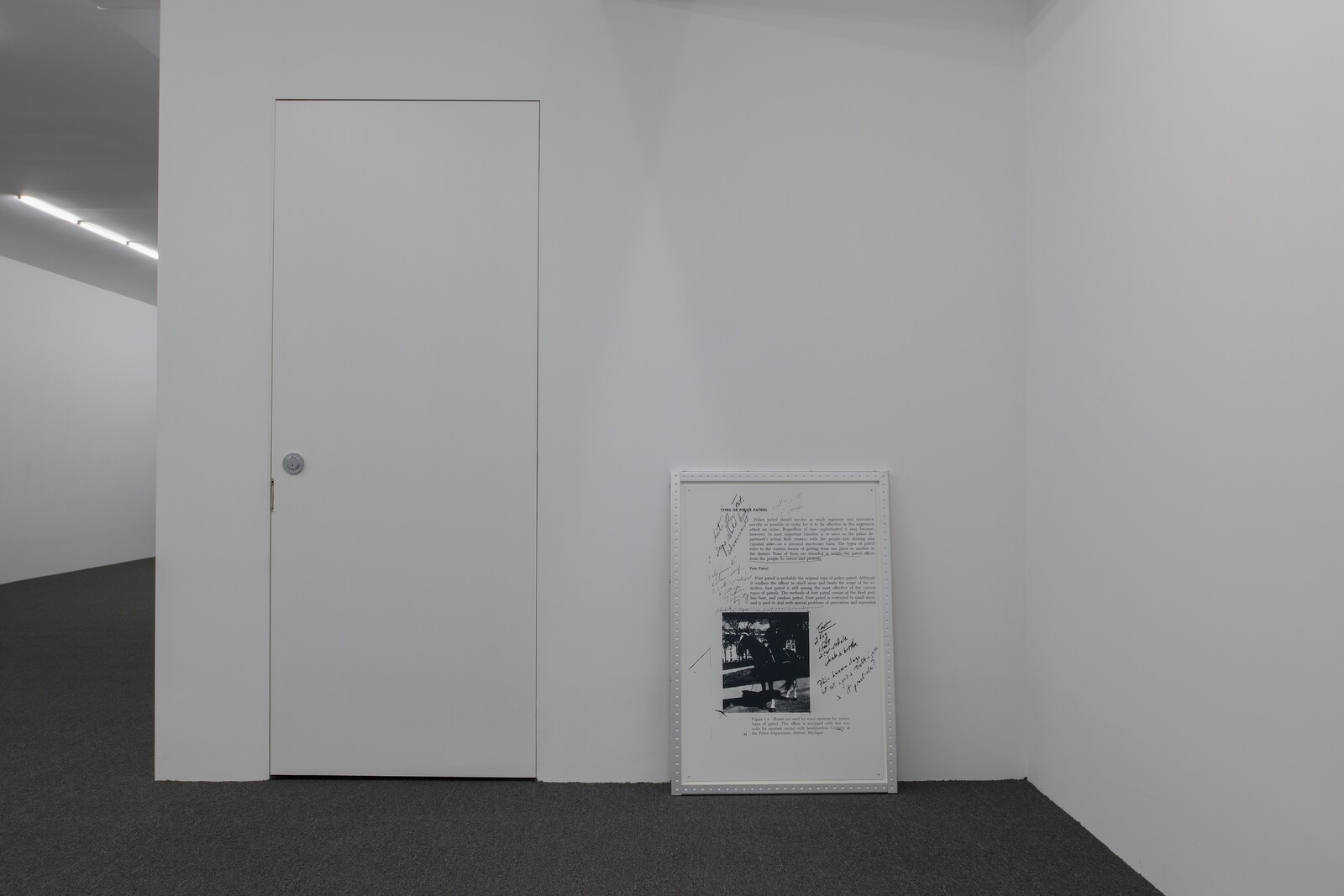
In the late 1980s, when borders were collapsing and capital was carving new channels in which to flow, Cady Noland was producing an art of blockages and impediments. She famously made walls of Budweiser beer cans and created barriers with bars, metal pipes, and sculptures resembling stockades. Where movement was signified, it took the form of heavy, clumsy metal walkers and shopping carts that vaguely resembled torture devices. A number of these pieces ominously featured the American flag during a period of US triumphalism and leaching neoliberalism following the collapse of the Soviet Union. At the same time, US prison populations, primarily nonwhite, were skyrocketing—part of what Saidiya Hartman has called the ongoing “afterlife of slavery.”
Noland’s decision to stop making art circa 2000—and her subsequent legal battles over the selling and display of her work when it has been altered or improperly conserved—might be seen as extending her engagement with obstruction and nullification. When there are more things in the world to say no to than yes, it is a sign that the reactionaries are winning. In this sense, Noland’s politics of refusal, in both art and life, feel prescient and valuable. Similarly, while there’s no doubt …
September 28, 2021 – Feature
“Writing on foot”
Fernanda Brenner

Meta is a collaboration between art-agenda and TextWork, editorial platform of the Fondation Pernod Ricard, which reflects on the relationship between artists and writers. Here, Fernanda Brenner considers how questions of intimacy, digital mediation, and “unlearning habits” influenced her response to the work of Sarah Tritz.
My old drama teacher used to tell a story about Antonin Artaud. Trapped in a taxi in a massive Paris bouchon and unable to hold himself together, Artaud stepped out of the car, jumped on top of it, and started walking over the sea of immobile vehicles shouting: “You are all mad!” The anecdote came to mind when I was asked to write about Sarah Tritz’s work. The artist and I had planned a studio visit right after I saw her outstanding exhibition at Centre D’Art Contemporain D’Ivry – Le Crédac, in Ivry Sur Seine. Cut to lockdown. Whoever didn’t reappraise the pillars of their life during that time—love, work, whereabouts, and so on—must be truly mad.
Since I was unable to meet Sarah in person, writing about her work became an exercise in pairing information gathered piecemeal over Zoom calls to the artist with my still-fresh impressions of the works I’d seen …
September 24, 2021 – Feature
Berlin Roundup
Emily McDermott

Since the beginning of last year many artists have turned inward—or at least towards their immediate surroundings. Last week, during Berlin Art Week and Gallery Weekend Berlin’s Discoveries edition, over 70 exhibitions (some long-delayed) opened in the city’s galleries, institutions, project spaces, and private collections, featuring both established and emerging artists. The themes addressed are wide-ranging, but one recurring motif is an introspection expressed in portraiture: not necessarily in the figurative sense, but in using the framework of an exhibition to present a close study of one’s own identity, of a place, of an environment.
Reflecting this idea most overtly is Alicja Kwade’s exhibition “In Abwesenheit (In Absence)” at Berlinische Galerie. Here, the artist moves away from her usual cosmic explorations of time in favor of a show that is most clearly read as a self-portrait. 314,000 sheets of pale purple paper are printed with her fully sequenced DNA, with the 0.1% of letters that differentiate her from others bolded. Many sheets line the room’s towering walls, while thousands more are encased in bronze archival boxes. Twenty-four speakers are arranged on a giant black steel ring suspended from the ceiling, projecting Kwade’s heartbeat as it rises and falls. Bronze molds …
September 16, 2021 – Feature
“The Skeptic’s Allegory”
Jacolby Satterwhite / Travis Diehl
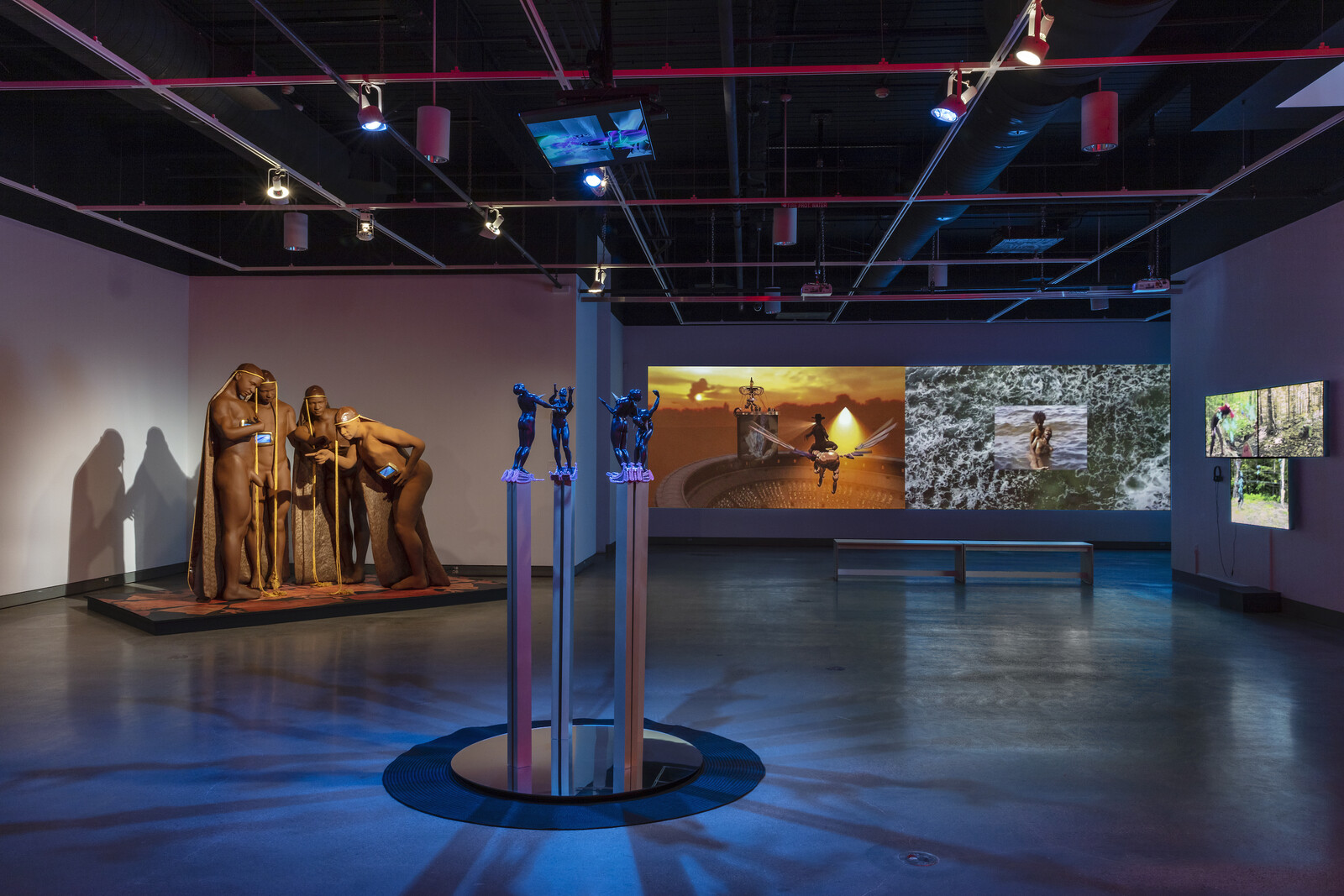
The first thing Jacolby Satterwhite showed me when I visited his apartment in Brooklyn was his painting studio. Leaning on walls and furniture and easels were a dozen canvases in various states, some based on family snapshots, others scenes from the mind-bent digital worlds for which he’s known. On the surface, it’s a wild departure from the works that made his reputation as a multidisciplinary artist: video installations, virtual environments, performances, and digital-media works, informed by queer theory, video games, and much else besides.
“Spirits Roaming on the Earth,” a decade-deep survey of Satterwhite’s work now on view at Pittsburgh’s Miller ICA, showcases videos, sculptures, and c-prints drawn from these idiosyncratic, alternative realities. They are populated by dancing sprites—many of them avatars embodied by the artist, others figures cast from clubs or pop culture—adorned with 3D tracings of his mother Patricia’s many schematics for fantastic household objects. Satterwhite’s Reifying Desire 1–6 (2014), his earliest series of video installations, weaves together light S&M, Patricia’s inventions (including a remote-controlled penis), and five gyrating figures modelled on Picasso’s Les Demoiselles d’Avignon (1907). Ropes of light flow from the characters’ hands.
Spend a moment with these videos with painting in mind, however, and …
September 10, 2021 – Feature
“When is a Painting?”
Kevin Brazil
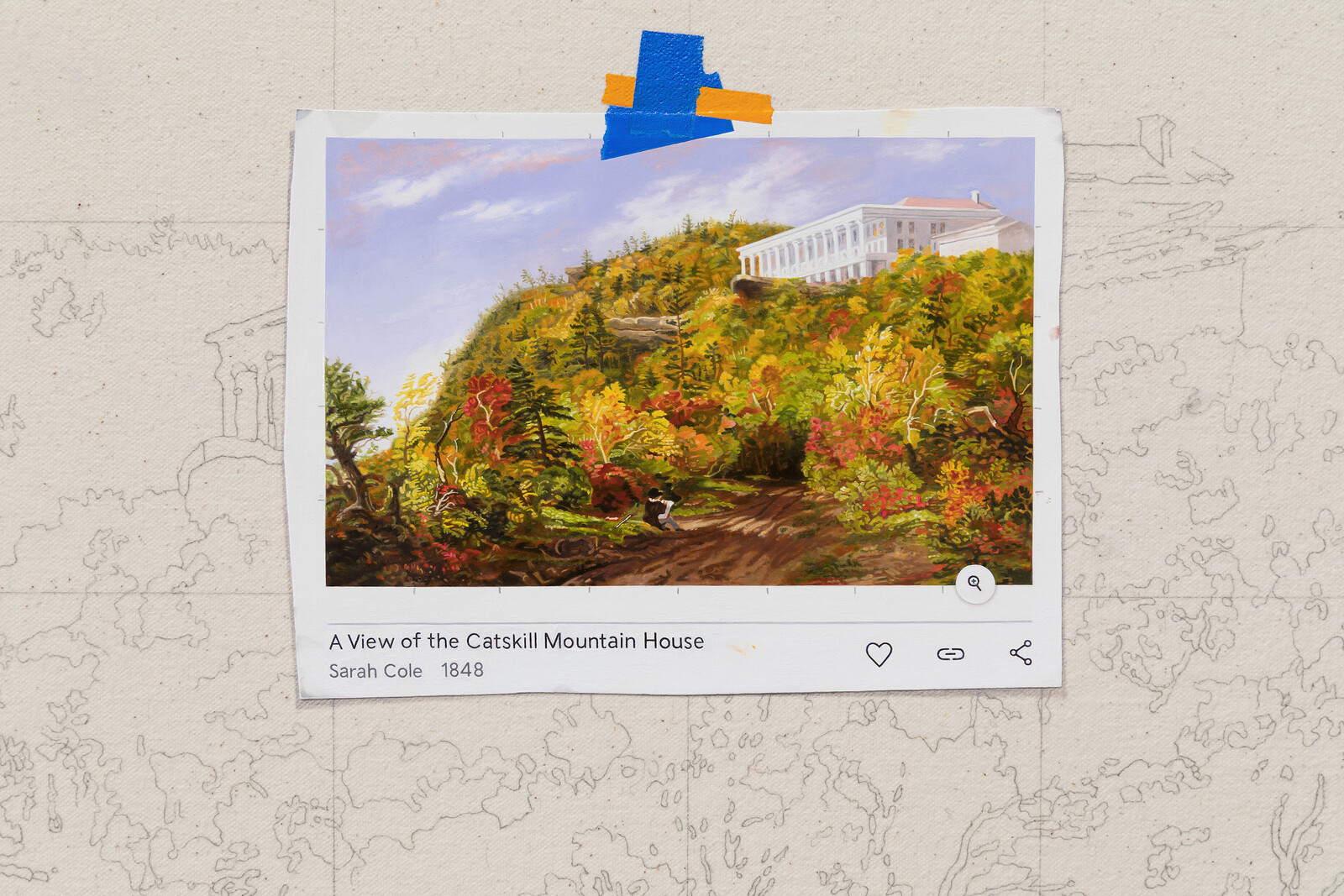
In June 2021 Urs Fischer exhibited “The Intelligence of Nature,” a group of paintings made during a year when Fischer, like many, was forced to spend more time at home than normal. After artists’ and curators’ immediate—and sometimes kneejerk—responses to the Covid-19 outbreak have passed, and as we discover the pandemic will be a permanent reality of global life for years to come, as well as a symptom of deepening ecological and economic crises, more considered art can offer us a guide to this new situation. And one thing recent painting might be able to do, as a practice for reflecting on the pressures of our new present, is give us a sense of how these interlocking crises—as Fischer’s series suggests—are shaping our experience of time. A “crisis,” after all, is a temporal phenomenon: a decisive turning point that changes our understanding of what went before, and our experience of what will come next.
In Fischer’s paintings, the background images are primarily photorealistic depictions of scenes from his house in Los Angeles, which appear to be covered in smears of paint, at times so dense they cover the whole canvas. On close inspection, however, the relationship between these …
July 29, 2021 – Feature
What we’re doing this summer

We take a short break over August. A time to catch our breath and, praise be, to see some shows. To help us and you to make the most of the summer we asked a few of our recent contributors to nominate the exhibitions that they are looking forward to seeing. Our writers are creative individuals, liable to respond creatively to any brief, and so their responses encompass shows they have recently seen and will be thinking about for weeks to come, the books they are excited to read, and everything else under the summer sun. We’ll spend the next month plotting the year ahead and publishing archive material on social media: be sure to follow us there.
Hallie Ayres
Having been away from New York for a little while, I’m excited to see “Beyond Metaphor: Women and War.” Curated by Katarzyna Falęcka, the show aims to expand the reductionist trope of women’s lives under colonialism—heroic freedom fighter or defenseless victim—by highlighting five artists who trouble the facts and fictions of the Algerian War of Independence. I’m intrigued by this understanding of the struggle, which acknowledges that a slippage between categories is critical to the messy negotiation of liberation. …
July 23, 2021 – Feature
Teju Cole’s Golden Apple of the Sun
Megan N. Liberty

During the lockdowns, Teju Cole turned to cooking. From September 28 to November 3, 2020 (the date of the US presidential election), Cole’s kitchen became his photographic subject. But instead of documenting elaborate freshly plated meals, Cole’s images show the juxtaposing edges of pots and pans, cutting boards, and dirty spoons resting on the stove. The sequence of oddly cropped images illustrates the social and global politics held in our food, cooking habits, and household items.
Best known as a novelist and essayist, Cole is also the author of photobooks including Blind Spot (2017), which drew on his Instagram practice of pairing photographs from his travels with long prose captions. But Golden Apple of the Sun departs from this format, instead presenting photographs of his countertop without adjacent texts (save the date and time stamp on the top margin of each page), sequenced with brown pages showing faded handwritten recipes reproduced from an eighteenth-century cookbook. The images and recipe pages are followed by a lengthy text without paragraph breaks, a meandering musing on Cole’s thinking behind this project, which encompasses the history and politics of the still-life genre—particularly the Dutch vanitas—and his own relationship to food and hunger.
While the essay is …
June 30, 2021 – Feature
Space Caviar (Eds.), Non-Extractive Architecture, Volume 1
George Kafka
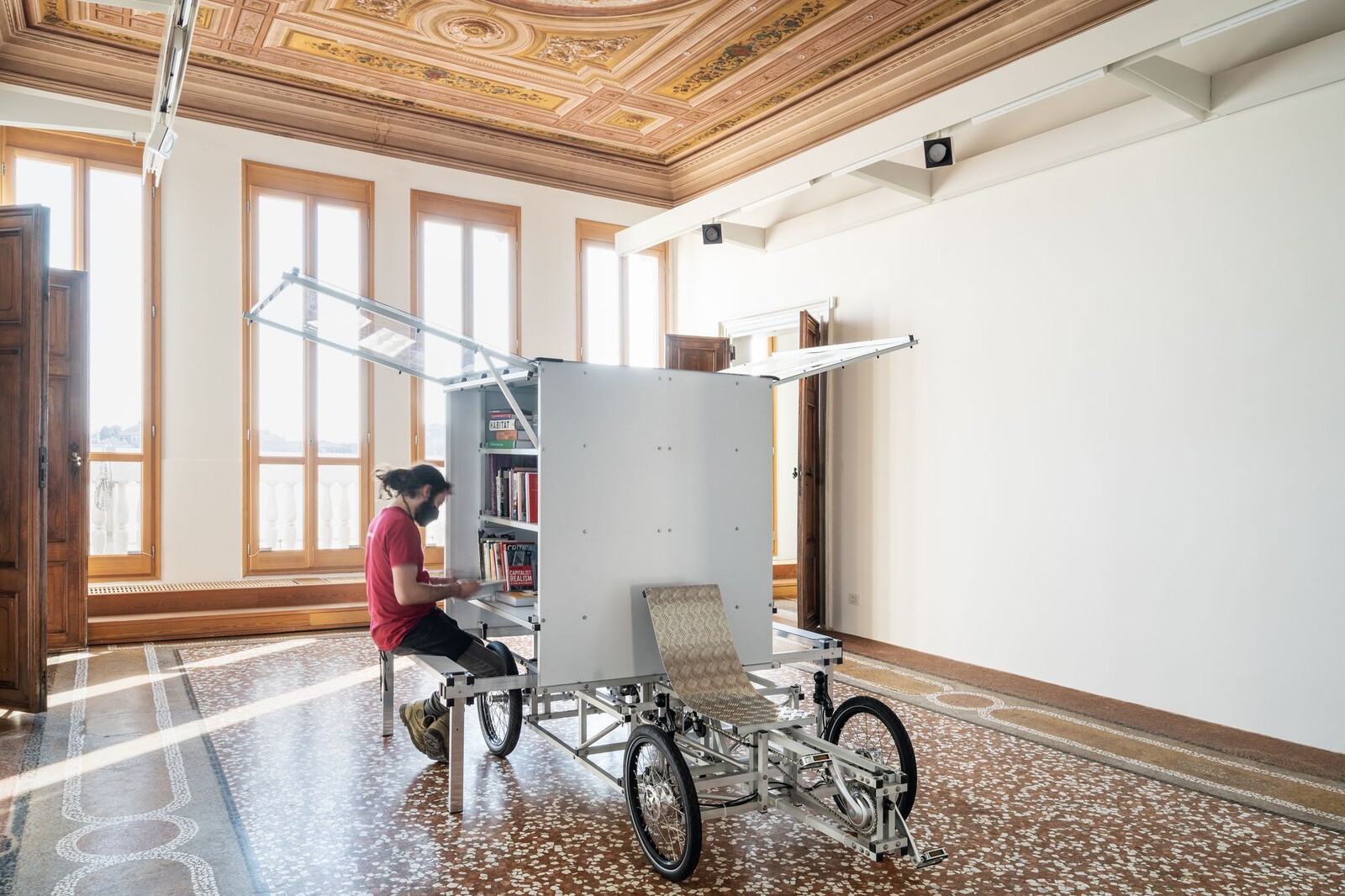
Greenwashing, as defined by architect and writer Luke Jones in his contribution to Non-Extractive Architecture, Volume 1, is the “shallow or cynical deployment of faux-ecological imagery” considered in contrast to “green authenticity.” Edited by Italian architecture and research studio Space Caviar, this sleek collection of astute texts accompanies an exhibition, residency, and conference series organized by the Venetian arm of V–A–C Foundation, an organization co-founded in 2009 by Leonid Mikhelson and Teresa Iarocci Mavica to promote Russian contemporary art. Mikhelson is also the founder and chairman of Novatek, Russia’s largest independent producer of natural gas. In late 2018, Novatek finished building a $27-billion plant in the Arctic Circle that, combined with two more planned facilities, is expected to produce 60 million tons of liquid natural gas per year by 2030.
These facts are not mentioned in Non-Extractive Architecture, Volume 1. The book brings together 18 eloquent contributions, largely essays, from important voices in architectural academia to advocate for new forms of ecologically sound architecture practice. Its opening sections explain how extraction might be a useful lens through which to read architectural history and to reformulate its future. Intentionally or otherwise, they also provide the reader with an intellectual framework for …
June 28, 2021 – Feature
London Roundup
Orit Gat
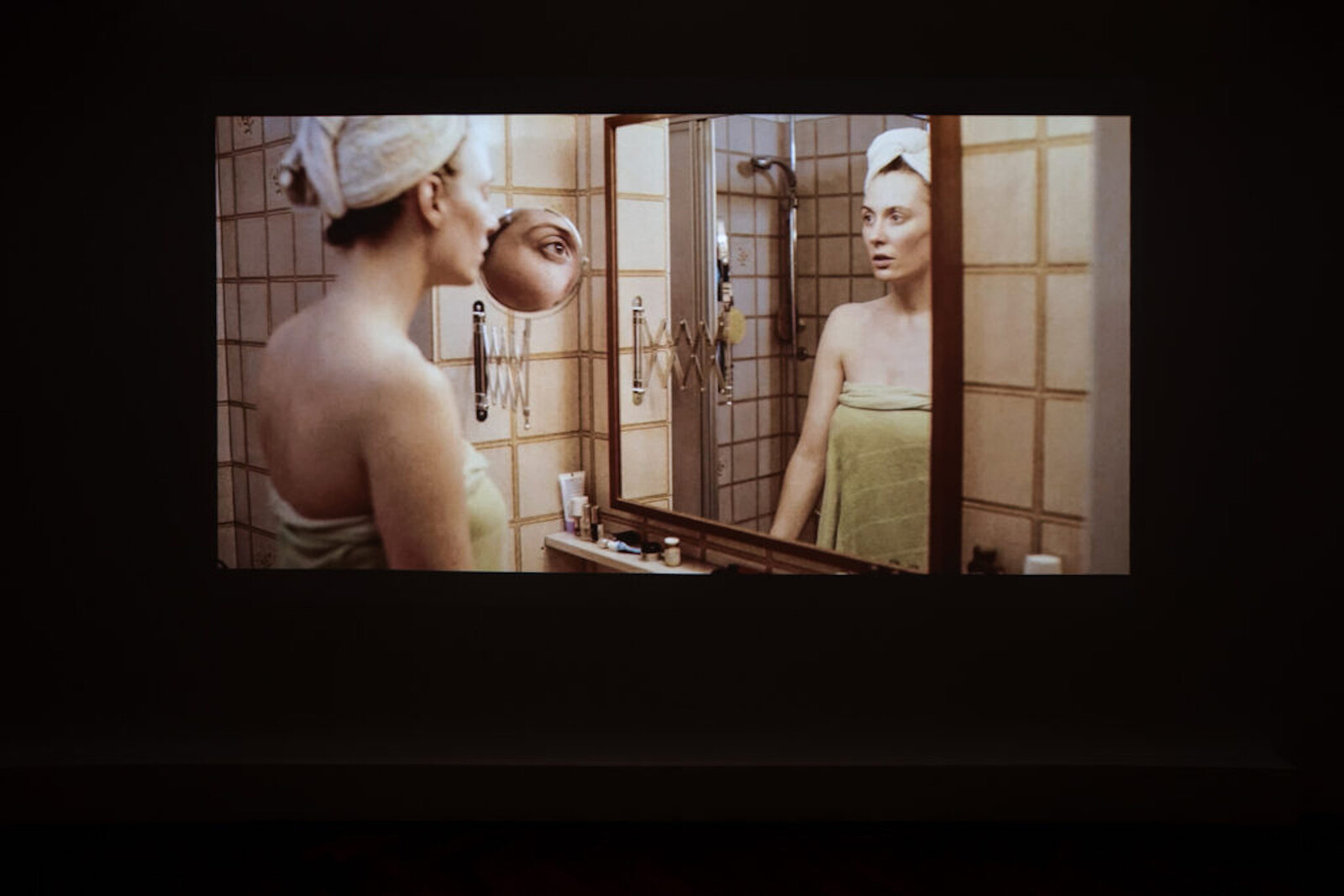
It would be impossible to think about London’s first Gallery Weekend in early June outside the context of the slow re-emergence from lockdowns. I know this strange sensation is not unique, but the experience of a public disaster dealt with largely by isolating from society has also marked the way I look at art. Taking stock of my tour of the city, it strikes me that the artworks which affected me most were ones that displayed intimacy, proximity, and all those daily exchanges from which I have felt distant these past sixteen months.
That is not to say that the daily and intimate are not political. At Lisson, “An Infinity of Traces,” a group show curated by Ekow Eshun, focused on the work of UK-based Black artists. It included Alberta Whittle’s video Between a Whisper and a Cry (2019), which explores Barbadian poet and historian Kamau Brathwaite’s idea of an oceanic worldview in the aftermath of the Middle Passage, and a series of watercolor text drawings by Jade Montserrat (who also has a solo show at Bosse & Baum in South London) that bear heavy, physical messages, like The smell of her still burning hair (2017). When I was trying to …
June 18, 2021 – Feature
Surrogacy, Money Shots, and Bit Rot
Sylvie Fortin

Meta is a collaboration between art-agenda and TextWork, editorial platform of the Fondation Pernod Ricard, which reflects on the relationship between writers and artists. Here, Sylvie Fortin explores ideas of hospitality, surrogacy, and profit, and considers how the pandemic has shaped her response to the work of Jean-Charles de Quillacq.
It took me a long time to write “Visqueen Lumisol Clear.” Looking back, I can understand why. It was the first project I managed to complete under Covid-19; in New York, where I had landed in confinement, confusion held the city in a chokehold, exacerbated by the profound inequalities laid bare by the virus’s spread of death and hardship. To get a hold of things—anything—I cast a wide web. My text, with its online-real-life shuffle, its windows and screens, its memory jumps and mind wanderings, and its leaps across scales, reflected a specific moment in the “life cycle” of our ongoing relationship with the virus. So did the human body’s insistent irruptions into the text.
In 2019, when I first encountered the work of Jean-Charles de Quillacq in Paris, I was beginning research for an exhibition that would explore the storied intersections of the body and hospitality in contemporary art. Jean-Charles’s …
June 4, 2021 – Feature
Camp, drag, and activism in South African art
Sean O’Toole

During a recent project researching the history of nightclubs in Johannesburg, frustrated by the limitations of orthodox archives—newspapers, magazines, music books, biographies, Facebook groups—and the mythologizing of DJs and musicians, I turned to artists for additional insight. Where did they dance, I asked, and how, if at all, did these ephemeral spaces influence their practice? The two-part question reflected my focus: I was interested in mapping the safe spaces and contact zones where Johannesburg residents—Black and white, straight and queer, normative and other—retreated at night, sometimes in flagrant costumes, to socialize, dance, and possibly enact dissident desires against the backdrop of apartheid and its messy aftermath. The direct line artists drew from their club experiences to their professional practice was surprising.
Zanele Muholi, the binary-refusing artist whose photographs register the complications and assertions of South Africa’s Black LGBTQ+ communities, recalled partying at Club Chameleon in Johannesburg in the late 1990s. The club night was organized by Sistahs Kopanang, a short-lived Black lesbian group active between 1997 and ’99, and occupied a venue close to the home of Muholi’s future mentor, the photographer David Goldblatt. The club’s anthem was Michael Bolton’s schmaltzy 1995 paean “Can I Touch You… There?” Muholi was …
June 1, 2021 – Feature
Laura Raicovich’s Culture Strike: Art and Museums in an Age of Protest
Travis Diehl
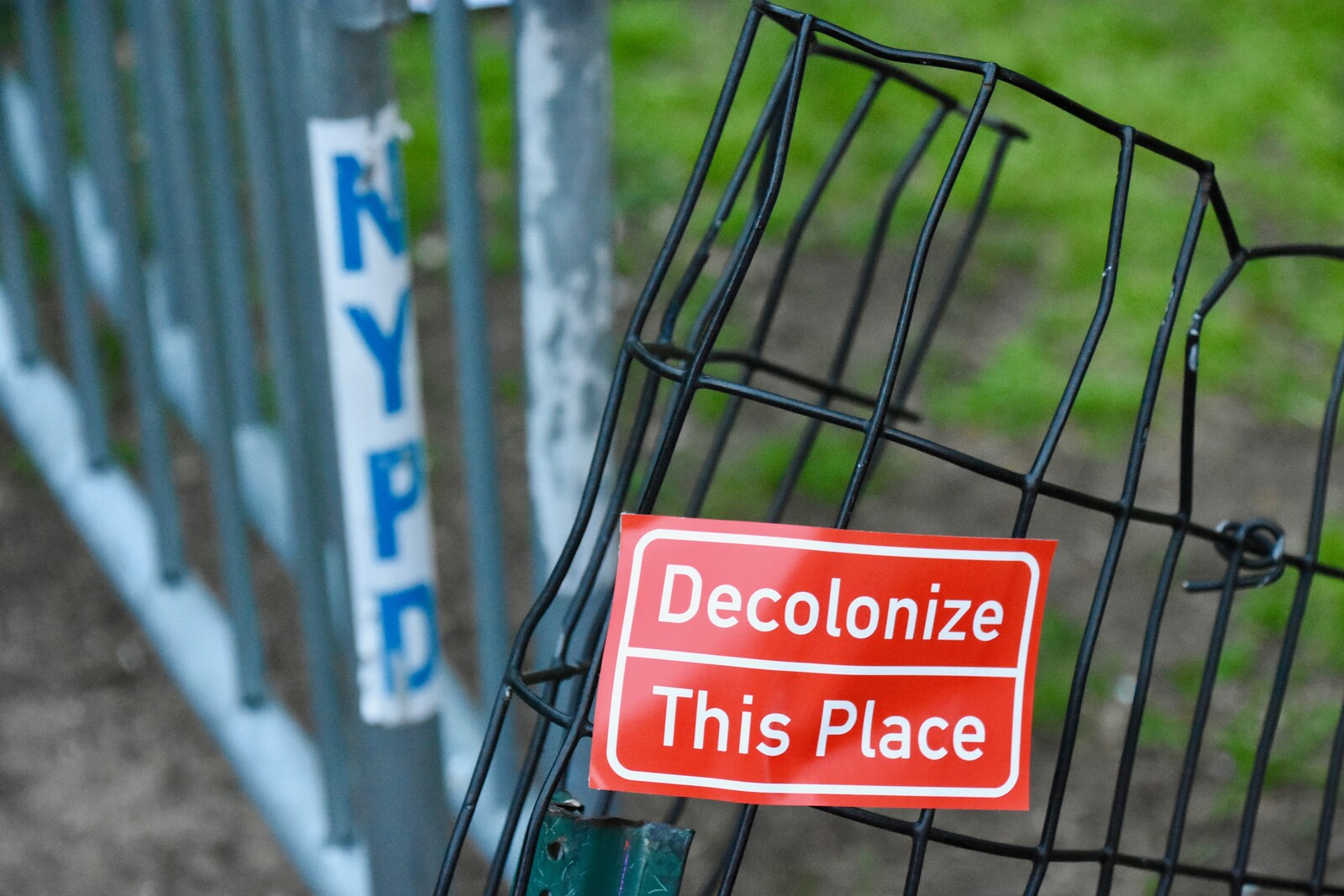
Who really thinks museums are politically neutral? Find these people, and you will have found the audience for Laura Raicovich’s new book on the tensions between social movements and museum politics. In 2018, Raicovich resigned as director of the Queens Museum over pushback against her expressions of solidarity with immigrant communities and striking workers, and the board’s decision to rent out the museum for an Israeli government event keynoted by Vice President Mike Pence. In the former case, she writes, the board argued that “a public institution […] should not, and indeed could not, ‘take sides’” in political debates; in the latter, however, it was Raicovich who argued for maintaining the practice of “not renting space for such political events.” Neutrality is rhetorical; the public understands this as well as art world insiders.
So it’s odd how often Raicovich returns to “the myth of neutrality” in Culture Strike. The first three chapters survey the legacy of colonialism, the “universal museum,” and arguments for returning looted objects; the problems of philanthropy in a world of unethical riches; and well-meaning blunders into cultural appropriation. The fourth and sixth ponder ways to move forward by revising the narratives museums tell and committing to an …
May 7, 2021 – Feature
Frieze New York
Osman Can Yerebakan

Nostalgia was the prevailing feeling as I approached Frieze New York’s new home at The Shed in Hudson Yards. I wasn’t around when the piers were a queer hub of sex and solidarity, but I remember the East River breeze on the ferry to Randall’s Island on previous visits to the fair, and a time before Thomas Heatherwick’s (indefinitely closed) eyesore The Vessel. Frieze’s pandemic-enforced change in venue brings into sharp relief the disparity between the neighborhood’s new occupiers—business-casual millennials; more recently those getting their vaccines at the nearby Javits Center; and, now, fair-goers—and the legendary stories that haunt the crumbling docks. It was nonetheless hard not to miss the old spectacle of the fair, which has been replaced by a new and more muted tone.
In place of the gigantic sculptures that guarded the vast fair tent in its previous location, visitors to The Shed find a series of more modest flower boxes. The Acute Art “augmented reality” app transforms them, via your phone screen, into Cao Fei’s RMB City AR (2020), a virtual rendering of an exploding, dystopian city. Stationed outside the entrance, the phone-activated work starts the chain of “camera moments” that stretches into the booths …
April 30, 2021 – Feature
Contemporary Art Writing Daily’s Anti-Ligature Rooms
Kevin Brazil

An anti-ligature room is a room that contains nothing around which a rope or cord can be tied. Designed to house people considered at risk from suicide, it provides the title, and a guiding metaphor for the state of contemporary culture, for a collection of texts by “Contemporary Art Writing Daily.” CAWD, as it styles itself, is an author project and website which, since 2014, has published short anonymous reviews of, mostly, the kind of contemporary art displayed in élite galleries in the Global North. Scrolling through the reviews, like reading this book, is like tuning into the interior monologues of a crowd of MFA graduates as they mill awkwardly in a private viewing. They offer repressed and volatile compounds of high theory and raw emotion—“the cast-off internalizes its social panopticon as an ever-carried guilt”—that suggest something is unstable and off-kilter, at least among the insiders of this particular sphere of the art world.
The book consists of seven sections, six of which are numbered rooms, riffing on the title, focusing on themes like “cold” or “content.” As art criticism, the texts work indirectly, circling around common preoccupations of the past decade’s art: animation, CGI, object-oriented-ontology, the digitization of everyday life. …
April 23, 2021 – Feature
“Back and Forth, Maybe With Some Chatting”
Sophia Al-Maria / Tosh Basco

Like a lot of Tosh Basco’s work, the images I’m looking at on my phone seem to evade capture and demand physical presence. The other day Tosh sent me this fleet of photos documenting the series of new drawings that make up the current exhibition “Angels, Hand Dances and Prayers” at Company Gallery in New York. The exhibition gives a glimpse into a body of work that accompanies Tosh’s remarkable output of performance over the past decade but which has been less commonly seen. And the question of the seen and the unseen is a preoccupation here.
It is particularly poignant given the notoriety Tosh gathered over the past decade under the former moniker boychild, a magnetic persona widely referenced in pop culture and scholarly articles. Her movement-based performance practice is slippery, moving, and alive. Although it begins with a body, the work does not end there. Sometimes it may point to Tosh’s origin story as a kid in San Francisco who accessed performance via drag, but more often it is reaching outward towards the future—questioning the possibilities of communication and expanding space for those who engage with the work to do the same.
Tosh tells me the haunting …
April 20, 2021 – Feature
London Roundup
Patrick Langley
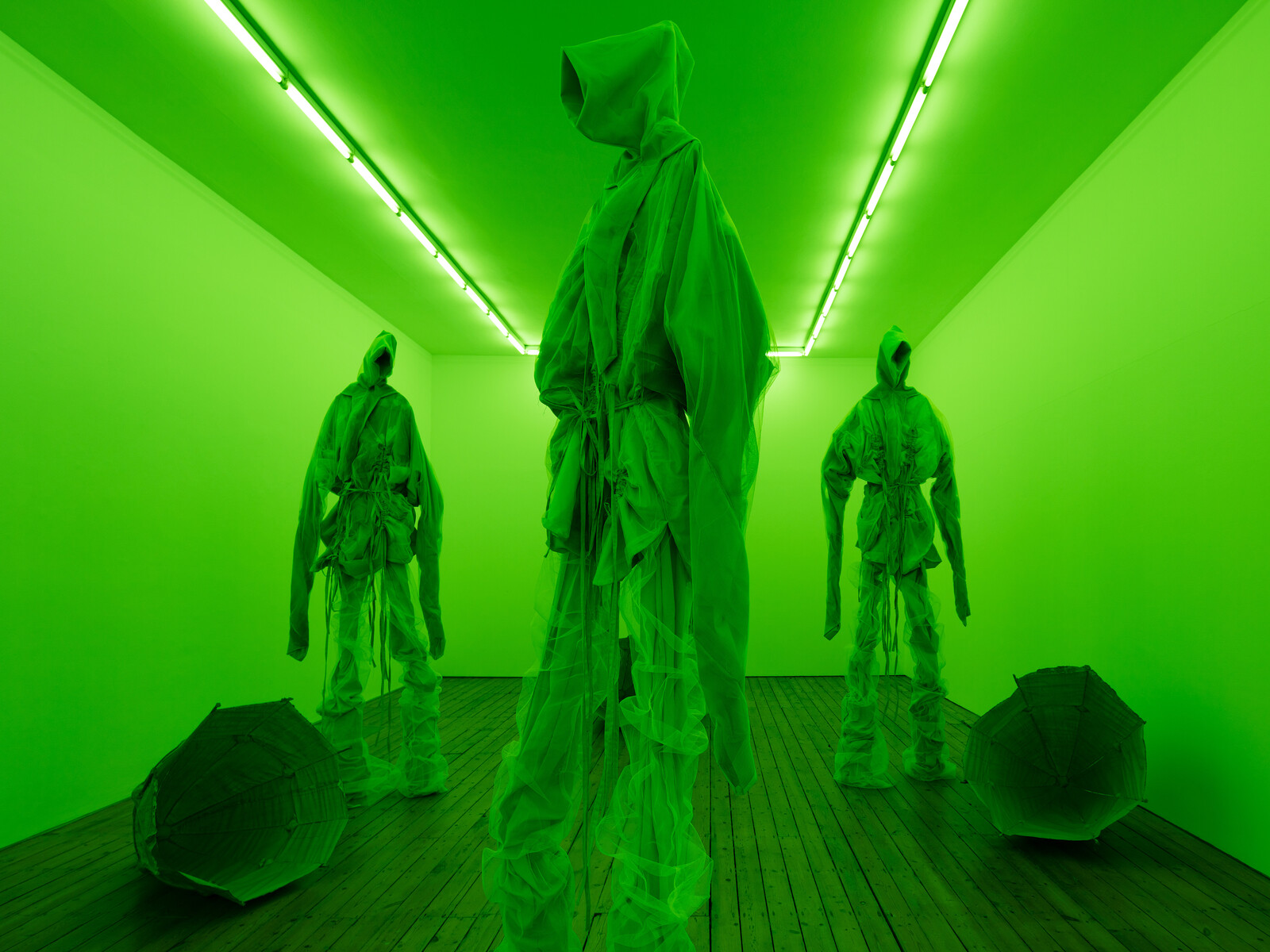
London’s galleries are open again. Exhibitions that were paused or postponed last fall have emerged from enforced hibernation into a cultural environment altered by six months of—well, not very much. To a quarantine-addled critic, this presents a quandary. One of the pleasures—and pitfalls—of writing about art is using it as a measure of lived experience: of holding work up to the light and saying, ah yes, this reminds me of something. The problem is, I haven’t much new experience against which to gauge the work. But maybe I’m not alone. In the capital’s galleries I kept noticing pieces, many made over this past year, that described a version of the same space—an unstable interior, variously possessed and infiltrated by outside forces. Which is to say, a state of mind. Or was I just projecting?
Leidy Churchman’s “The Between is Ringing,” at Rodeo’s Bourdon Street space, is a small, rewarding show of a dozen new paintings that range from smudgy abstraction to cartoonish exuberance. The work subtitled Diptych (all works share a main title with the exhibition and are dated 2020) comprises two oil-on-linen paintings, stacked one atop the other, depicting an abstracted living room that is also an existential void. The …
April 8, 2021 – Feature
The Furthest Edge
Jesi Khadivi

Meta is a collaboration between art-agenda and TextWork, editorial platform of the Fondation Pernod Ricard, which reflects on the relationship between writers and artists. Here, Jesi Khadivi considers how external circumstances—from our ongoing “state of exception” to the unpredictable sleeping patterns of infant children—changed the way she related to, and wrote about, the work of Tatiana Trouvé.
Hermetic, inwardly focused, private. These are all terms that have been used to describe Tatiana Trouvé’s practice. I’ve used them myself. In fact, I picked them out of a quick skim that I just did of the essay about her work I was commissioned to write for TextWork in the Spring of 2020.
Looking back, I realize that they are also words that I would have used to describe my writing practice until the Covid-19 pandemic. For me, writing has always been about claiming space. Or perhaps more accurately, opening a space: finding a point zero where there is nothing but myself and my subject. This isn’t easy, even in the best conditions. There are fluctuations. The space expands and contracts, other things seep in: external stimuli, a phone call, unrelated thoughts, hunger, boredom, fatigue. I saw this mingling with the …
April 6, 2021 – Feature
“Grief and Grievance: Art and Mourning in America”
Ladi’Sasha Jones
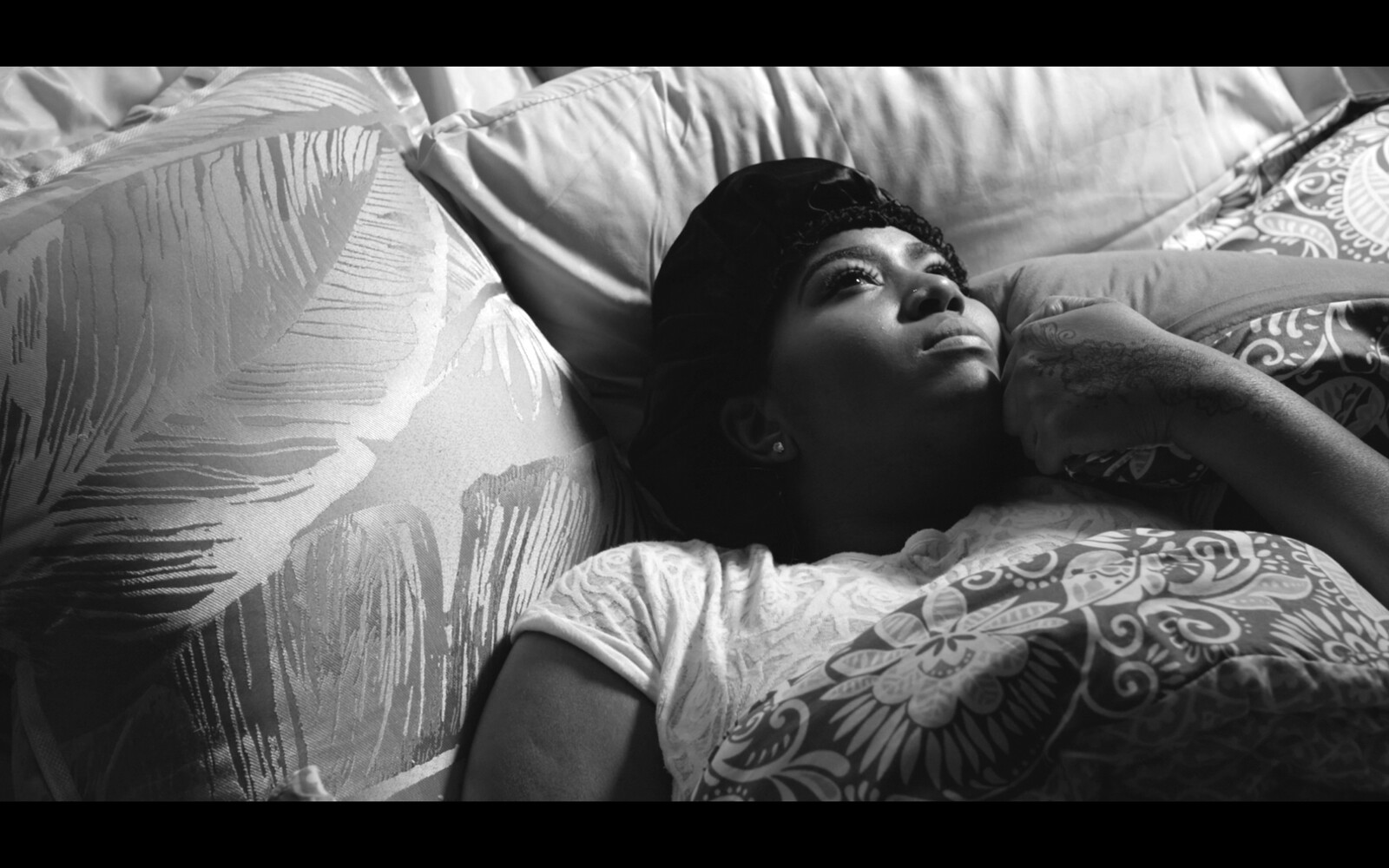
Ella Sheppard Moore’s father bought her freedom from enslavement as a child; as the lead arranger and composer of the Fisk Jubilee Singers, she grew up to establish Negro spirituals (or plantation songs) in the landscape of American popular culture. Listening to a 1909 recording of “Swing Low, Sweet Chariot,” which happens to be my favorite spiritual, I hear a haunting ringing out as the four members sing the phrase “coming for to carry me home”—taking a hold of the word “home,” stretching it, and drawing it out over a run of four notes wherein the register lowers twice as the chorus loops back around. What is utterly magnificent about this rendition of the song, which differs greatly from the version I grew up listening to and singing, is that it conveys a deeper, reifying story of radical refusal, stirring the condition that emerges from living in pursuit of freedom from the imagination of white terror. This kind of living is marked in the formations of early Black American music, wherein songs are in part prayers and prophetic visioning. They are spiritual speech acts that map pathways for new possibilities, self-possessed futurities.
Okwui Enwezor wrote that the social space …
March 31, 2021 – Feature
Jennifer Higgie’s The Mirror and the Palette
Francesca Wade
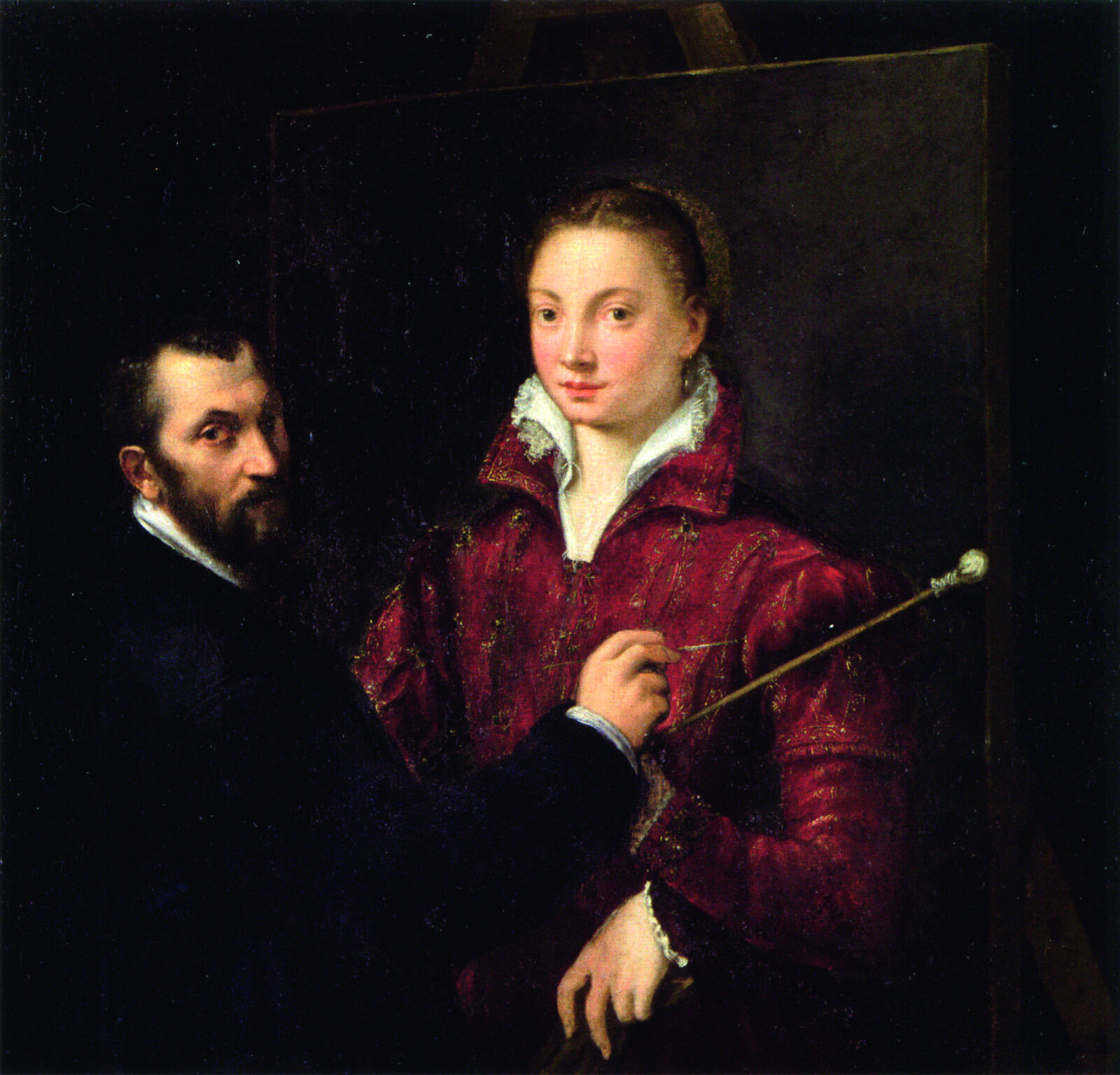
“A self-portrait,” writes Jennifer Higgie in her delightful history of women artists’ work within the genre, “isn’t simply a rendering of an artist’s external appearance: it’s also an evocation of who she is and the times she lives in, how she sees herself and what she understands about the world.” Yet throughout history, as Higgie details with palpable outrage, women have been summarily deprived of the education and opportunity necessary to make careers as artists: even when they have succeeded in their lifetimes, their work has subsequently been lost, reattributed to male artists, undervalued, excluded from museum collections and gallery rosters, and omitted from the history books. Art historians, from Giorgio Vasari to E. H. Gombrich, have found pitifully little space for women in their canons. By knitting together short biographies of individual artists along loose themes—use of allegory, the nude, solitude, cross-cultural movement—Higgie tells an alternative history of art that is really a story about seeing: about the ways in which women artists have seen themselves, and the ways their lives and work have been seen, or unseen, by others.
In building a picture of women’s structural exclusion from the art world, from the sixteenth century to …
March 29, 2021 – Feature
Practical Magic: on art, money, and metaphor
Travis Diehl
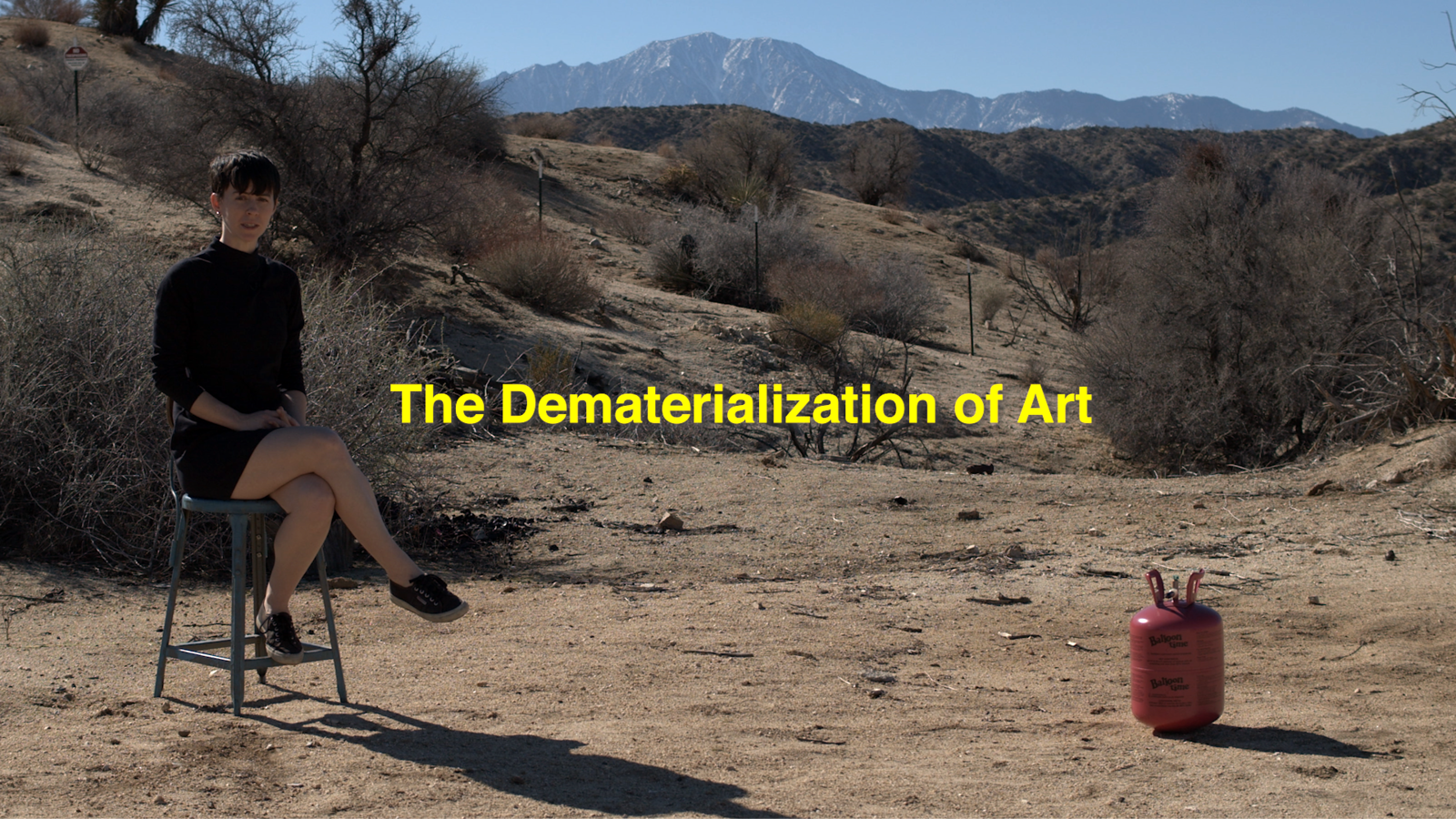
I’m not advocating tax fraud, and I’m not a lawyer. I’m just saying—whether you’ve put your stimmy checks in Bitcoin and become a millionaire, or are simply feeling the gravity of 1099 forms at tax time, or find NFTs baffling or exhausting—plain old-fashioned money-laundering is still a thing. That artworks have long been vehicles for hiding wealth is one reason that so many artists, in turn, have taken an interest in the high-stakes schemes attached to art. But there are metaphysical appeals, too. Arcane financial maneuvers, only nominally attached to physical objects, regularly achieve a level of dematerialized abstraction to which most conceptual art only aspires: the transubstantiation of nothing into something.
There are countless variations on the theme, but rinsing dirty funds always requires cycling gains back to their owner through an untraceable chain of transactions. This is the premise of Maura Brewer’s recent show “Integration” at Canary, a project space in LA’s fashion district (an area of cash-heavy and wholesale businesses, more than a few of which have been accused of laundering dollars for drug cartels). From late January to early March, Brewer methodically covered her financial tracks—setting up a dummy Limited Liability Company or LLC, routing money …
March 12, 2021 – Feature
The Botanic Garden
Tom Jeffreys

From the colonial origins of modern science up to today’s decolonial reckoning, art’s relationship with botany has been complex and contested. Since the seventeenth century, botany has played a vital role in how we understand, attend to, and live within the world of plants. But as an instrumental science it is obsessed with order, naming, and hierarchy on the basis of contested criteria. In the colonial era, botanists undertook military missions, served on slave ships, and displaced indigenous practices for monocrop agriculture worked by generations of enslaved people transplanted from one violently colonized land to another. London’s Kew Gardens oversaw networks of extraction (quinine, rubber, breadfruit) and supported experimental gardens across the colonies to keep the plantations profitable. However, as Jamaica Kincaid has noted, a botanic garden can be a tool and symbol of colonial oppression and, at the same time, “Edenic.” The botanic garden has recently been the site and subject of contemporary art exhibitions from Palermo to Berlin, addressing the entanglement of science with colonialism. So how can the practice of contemporary art assist in the process of decolonizing these “treasure houses”?
With its origins in an era that saw violent enclosure of common land, witch trials, …
February 26, 2021 – Feature
LaToya Ruby Frazier: The Last Cruze
R.H. Lossin
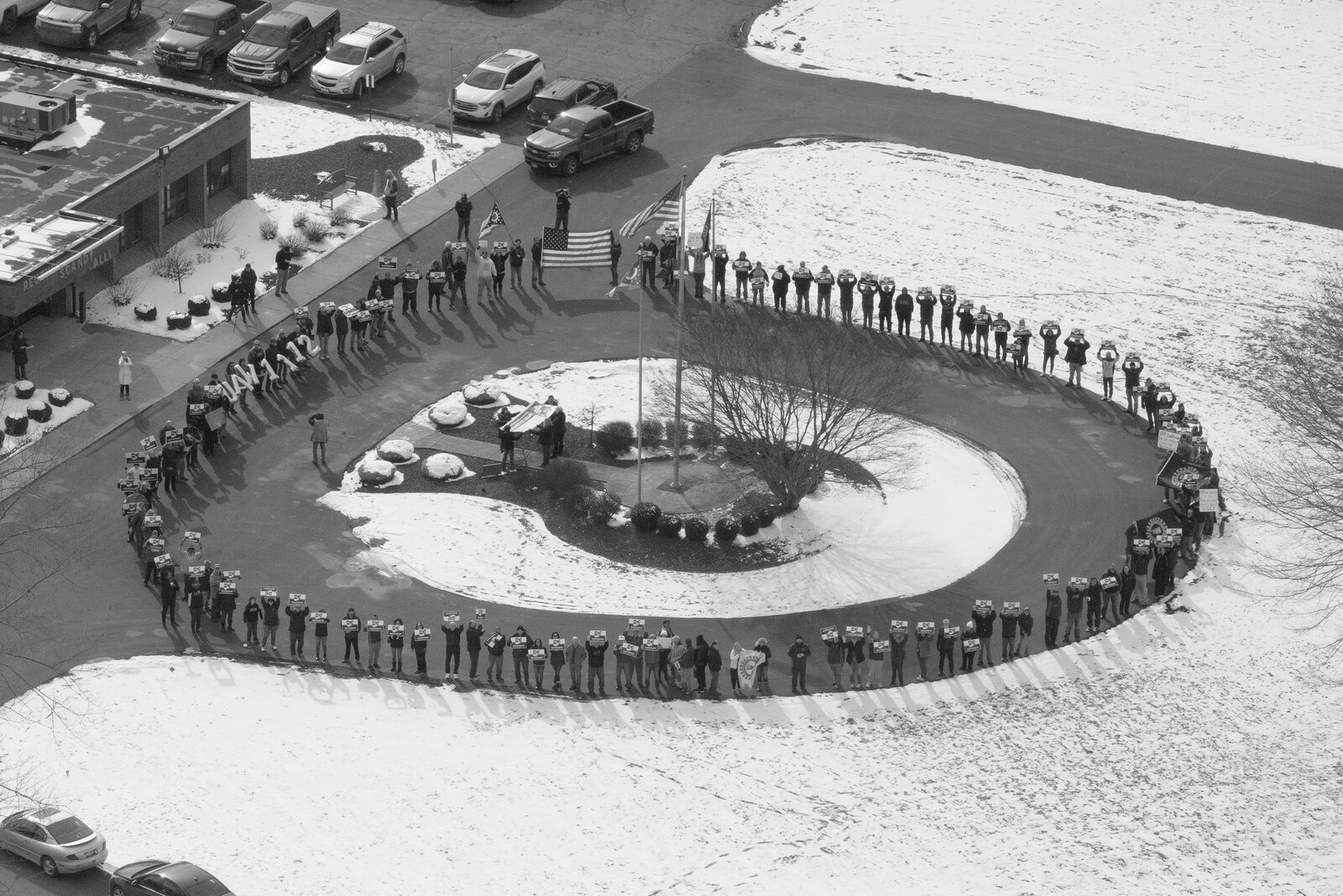
General Motors opened its Lordstown plant in 1966. Built on Ohio farmland purchased a decade earlier, the facility assembled Chevy’s full-sized vehicles, democratized luxury items with names to match: Impala, Bel Air, Caprice. In 1971 production at Lordstown—one of GM’s most technically advanced facilities—was shifted to the compact Chevy Vega. Redundancies, layoffs, and technologically enabled speed-ups followed: when employees were requested to turn out 100 vehicles per shift rather than the average of 55, workers sabotaged cars coming off the line and went on strike.
In 2019 the last Chevy Cruze rolled off the line and the plant was permanently closed. Or, more precisely, it was “unallocated.” “People keep saying, ‘I feel sorry for you. Your plant closed,’” recounted David Green, president of United Auto Workers (UAW) Local 1112. “It ain’t closed, it’s ‘unallocated.’ What the hell does that even mean?” Green, of course, was speaking for effect. He knew what “allocated” meant in substance: any language in the national agreement protecting GM employees in the case of “closed” or “idled” plants doesn’t apply to a plant that is “unallocated.”
Photographer LaToya Ruby Frazier documented the last nine months of Lordstown’s operations. An exhibition of her works, “The Last Cruze,” …
February 23, 2021 – Feature
São Paulo Roundup
Oliver Basciano

By rights I shouldn’t be writing this. I should be on the streets of São Paulo, beer in hand, as carnival rages around me. The bloco—street party—that passes under my window is a queer one. There would be a lot of kissing and not a lot of clothes. Instead, the Lenten celebration cancelled, my neighborhood is as quiet as the downtown of Brazil’s largest city can be. There is no samba band playing in the square, there are no sound systems blasting favela funk morning to night, no messages from friends recommending parties in other neighborhoods, no chance to go to the Oscar Niemeyer-designed Anhembi Sambadrome just north of here. I could be watching the carnival schools—there are over a dozen based in the city—parade through that 103,200-capacity stadium, the storyline and costumes of each a year in the making.
There’s a popular meme here that describes images and situations as “Sad and Brazilian.” For all the contemporariness of its dissemination—it’s shared on social media and in sprawling WhatsApp groups—the phrase taps into the deeper cultural concept of saudade, which describes a longing for something lost, perhaps never to return again, apt for a country founded by slaves, colonialists, and immigrants. …
February 17, 2021 – Feature
Tacita Dean’s Fernsehturm
Erik Morse
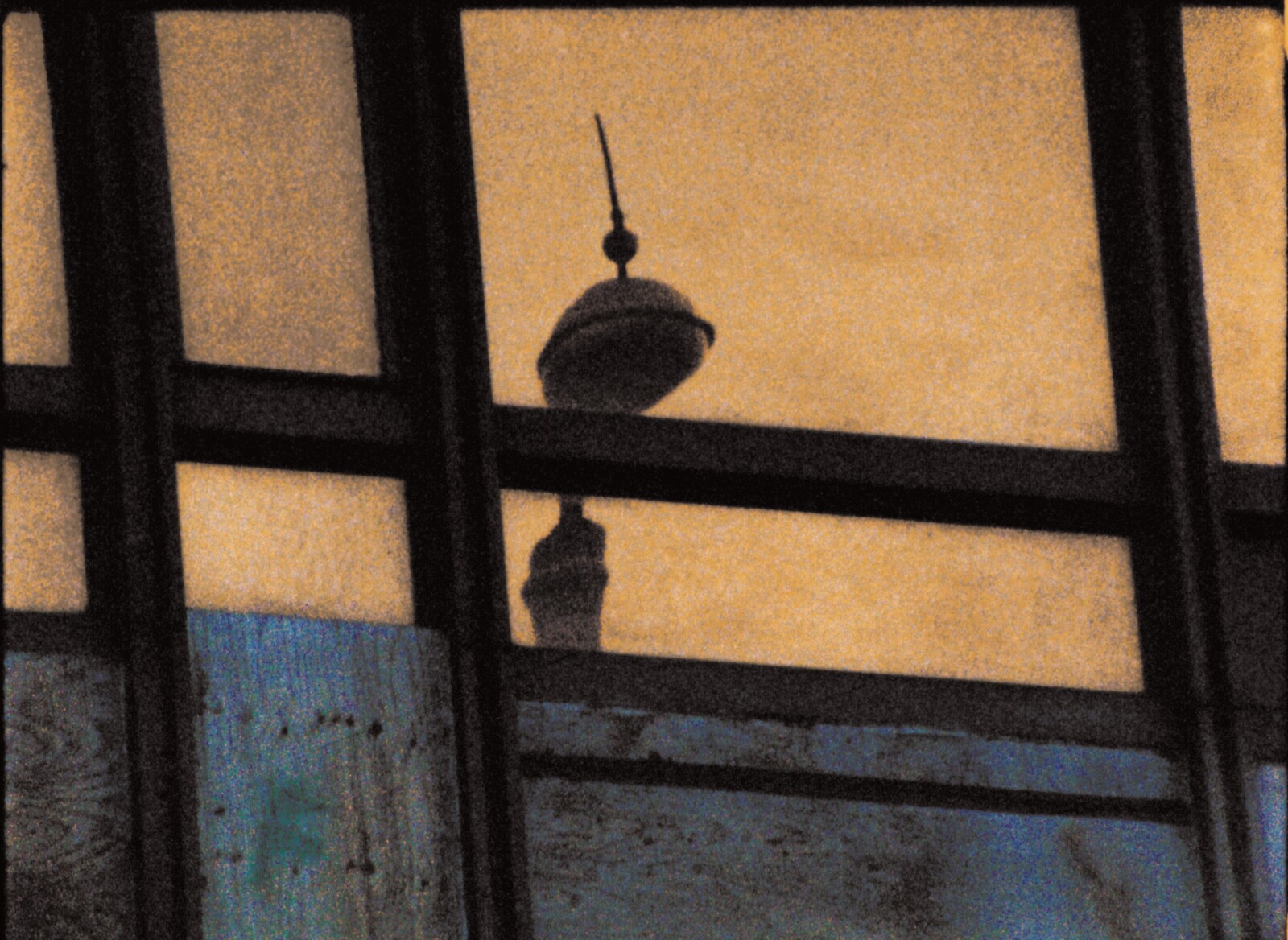
The Rearview series addresses blind spots in contemporary art history by returning to an influential exhibition, artwork, or text from the recent past and reflecting on its relevance to the present. To coincide with Erik Morse’s essay on Tacita Dean’s Fernsehturm, Marian Goodman Gallery is hosting a special online screening of the 2001 film. Click here to watch (the screening ends on February 25).
One benefit of a yearlong quarantine has been the rediscovery of interiors as a source of creative reverie. Restrictions to air travel and public spaces have upended an artistic truism—popular among the globetrotting avant-garde of the last century—that, as Christopher Reed wrote, “being undomestic came to serve as a guarantee of being art.” Instead, like the eccentric, household narrators of Xavier’s de Maistre’s Voyage autour de ma chambre (1794), J.-K. Huysmans’s À rebours (1884), and Raymond Roussel’s Locus Solus (1914), visual artists have been forced to dwell in interior space, with its glacial boredom, everyday rituals, and isolation. In this protracted period of sequestration, a film made by Tacita Dean at the turn of the millennium offers one guide for artistic travels through the interior.
Fernsehturm (2001) is the first of several projects in which …
February 8, 2021 – Feature
“WACK! Art and the Feminist Revolution”
Wendy Vogel
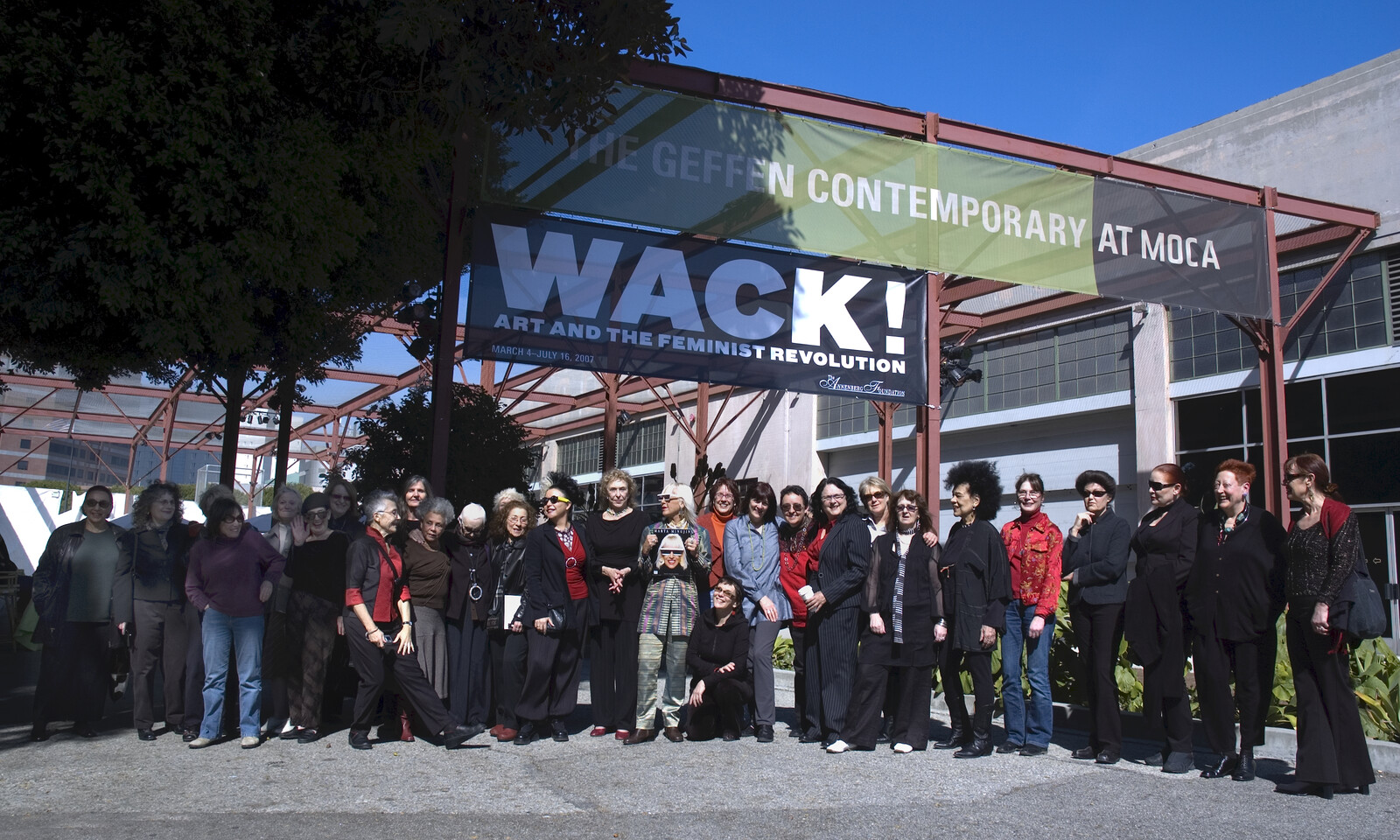
The Rearview series addresses blind spots in contemporary art history by returning to an influential exhibition, work, or text from the past and reflecting on its relevance to the present. In this edition, Wendy Vogel considers how the 2007 touring exhibition “WACK! Art and the Feminist Revolution” marked a generational shift in art criticism.
Feminist art history may come to be defined as the era before and after WACK!. The onomatopoeic word—more a metaphorical whip-crack than a line in the sand—is shorthand for “WACK! Art and the Feminist Revolution,” an exhibition curated by Cornelia Butler that opened at the Museum of Contemporary Art, Los Angeles (MOCA) in March 2007. This pioneering institutional survey of feminist art brought together work made by more than 120 female artists and collectives between 1965 and 1980. In the introduction to the 500-plus-page exhibition catalogue, Butler stated her curatorial goals: “My ambition for ‘WACK!’ is to make the case that feminism’s impact on art of the 1970s constitutes the most influential international ‘movement’ of any during the postwar period—in spite or perhaps because of the fact that it never cohered, formally or critically, into a movement.” It remains a bold statement today; it was …
January 29, 2021 – Feature
Johanna Drucker’s Iliazd
Ryan Ruby
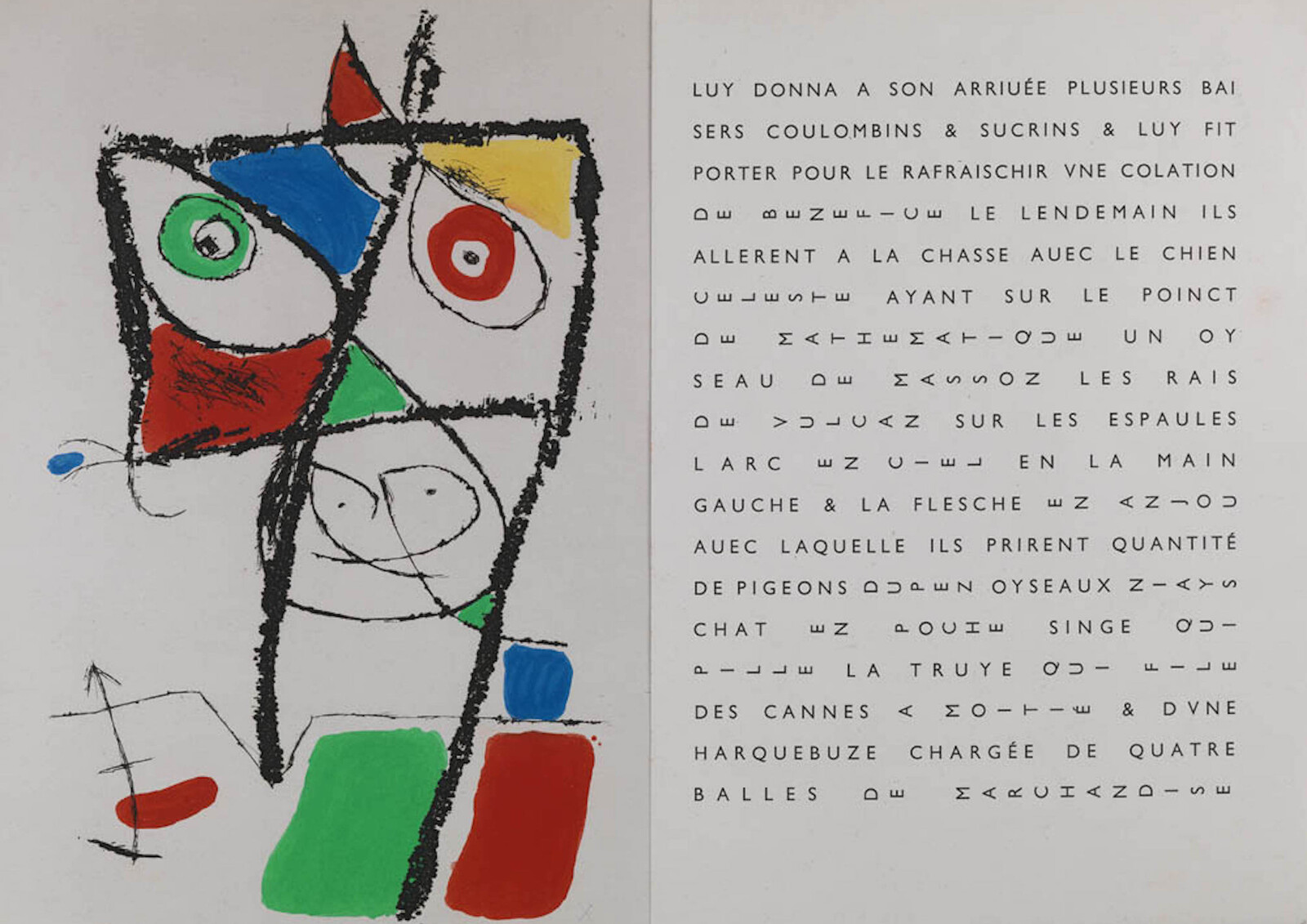
In 1985, the book artist and future scholar of print and digital aesthetics Johanna Drucker was working on a chapter of her dissertation on Futurist and Dadaist typography in the Bibilothèque Jacques Doucet in Paris. Sitting across from her was a fellow American researcher, flipping through a “marvelous” deluxe edition of a livre d’artiste by someone who clearly belonged to one of these movements, but whose work Drucker did not recognize. The researcher explained that the work was by Ilia Zdanevich, better known by his alias Iliazd: a book artist, poet, playwright, novelist, and publisher who had left his native Georgia for Paris in the 1920s. If she was interested, Zdanevich’s widow Hélène lived nearby, and was always glad to speak to scholars about his work. Drucker was intrigued enough to pay a call on “Madame,” but could not have known that soon she would find herself visiting her daily, working with her on Iliazd’s biography, and becoming her confidante. Nor could Drucker have known that the project would only come to fruition thirty-five years later, with the publication of Iliazd: A Meta-Biography of a Modernist, or that it would look so different from what Hélène had in mind when …
January 28, 2021 – Feature
Social work: the art world online
Novuyo Moyo
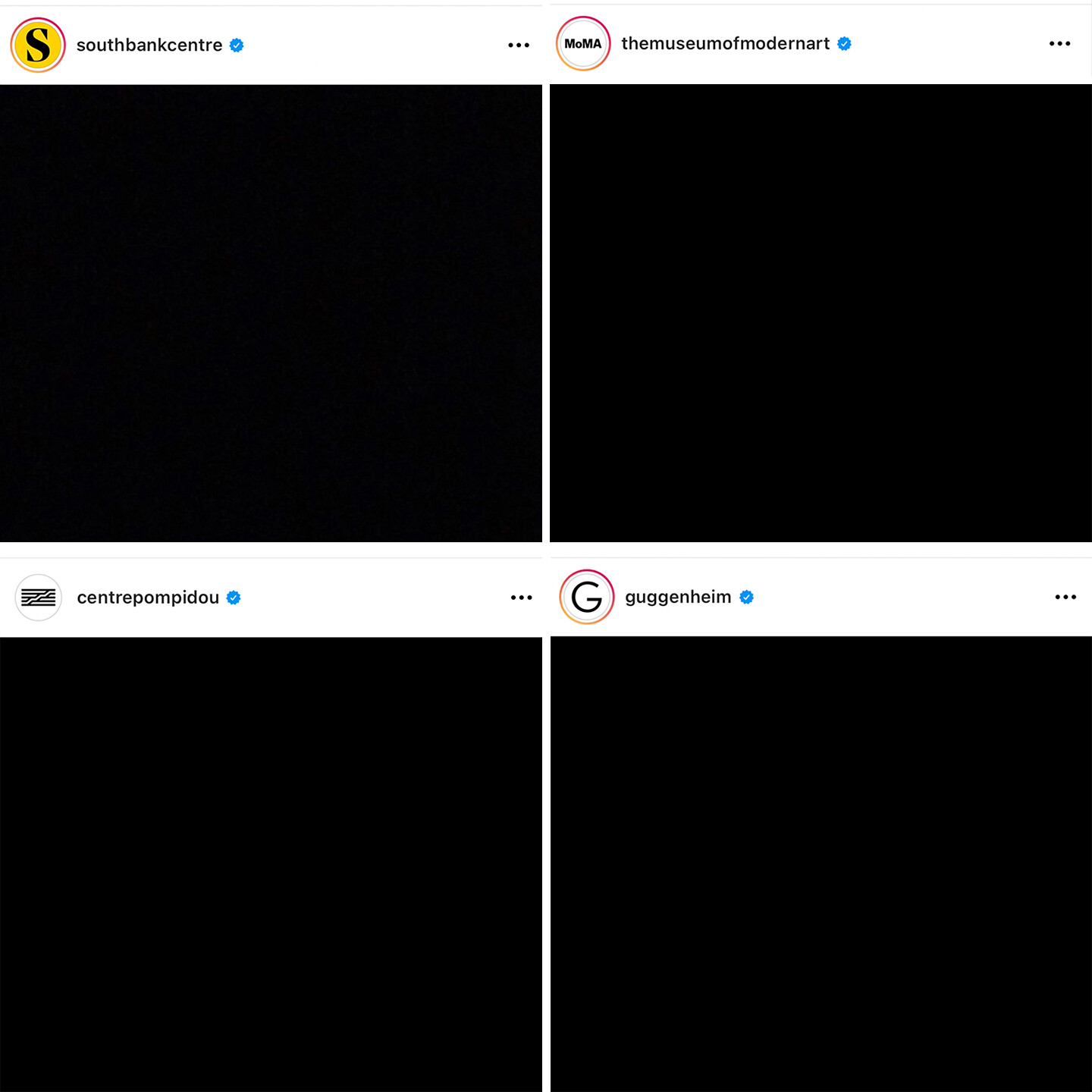
The art world has been grappling with social media ever since its potential beyond the purposes of keeping in touch with loved ones first became apparent. Its platforms allow individuals to communicate with audiences without the mediating power of institutions, or to mobilize groups behind a cause with the aim of bringing about change in those institutions. The possibilities and pitfalls for cultural gatekeepers have been pronounced over the course of a year in which they have been forced to relocate online and engage with the audiences they find there. But has their new engagement with social media really widened the scope of who gets to speak about art and what is discussed, or done little more than reproduce the structures that limit offline access? And as discussions around access and diversity in the art world continue, how can social media activism be more than a retweet, a like, a share; how can it effect and sustain change in the long term?
In the summer of 2020, many institutions faltered as they attempted to respond to demands from online audiences to address the lack of diversity in their collections and appointments: a coordinated set of actions arising from the Black Lives …
January 26, 2021 – Feature
“Zones of discomfort”
Julie Béna
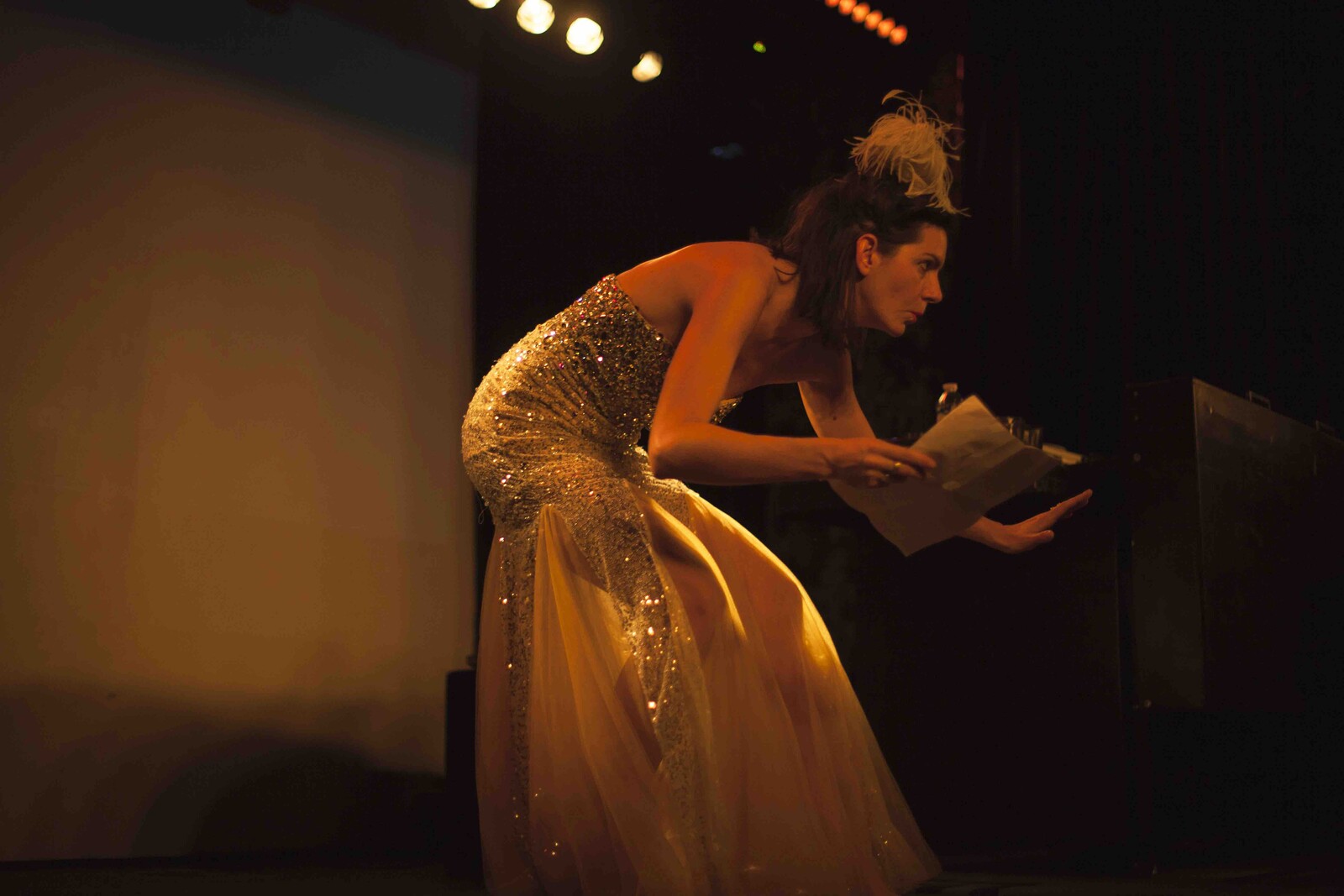
Meta is a collaboration between art-agenda and TextWork, editorial platform of the Fondation Pernod Ricard, which reflects on the relationship between writers and artists. In this edition, art-agenda’s editor-in-chief talks to Julie Béna, whose work in installation, film, and performance makes use of such literary devices as absurdist humor, destablizing allusions to high and low culture, and metafictional characters plucked from sources ranging from William S. Burroughs’s Naked Lunch (1959) to the brand mascot Mr. Peanut.
art-agenda: In your new film, Letters from Prague, you play the role of an art critic. How did that feel?
Julie Béna: The Jindřich Chalupecký Society commissioned me to conceive a new performance about the Czech essayist, philosopher, and critic after whom the society is named. Because of the current situation and my doubt about an online performance, I decided to do a movie instead. In any case, it was difficult to embody a man, an art critic, and an historical figure. In the first part, I embody Chalupecký himself, based on a critical text I wrote, oscillating between fury, hysteria, and seriousness. The second part is an animated tale called “DICKS WINGS AND GRILL.” In the final …
January 19, 2021 – Feature
On Space Art
Xin Liu / Xin Wang

During the prolonged lockdown that defined much of 2020, the Xinjiang-born, New York-based artist and engineer Xin Liu juggled multiple roles. These included participating in a volunteering network that supplied PPE to medical workers in dire need of protection against Covid-19; designing an indie game, Sleepwalk (2020), which reflected on the conditions of confinement and hyper-connectivity; engineering a series of hypnotic sound experiences with her partner Gershon Dublon titled The Wandering Mind (2020), which guides the dreams of a sleeping audience with source materials organized by an AI system; and live-streaming an ambient soundscape recorded on Whitehead Island, off the coast of Maine, for the Camden International Film Festival.
As the Arts Curator at MIT Media Lab’s Space Exploration Initiative and an artist who makes work for exhibition spaces, film festivals, and astronautical conferences, Liu’s ongoing fascination with space as a medium and destination for new art has seen her send a wisdom tooth into outer space, cultivate potato seeds that had travelled to the International Space Station, and imagine weightlessness as an intimate, “body-opening” condition. In this interview, we spoke about the past lives and expansive futures of Space Art, her unique mixture of academic and identitarian backgrounds, and …
January 8, 2021 – Feature
Digital Art and Trans Archiving
Francis Whorrall-Campbell
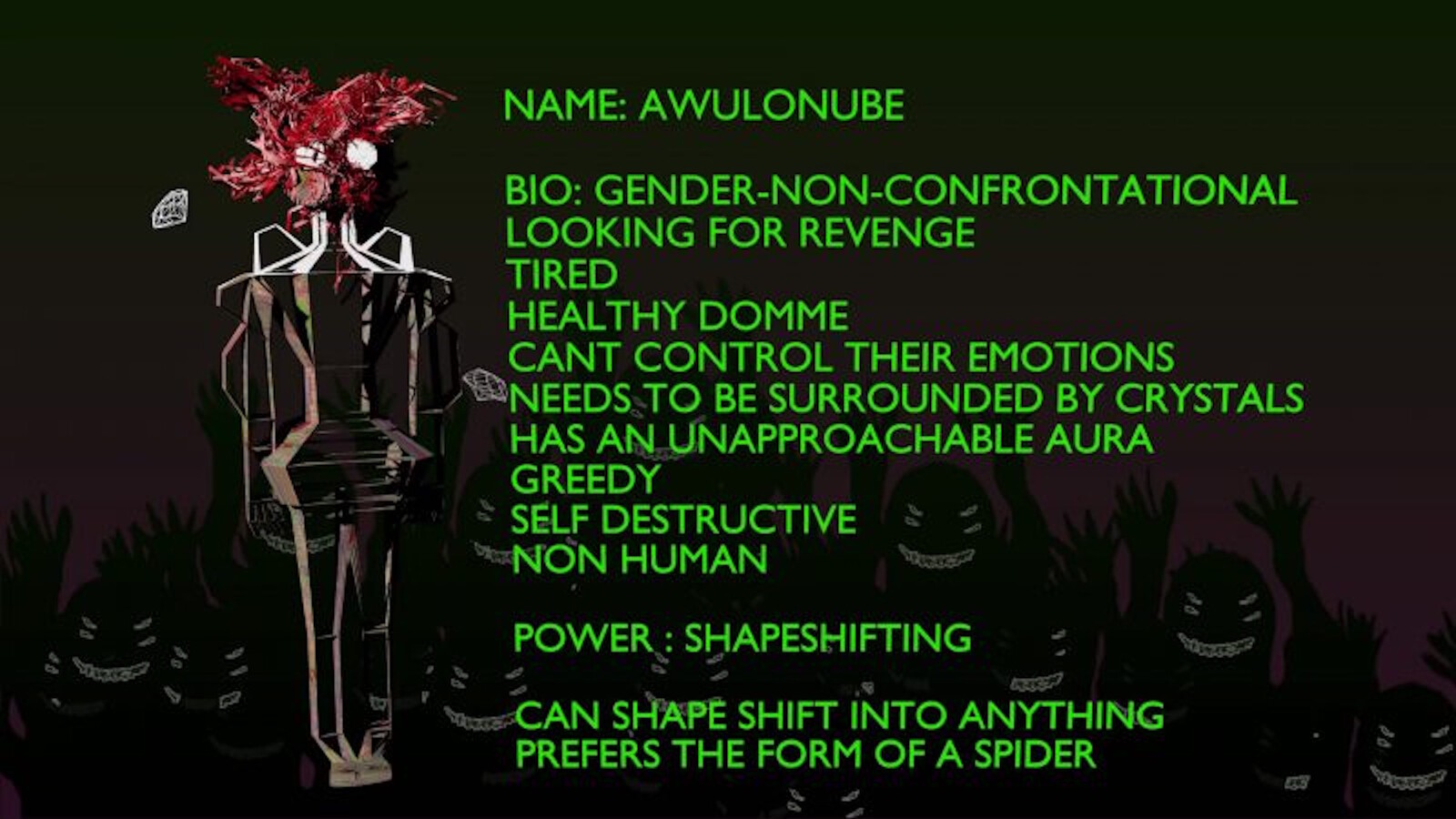
Achille Mbembe describes the archive as a “cemetery”: a burial ground in which “fragments of lives and pieces of time are interred.” Opening up Danielle Brathwaite-Shirley’s Resurrection Lands (2020)—an online game and speculative digital archive of Black trans experience—I am reminded of this description. Aside from the obvious conceptual resonance between the paper graveyard and the digital afterlife conjured on screen, in telling the game’s fabulated backstory my disembodied guide seems to echo the central paradox Mbembe identifies. That is: we need the archive to remember, but it is also a tool for forgetting. Or, as Brathwaite-Shirley’s introductory voiceover asks me: “how [is] it possible to store [someone] in a world that had once erased [them]?”
A tentative answer to the difficulty of archiving trans lives might lie in the digital realm. The internet’s potential as a place for self-narration was recognized early by trans creators. In the 1990s the nascent World Wide Web was a playground, a site of both creation and distribution that encouraged new modes of participation and facilitated formal experiment. It was not just that this “newness” opened up space to document trans experiences—apparently (although not actually) in a world as yet untainted by the social …
December 23, 2020 – Feature
The year that wasn’t
The Editors
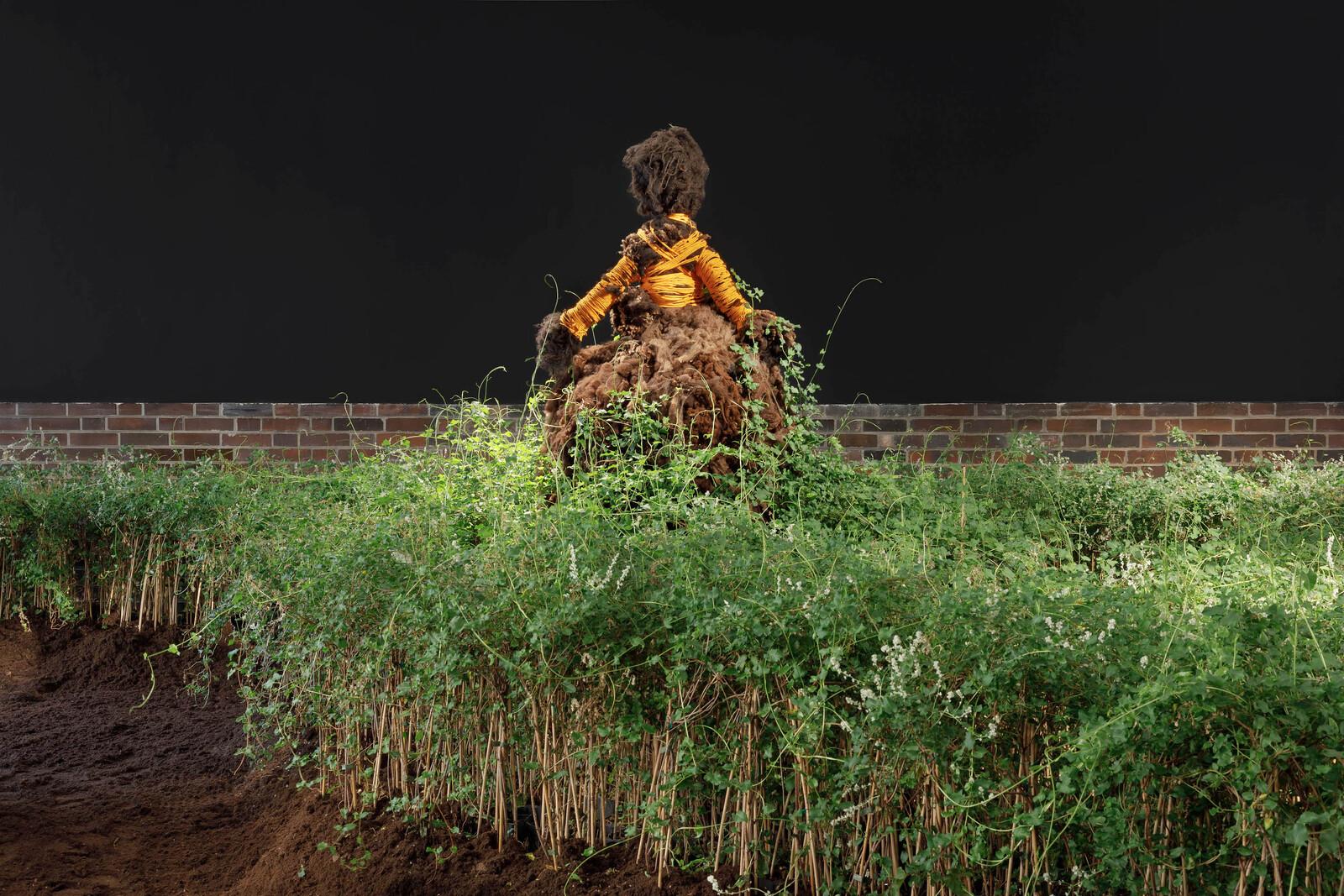
It’s tempting, when signing off on the past year, simply to bid good riddance to bad rubbish. But we wanted first to acknowledge those who have been cheated by 2020. To that end, we’ve asked some contributors whose work with us was disrupted—because the show they were commissioned to write up was shuttered, or thanks to one of the many incidental consequences of the pandemic, from new childcare demands to the need to assist vulnerable friends and relatives—to nominate a show they weren’t able to experience in person. The idea is to shed a little light on the work that got left behind and offer some small compensation to all the artists, curators, and gallerists whose shows were never seen, or seen only by a fraction of the audience they might reasonably have expected, or were denied the coverage that publications such as this exist to provide. As such, this very partial roundup also hopes to stand in for a larger expression of solidarity with all those in our field whose work was interrupted by the chaos of the past twelve months. Don’t dismay, keep going, and we’ll see you next year. The Editors
Rahel Aima
I …
December 21, 2020 – Feature
Bruno Latour and Peter Weibel (Eds.), Critical Zones
Sam Solnick
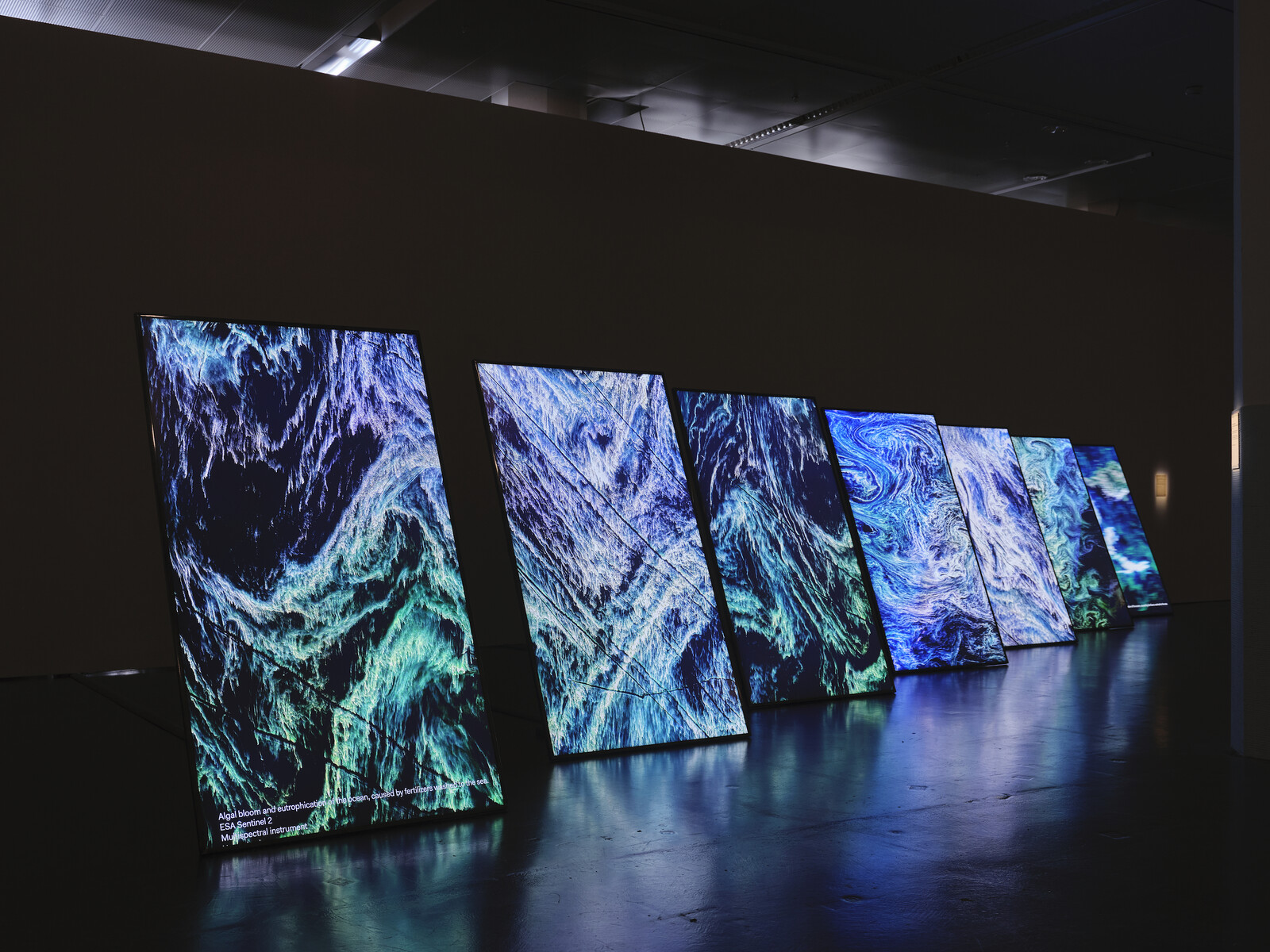
One of the many ways that I ameliorated my lockdown boredom was to watch David Attenborough’s new Netflix show Our Planet. Each episode begins with a shot of an “Earthrise”—our planet emerging into view as if we were standing on the moon—while the nation’s favorite grandfather intones a warning about the declining “wonders” of the natural world, and insists that we must act so that “people and nature thrive.” These are laudable sentiments but, as suggested by Critical Zones, a gargantuan new collection of multi-disciplinary writings edited by Bruno Latour and Peter Weibel and published alongside the eponymous exhibition at Karlsruhe’s ZKM Center for Art and Media, such planetary long-views from space can be part of the problem.
Attenborough’s narrative of biodiversity loss focuses on one species’ (humans’) capacity to wreak massive environmental change in the fifty-odd years since Earth was first photographed from the moon. However, as Timothy M. Lenton and Sébastien Dutreuil’s entries in Critical Zones explain, life (as in the totality of everything that lives) has always adapted the planet, albeit on a different time scale. Life is not a passive actor adapting to an inert environment; it transforms that environment, making it habitable. Earth is, …
December 15, 2020 – Feature
“Artificial night”: on Dawoud Bey’s America
Anna Mirzayan
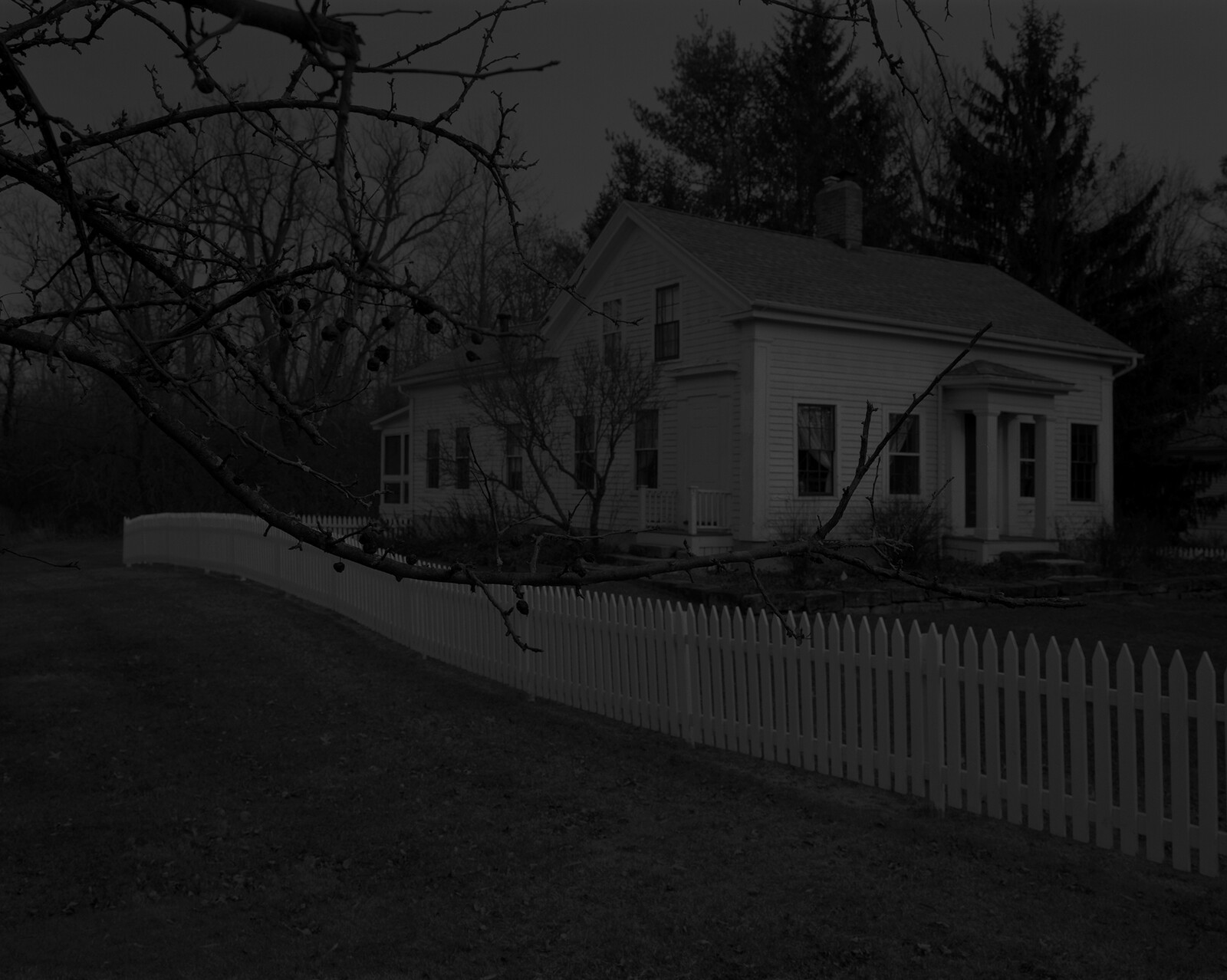
Earlier this month, the touring exhibition “Dawoud Bey: An American Project” arrived at the High Museum in Atlanta, Georgia. This retrospective of the photographer’s 45-year career—which opened in February at the San Francisco Museum of Modern Art and will move next spring to New York’s Whitney—features portraits and photographs from the 1970s to the mid-2000s. These black-and-white images are often shot outdoors and depict majority Black communities in the US—such as those in Brooklyn, Harlem, Orlando, and Birmingham—engaging in everyday activities and moments of communal joy. “An American Project” also features works from Bey’s 2017 series “Night Coming Tenderly, Black,” which comprises large, dark rural landscape photographs taken at sites rumored to have been stops on the Underground Railroad, along which Black people travelled in secret to escape slavery. By presenting these two seemingly disparate projects simultaneously, this retrospective insists that viewers attend to both types of works together; in doing so, the exhibition aims to overcome a common thematic split between images that depict people and those, like landscapes, that do not. Considering these works as continuous, however, reveals fruitful new ways of thinking.
The gelatin silver prints in “Night Coming Tenderly, Black” are moody and dim, overlaid …
December 7, 2020 – Feature
“Tremors”
Brook Andrew / Pablo José Ramírez

Across his practice as an artist and a curator, Brook Andrew develops kinship with non-western cultures rooted in an intersectional understanding of indigeneity. Andrew is of Wiradjuri and Celtic ancestry and was, this year, the first Indigenous artistic director of the Biennale of Sydney since the exhibition’s inception in 1973. In that role, he dealt with a wide range of artistic, community, and activist practices from Indigenous and non-Indigenous backgrounds. Featuring 98 artists and collectives, the exhibition—titled “NIRIN,” meaning “edge” in Wiradjuri—was rooted in a fierce critique of coloniality.
The following conversation explores the possibility of indigenous art as a non-colonial force, one that fractures the idea of history as progress and questions the art-historical canon and the institutions that enshrine it. These themes are evident across Andrew’s research-based artistic practice, in which he engages with themes of colonialism, indigeneity, and historical amnesia in collage, painting, and installation. Something that has always impressed me about his practice is the joy with which he approaches such issues—with care and rigor, and with the soul of someone waiting to be amazed.
Pablo José Ramírez: I’d like to think with and beyond the global crisis by looking back to our past. As you …
November 30, 2020 – Feature
Nida Ghouse with Jenifer Evans (Eds.), An Archaeology of Listening: A Slightly Curving Place
Jens Maier-Rothe

Earlier this summer Berlin’s Haus der Kulturen der Welt launched a multi-part tribute to Umashankar Manthravadi, a Madras-born journalist, poet, and pioneer of acoustic archaeology. “A Slightly Curving Place,” an exhibition curated by Nida Ghouse, ran from July to September and featured audio and video installations inspired by Manthravadi’s work; it was complemented by “Coming To Know,” a discursive program co-curated by Ghouse and Brooke Holmes that unfolded over the course of the exhibition. These two projects are joined this fall by the publication A Slightly Curving Place. Edited by Ghouse in association with Jenifer Evans, and the first in a planned series titled “An Archaeology of Listening,” the book features scripts, scores, sketches, and essays that elaborate on questions posed by the exhibition. (The second volume, co-edited with Holmes, will follow in spring 2021.) What does it mean to listen to the past? Why does a Maya pyramid or an Udayagiri cave sound the way it does? And how can listening to historical sites help us unlearn archaeology as a discipline that colonizes the past by collecting it for display?
Manthravadi began working in archaeoacoustics—in which archaeological sites are mapped and measured according to their acoustic properties—in the …
November 25, 2020 – Feature
Art in the Aerocene
Tomás Saraceno / Erik Morse
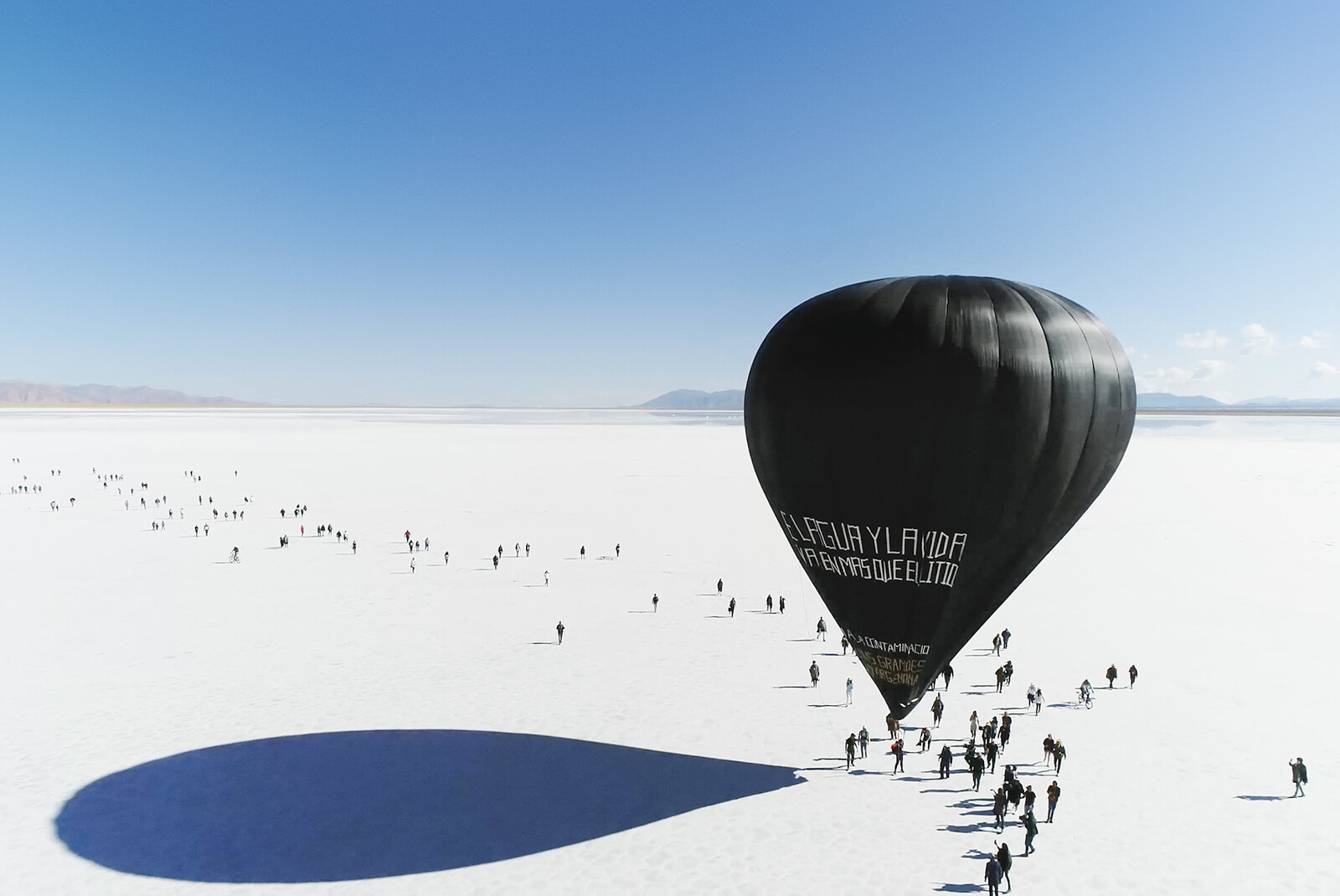
The Argentine artist-theoretician Tomás Saraceno works at the nexus of nineteenth-century aeronautics, utopian urbanism, and synergetic cosmography. Although inspired in part by writers like Jules Verne, Paul Scheerbart, and Jorge Luis Borges, Saraceno’s hybrid oeuvre is perhaps most indebted to Archigram co-founder and “blobitect” Peter Cook, under whom he studied, and architectural polymath Buckminster Fuller. Beginning with installations Cloud Cities (2010–ongoing) and community projects like Museo Aero Solar (2007–ongoing), Saraceno has pursued a reconceptualization of posthumanism through aeromantic fantasies of foam habitats, floating cities, and flying sculptures.
Because of his work between the traditional sciences—including collaborations with researchers at MIT, NASA, CNES and the Max Planck Institute—and speculative futurism, Saraceno has cultivated a uniquely transdisciplinary audience of art critics, diplomats, environmental activists, and philosophers, including Peter Sloterdijk and Bruno Latour, who wrote in a 2011 essay that “Saraceno performed precisely the task of philosophy […] namely of explicating the material and artificial conditions for existence.”
Saraceno’s most ambitious endeavor, the ongoing “Aerocene” project, is a two-decade-long study into the possibilities of “aerosolar” travel, a “practice of developing flying sculptures as a model for a new form of sustainable, carbon-free movement attuned to the rhythms of the planet.” In January 2020 these …
November 20, 2020 – Feature
Lagos Roundup
Jareh Das
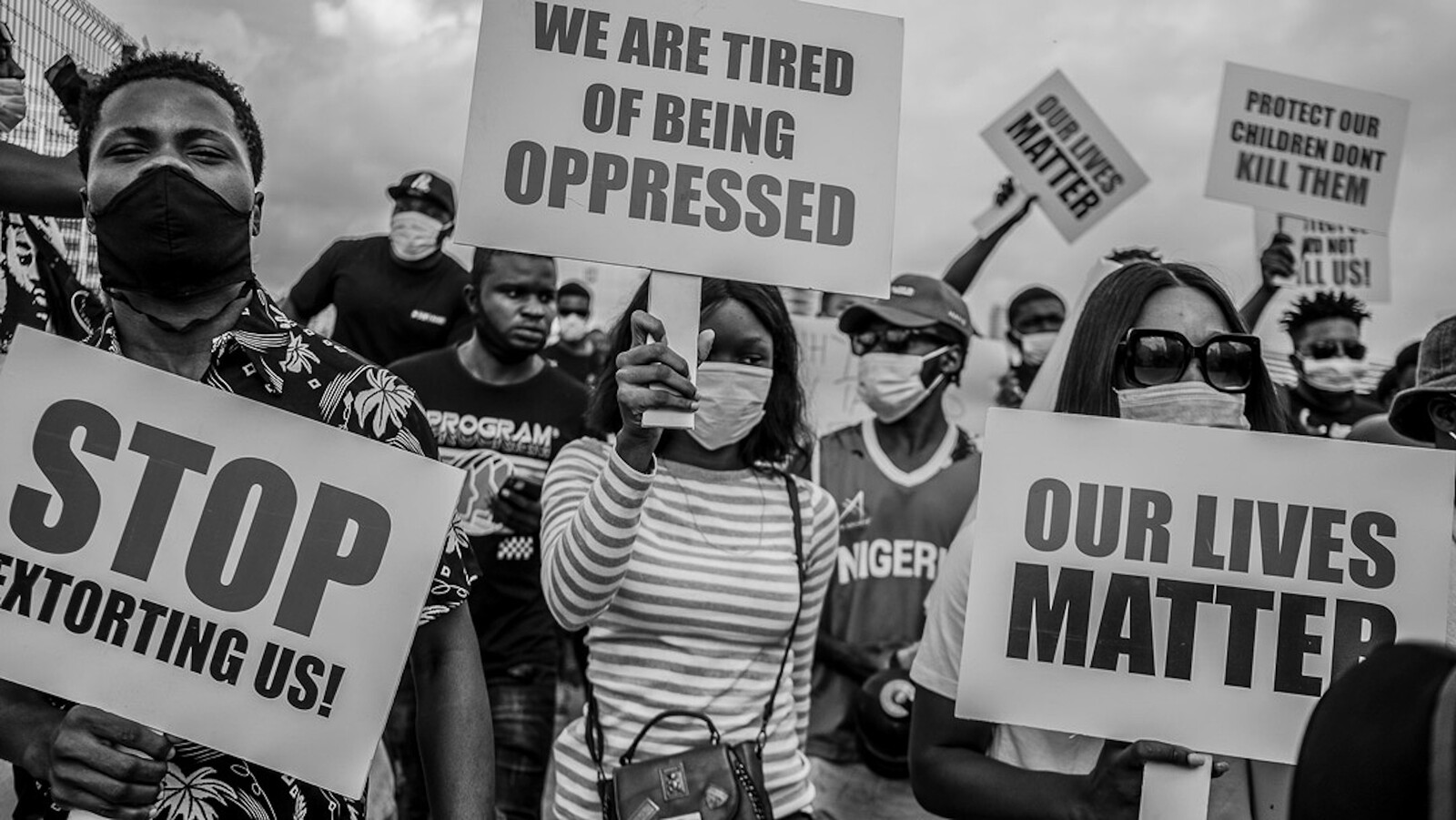
In more ordinary times, the high season for Lagos’s art scene runs through October and November. This year, as in other cities across the world, major events have been scaled back and directed towards a local audience, with an emphasis on smaller physical events and online presentations. But disruption in Lagos has not been solely due to the pandemic. In the first weeks of October, the city was brought to a standstill by the decentralized social movement #EndSARS, which saw Nigerian youths take to the streets across the country to demand an end to police brutality and bad governance. Members of the art community mobilized, joining protests on the ground and drawing outside attention through their social media channels. Following the fatal shooting of at least twelve protesters on October 20 by the Nigerian military, the art community has shown solidarity: postponements and program modifications as direct response.
The major events in the city’s calendar include the LagosPhoto Festival, ART X Lagos art fair, and (every odd year) the Lagos Biennial, all spearheaded by artists, cultural producers, and entrepreneurs who have, over the past decade, developed innovative, context-responsive platforms for the city’s contemporary art scene. The first week of November traditionally …
November 19, 2020 – Feature
Seeing is Remembering: the Expanded Field of Art Writing
Saul Anton

Meta is a collaboration between art-agenda and TextWork, editorial platform of the Fondation Pernod Ricard, in which writers reflect on the experience of writing about art. Here, Saul Anton draws on Charles Baudelaire and Rosalind E. Krauss in reconsidering “Giving Space, Sculpting Time,” his essay on the work of Guillaume Leblon.
I’d like to begin with a confession. My essay on the work of French artist Guillaume Leblon turns on his 2019 exhibition at LABOR, a gallery in Mexico City. But I never saw the show—not in person. Nor did I see any of the other exhibitions the artist has held over the past two decades. I wrote my essay on the basis of dozens and dozens of images of his works and of these exhibitions, which I reviewed in detail over several lunches in New York with Guillaume, and on my own. Once I’d drafted my essay, I fact-checked it with him work by work.
Perhaps that’s a scandal to some. I don’t really know. All I can say is that I’ve never felt that way. But I know that a lot of people—artists, critics, and curators—feel very strongly that you must see the work in person. Embodied …
November 3, 2020 – Feature
State of Relax
Eileen Myles

I’m wondering what it would be like if the United States just let go. Like stopped uniting. Like stop opposing part to part, and a foot say Florida just relaxed shaking all those old bodies free and extended itself deeper into the water maybe nudging Cuba, not even entirely doing that but making wavy gestures in its direction. Texas could just fall back on itself and sprawl into Mexico not being different being the same and really vanishing into Mexico and sliding sliding sliding into Guatemala and El Salvador thinking I’m you some parts skidding into south America. Way up north south dakota and north Dakota go I’m you too. And together both of them forget who they am. Cape Cod goes to Europe. On a tiny boat with Bas Jan Ader his toes leaning over the edges of Provincetown. What’ll Alaska do. Become Canada and Canada says I’m Russia and Russia roars and goes to sleep. California becomes one giant bed. It lies its head on Mexico hello and scratches its toes against Oregon who’s asleep in the arms of Washington who wants to change their name right away. Montana has an excess of sperm which it buries in …
October 30, 2020 – Feature
Amy Sillman’s Faux Pas
Rosanna Mclaughlin
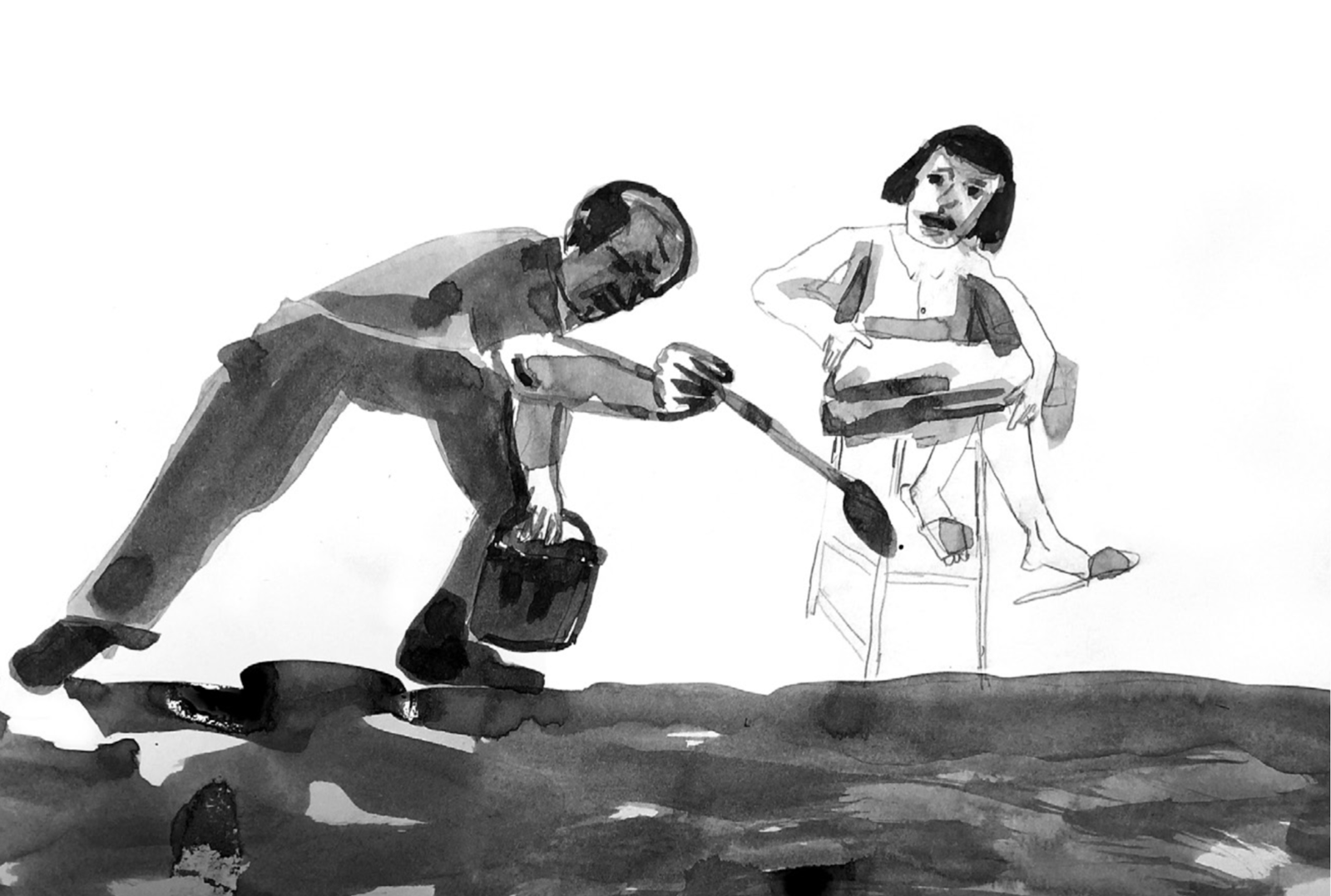
Abstract painting has spent much of the past decade in the doghouse. Not only has it been usurped by figurative painting, the genre du jour of a time defined by identity politics and visual representation, it has also been tarnished by its association with Zombie Formalism, gaining a reputation (often deservedly) for apathy and commercial cynicism. Amy Sillman’s selected writings are a welcome reminder that how you paint, as well as what you paint, is intimately associated with the experiences of the body, and that the affective and intellectual significance of process should not be underestimated.
An influential American painter working in what might be called the afterlife of Abstract Expressionism, Sillman is also an inventive and charismatic writer. Published by After 8 Books, with an introduction by Lynne Tillman, Faux Pas comprises seventeen texts written for journals, zines, and lectures between 2009 and 2020. Included are a letter in which Sillman explains that she has broken up with abstraction, which she characterizes as an uptight ex; catalogue essays on peers and influences, Laura Owens, Eugene Delacroix, and Philip Guston among them; and idiosyncratic theories of shape, color, and the diagram, in the form of essays and cartoons. The book …
October 23, 2020 – Feature
Paris Roundup
Rachel Valinsky

Working in near-isolation in her Parisian bedroom-studio from the early 1970s until her death in 1981, the Alsatian artist Marcelle Cahn took an archive of old tourist postcards—the Eiffel Tower, a train station, a cathedral, a sleek white marble polar bear—and dappled them with shapes of varying sizes and colors. Displayed in the two-part group exhibition “Le plan libre – 1st chapter” at Jocelyn Wolff (the second part opens in early November), this modest intervention by an artist better known for her abstract paintings and collages feels anything but nostalgic: in isolation, one makes do with what one has.
In contrast to those galleries presenting artworks that either respond to the pandemic directly or were made during lockdown, oblique but timely approaches such as this stand out. Seeking to invert the limitations of confinement, this exhibition takes as its premise the titular architectural concept of doing away with interior walls to create one large open space—a conceit which plays out in the show’s uncluttered layout. Like Cahn’s delicate compositions, Georges Koskas’s dotted and lined geometric abstractions from the 1950s evoke the utopian, modernist aspiration to devise a universal pictorial language. Guy Mees’s sly, colored, cutout paper scraps from his …
October 19, 2020 – Feature
“Digital Reincarnations”
Xin Wang / Lu Yang
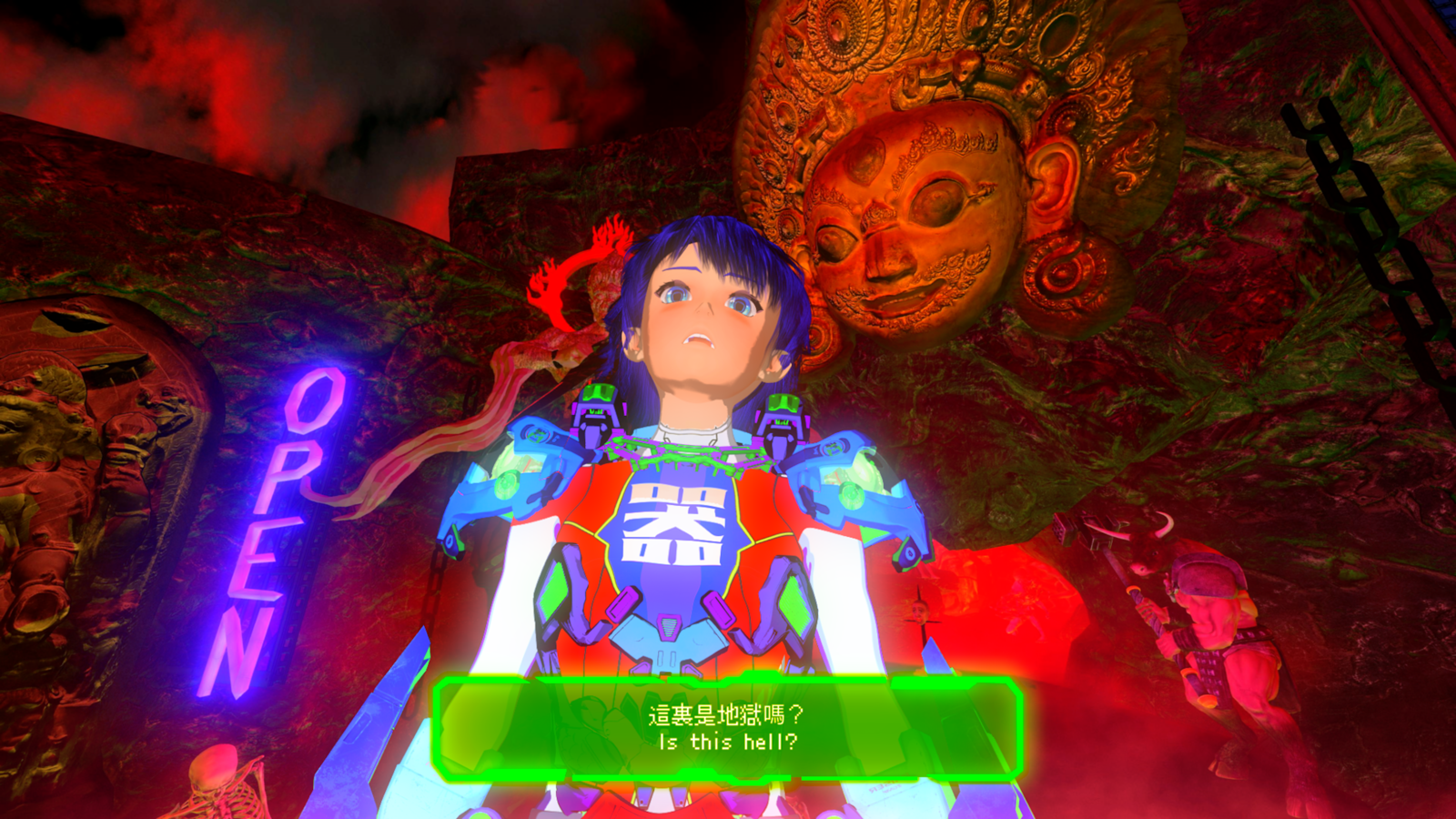
The practice of Shanghai-based artist Lu Yang is best characterized as a continuous project of world-building. His videos, computer games, and digital avatars combine a distinctive repertoire of intellectual traditions and cultural references: Buddhist and Hindu cosmology (as touched on in the 2015 video Moving Gods, exhibited in the China Pavilion at that year’s Venice Biennale), anime and gaming subcultures, neuroscience, and bio-technology. The artist combined these subjects into a delirious multi-chapter video game The Great Adventure of Material World, which featured in the 2018 Shanghai Biennial as part of a massive installation resembling an arcade hall. In the game, players control the Material World Knight through realms such as Hell, Paradise, Space Journey, and Fight with the Self. Among the characters from the artist’s earlier works to make a cameo was Uterus Man—an androgynous character with superpowers tied to the female reproductive system, who first appeared in a 2013 video—and the eponymous protagonist of Wrathful King Kong Core (2011), a Tibetan Buddhist deity whose fearful expressions draw on religion and neurology. Lu’s work is at its most radical when it addresses fundamental issues: life, death, and the (un)knowability of the self.
In Lu’s new project DOKU (2020–ongoing), the …
October 9, 2020 – Feature
London Roundup
Chris Fite-Wassilak

It’s an unlikely benediction: two identical photos frame Dozie Kanu’s exhibition “Owe Deed, One Deep” at Project Native Informant: a small, slightly blurred image of a tower with a hand at the top, reaching awkwardly towards the sky. Emo State (2020) seems to have been taken from a moving car, the landscape around it giving some sense of the sheer scale of the tower, a religious monument modelled on the tower of Babel in southern Nigeria, constructed only a few years ago and torn down in 2019. The ghost of this demolished structure, the two hands waving over the five sculptural assemblages gathered below them, casts the works as their own temporary monuments, momentary markers to whatever spirit or feeling has possessed us, before disappearing. In a corner, St. Jaded Extinguish (2020) is a gray fire extinguisher stand placed forlornly on a flimsy, short set of black stairs, a bottle opener attached to its base that spells out a nihilistic mantra: “SELF SERVE.”
Making my way around exhibitions for the first time since February, it was such slight, haunted gestures that stuck with me. It feels disconcertingly normal to traipse around the city at this time of year, albeit with pre-booking …
September 30, 2020 – Feature
Maria Hlavajova and Sven Lütticken (Eds.), Deserting from the Culture Wars
R.H. Lossin
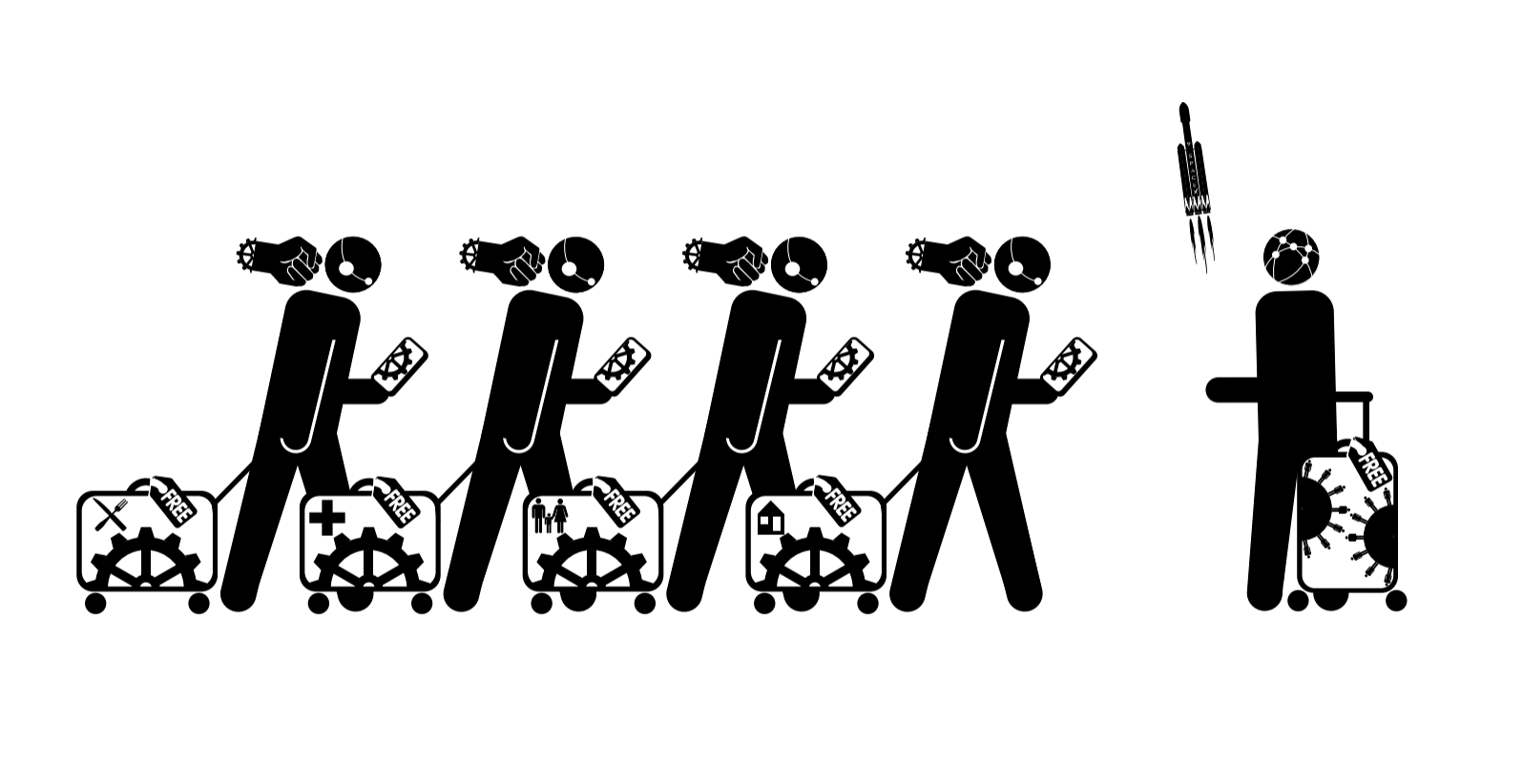
Desertion is a compelling and complex political strategy. It is the opposite of joining—which is a precondition for political action almost by definition—and it signals more than simply dropping out or quietly withdrawing. Desertion implies active enlistment—voluntary or involuntary—and thus describes either a process of disillusionment or a breaking point. Such militaristic language also raises the stakes of departure: while civilians might make a decision to quit a job, leave a city, or cancel membership of an organization, “desertion” has serious consequences. It is an act that risks real civil and social exile.
The notion of cultural desertion is also, for better or worse, inherently utopian: it requires an elsewhere to escape to. To suggest that we might be able to make a genuine exit from a cultural condition marked by polarized, irrational, and uncritical discourse is to invoke a revolutionary horizon. Deserting from the Culture Wars, a collection of essays by writers, artists, and curators, edited by Maria Hlavajova and Sven Lütticken, promises to explore the possibilities that might arise if the “volunteer army” of cultural producers refused to “play these war games.”
The term “culture wars” was popularized by sociologist James Davison Hunter in his 1991 book …
September 25, 2020 – Feature
Piles of expressivity
Elizabeth A. Povinelli
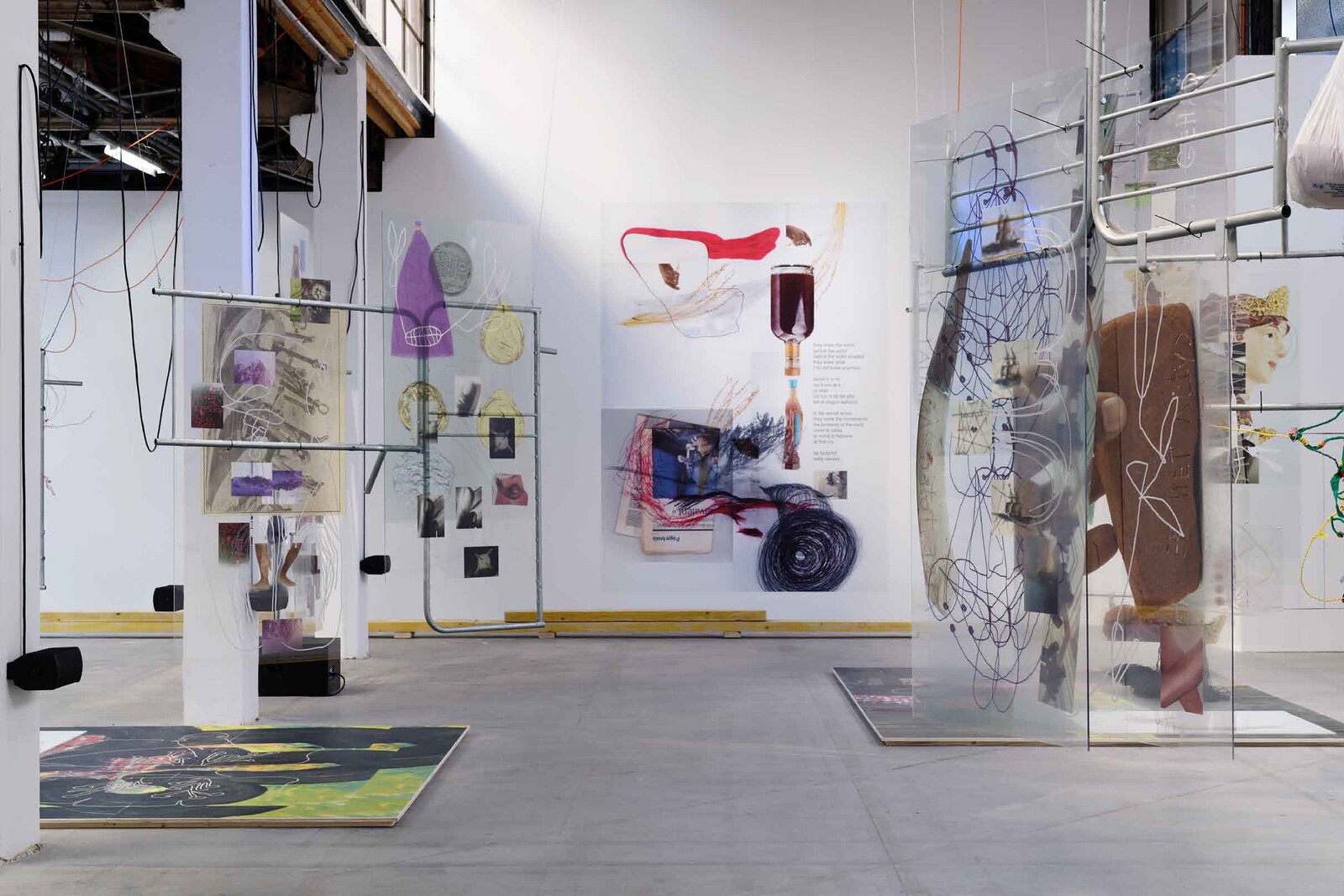
Meta is a collaboration between art-agenda and TextWork, editorial platform of the Fondation Pernod Ricard, in which writers reflect on the experience of writing about art. Here, Elizabeth A. Povinelli writes of her relationship to language and considers how her essay on the work of Julien Creuzet, “In the Middle of it,” was shaped by the artist’s own approach to composition.
Language and I are not easy friends. We get along, sometimes very well, but often in a mutually irritated, strained relation. I am sure language would have her own story, but mine is this—she tends to express herself in a straight line, one element unfurling after the other, when what I sometimes want to express is the everything of something altogether in its messy material intersections. I could remind myself that in fact language operates with a spiraling multidirectional dynamic. Each word forces those already written to hold or to lose their meanings; and every word creates a virtual world of other words potentially available. Moreover, these unruly semantic dynamics are shaped by equally energetic metapragmatic dimensions. Every utterance attempts to conjure and hold a type of reality, its material contours, its legitimate actors, its values and wastelands, …
September 22, 2020 – Feature
Glitch Throws Shade
Legacy Russell
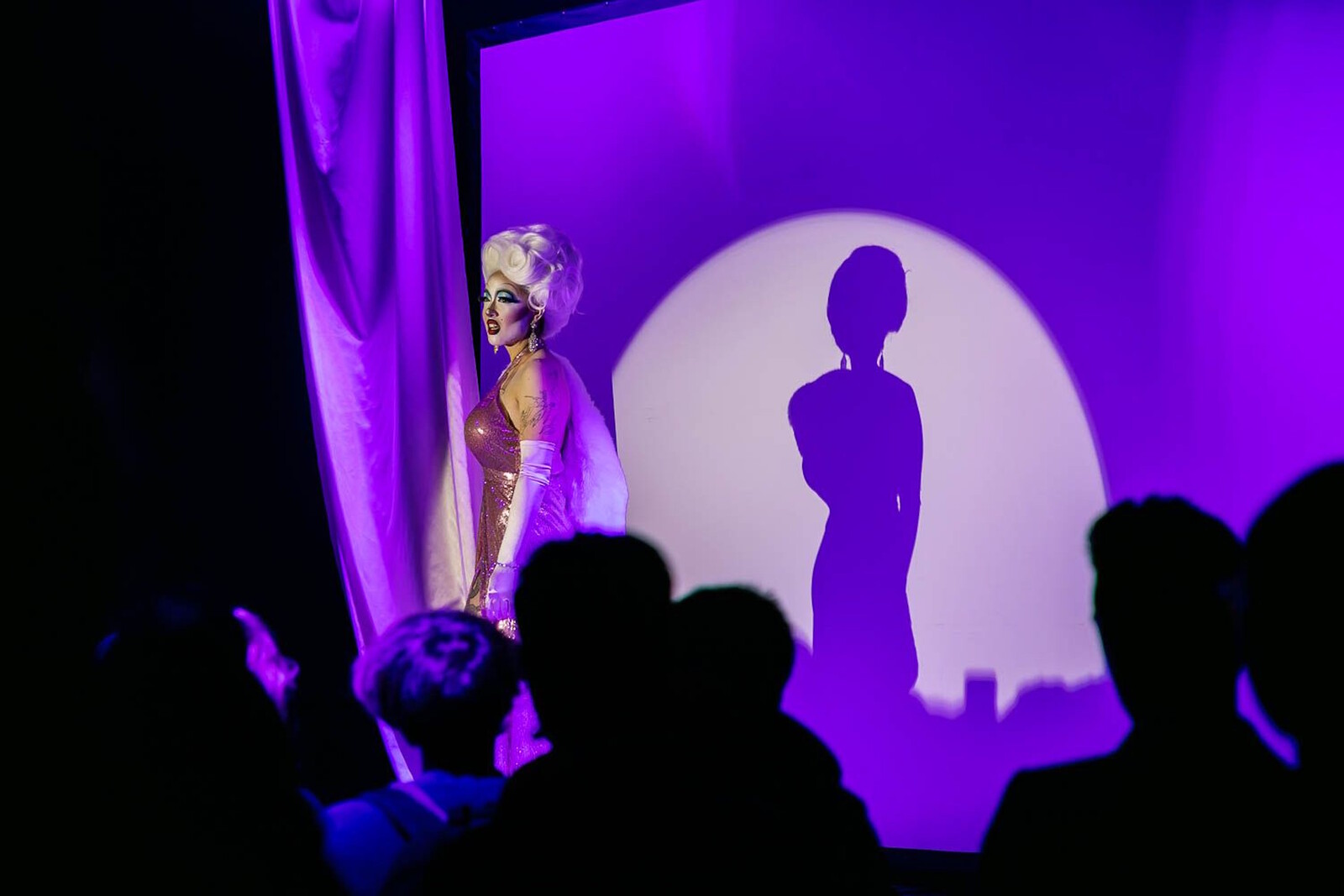
Legacy Russell’s Glitch Feminism explores the relationship between technology and identity. In this extract from her forthcoming book, she considers the work of Juliana Huxtable and Victoria Sin in the context of her proposal that the “glitch” is a means of renegotiating and subverting normative categories of sexuality, race, and gender.
Raised in College Station, Texas, Huxtable was born intersex and assigned to the male gender. During the 1990s, in a moment where the internet and the mythology of its utopia was on the rise, Huxtable male-identified, going by the name Julian Letton. In a conservative Texan, Christian milieu, claiming a trans identity seemed unimaginable. Yet when she left home to attend Bard College in upstate New York, she entered a period that marked a blooming in her sense of self, one she speaks about openly: “I was fully brainwashed by the Bible Belt shit […] but the internet became a form of solitude. It gave me a sense of control and freedom that I didn’t have in my everyday life, because I walked through life feeling hated, embarrassed, trapped, and powerless. I felt very suicidal.”
As her art practice expanded, Huxtable’s engagement with various digital platforms—chatrooms, blogs, social media, and beyond—increased …
September 17, 2020 – Feature
“absences and nothingness”
Johanna Hedva / Bárbara Rodríguez Muñoz
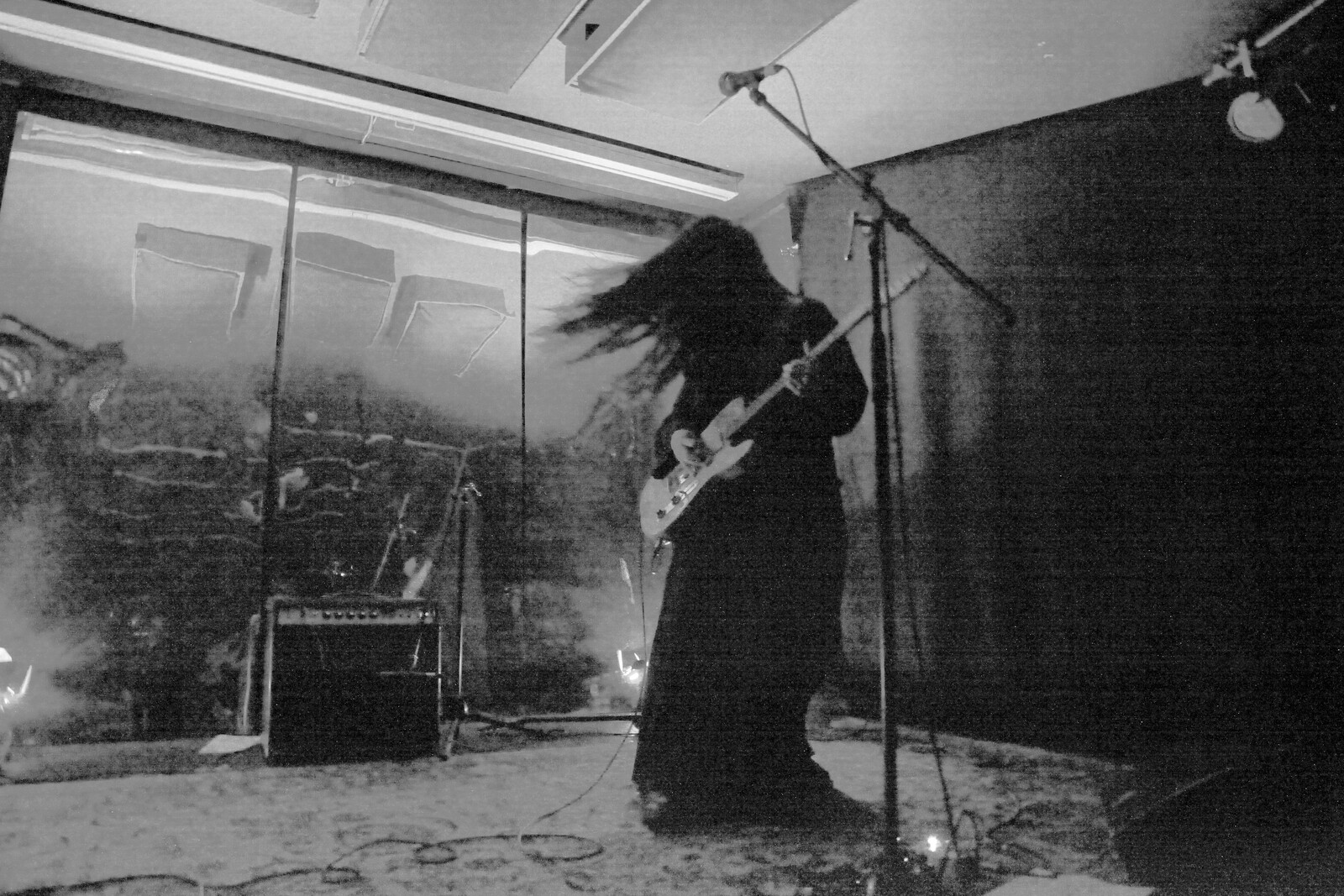
Johanna Hedva is a Korean-American writer and artist based in Los Angeles and Berlin whose practice traverses mysticism, music, and astrology, and the politics of illness, disability, and gender. They have relocated Ancient Greek dramas to feminized and queered contexts, and staged doom metal concerts informed by Korean shamanism; their essay “Sick Woman Theory” connects sickness and impairment with gender, class, and coloniality. Their practice encompasses performances, films, novels, music, readings, and installations: all these forms, in Hedva’s own words, “transforming into each other, trespassing.”
In the summer of 2020, Hedva presented their first solo exhibition amidst the rubble of the Klosterruine Berlin. “God Is an Asphyxiating Black Sauce” showcased a decade of texts, songs, and performances, and audio versions of sections from their 2020 book, Minerva the Miscarriage of the Brain. The installation was designed to be accessible to all bodies: the Klosterruine was empty aside from red ramps, two speakers, and a series of benches, while the exhibition also took place on the website godsauce.black (with the sound pieces captioned and described) and across the city of Berlin.
I first met Hedva last year at the exhibition I co-curated with George Vasey at Wellcome Collection, Jo Spence …
July 31, 2020 – Feature
Moyra Davey’s Index Cards
Filipa Ramos
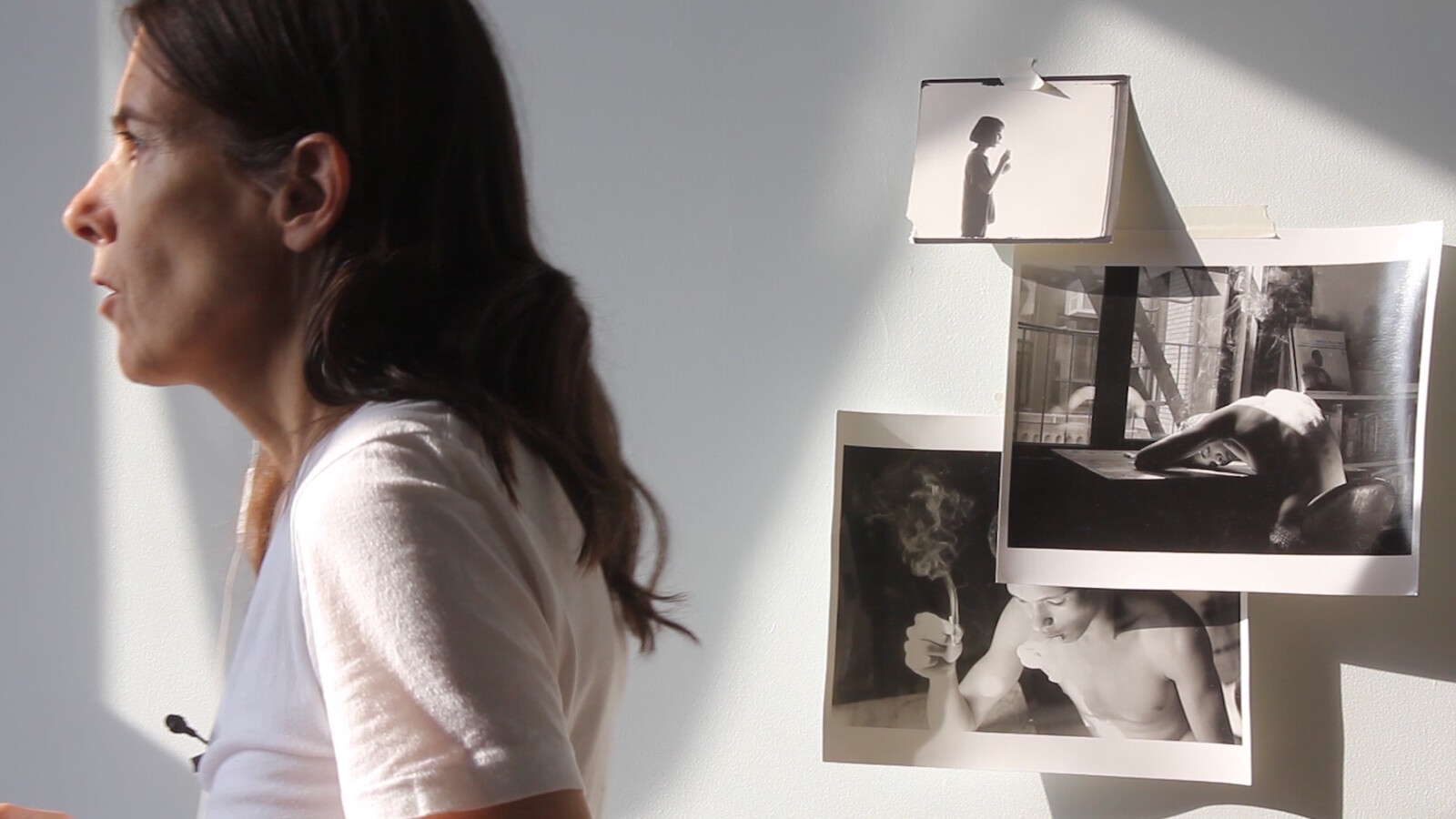
During the lockdown, I found solace in books that took me to places beyond my reach. I visited the atemporal lands of the Kesh civilization, brought to life by Ursula K. Le Guin in Always Coming Home (1985); I discovered the outlandish urban bestiary of Shaun Tan’s Tales from the Inner City (2018); I fled to that ancient epoch when animals were gods and humans were animals which Roberto Calasso describes in The Celestial Hunter (2016). In between, I compulsively watched the animal videos posted by the Canadian-born, New York-based artist Moyra Davey on her Instagram feed.
Between March and May, Davey filmed a photogenic bird feeder, an aquamarine box that looked like a vintage television monitor attached to a tree branch, through the lens of a telescope. First came the birds: blackcaps, blue jays, coal tits, goldfinches, and other, less familiar North American passerines. Next came the wild turkeys, then a family of black bears, a mother and two cubs playing in Davey’s porch and on the screen right before my eyes. These snippets made my silent spring. So when Davey’s Index Cards—a compilation of essays written between 2003 and 2019, collected by Nicolas Linnert and published by Fitzcarraldo …
July 30, 2020 – Feature
Remembering Rebeccah Blum
Jillian McManemin / Matthew Post
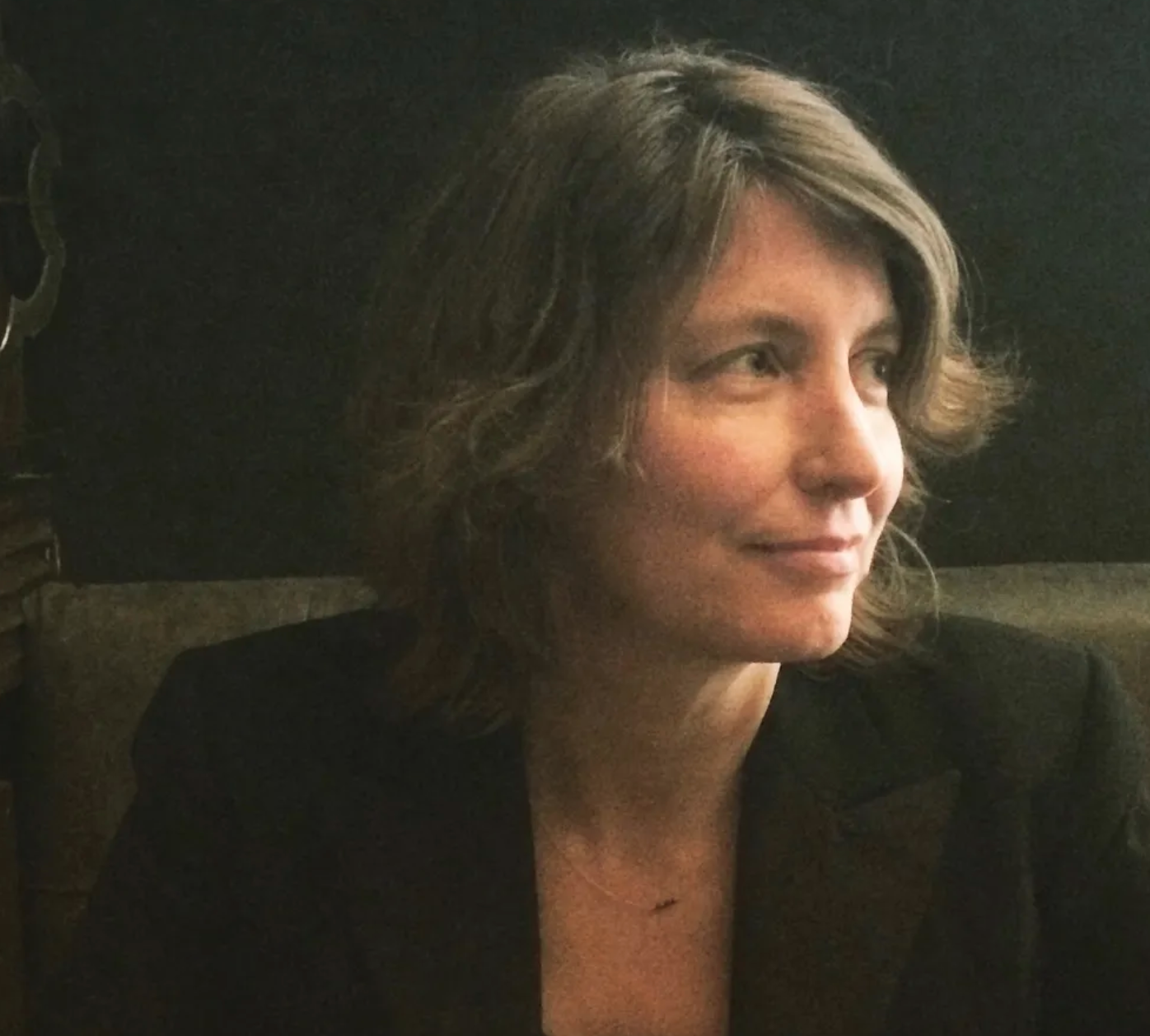
STATEMENT A – SAY HER NAME
Rebeccah Blum was murdered last week. Her body was discovered in the apartment of a male artist. In the days after her death, tabloids and, later, some sections of the art press casually reported variations on the formula: “Brad Pitt’s friend, male artist X, was found dead at a location two hours outside Berlin. His gallerists are sad.” Only further down the report does the reader find out that he had confessed to killing “a woman” before fleeing the city. In some reports, her name was mentioned only in passing, in among a laundry list of Artist X’s career accomplishments. In others, all we get is the make and model of his getaway car. But she had a name. Rebeccah Blum was a woman, she was a valued member of Berlin’s art community, she was a mother, she had a profession and a rich life, and deserves to be remembered as such. Say her name.
At the same time, a campaign has been running on social media. The Women Supporting Women “challenge” sees women ask other women to post black-and-white pictures of themselves as a gesture of gender solidarity. Social media feeds are full …
July 29, 2020 – Feature
The Exhibition Catalog
Kimberly Bradley
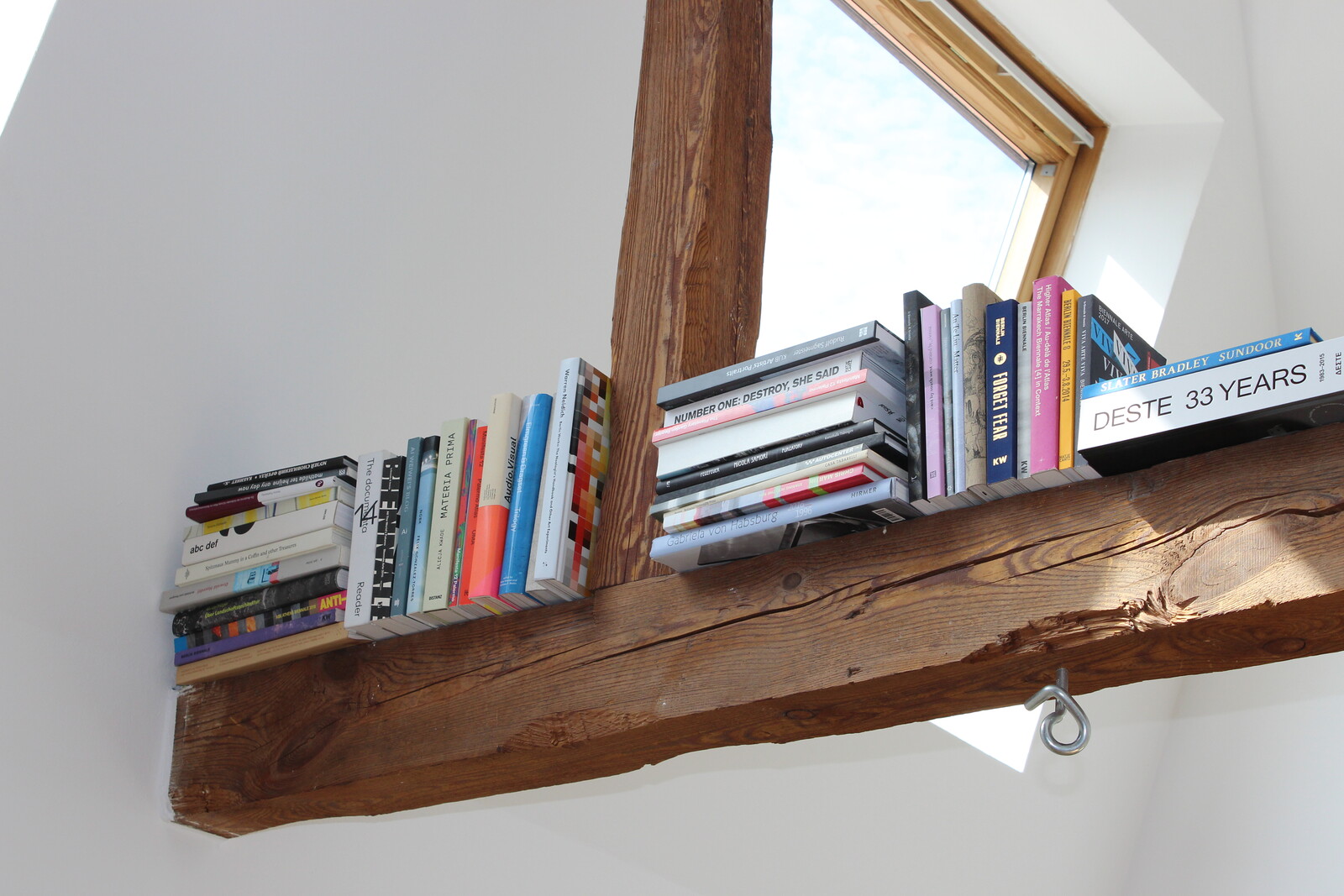
In his 1931 essay “Unpacking my Library,” Walter Benjamin describes unboxing his collection of books in a single day, working without stop from noon until past midnight. Months after moving house on the first day of Berlin’s lockdown, I’m still working on mine; my books are, as Benjamin would say, “not yet touched by the mild boredom of order.” I’ve been slowed by a desire to read these exhibition catalogs, artist books, and hybrids of the two. With no opportunity to visit IRL art spaces, and overwhelmed by digital “viewing rooms,” my catalogs became my galleries and institutions.
The process reminded me of my earliest brushes with fine art, the pictures in my mother’s Art History textbooks (including a vintage mid-1960s edition of H. W. Janson’s History of Art) when I was a kid in rural America with no access to the real thing. The books in my own collection are artifacts of events I attended, and others I wish I had. They are historical documents, discursive platforms, snapshots of zeitgeists. They are windows or deep dives into artists’ practices, the infrastructures of exhibitions, and the thoughts supporting, diverging from, and swirling around art and all its mechanisms. And …
July 27, 2020 – Feature
New York City Roundup
Terence Trouillot
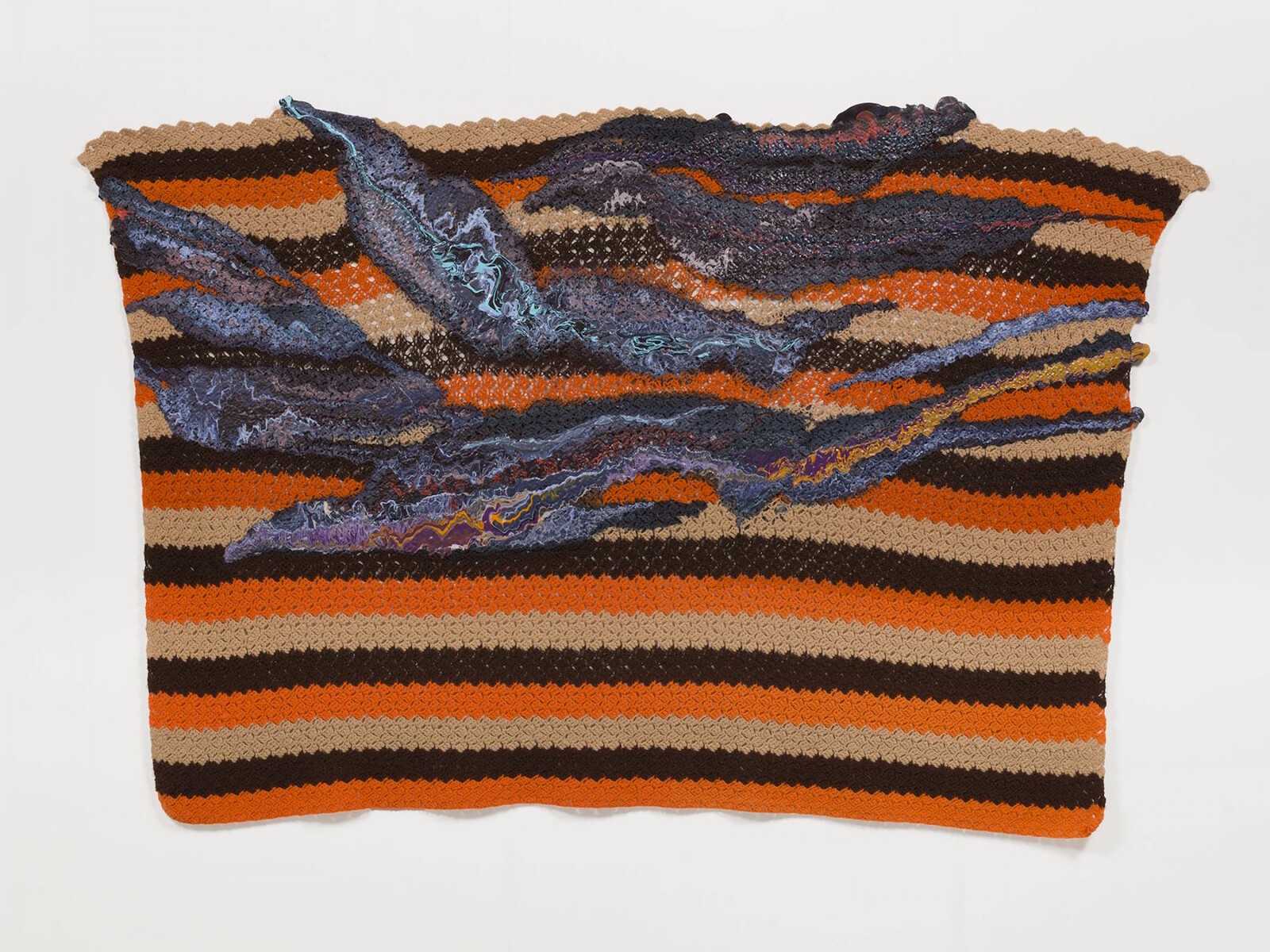
I didn’t think I’d be this excited to go back to a gallery. In some ways, I’ve enjoyed experiencing art within the confines of my Brooklyn apartment over the past months, and I’m still excited by the possibilities arising from the advent of novel digital platforms. But this time away from real-life art viewing has made the experience a novelty, and as galleries started to reopen it felt like a much-needed indulgence—after months of social distancing, and then weeks of defying said social distancing to protest in the streets against the most recent examples of state-sanctioned violence against Black bodies—simply to be back.
At “Jack Whitten. Transitional Space. A Drawing Survey.” at Hauser & Wirth on the Upper East Side—an exhibition which outlines Whitten’s exceptional works on paper chronologically, from the 1960s to the 2010s—I was surprised by the boyish glee I felt just at noticing the pronounced physicality of paper: the deckled edges, the wrinkle in the page, the raised contours of paper cut-outs collaged onto another flat surface. The show demonstrates the careful evolution in Whitten’s work from figuration to abstraction, but also focuses on the artist’s attention to material, and the various techniques that make his later …
July 17, 2020 – Feature
“Art’s critical force”
Vivian Sky Rehberg / Maria Lind
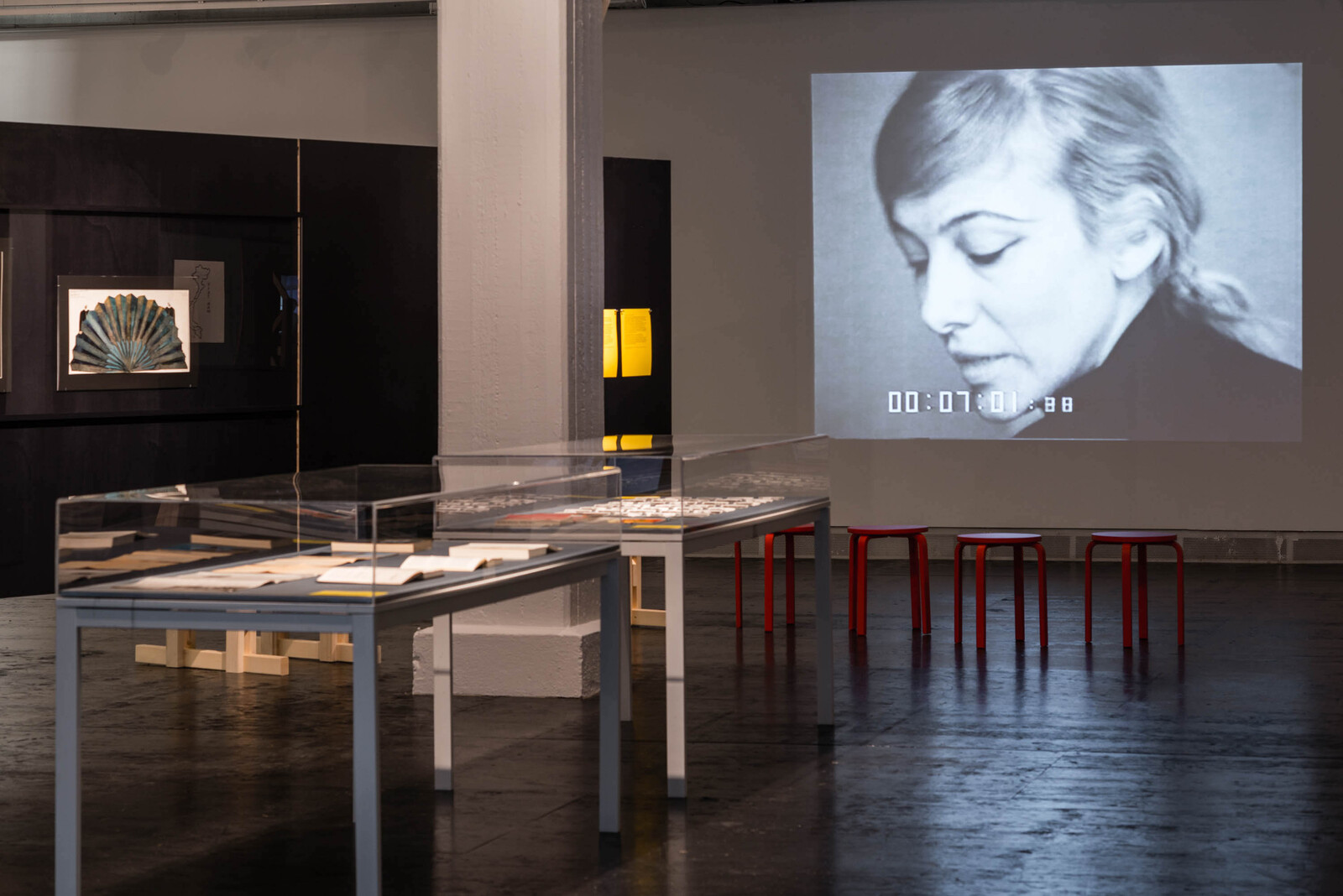
I first met the curator, critic, and educator Maria Lind in the early 2000s, while I was working as a curator at the Musée d’Art moderne de Paris and she was the director of the Kunstverein München. We have kept in touch since that time, and my annual visits to Sweden always include trips to Stockholm’s Tensta konsthall, which Lind directed from 2011 to 2018, as she always stops by when visiting the Netherlands, where I have been based for the past eight years. Due to a variety of circumstances, however, it seemed unlikely our paths would cross again anytime soon.
While working from home in Rotterdam, two of Lind’s books—Selected Maria Lind Writing (2010) and Seven Years: The Rematerialisation of Art from 2011 to 2017 (2019)—have been within reach on my desk. As arts institutions face a time of unprecedented change, it felt like a good moment to return to Lind’s 2002 essay “RSVP, or: What Rhythm, Scale, and Format Can Do With Art.” In it, Lind writes: “I know of no better way to approach and get a grip on the world—to address and question life—than through art […] Contemporary art, in its greatest moments, can figure …
July 13, 2020 – Feature
Earth, Works, and Workers in Laura Wilson’s Deepening
R.H. Lossin
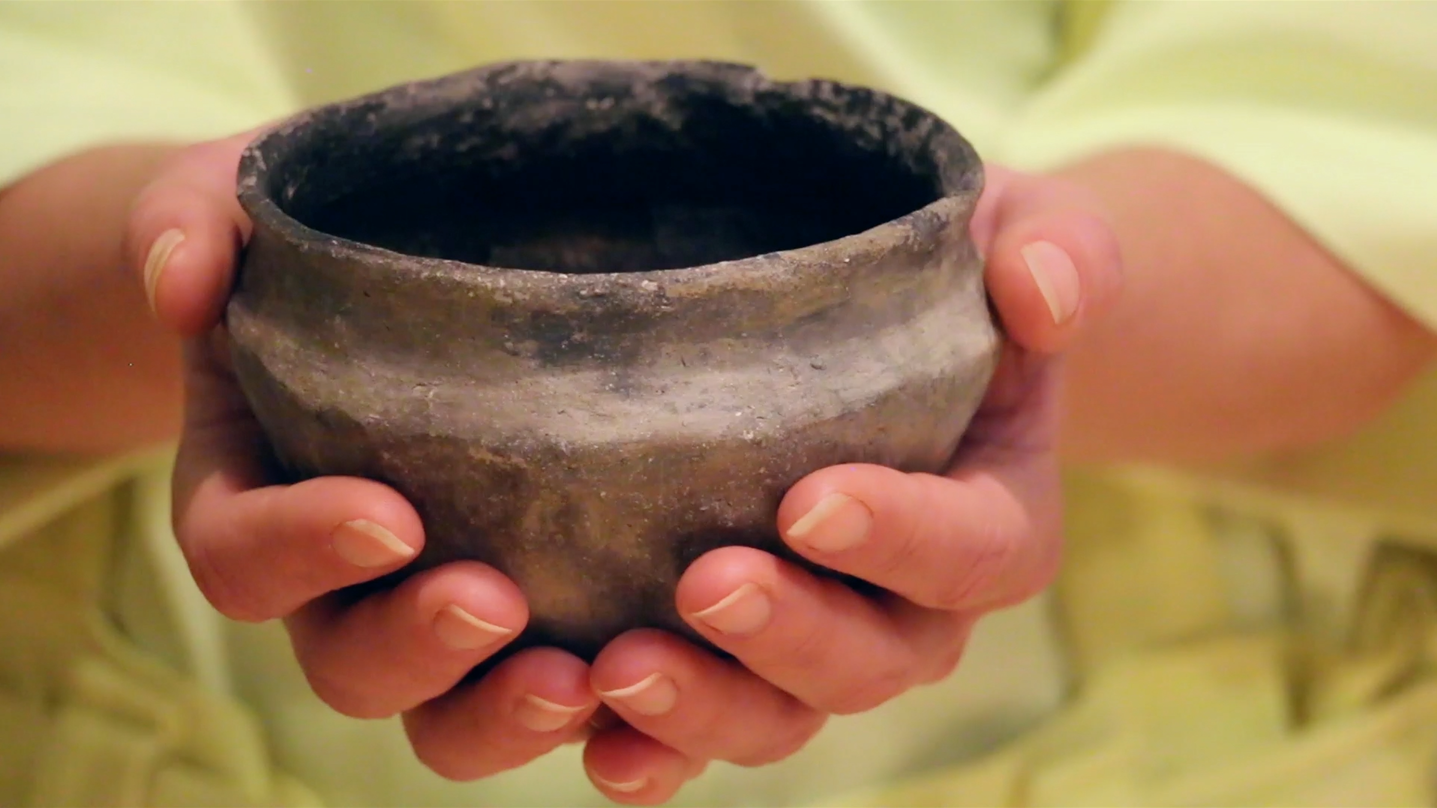
At first glance, the brick is a very simple thing. Perhaps the oldest building material still in use, bricks were made and sun-dried in hot climates as early as 7000 BCE; the fired brick with which we are familiar has been around since c. 3500 BCE. The brick’s making is relatively easy to imagine, as is its use. Its lack of technical complication evokes a utopian past unburdened by the impenetrable nature of contemporary technological life, constructed simply from earth and fire.
Deepening (2020), a short video by the Belfast-born and London-based artist Laura Wilson, is set in a 150-year-old brick quarry outside of Peterborough. The video was produced as part of an exhibition commissioned by New Geographies, a project funded through Arts Council England that looks to reimagine the cartography of the East of England through the creative documentation of neglected or overlooked places. Wilson’s project, an installation that included artifacts, original works, a performance and the video discussed here, was organized around a Bronze Age settlement dating to c. 850 BCE that was discovered at the edge of the quarry in 1999. Through the geographical and temporal conjunction of a modern site of industry and an ancient settlement, …
July 8, 2020 – Feature
Attending to our Houses
Tarini Malik

The world is angry, the world is fearful. I am mobilized and (in part) optimistic. At times, I feel resentful. This is not new. I am not shocked.
Over the course of a few days in early June, I scrolled through hundreds of quotes by Angela Davis, reading lists including books by Reni Eddo-Lodge and Audre Lorde, and images of artworks by David Hammons and Glenn Ligon, posted and shared on social media by museums and galleries, by white and non-black friends and colleagues. I am not saying that these voices should not be heard and shared. We must recognize, and continue to recognize, their urgency. Instead, I ask if this is enough. It is not.
The immeasurable grief and anger that black people the world over continue to demonstrate on the streets was catalyzed by police violence in the US, but it has shed light on the rampant institutional and societal racism that reaches nearly every corner of this earth. Outrage should not solely be directed towards America; outrage should be directed everywhere that upkeeps the same brutalities, and where Western colonialism has enforced its systems of control and bias. In London, where I am based, the art …
July 1, 2020 – Feature
Bernadette Mayer’s Memory
Wendy Vogel

Though she is best known today for her poetry, Bernadette Mayer’s 1972 exhibition of her durational writing-and-photography project Memory at 98 Greene Street in New York was highly influential: the young Kathy Acker, for one, began a feverish correspondence with her after her immersion in its images and voice. In a journal entry around the same time, Acker wrote that she admired “B. Mayer’s work list of daily events facts,” commenting that “I feel her work touches reality I distrust my own.” Acker, a post-punk appropriationist who devoured classical literature for the creation of her own twisted myths, may have longed for reality, but never for realism. Similarly, Mayer’s genre-busting work was a diary that never settled for the purely diaristic.
For the month of July 1971, the 26-year-old poet kept a stream-of-consciousness journal and shot a roll of 35mm Kodachrome slide film every day. When the month was up, she projected the slides and supplemented her original observations with new details taken from the images—casual scenes of everyday life, from her lover in the driver’s seat of a car to nature walks and late-night chats with fellow artists. Memory, the completed work, comprised a grid of 1,116 photographs …
June 29, 2020 – Feature
London Roundup
Ben Eastham
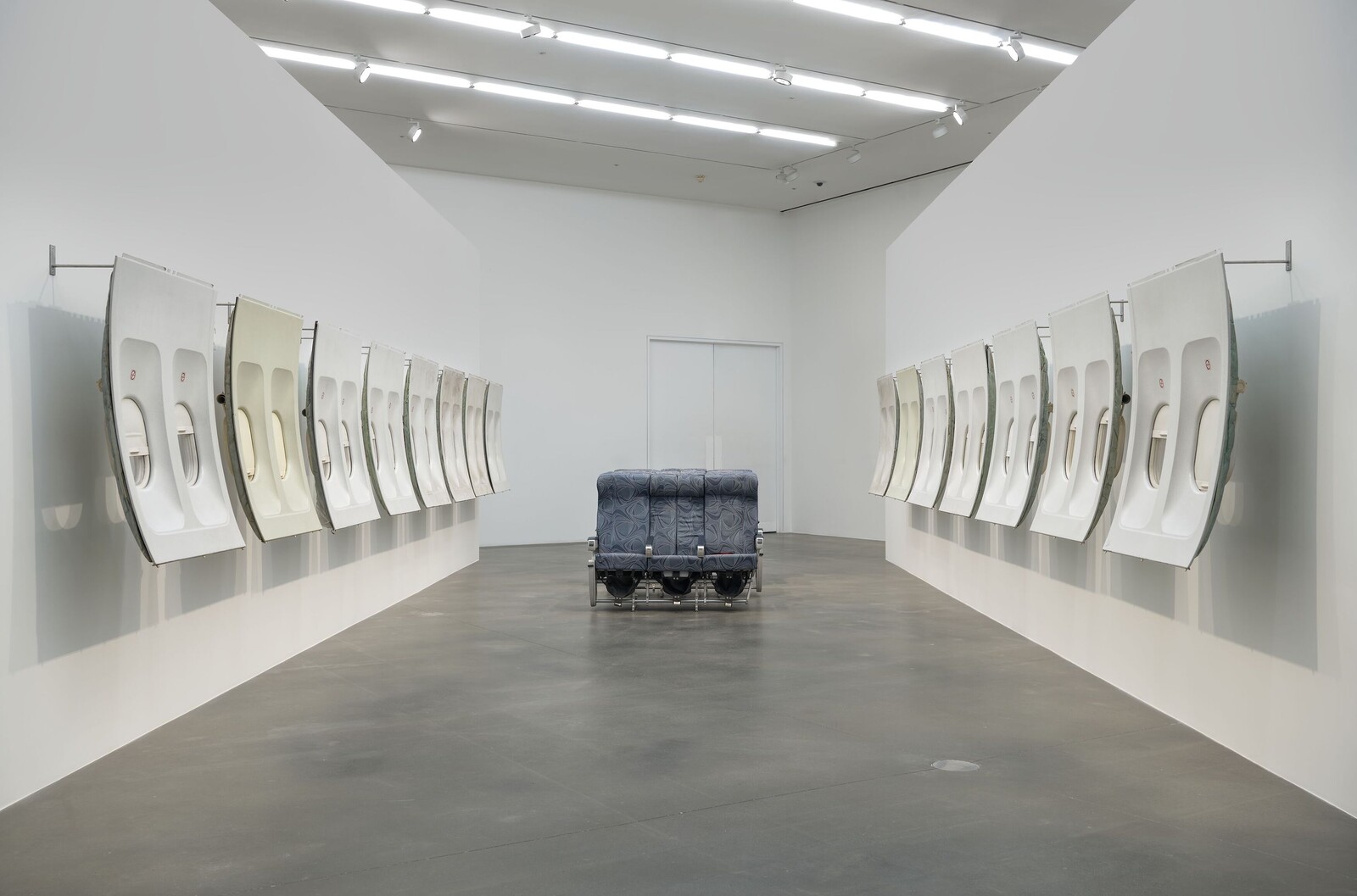
Every time I approach White Cube’s gleaming south London base, I am reminded of a trope in science-fiction films: a professor of linguistics is whisked to a top-secret government facility, decontaminated, and introduced to an alien intelligence whose ominous burps she is tasked with translating. These daydreams are no doubt prompted in part by mental association with Brian O’Doherty’s Inside the White Cube (1976), which drily observes that the “ideal” contemporary art space “must be sealed off from the outside world” in order to preserve the closed system of values that operates within it. But pulling on a mask, sterilizing one’s hands, and confirming one’s identity with a security guard lends these visions a new lucidity.
Beyond the hermetic seal, Cerith Wyn Evans’s experiments in sculpture and installation are right at home within the self-contained network of relations that O’Doherty describes, with a roomful of smashed glass screens referencing the high-modernist touchstones of Duchamp’s The Bride Stripped Bare by Her Bachelors, Even (1915–23) and its documentation by Man Ray. Two potted trees rotating slowly on turntables, their branches splayed over a cruciform bamboo trellis and illuminated by a spotlight that casts their silhouettes over the far wall, suggest an …
June 26, 2020 – Feature
A question of degree
Chris Sharp
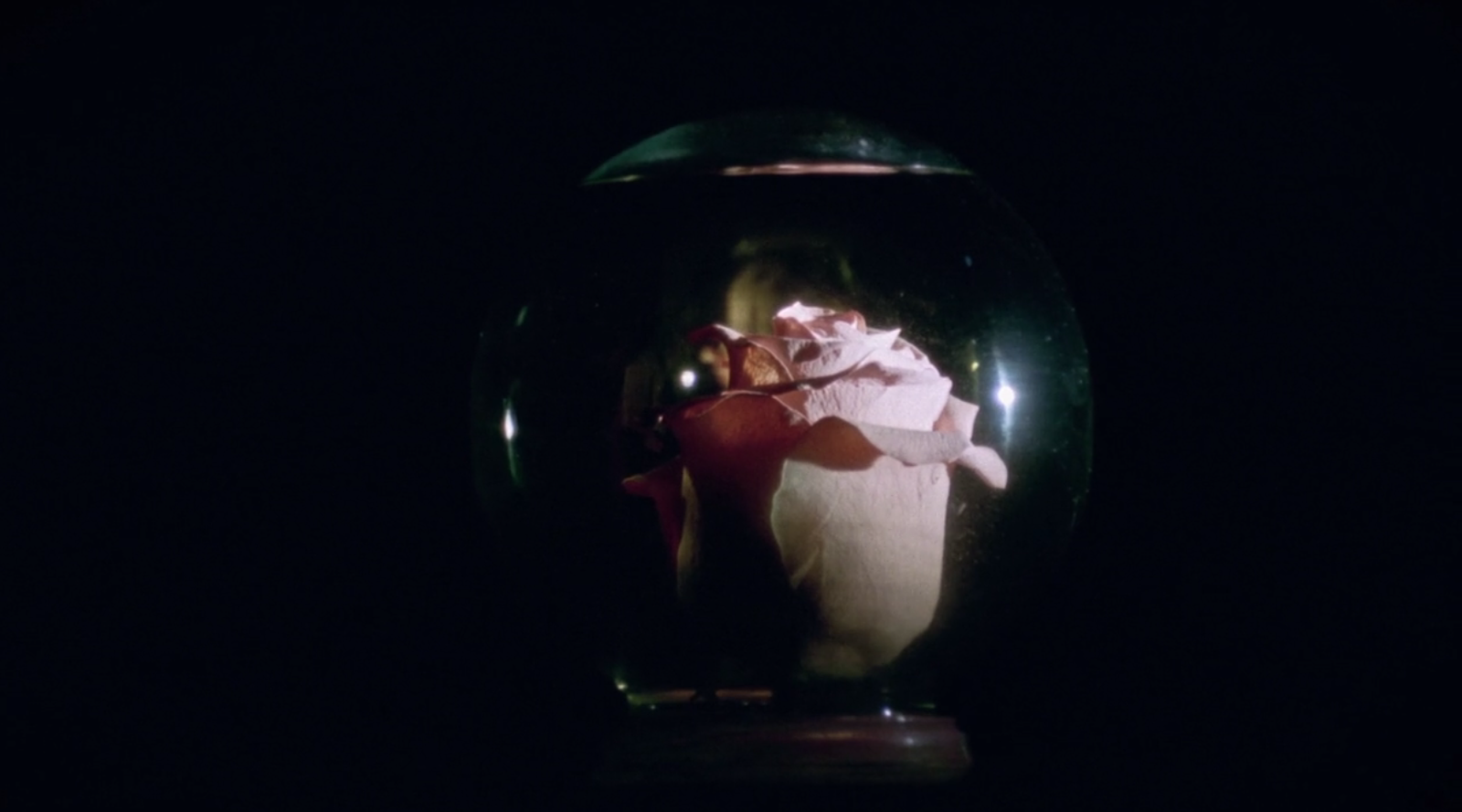
Meta is a collaboration between art-agenda and TextWork, editorial platform of the Fondation Pernod Ricard, in which writers reflect on the experience of writing about art. Here, Chris Sharp considers the difficulties he encountered in responding to Jean-Charles Hue’s films for his essay “Witness on the Threshold.”
It took me a year to write my essay on the work of Jean-Charles Hue. It was probably the hardest essay I’ve ever had to write. Almost a year after publishing it, I finally have some sense of why. It was due to a combination of factors, the first being that, at the time of the invitation, I was not familiar with the artist’s work. However, a cursory perusal of Hue’s films, which blend documentary and fictional styles and exist in the contexts of both contemporary art and cinema, informed me that it was interesting, strange, and challenging. Little did I know.
As a writer and curator, some of my best and most formative “discoveries” have been made through commissions. So I was happy to accept this one. That said—and this, I believe, more or less accounts for the rest of the difficulties I had with writing about Hue’s films—it was politically ambiguous …
June 19, 2020 – Feature
The Times of Art
Kevin Brazil
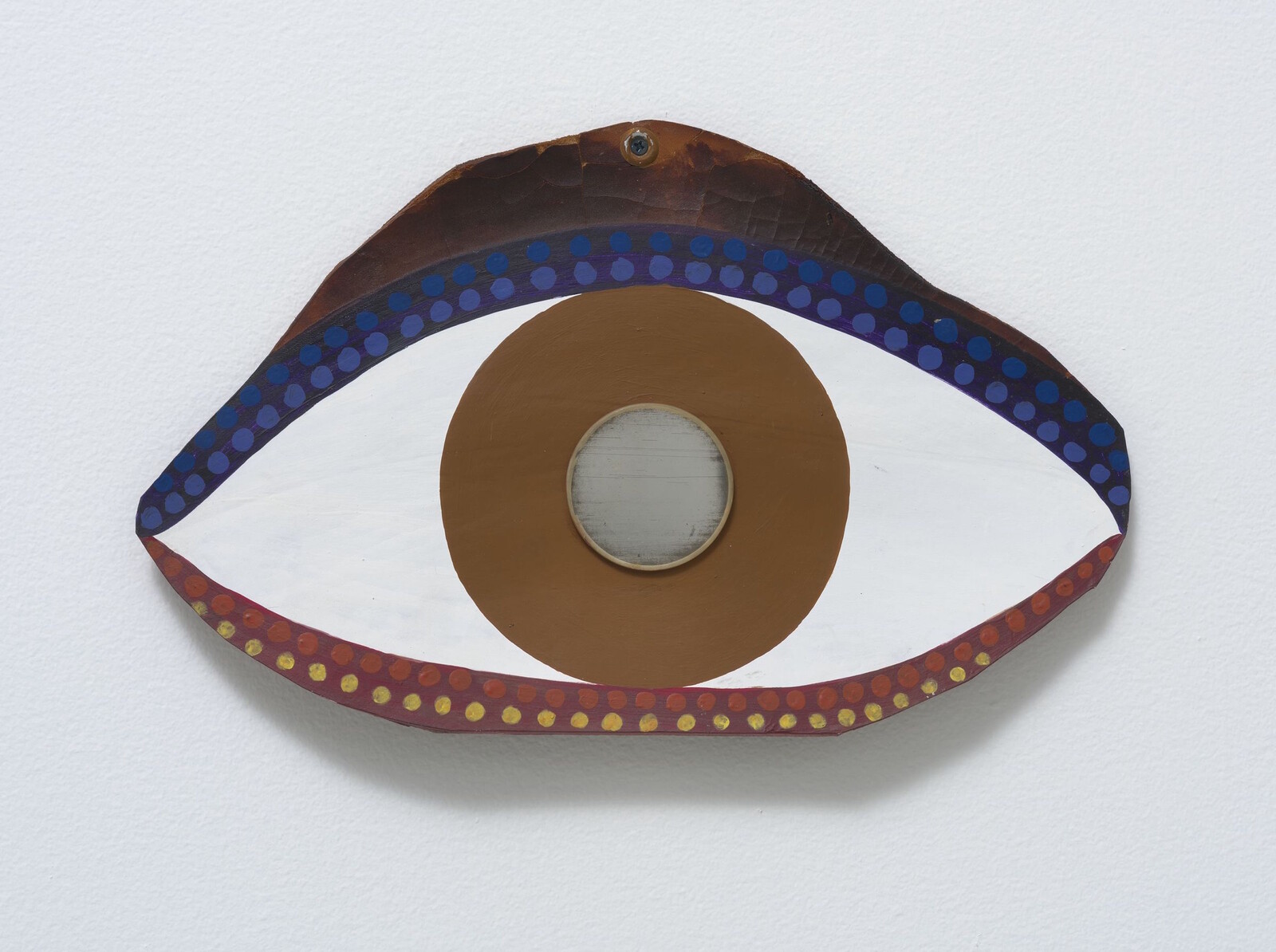
When it comes to a work of art, what is the measure of time that matters? It’s easy to point to where a work of art takes place: to the gallery in which it is installed, the place on a map where an earthwork is sited; even the extent of air in which a voiceover sounds possesses a clear spatial dimension. But to ascribe a time to a work of art is a far more difficult process. Is its time that which has elapsed since its creation, or the time when it is viewed? Does a work last as long as its material, be that marble or data, or only as long as it is remembered? Perhaps all these times matter, and more—but if the times of art are multiple, then which do we privilege, and why?
For the past few years, the only time that has seemed to matter to many museums and galleries has been that of an artist’s rediscovery. A living artist is summoned up from unjust obscurity, their forgotten work presented with fanfare: now, at last, its time has come. And if the surest sign that something is happening is a shift in the market, then a …
June 18, 2020 – Feature
“A boundary to throw one’s body against”
Ella Kruglyanskaya / Rachael Allen
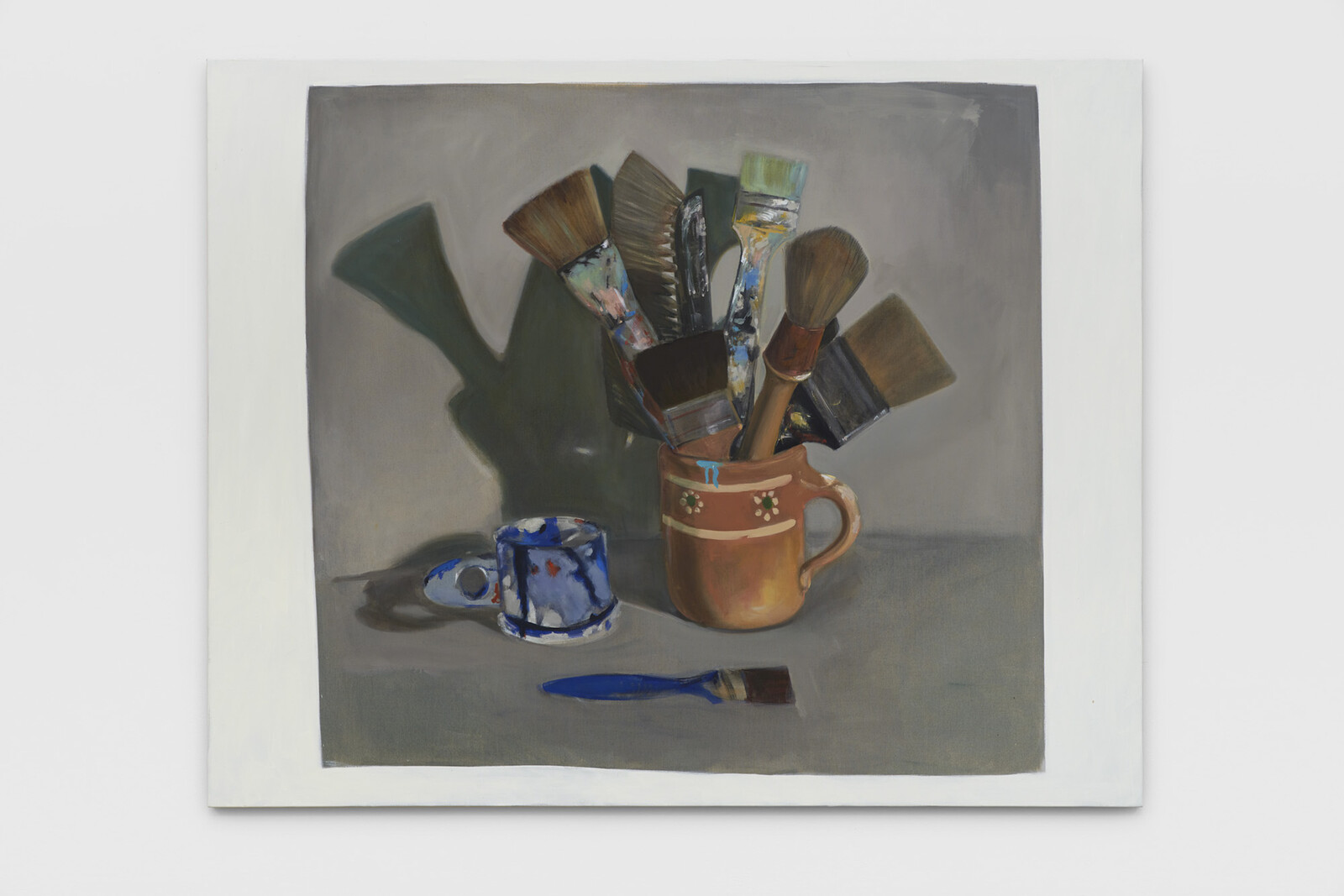
Ella Kruglyanskaya’s “This is a Robbery” reopened at Thomas Dane this week, having migrated to the gallery’s website when Covid-19 hit London in March. The transition from a physical to an online exhibition space heightened the intimacy of works—paintings in egg tempera or oil on canvas alongside smaller compositions on paper—in which female characters relate with a closeness that has come, in a time of social distancing, to seem unfathomable. Women lounge around on top of each other, strut side-by-side, or stand in gossipy cohesion. These pictures celebrate women’s bodies while sternly resisting objectification: their forms are hard-curved and muscular, with gazes that are both vulnerable and tough. In the paintings’ complex compositions—in which the artist engages with the traditions of still life, trompe l’oeil, and memento mori—these bodies exist for themselves. In one painting, framed by blue, yellow, and red, women’s limbs merge to create a commingled female form—a multiple-legged structure that resembles an optical illusion. In other paintings, shapes morph into more abstract structures or blend with their surroundings. These manipulations of form dislocate our expectations of what we might expect of gendered bodies in painting.
During her lockdown, Kruglyanskaya also made work for “On The Verge” at …
June 8, 2020 – Feature
Artists’ film and video online
Erika Balsom
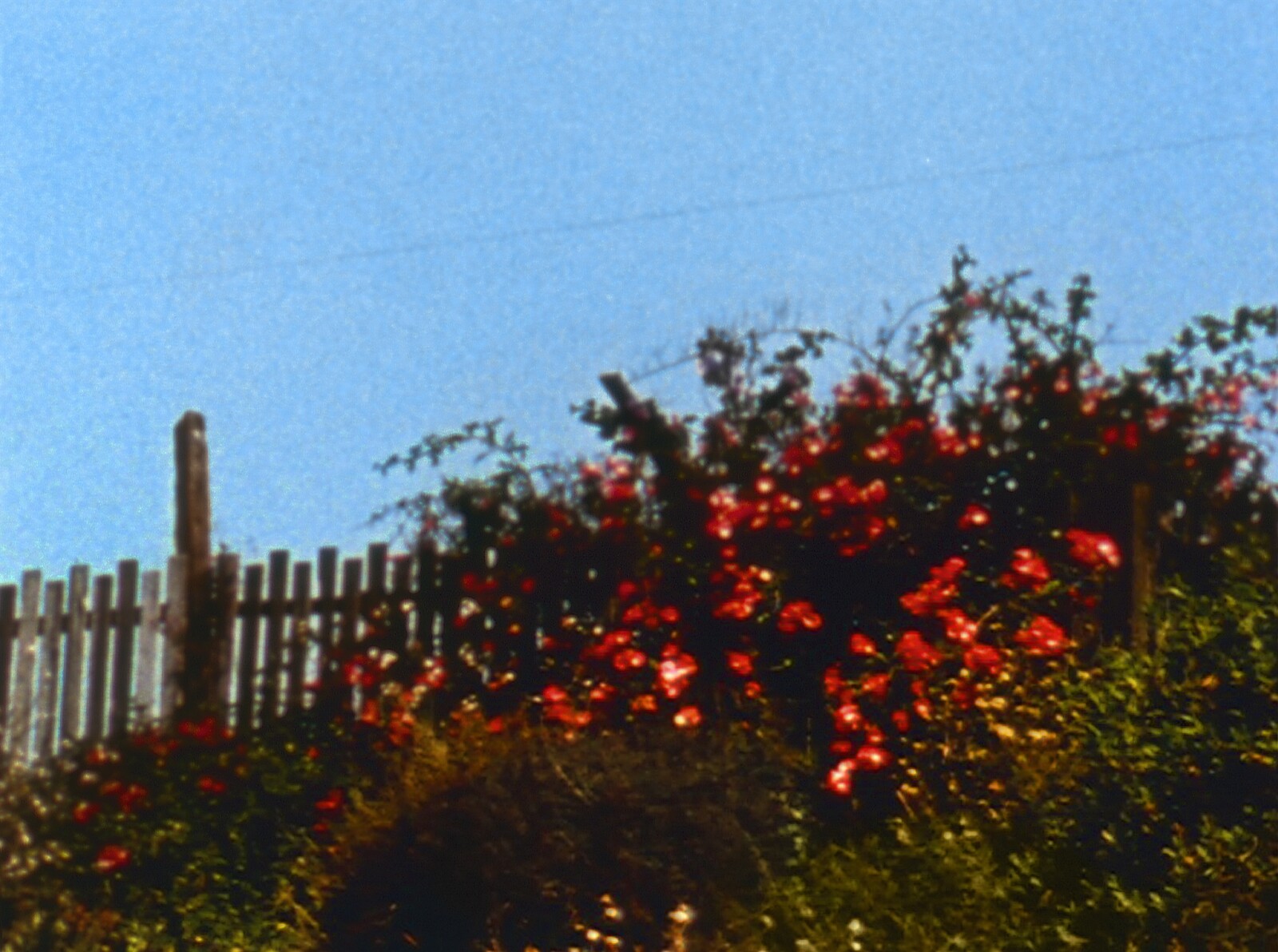
In these days of confinement, I’ve turned to classical Hollywood for comfort. Revisiting Ernst Lubitsch’s sublime Design for Living (1933), I came across a line worth noting down: “Delicacy, as the philosophers point out, is the banana peel under the feet of truth.” If that is so, eager to avoid slipping, I’ll come out and say it from the start: the huge number of moving image artworks that have been made available to stream online in the past few months stresses me out.
With cinemas and art spaces around the world suddenly subject to indefinite closure, film festivals have rushed to organize virtual editions, while institutions and commercial galleries have anxiously maintained their visibility by initiating online programs, often presenting changing selections on a time-limited basis. Just as the news appeared that Julia Stoschek, one of the premier private collectors of the moving image, will likely shutter her Berlin space in 2022, she made more than 68 works—some 15 hours of material—available on her website.
The online display of moving image artworks is nothing new. The curated platform Vdrome.org, which shows a single work for a two-week duration, began in 2013; unauthorized forms of dissemination have an even …
May 29, 2020 – Feature
Justine Kurland’s Girl Pictures
Alan Gilbert

What would a photographed utopia look like? While the origins of photography coincided with the birth of various nineteenth-century utopian schemes, human society has never seemed further from realizing them, in part due to developments in technology—including the production and distribution of images—that seek to solidify social surveillance and control.
Recent glimpses of utopia in still and moving images range from Joel Sternfeld’s collection of photographs Sweet Earth: Experimental Utopias in America (2006) to Wu Tsang’s 75-minute film Wildness (2012) documenting an LGBTQ+ bar in Los Angeles. Yet in these examples, and so many more, the viewer feels that a repressive society hovers outside the frame and that these idealized situations are ephemeral. Many of the planned communities in Sweet Earth struggle to survive or have been abandoned; Wildness features a weekly party that Tsang co-hosted for two years before various challenges addressed in the film forced its closing. Similarly, the world captured by Justine Kurland’s “Girl Pictures” series (1997–2002), gathered together in a new publication from Aperture Books, feels transitory in the freedoms that its usually small groups of young women experience across the United States.
Although a few of the earliest images were taken in New York …
May 26, 2020 – Feature
“Artists in Quarantine,” public intellectuals, and the trouble with empty heroics
Jörg Heiser

What does it mean to be critical, subversive, nonconformist, and free during a global pandemic? Subversion and resistance are so entwined in the history of art and critical theory—partly justifiably, partly as empty heroics—that even calls for communal solidarity in a public health emergency risk seeming, from that perspective, conformist and submissive. Against the background of that dilemma, influential artists and public intellectuals have struggled to take a coherent position on the crisis. Among them are an internationally famous Italian philosopher, a German theatre director, and a German novelist. But we’ll come to them. The difficulties experienced by artists were demonstrated by the pan-European museum confederation L’Internationale’s “Artists in Quarantine” project.
A shared Instagram account was the stage for 16 artists commissioned to channel, as a press release stated, “perspectives on public/private space, solidarity and critique that are intrinsically connected with the present time.” Running from April 21 to May 7, the project took for a springboard the historic example of Sanja Iveković’s performance work Trokut [Triangle]: when President Tito’s motorcade passed her apartment on a visit to Zagreb on 10 May 1979, the artist sat on her balcony, sipped whiskey, read a book, and gestured as if she were …
May 21, 2020 – Feature
Virtually Ever After: art in the post-digital era
Xin Wang / Jakob Kudsk Steensen
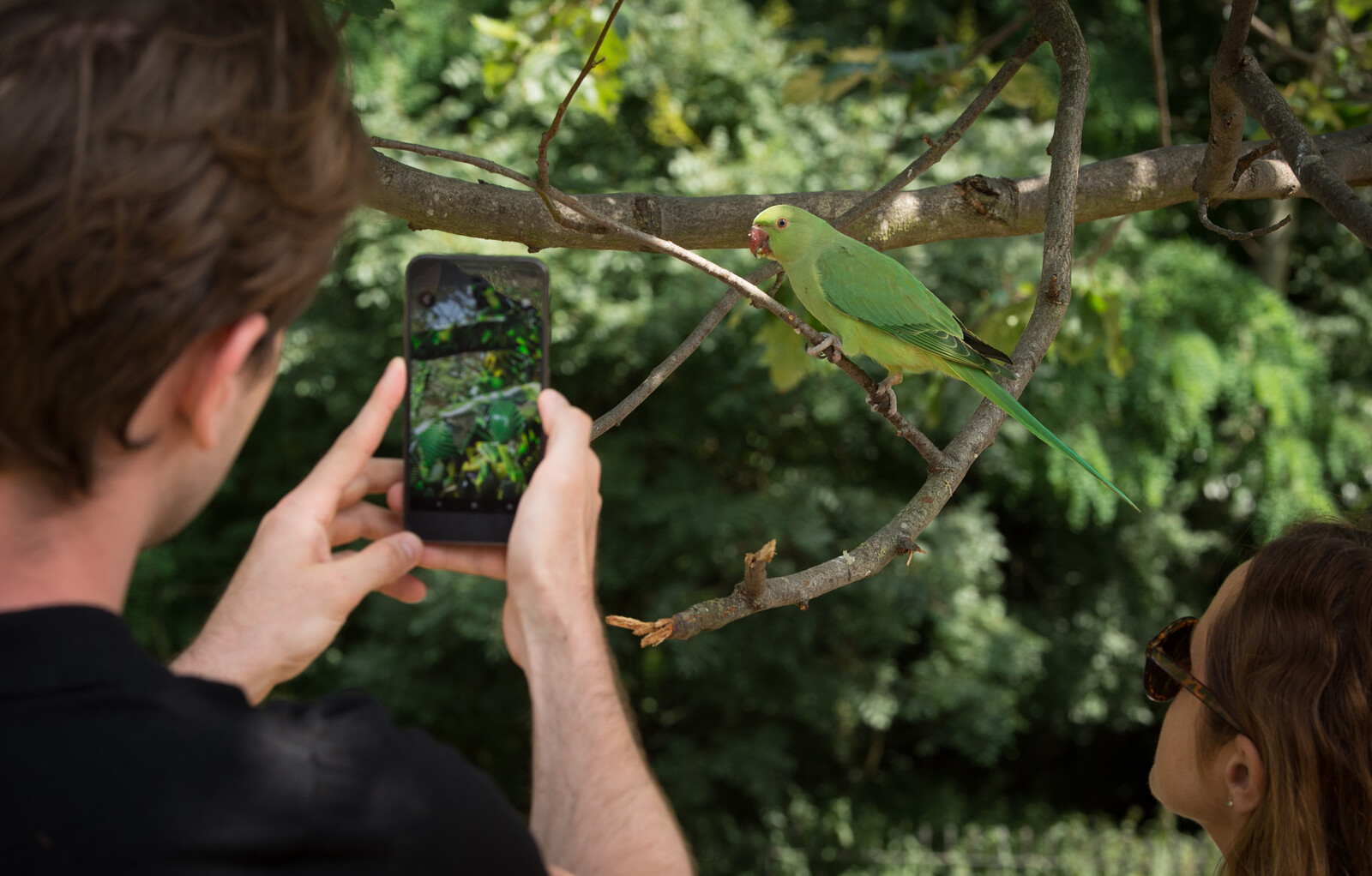
I spoke with the artist Jakob Kudsk Steensen from our respective quarantines—me in New York City and Steensen in the south of France, where he was working on a virtual landscape during a residency with the Luma Foundation in Arles. This new project—based on the artist’s detailed studies of the salt marshlands of the Camargue region, using digital technology to create virtual 3D scans of its minerals and simulate their biological properties—builds upon his abiding interest in creating ecologically oriented Virtual Reality (VR) artworks that are tactile, emotive, and fantastical. We spoke at a moment when the virtual—the artist’s primary medium for the last few years—suffused our daily existence in striking ways, from art fairs’ digital viewing rooms to Zoom classes, meetings, and webinars.
The importance of computer games—a source of constant pleasure and intellectual stimulation for both Steensen and myself—was underscored, in March, by the arrival of two new titles: Nintendo’s “Animal Crossing: New Horizons,” the latest iteration in a massively popular and customizable social simulation game set in a village populated by anthropomorphic animals, and “Half Life: Alyx,” a first-person VR shooter that navigates mesmerizing post-apocalyptic terrains, including a quarantined city. Each offers a different mode of …
May 15, 2020 – Feature
Boris Groys, “Comrades of Time” (2009)
Kevin Brazil
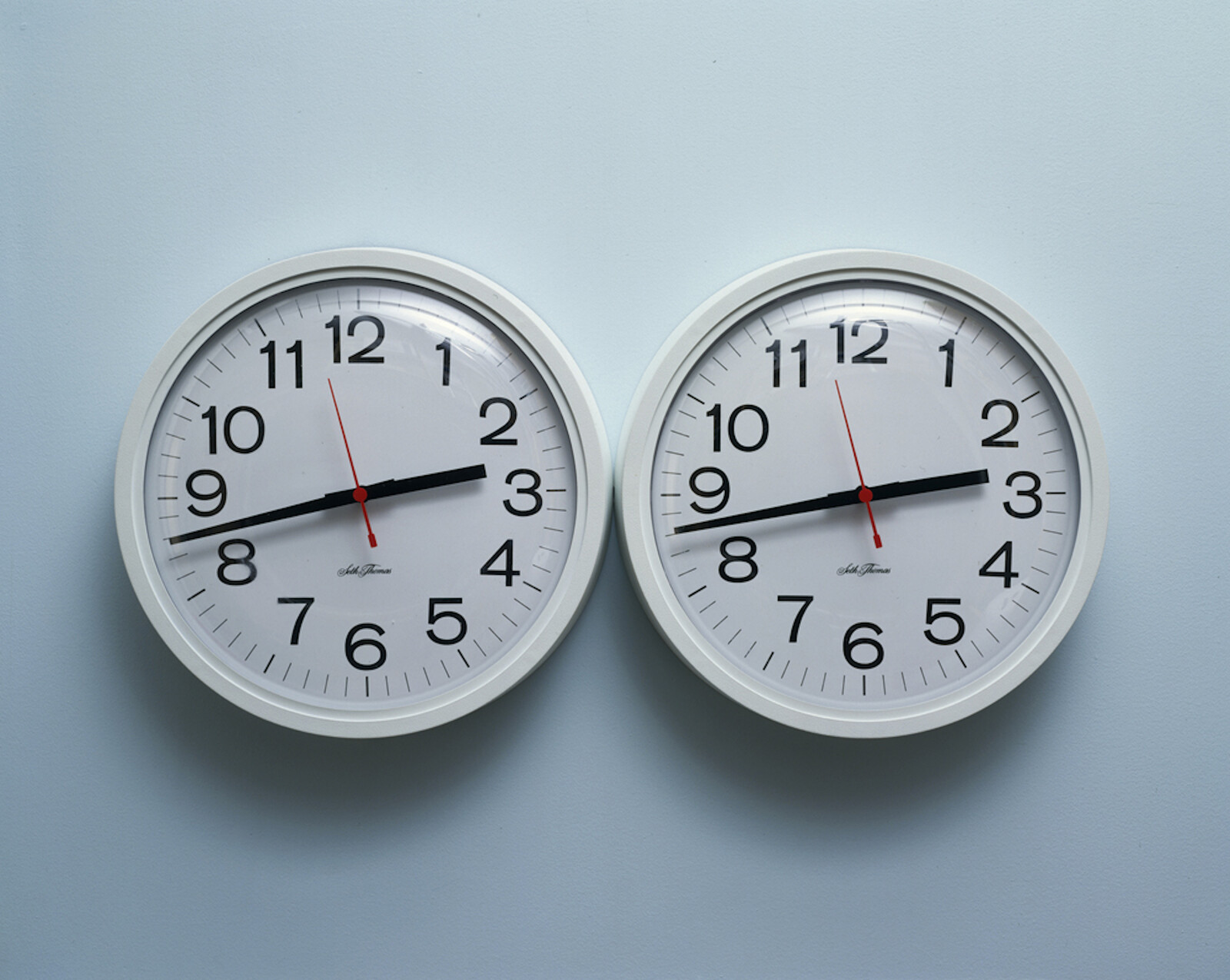
The Rearview series addresses blind spots in contemporary art criticism by drawing readers’ attention to an influential text from the past and reflecting on its implications in the present. In this edition, Kevin Brazil introduces an essay by Boris Groys first published in e-flux journal.
I was no comrade in time of Boris Groys’s “Comrades of Time.” I read it in 2014, five years after it was published. And I came to it, as I came to the art world from which it speaks, indirectly. I had just finished a PhD, which became a book, on the ways some twentieth-century novelists thought about art. Art was always something I approached at one remove, or at least that was how I justified never being up to date with the latest theory. One of the many tools Groys’s essay gave to me was a way out of that very feeling: that “art” is something which develops or progresses towards a future, and that if I miss a show, fail to read a catalogue, or don’t know an artist, I’ve fallen behind. Here is one gift this essay offers: you can never be late for art.
Groys argues that when we see art as …
May 13, 2020 – Feature
Skins Within: On contamination and digital corporeality
Travis Diehl
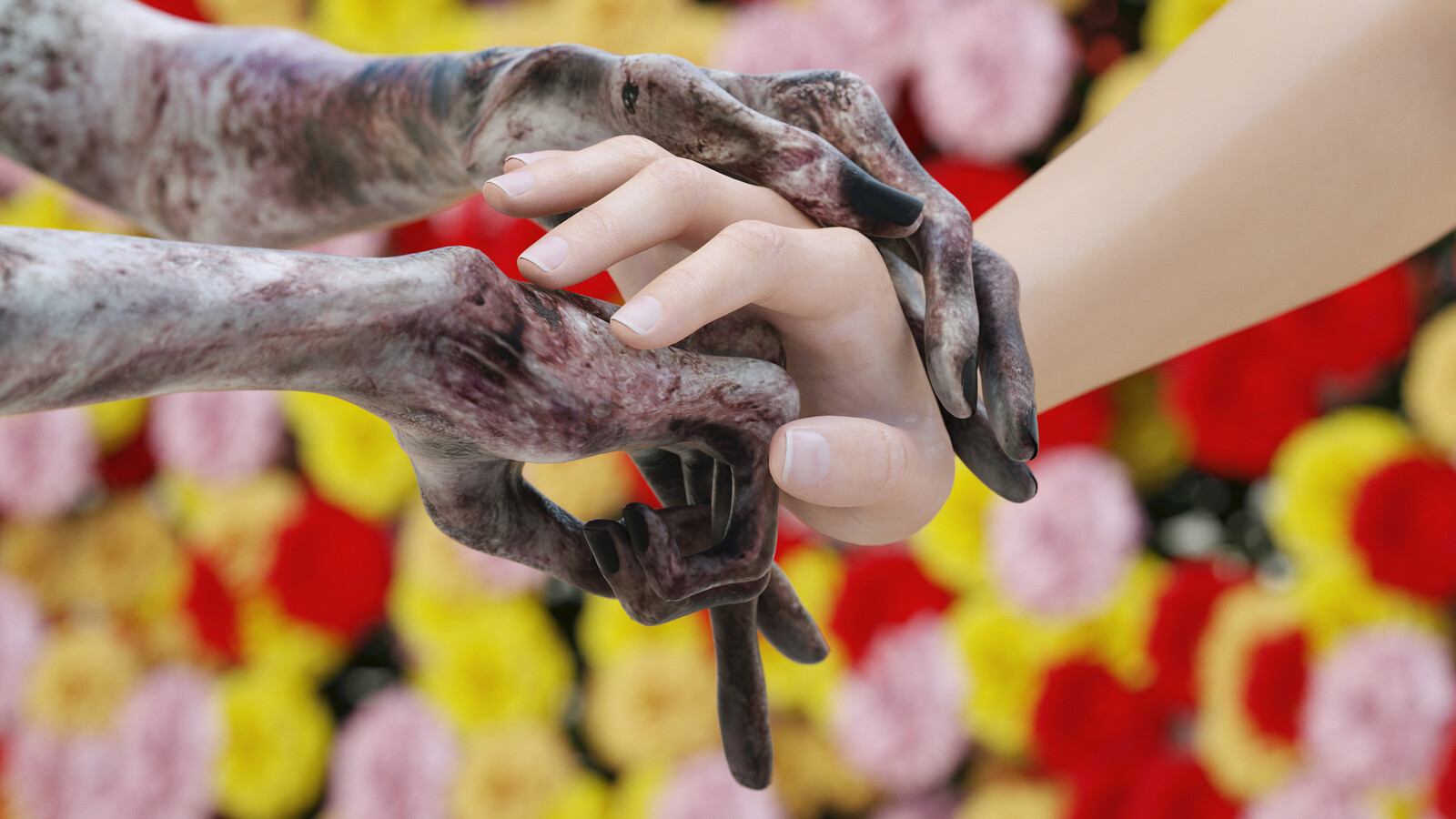
Anxiety over contamination, contagion, and infiltration manifests in contemporary art as a genre of digital animations depicting uncannily corporeal human figures. A trio of videos by Kate Cooper—recently displayed in the New Museum, New York, as part of its “Screens Series” program—subjects a female-presenting character to a series of skin-deep threats. In We Need Sanctuary (2016), the character’s creamy hand meets the flayed fingers of a burn victim between manic shots of kitchen brooms and blue sponges. (These hands reappear in Symptom Machine, made a year later.) The video loops, but nothing gets cleaner; no one is healed. Blood pours from the avatar’s eyes, then disappears. Her endless antiseptic regime is as empty as her digital body.
Another piece by Cooper, Infection Drivers (2019), elegantly illustrates a skin overcome by skin. Here, the female nude is trapped in a latex shell that inflates to the muscular forms of bodybuilders. It’s a technical tour de force to render such subtle, rubbery translucency, this wobbling double envelope: a queasy but seductive image of struggle. The characters carry on, resilient in a way human bodies cannot be, sustained by the electricity plugged into the mainframes and monitors that animate them. And yet—like …
May 7, 2020 – Feature
Public Art
Tom Morton
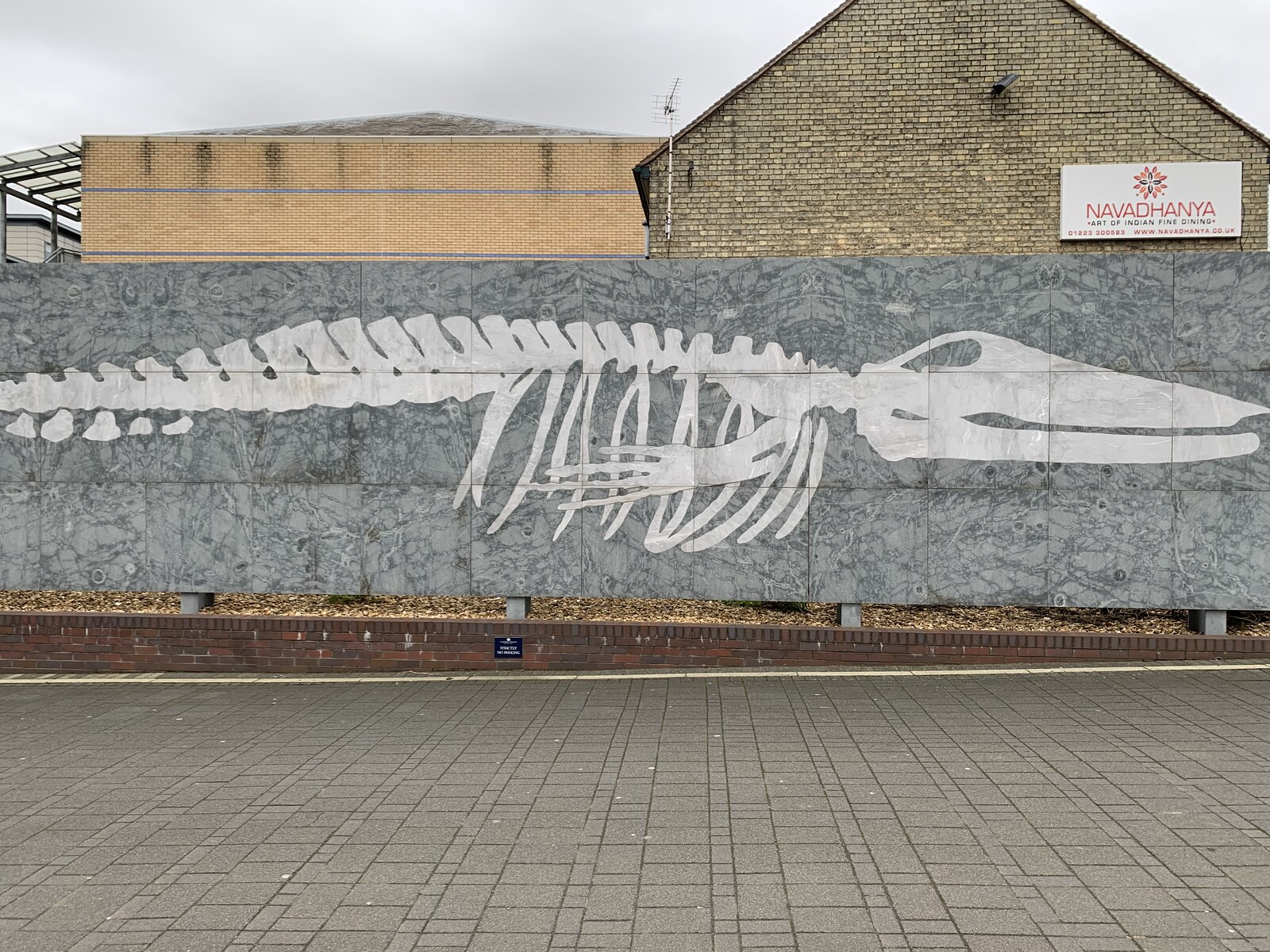
In June 2016, a few days after Britain’s EU referendum, I met up with a group of old school friends in Grantchester Meadows, a beauty spot outside Cambridge, England, the city where I lived from my early childhood until I left for university in 1996. Picnicking in this shimmering green dreamland where, “flower-lulled in sleepy grass,” Rupert Brooke experienced “the centuries blend and blur”, we watched our kids laugh and tumble near the riverbank, while we grouched about Brexit, reminisced over the long, mildly riotous nights we’d spent drinking here as teenagers, and stole glances at the grey flecks in each other’s hair, the lines that spoked from each other’s eyes. What we didn’t know then, and still can’t truly comprehend now, was that in three summers’ time one of us—my closest boyhood friend A_, who I’d known since I was six years old—would take his own life.
How do we bring back a lost loved one, our own lost past? The short answer is that we cannot. At A_’s funeral service at a woodland burial site a few miles outside Cambridge, our mutual friend David—one corner of a fraternal triangle forged in adolescence, now forever reduced to a single …
May 5, 2020 – Feature
How Does Your Garden Grow? On feral signs and displaced landscapes
Natasha Marie Llorens / Antonio Bermúdez Obregón
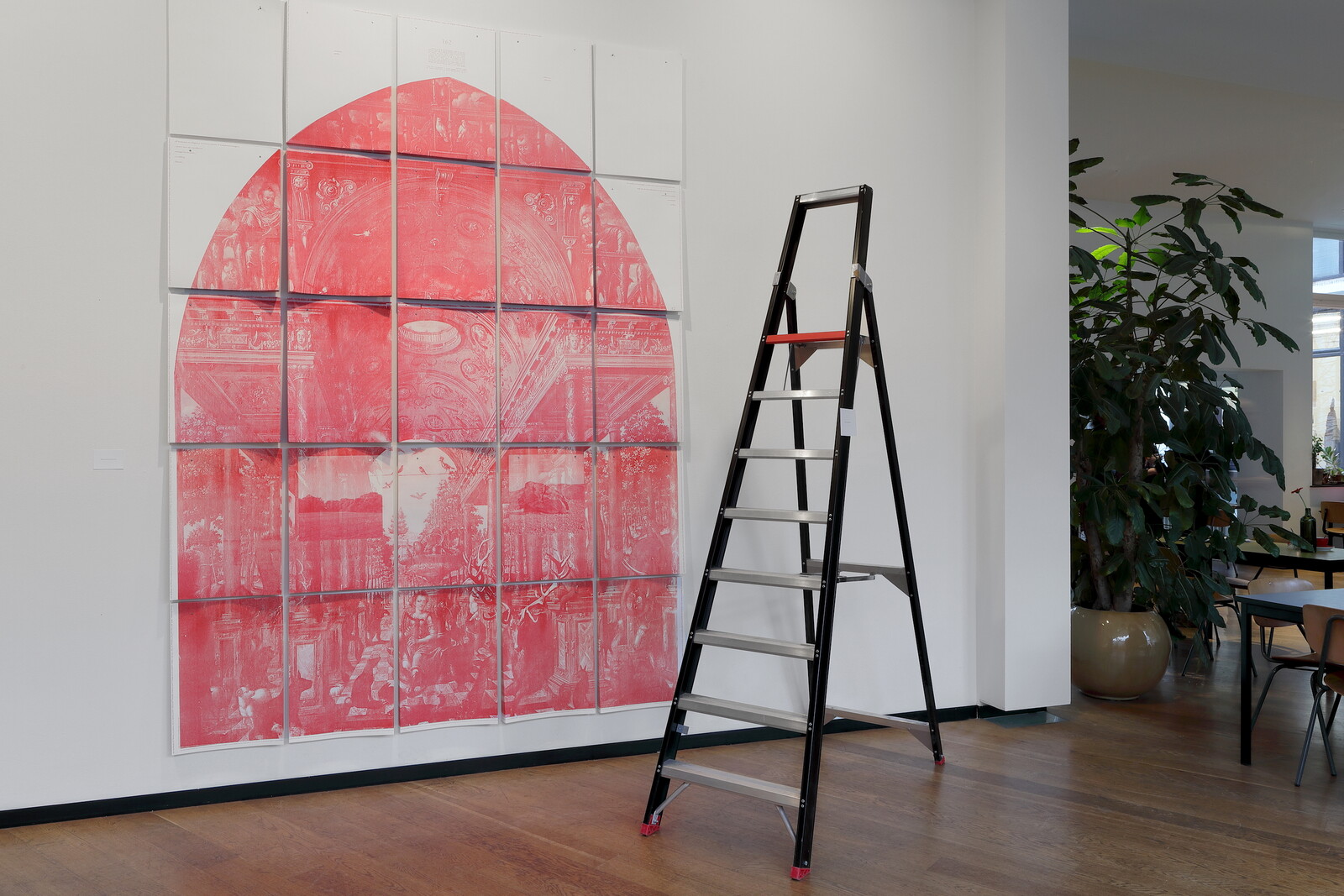
Antonio Bermúdez Obregón is an artist and architect whose work is about the ways in which representations of nature are shaped by a desire to manage it and contain its threat. We met over the course of our respective residencies at the Jan van Eyck Academie in Maastricht, and I invited him to contribute to the exhibition I curated for the Jan van Eyck’s Open Studios, entitled “The Wall at the End of the Rainbow.” It opened on March 5, just as the borders started closing.
His contribution, Obedience, was a to-scale reproduction of Hans and Paul Vredeman de Vries’s sixteenth-century painting Orpheus Playing for the Animals, which went missing in 1944. In English, the painting is known by an alternate title: Orpheus playing the lyre: trees and rocks move, beasts and birds are enchanted, which also accurately describes what is taking place in the image. This enchantment is framed by an architectural folly, under an ornate domed roof upheld by marble pillars that visually overwhelms the birds and the trees of the garden. Bermúdez Obregón’s Obedience reproduces the painting in red monochrome on 25 blocks of riso-printed paper. Visitors were invited to tear sheets of paper off the wall …
April 30, 2020 – Feature
Hal Foster’s What Comes After Farce?
Kevin Brazil
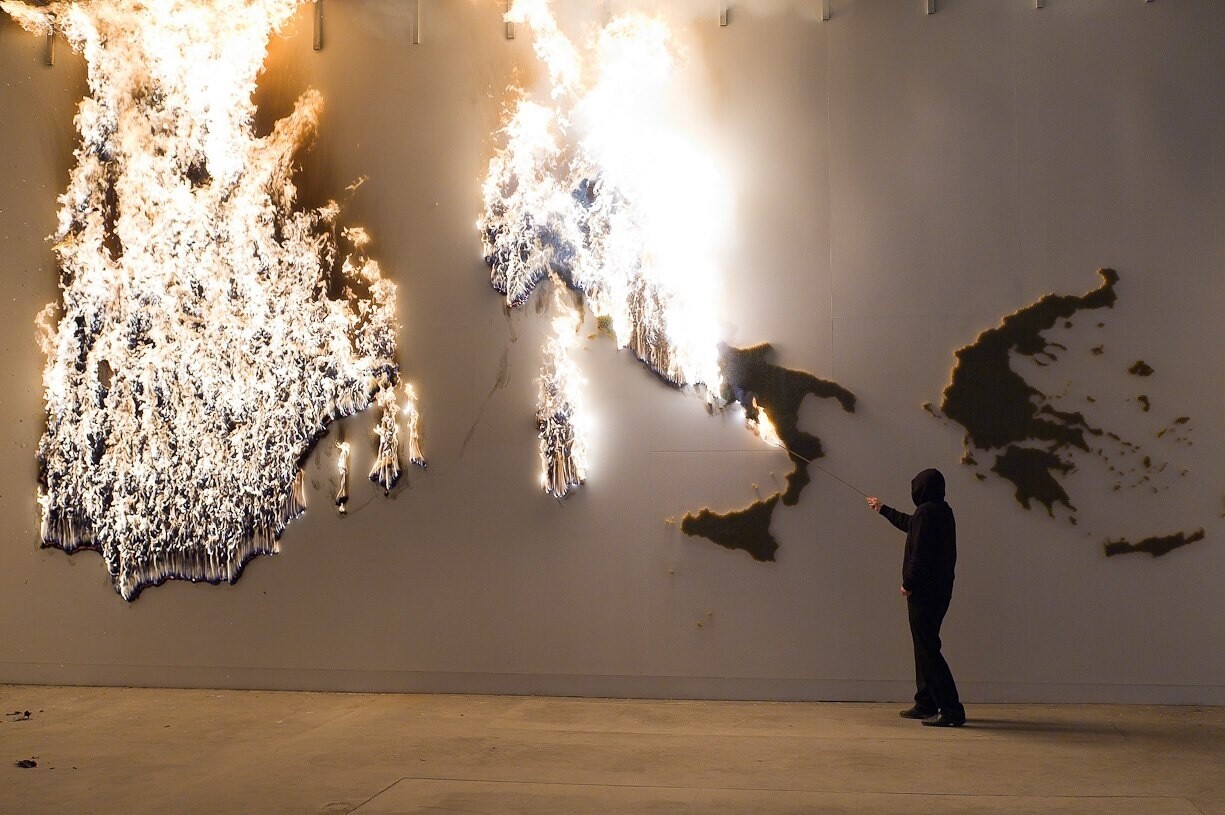
For the title of this collection of criticism spanning the past fifteen years, Hal Foster evokes Marx’s famous evocation of Hegel: the observation that “all great world-historic facts and personages” appear first as tragedy, then as farce. For Foster the revelation, after 9/11, that many Americans will accept the “trashing of constitutional laws, the scapegoating of immigrants, and the mobilizing of white supremacists as a small price to pay for even more capital concentration” was a tragedy which recurred as farce with the election of Trump. (Here, as in his other work, Foster never strays from a view centered on the United States.) His question is: “If farce comes after tragedy, what comes after farce, and how do we respond to whatever that is?” Yet something else was happening amid these repetitions: warnings of a pandemic that few heeded and which is now unleashing a crisis whose consequence will define the future to which we must respond. This is not to say this book is already outdated, but it does make it reveal, perhaps against its wishes, the potentials and pitfalls of an approach to criticism that uses art to find “what will happen” next, or to limn the movements …
April 24, 2020 – Feature
Raqs Media Collective, “Is the World Sleeping, Sleepless, or Awake or Dreaming?” (2014)
Ania Szremski
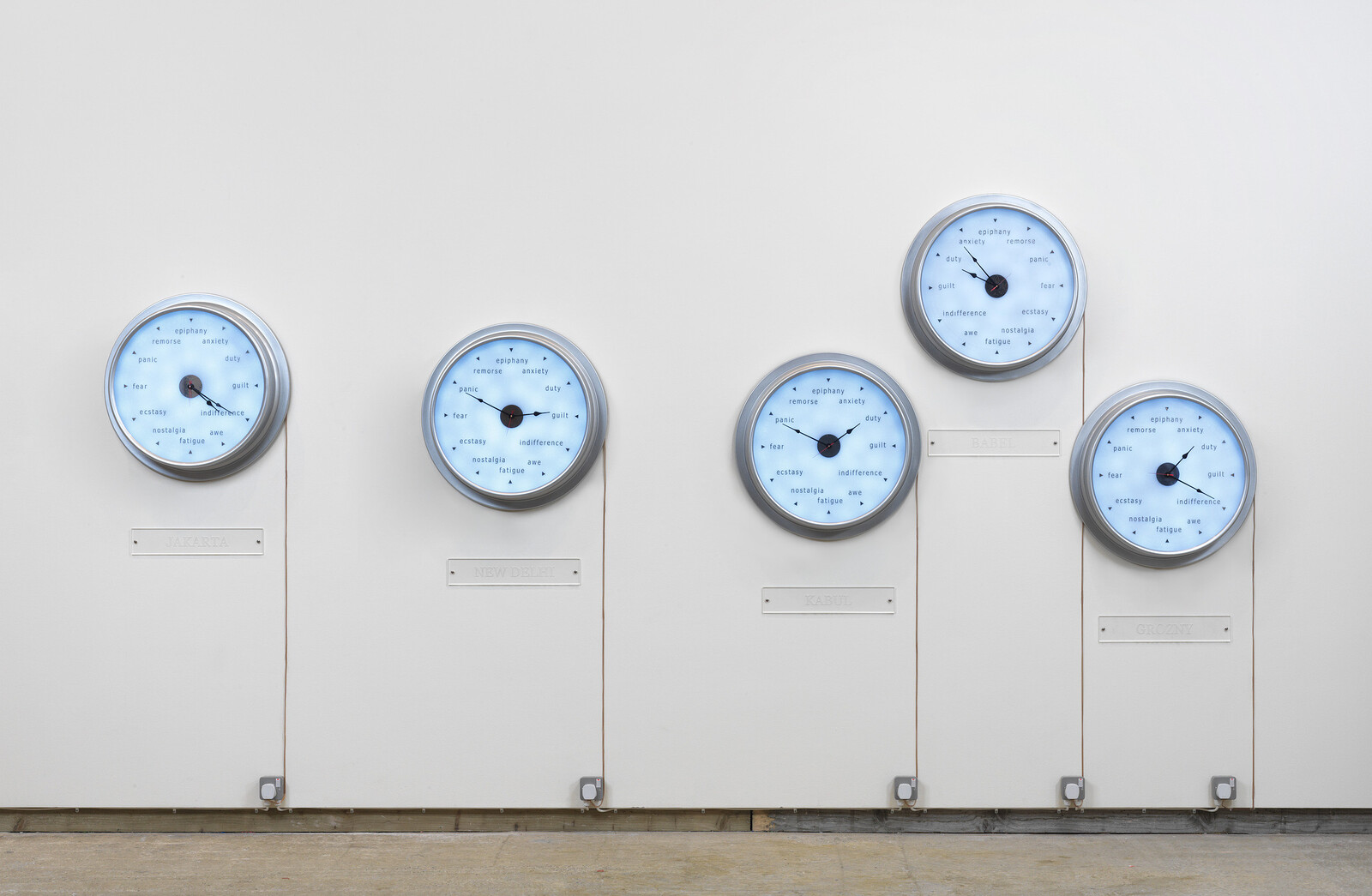
The Rearview series addresses blind spots in contemporary art criticism by drawing readers’ attention to an influential text from the past and reflecting on its implications in the present. In this edition, Ania Szremski introduces an essay by Raqs Media Collective first published in e-flux journal.
In their 2014 essay “Is the World Sleeping, Sleepless, or Awake or Dreaming?,” Raqs Media Collective warn against a “debilitating activist insomnia” depriving artists and intellectuals of the ability to dream. These exhausted figures voluntarily give themselves over (via social media, the news cycle, and the busywork of organizing) to sleep deprivation—“the worst, most damaging technique used by torturers.” I read Raqs’ overture to slumber shortly after it was published, while working at an art space in downtown Cairo. Abdel Fattah al-Sisi had just been elected president and was consolidating his oppressive regime; in an adrenalized, dreamless frenzy, I was trying to conduct what I thought of as a dissentious “business as usual,” keeping the gallery open and running a sedulous program in spite of the atmosphere of impossibility. So how seductive it was to read of Raqs’ proposing sleep, not action, as the “gentlest possible refusal of capital’s rapacious claim on time and …
April 21, 2020 – Feature
Where does it end?
Martin Herbert

Meta is a collaboration between art-agenda and TextWork, editorial platform of the Fondation Pernod Ricard, in which writers reflect on the experience of writing about art. Here, Martin Herbert considers the processes that shaped his monographic essay on Hubert Duprat’s work, “Bothness.”
My trip to the South of France, in April last year, to meet Hubert Duprat at his home (which contains his studio) called for a layover in Paris, not least to see the artist’s show at Galerie Art Concept. That evening, wandering around at a loose end after ducking out of a panel discussion at Kader Attia’s multifunction venue La Colonie, I started seeing social media posts to the effect that Notre Dame was on fire. I’ll spare you another first-hand reminiscence of that grim event, which, as I’m writing from quarantine, seems a long time ago. The next day, over lunch and a wide-ranging conversation chez Duprat as the afternoon unwound, we didn’t discuss the fire; it seemed unmentionable. The cathedral was an extraordinary human achievement undone by—seemingly—faulty wiring. Talking with Duprat about his work, with its vast timescales and reflection of creative ingenuity, I guess we might have made something of that.
Instead, as we …
April 17, 2020 – Feature
Lockdown: on carpets, cats, and cages, and three films by Gernot Wieland
Barbara Casavecchia
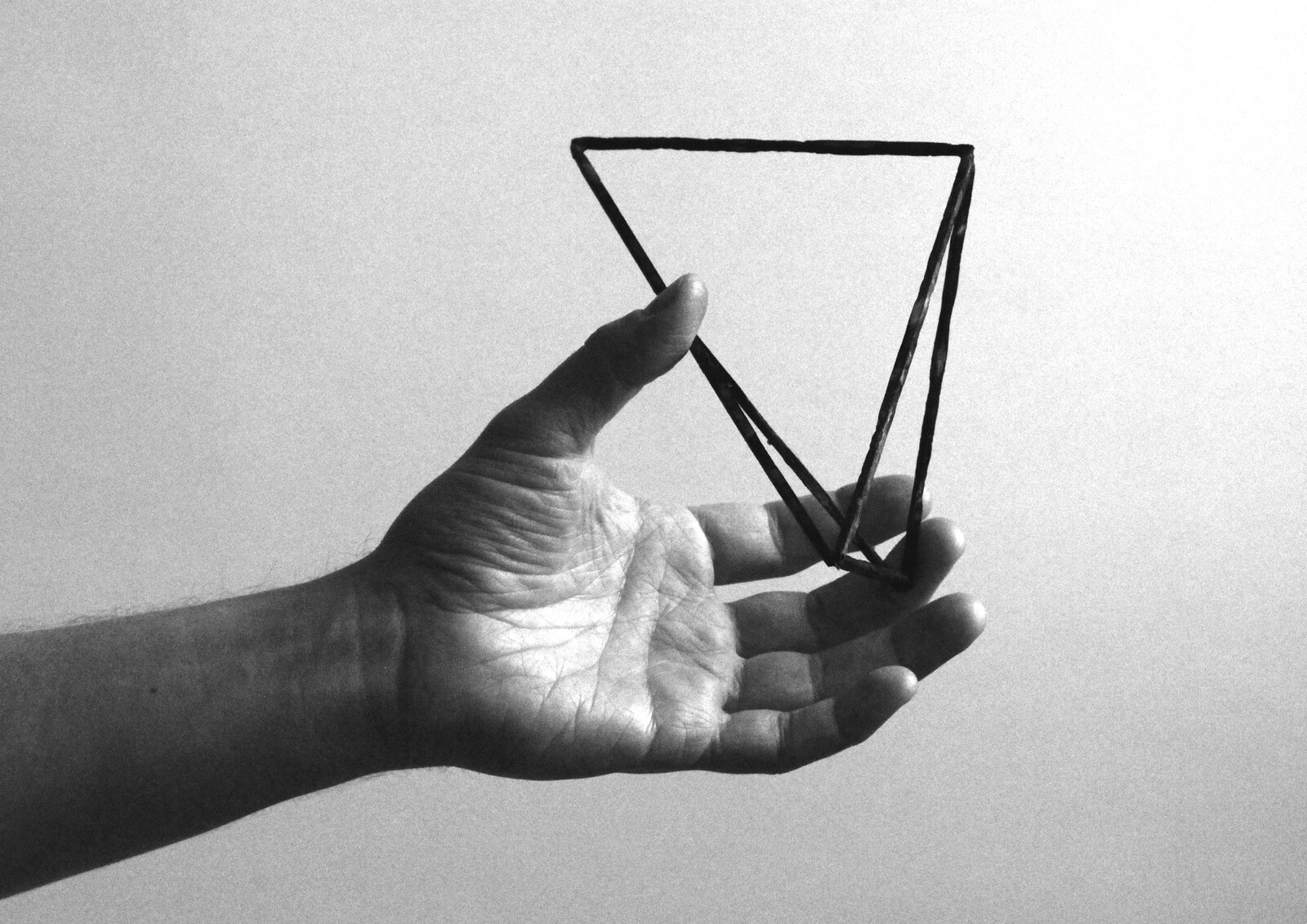
I am not working, so I’m working out. Crunch and plank, back and forth. I do it next to my desk, on the ragged carpet brought back from Morocco decades ago, immersed in the most familiar of interior landscapes.
When I was in elementary school, an unspeakable fear of going blind (ommetaphobia; suggested treatment: hypnotherapy) made me secretly walk around my room at night, eyes wide shut, just to rote-learn every inch of its perimeter. Now, there’s an irony in using this domiciliary setting for exercise. On the wall above my desk there are black cats stretching, bending, and arching their backs, stencil-sprayed there by an artist friend, Riccardo Previdi, and inspired by Gatto Meo Romeo, a foam rubber toy designed by Bruno Munari in 1949 as a playful contortionist for young hands. They are a daily remainder of my sentimental education, based among other things on graffiti, punk comics, squatting, absurdist jokes, yoga, and modernist Milanese design.
In Berlin, I think it was the mid-2000s, Riccardo introduced me to his friend and fellow artist Gernot Wieland. We’ve been in touch ever since and I intended to visit his exhibition at Salzburger Kunstverein, which opened in February. But now …
April 15, 2020 – Feature
“Dwell with Things as Equals”
Irena Haiduk / Hendrik Folkerts

At the heart of Irena Haiduk’s recent exhibition “REMASTER” was a question: How can we remake the world using its existing infrastructures?
Across the two floors of Swiss Institute in New York, the writer and artist staged scenes taken from Mikhail Bulgakov’s novel The Master and Margarita. As in her previous exhibitions, these installations formed a set for Haiduk’s ongoing cinematic adaptation of the book, which satirised the Soviet regime by introducing the devil to 1930s Moscow. Apartment 50 was installed on the second floor and recreated Professor Woland’s living quarters, while The Variety Theater on the institution’s ground floor doubled as the setting for a program of performances and events.
The infrastructure underpinning Haiduk’s world is Yugoexport, her art company—or, more precisely, a “non-aligned oral-corporation”—modelled on a disincorporated Yugoslav clothes manufacturer and weapons exporter called Jugoeksport. Haiduk’s Yugoexport produces objects in the spirit of Yugoslavian material culture—rubbings, books, bags, shoes, dresses—in order to draw attention to current issues of labor, production, and exchange. To mark the exhibition, Haiduk worked with Johanna Rietveld to create a display at Printed Matter / St. Marks bookshop (on the first floor of the Swiss Institute) featuring publications including Bon Ton Mais …
April 9, 2020 – Feature
Queer: Some notes on art and identity
Rosanna Mclaughlin

“The photo booth provided a safe-space for queer culture,” reads a text on the wall in the first room of Tate Modern’s 2020 Andy Warhol retrospective. How times have changed. Ten years ago, the museum’s exhibition “Pop Life: Art in a Material World” cast Warhol as business-bro godfather to Damian Hirst and Jeff Koons. That narrative has, thankfully, since gone out of fashion, and in its place a new Warhol has emerged: a shy, sensitive outsider fighting the good fight of representational politics on behalf of queer and minority communities in New York City.
Whether or not we prefer the idea of a woke Warhol, it’s almost impossible to square the language of the safe space with his back catalogue. “Warhol often used difficult imagery as source material, exposing the voyeurism inherent in media coverage of traumatic events,” Tate explains, attempting to exculpate their hero. Warhol may have been many things: talent scout, postmodern painter, an artist with a profound understanding of the currency of food, sex, and death. But what security did he extend to Olga Cassanova, the fourteen-year-old photographed falling to her death from an apartment block, whose final moments he reproduced in the screen print A Woman’s …
April 3, 2020 – Feature
The Online Exhibition
Orit Gat
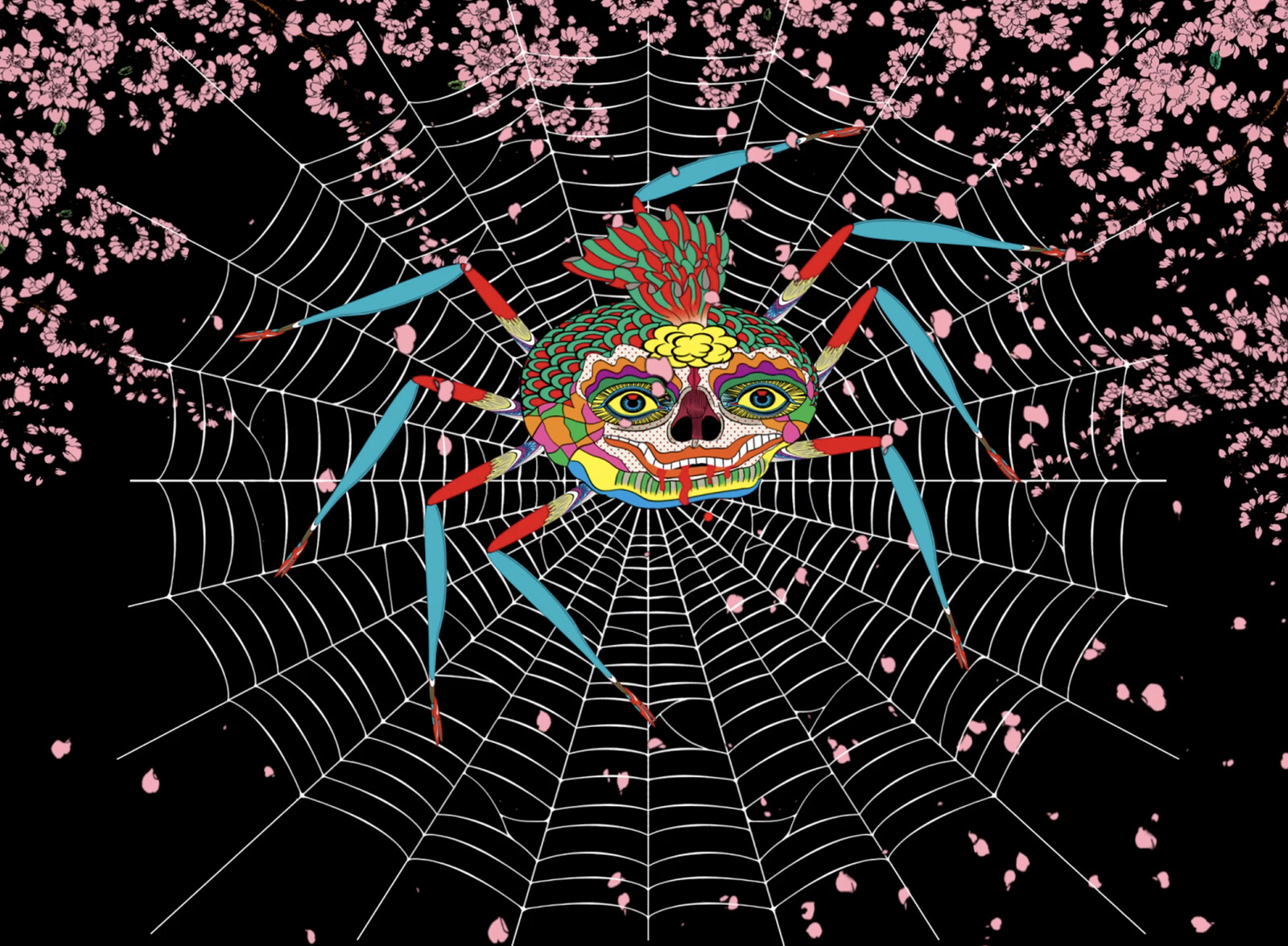
With every email I receive about new digital programs from museums, galleries, and other art institutions around the world, I feel more conflicted. My sympathy for these institutions, which had little warning before they had to shutter their doors and are now trying to recreate their program online, often for the first time, is coupled with frustration that giving a title to a group of JPEGs does not an exhibition make. Yet this is a moment to explore what exhibitions are, how they serve a general public, and whether there are models for their translation from physical to digital spaces.
The Biennale of Sydney, which opened on March 14, closed ten days later. Its organizers are currently working with Google to create a digital version of the exhibition that will include live content, virtual walkthroughs, podcasts, interactive Q&As, curated tours, and artist takeovers. Google Arts & Culture already offers virtual tours of museums and exhibitions around the world using Street View’s tools. On the company’s website is a list highlighting “6 Now-Closed Exhibitions That You Can Still Explore In Street View.” These include the 2015 Venice Biennale, Kara Walker’s massive sugar sculpture A Subtlety, presented by Creative Time at the …
March 13, 2020 – Feature
“Before and After Tiananmen”
Xin Wang

Imagine a curated overview of contemporary art from the United States titled “Before and After the Vietnam War.” Imagine the case not as a new direction for explorative scholarship but as the perpetuating, defining framework, over and over again. “Before and After Tiananmen,” Gallery 207 in the 2019 rehang of the permanent collection of the Museum of Modern Art, New York, presents established Chinese artists such as Xu Bing, Zhang Peili, Huang Yong Ping, and Song Dong in a sparse installation. Yet it registers not as a progressive move towards more inclusive and nuanced narratives of modern and postmodern art worldwide, but rather as a form of institutional gaslighting that raises deeper and stickier issues than the more manifest ills of exclusion or erasure. Reflecting a growing institutional recognition of heterogeneous global modernisms, it illustrates where that promise of progressive inclusivity falls short—and flat—if the historical framing remains uncontested, and situated knowledges are routinely overlooked. Presenting these alternative trajectories using the criteria and assumptions of the old canon—essentially treating them as outposts of western art history—will always miss the mark, limiting the discourse while purporting to expand it.
It is telling that in most reviews of the new MoMA, …
March 2, 2020 – Feature
Metadata
Christina Li
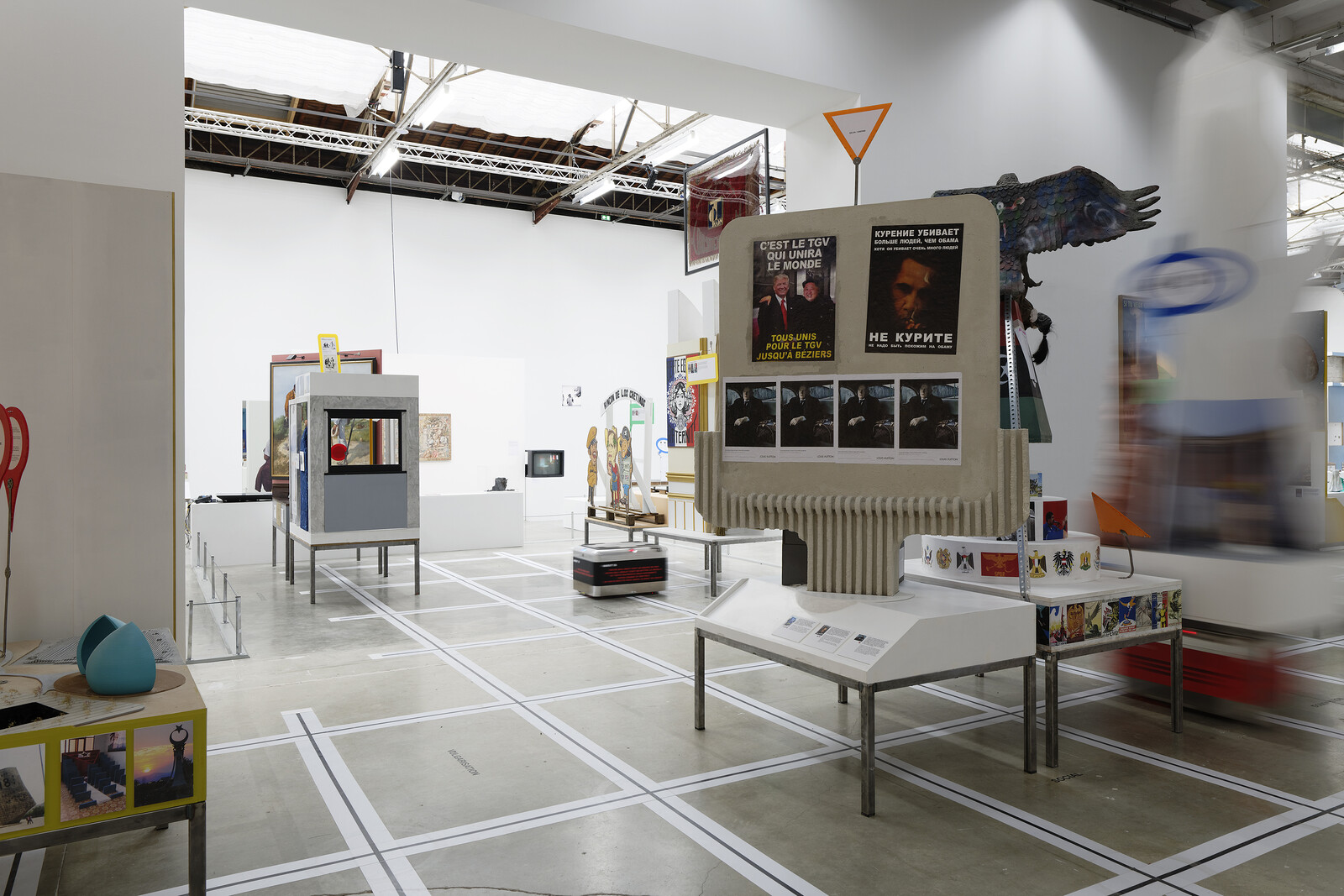
Meta is a collaboration between art-agenda and TextWork, editorial platform of the Fondation Pernod Ricard, in which writers reflect on the experience of writing about art. Here, Christina Li considers the processes that shaped her monographic essay on Neïl Beloufa’s work, “Universes Undone.”
During a visit to Neïl Beloufa’s solo exhibition “L’Ennemi de mon ennemi” [The Enemy of My Enemy] at Palais de Tokyo in Paris in 2018, I was reminded of Philip K. Dick. In his 1978 essay “How to Build a Universe That Doesn’t Fall Apart Two Days Later,” the science-fiction author develops a metaphor of writing as a form of universe building—and undoing.
Walking through Beloufa’s expansive agglomeration of artworks and information, it became evident that a similar process was at play in the gallery. On a series of scenographic display units, each of which had moving parts, a selection of Beloufa’s film installations were displayed alongside artworks by other artists, such as Vann Nath, Pope. L, Gustave Courbet, and Hito Steyerl. Herculean in scale, yet meticulously constructed, the installation examined art as a form of autonomous critique in the contexts of politics, war, and capital. Its shifting clusters of objects and ideas were propped on …
February 27, 2020 – Feature
Mexico City Roundup
Terence Trouillot
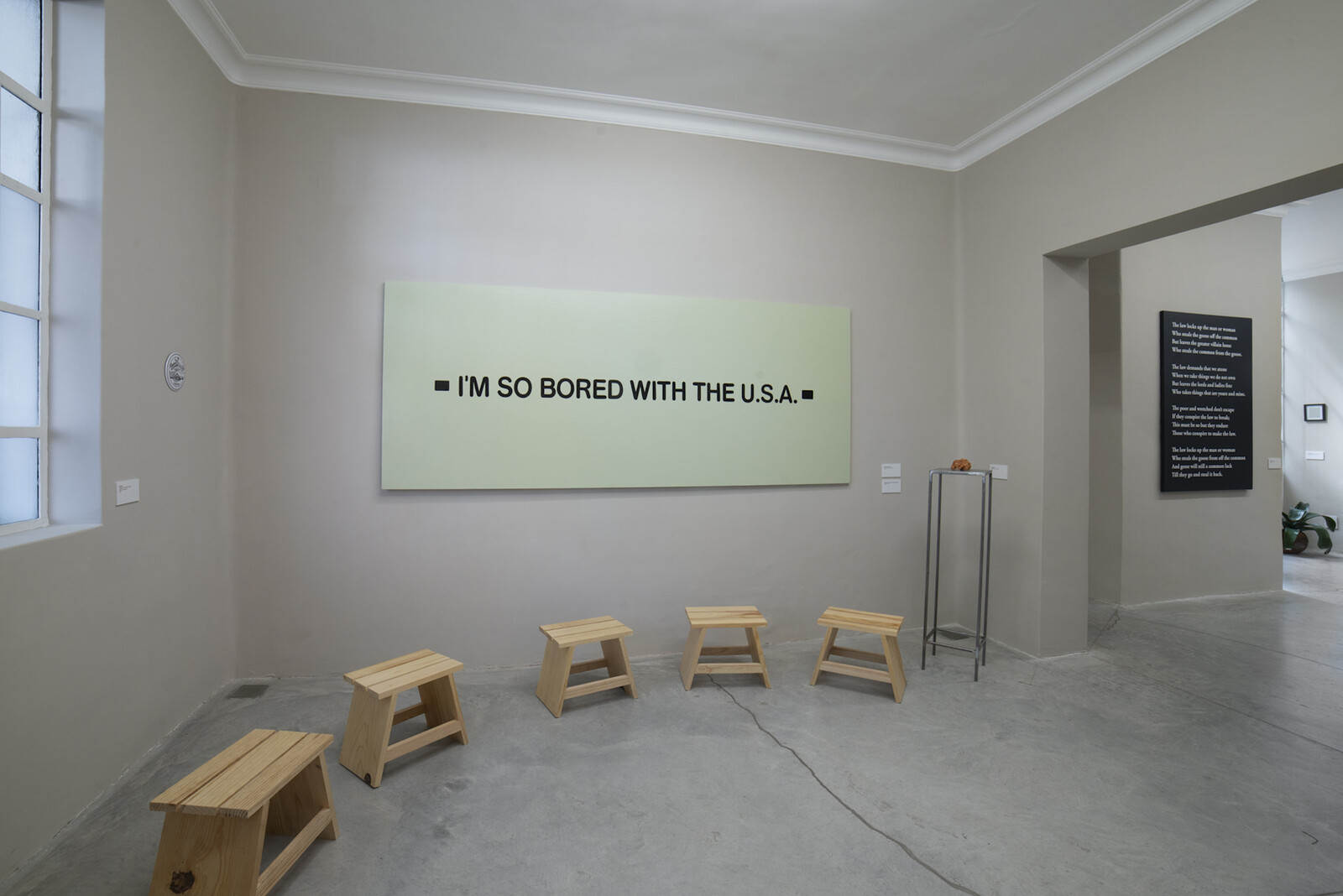
The title of Jim Ricks’s painting, I’m So Bored with the U.S.A. (2019)—borrowed from the Clash song—might be taken as a comment on how pervasively Mexico City’s Art Week has, in recent years, been dominated by the country’s relationship with its northern neighbor. This teal-colored canvas, the text of its title painted neatly against the surface in a sans-serif font, hangs at Daniela Elbahara gallery among a collection of the artist’s playful and witty works interrogating the structures of democracy and resistance. “This is What Democracy Looks Like” is the first painting show for the US-born Irish artist, whose conceptual work often incorporates sculpture and performance. The exhibition uses humor to lay bare the absurdity and hypocrisy of US politics, and to question the amount of attention paid to the country by the rest of the world.
Perhaps partly in anticipation of the cancellation of Art Basel Hong Kong, a surplus of American and European dealers and collectors were present during this major week of art fairs, gallery openings, and museum exhibitions. Pia Camil’s exhibition “Ríe ahora, llora después” [Laugh Now, Cry Later] was particularly popular with both visitors and locals. For her second solo show at Galería OMR, the …
February 21, 2020 – Feature
Los Angeles Roundup
Sabrina Tarasoff

“The Magic and Flair of Mary Blair,” an exhibition of the Disney artist’s dreamy, acid-laced concept pieces at the Hilbert Museum of California Art, burned to mind what freakish and caustic things fairytales can be. Best known for her work on Alice in Wonderland (1951), Blair’s mutant gouaches drag you with Alice into the fantastical inversions of Wonderland, a place “more like a corkscrew than a path,” where lawless helixes swallow rooms and minacious figures are found lurking in the Day-Glo darkness. Through the looking glass, everything from the houses to paths act on their own volition; even the flowers have a will (if you’re worth talking to): “You can’t possibly do that,” advises a Rose in Carroll’s sequel, “I should advise you to walk the other way.” Alice considers this bad advice, and so heads in the “wrong” direction, straight back to where she started. Which is to say, she’s quick to realise that in the context of the fantastic, if it appears you’re getting lost then you are probably going the right way.
Though this city is filled with the iconoclastic fantastic, its galleries during Frieze week seem more determined to exploit a bygone image of subversion than …
February 14, 2020 – Feature
Museum Installations of Film Art
Robert Bird

The demise of film in its previous modes of production and projection has led to the selective canonization of major filmmakers as artists meriting solo exhibitions in museum spaces. In response, curators have resorted to increasingly ingenious strategies to adapt the medium to the contemporary museum’s infrastructural and institutional conditions. Early exhibitions of film as art frequently focused on its static material apparatus and paraphernalia: cameras and other optical devices, sets and props, screenplays and storyboards, posters and press. Director Stanley Kubrick’s material archive, for example, formed the basis of a massive exhibition organized by the Deutsches Filminstitut Filmmuseum, which has traveled internationally for over a decade. When I saw it in Rome in 2007, its sole dynamic feature was a green-screen device allowing visitors to view themselves within the prehistoric landscape of the prologue to 2001: A Space Odyssey (1968). This interactive apparatus set the scene for my very first digital selfie.
The more ambitious and sophisticated exhibitions of the intervening decade have begun to create a distinct place for film in the museum environment, in part by continuing to blur the boundaries between film, digital media, and installation. A decisive role in the museification of the cinema has …
January 15, 2020 – Feature
Hong Kong Roundup
Travis Diehl
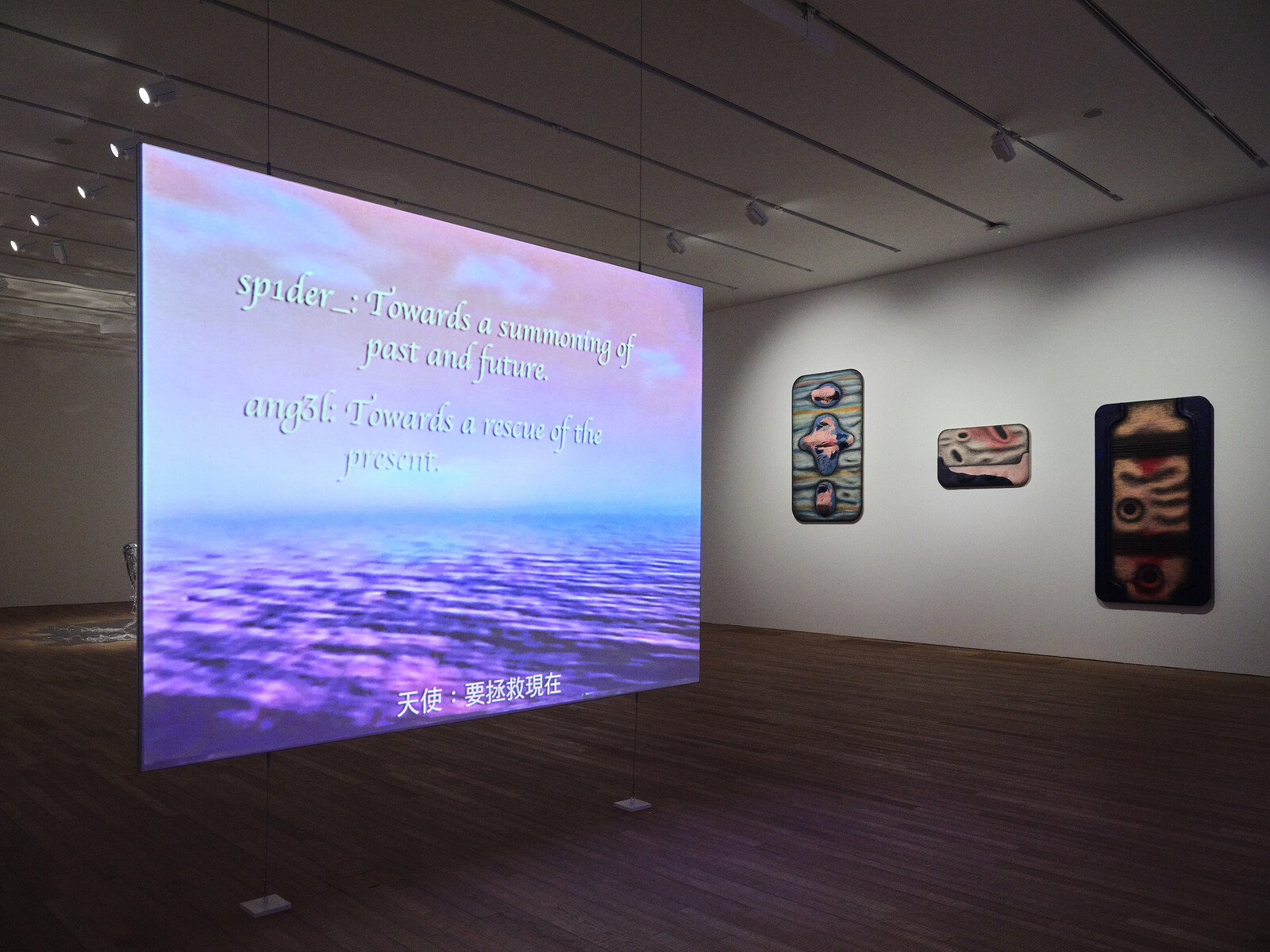
A citywide rally on December 8, 2019, marked six months of pro-democracy protests in Hong Kong. 800,000 people attended—a tenth of the total population. When I arrived the following weekend, the streets were quiet. I wasn’t there for the protests—I was there to see art. Yet I couldn’t escape the feeling that we were, as Allan Sekula wrote of the 1999 Seattle protests, “waiting for teargas”—in the lull, anticipating the moment when revolution and counter-revolution show their true selves. Meanwhile, the Hong Kong police were thinking about art, too. On December 12, they posted a parody of Maurizo Cattelan’s Comedian sculpture (2019) to social media; in their version, instead of a banana, a teargas canister is duct-taped to the wall. This is possibly the most pitch-perfect, frank response from the government so far: lobbing riot grenades is a day job for some, but only an artwork can express the underlying depths of official apathy. The Hong Kong “banana” joined the graffiti along the roadways in Central, slogans like “thx president trump / make hk great again” and “je me révolte, donc je suis”: messages meant, on some level, for outsiders like me.
The art scene, too, seemed to be steeling …
December 10, 2019 – Feature
Miami Roundup
Ricardo Mor
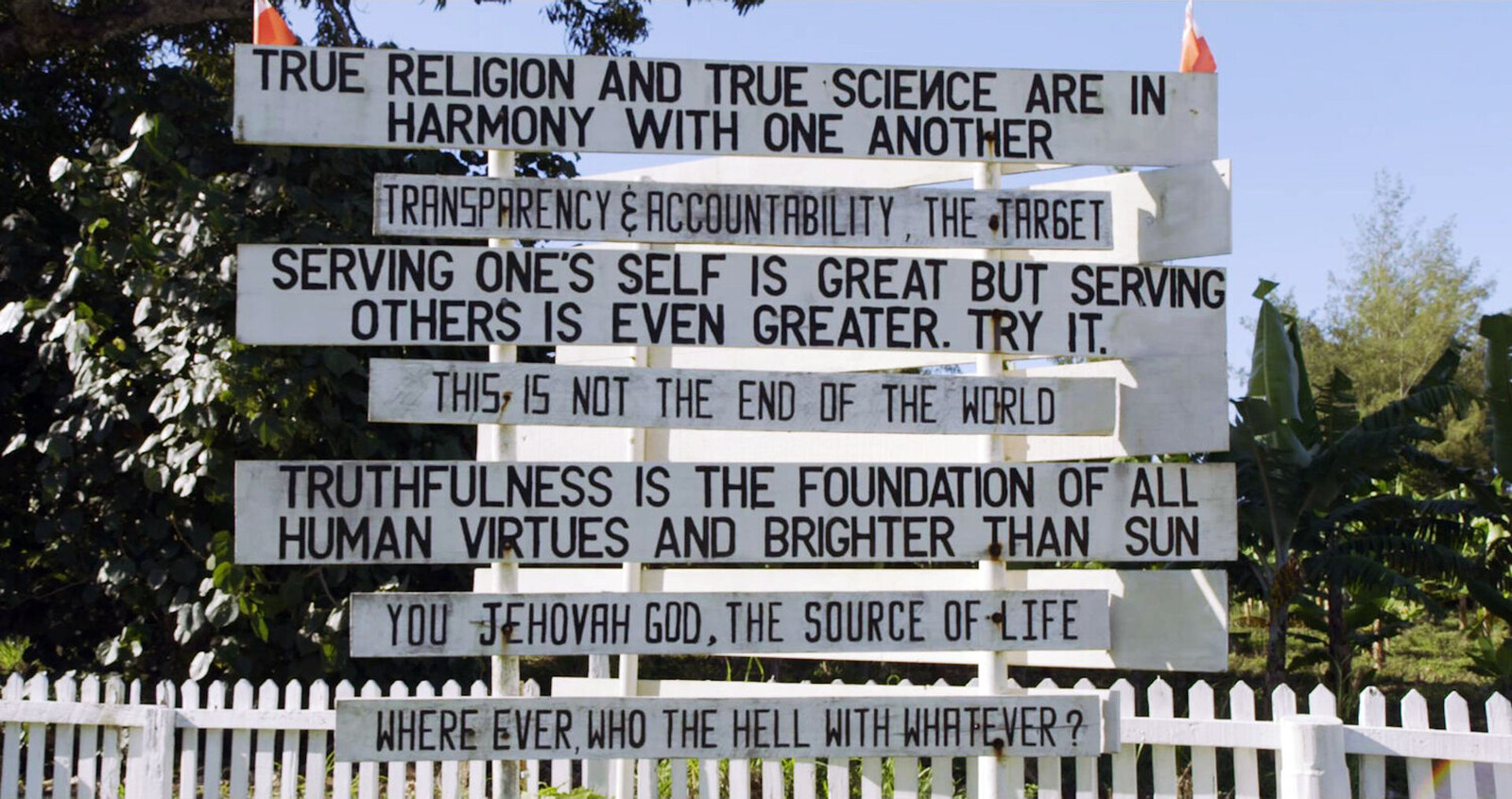
In Camille Henrot’s video Saturday (2017), presented at the Faena Festival as part of Miami Art Week, the artist zeroes in on the Seventh-day Adventist Church in cryptic yet hypnotic fashion. Images of church services, baptism ceremonies, and a backstage look at a TV prayer telethon service titled “Let’s Pray!” are paired with images of surfers, medical procedures, and commercial-like footage of whole foods that are part of the church’s recommended diet regimen. Against all of this, chyrons send up a constant stream of bad news and cryptic messages such as “Justice: the door remained shut,” “Education: they’re just parroting what they hear back,” and “Crime: there are bruises where he still grabbed me.” It is an opaque but astonishingly beautiful meditation on keeping one’s faith in a hopeless world.
Not that far away, outside the convention center where Art Basel Miami Beach takes place, members of the Jehovah’s Witnesses would stand outside each day trying to engage passersby on their faith, peddling their beliefs as diligently as the gallerists selling art in their booths. Miami Art Week, which includes the main fair, two dozen satellite fairs, and a seemingly endless cavalcade of events is art at its most …
December 5, 2019 – Feature
A Report on Perfect Fit
Sarah Rifky
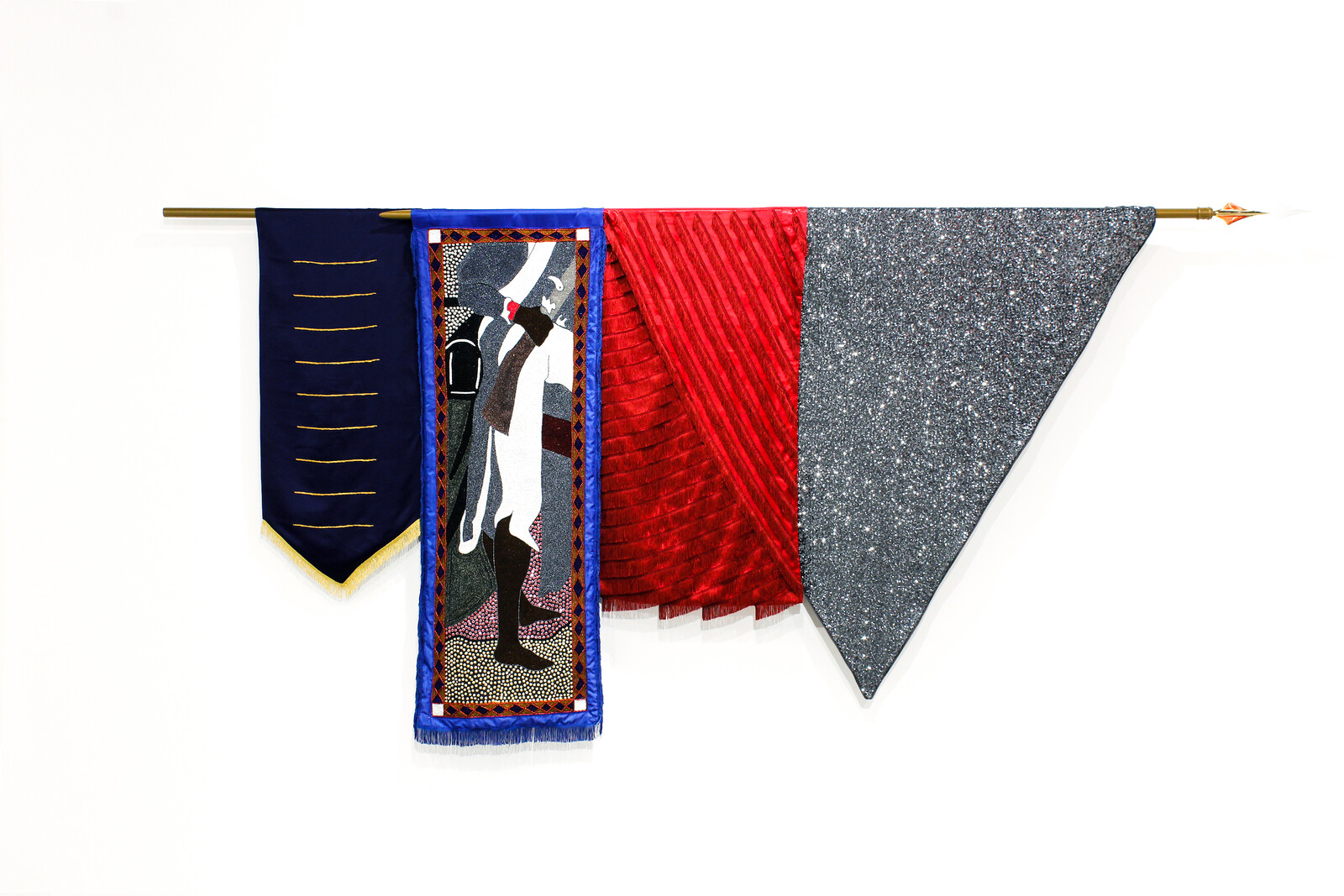
Meta is a collaboration between art-agenda and TextWork, editorial platform of the Fondation Pernod Ricard, in which writers reflect on the experience of writing about art. Here, Sarah Rifky looks back on her monographic essay on Kapwani Kiwanga’s work “Perfect Fit.”
Saint Louis
I started writing “Perfect Fit” in a classroom at the Institut Français in Saint Louis, Senegal. It was June 2018. The text was untitled. I was with colleagues (read: friends) from the continent (read: Africa), and we were formulating an instruction for France: to establish an Institute of Black Studies in France.
France resisted the intellectual imperative. To them, the continent was a country.
The instruction outlined departments for the filing of imaginary history, for authorizing fiction and unauthorized movements, as well as other methods of disruption.
The confabulations of this meeting were the scaffolding for what later became “Perfect Fit.”
Paris
I had seen Kapwani Kiwanga perform once in Paris, years before. One of my first attempts at writing was to remember the exact quality of the feeling of being in her audience. Her performance two-toned the space in orange brown and cooler, shaped shadows.
On a Saturday in late November 2018, we met …
November 18, 2019 – Feature
Mary Josephson, “Ray Johnson at Betty Parsons” (1973)
Astrid Mania
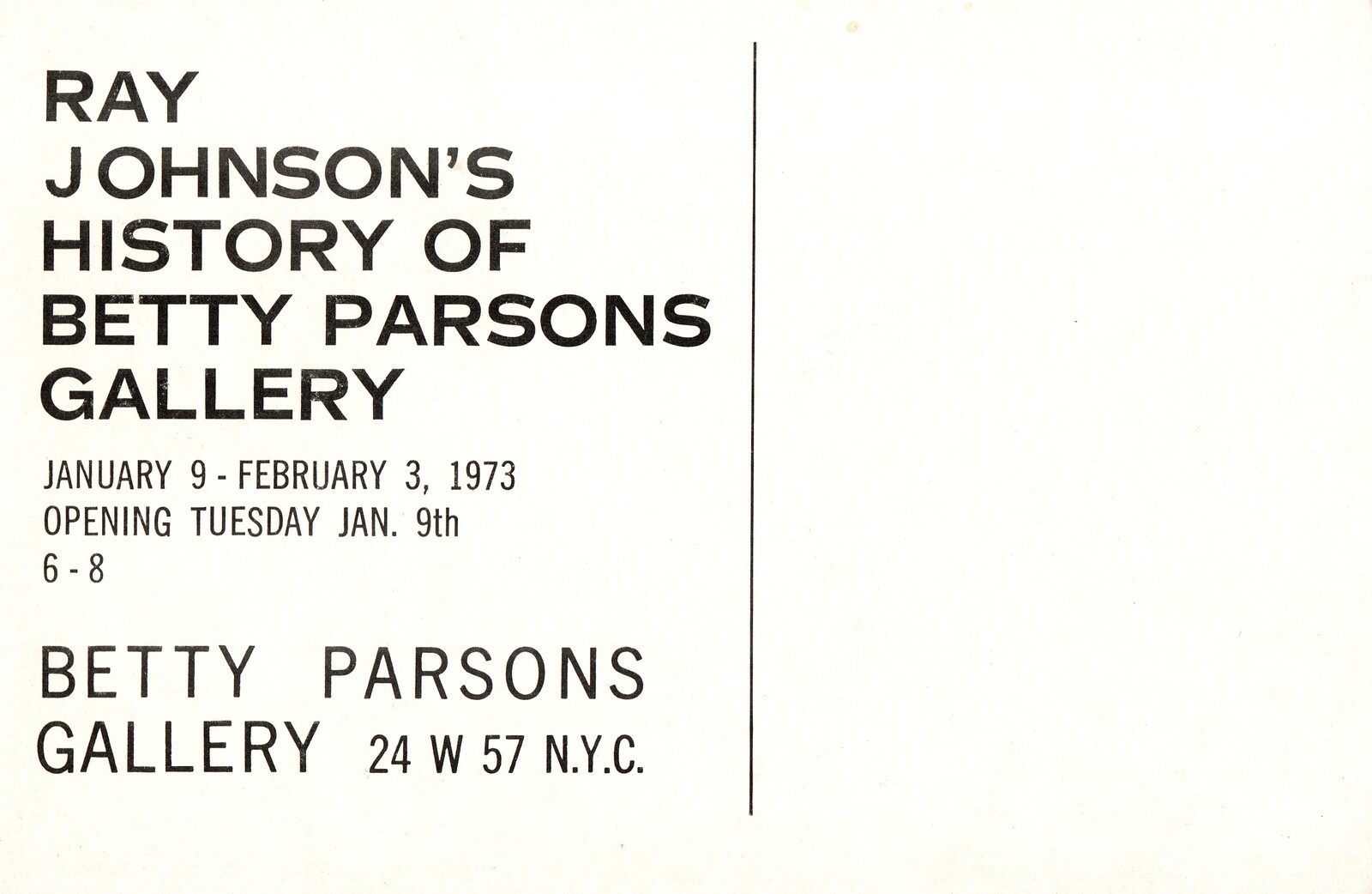
In the wing mirror on the passenger side of a vehicle, objects are closer than they appear.
The texts republished in the Rearview series are those that we wish to draw attention to because they reveal certain “blind spots” in contemporary art criticism. These “found” documents (indeed, quasi-artifacts) are prefaced by one of our writers.
Mary Josephson is, to my knowledge, the first fictitious female art critic conceived of by a man. She is one of Brian O’Doherty’s four, otherwise male, alter egos, among them the (by now late) artist Patrick Ireland. Josephson was born out of lack. Becoming the editor of Art in America in 1971, O’Doherty needed authors to write for the publication he was going to reinvent. Apparently, he made some of them up. That he decided on one female moniker is due to his lifelong fascination with fluid gender roles: “There is a deep curiosity, and certainly I have it as to the nature of the other, the ultimate, that other, the other sex.”(1) The name itself, Mary Josephson, is a twist on O’Doherty’s upbringing in a stoutly Catholic environment.
Writing under a pseudonym comes with a great deal of freedom. Josephson surely thought outside …
November 8, 2019 – Feature
Montréal Roundup
Stefanie Hessler
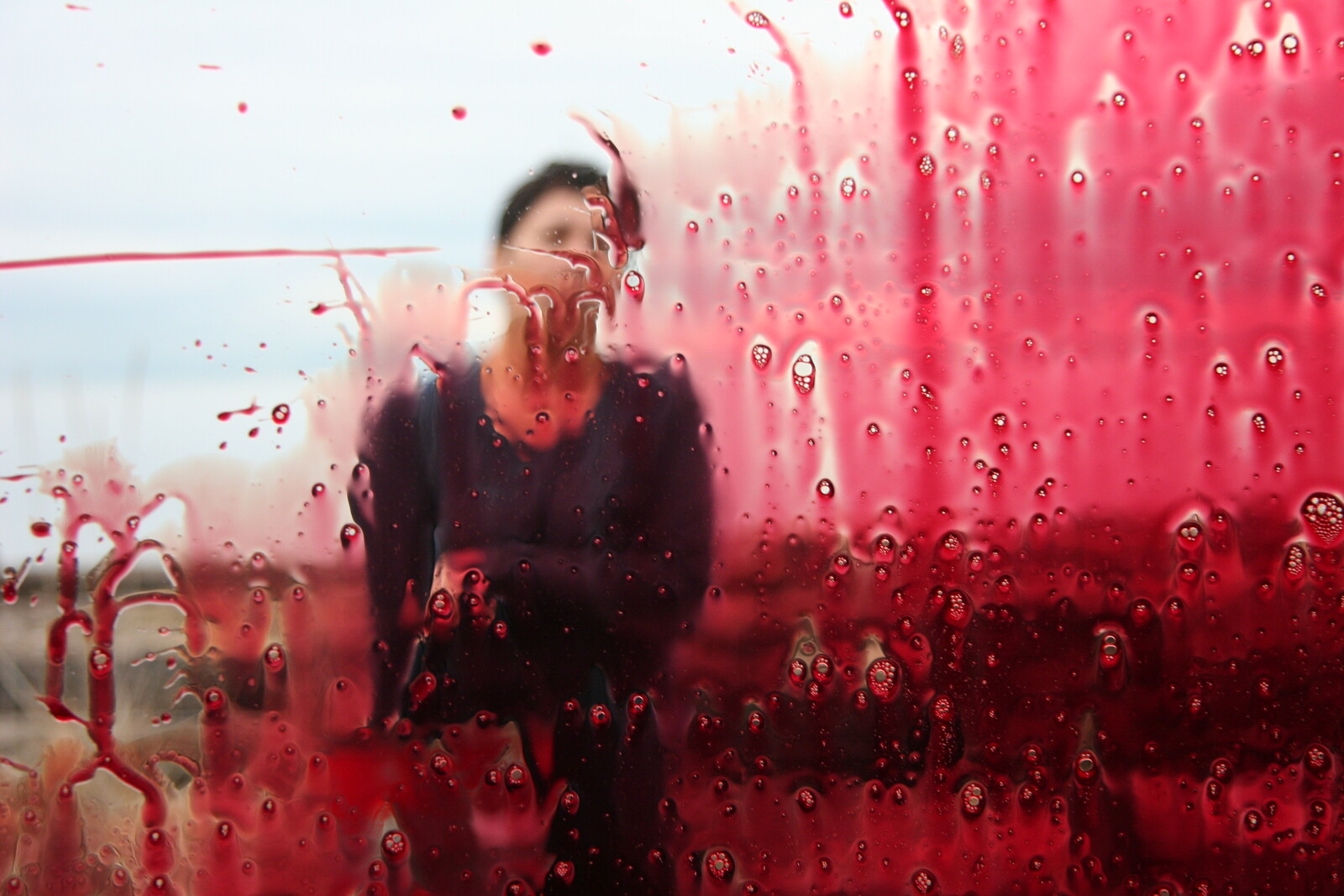
A camera pans over a beach littered with driftwood. As the lens approaches a stack of branches arranged as if for a bonfire, a rocket-like screeching sound pierces the scene. An instant later, the wood goes up in flames. The image fades to a view of the artist Rebecca Belmore submerged in the nearby water. Fully dressed, she flails in the shallows with a metal bucket in her hand, gasping for air. Her body is thrown around by something other than the forces of the waves—an interior torment. Belmore exits onto the beach, carries the bucket toward the camera, and with an arduous groan throws its liquid contents against the lens. What we, the viewers, may expect to be clear water is blood-red, dripping down the lens as the artist stands and looks directly at us until the video ends. In Belmore’s installation Fountain (2005), the sequence was projected onto a wall of falling water inside the Musée d’art contemporain de Montréal (MACM).
In its ambiguity between birth or death, creation or apocalypse, Belmore’s Fountain—her contribution to the Canadian Pavilion at the 51st Venice Biennale in 2005—is as potent a metaphor today as it was almost 15 years ago. The …
October 29, 2019 – Feature
The Purple Thistle
Andrew Berardini
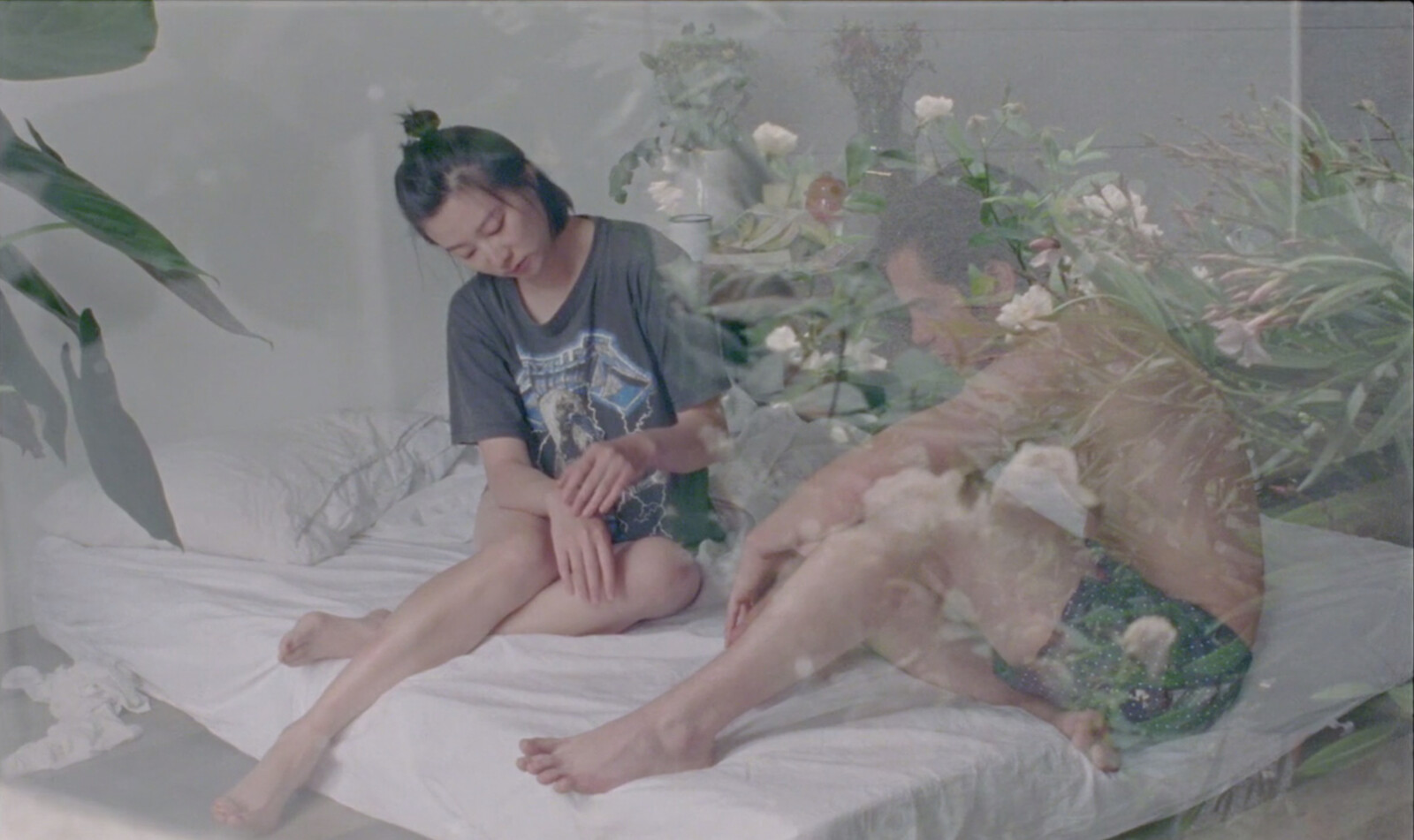
Meta is a collaboration between art-agenda and TextWork, editorial platform of the Fondation Pernod Ricard, in which writers reflect on the experience of writing about art. Here, Andrew Berardini expands on his monographic essay on Mélanie Matranga’s work “A Worn T-Shirt and Expressions of the Inexpressible.”
Flowers, if described with phrases that define them in the air of the imagination, will have colors with a durability not found in cellular life. What moves lives. What is said endures.
—Fernando Pessoa, The Book of Disquiet (1982)
I don’t know why anyone makes art or writes about it really, the depthless mystery of this is probably why I do it.
I do know that I can only survive because I can tell you about the purple thistle nestled in the vase of flowers on my table. I’ve touched it many times today, enshrouded in gray-green eucalyptus leaves and daisies bursting with yellow and small white flowers with silky petals. Stiff but still almost insistently soft, the purple thistle looks almost dangerous, with rows upon rows of menacing spikes, its color a shimmer of electricity like the dance of snapped power lines in a cool mist. Once touched, these multiple points (called bracts by …
October 22, 2019 – Feature
Paris Roundup
Sofia Gotti
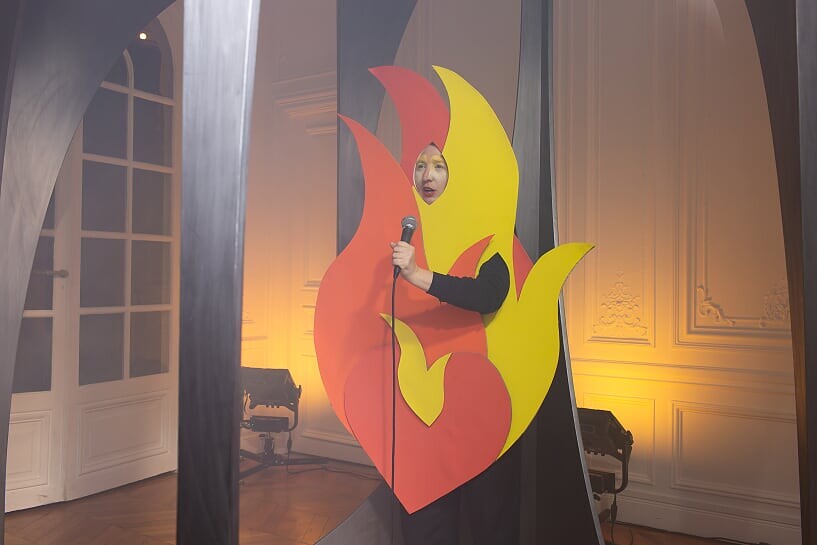
The most useful warning ever given to me while studying the Parisian avant-garde was “don’t forget they were all sleeping with each other!” A vital reminder that modern art was not the product of a pure and original creative act, but rather the consequence of cross-pollination that occurred thanks to friendships, sexual relations, and confrontations. That idea of purity and originality, still often fed to modern art scholars like mother’s milk, is a construction deeply compromised by power, politics, and, yes, sexuality. This context is inescapable, especially when wandering through FIAC at the Grand Palais. A leftover of the Exposition Universelle of 1900, the Grand Palais is a paradigmatic example of how France displayed its hegemonic power over culture and technology.
As a scholar of feminism and decolonialism, I am determined to deconstruct the canon I was handed. I resolved during my visit to focus on practices that signal a transformation in mainstream narrative and to ignore outdated (albeit seductive) presentations dedicated to contemporary mainstays, or booths like Gagosian’s all-male display dedicated to artists who spent time on the French Riviera. My main inquiry is, how are artists articulating the notions of impurity, disjunction, difference, and desire this week in …
October 7, 2019 – Feature
London Roundup
Chris Fite-Wassilak
%20provisioning_hr.jpg,1600)
The world is burning. This is not a metaphor. The sky is bleached a searing lime green, tinged with burned orange that reflects off relentless choppy waves. Suddenly, the sky goes blood red and the horizon blackens, the sun a dull hole punched in the sky. Our view shifts, panning quickly to the left, then back again, as if searching for something, anything. The sky then changes again to a blinding sherbet yellow. The screen depicting this scene, mounted on a metal rack above a whirring circuit board, gives us a certain vision of our current reality. The shifting colors are a translation of information from a small atmospheric monitor mounted on the back of the rack. It’s not clear what directly causes the hues to brighten or waves to get that bit higher or more intense in Yuri Pattison’s sun[set] provisioning (2019) at mother’s tankstation—whether the car exhaust from the street outside, or the hungover breath from bodies in the room might make the scene that bit more trippy. The contraption offers a heavily mediated fiction, but it also makes an actuality visible and present: a drowned world, made hallucinatory and beautiful by toxins that saturate the air and …
September 30, 2019 – Feature
Writing with Art
Nora Sternfeld / Emmanuelle Lainé
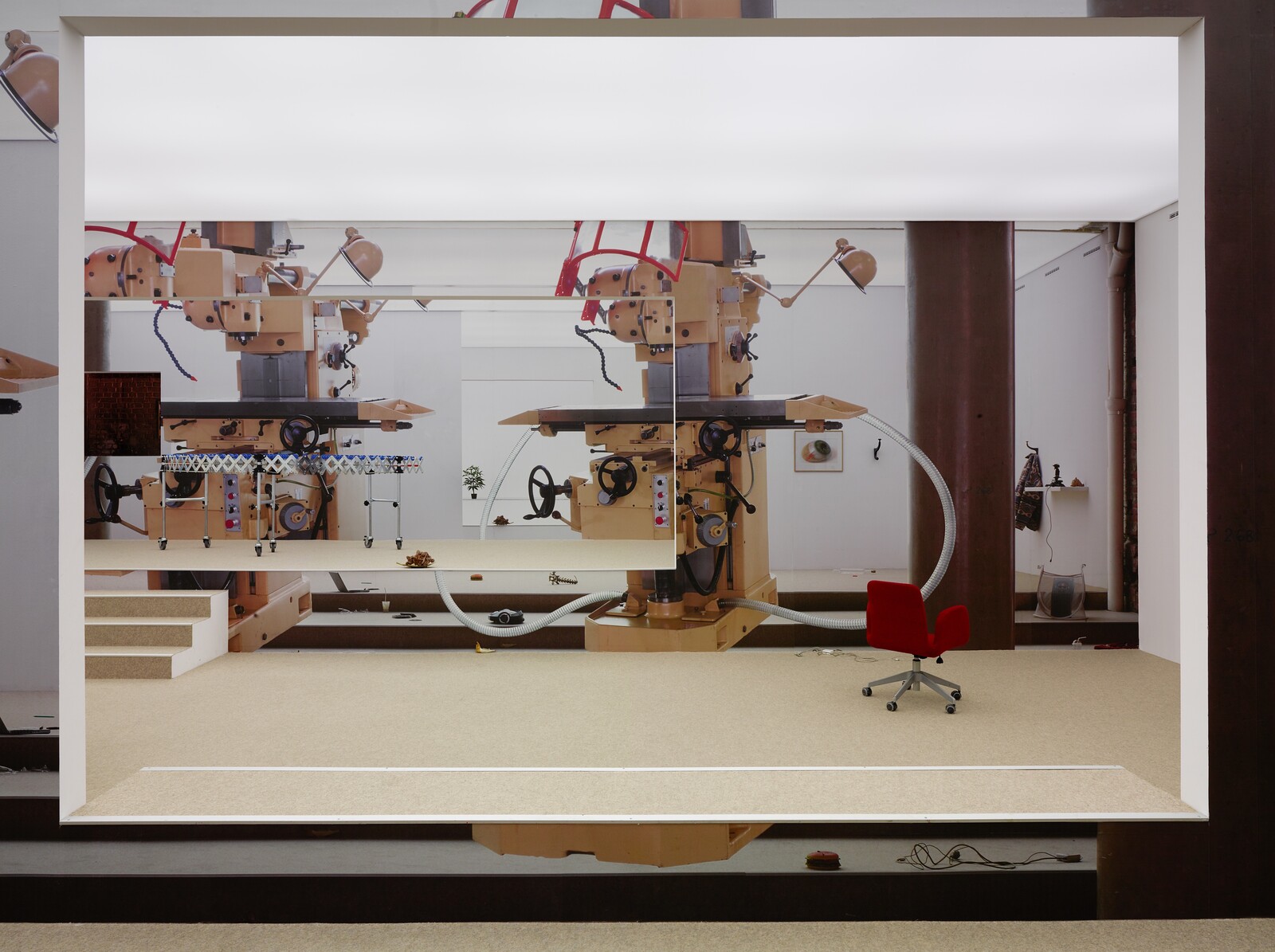
Once a month, art-agenda and TextWork, editorial platform of the Ricard Foundation, jointly publish a Meta text. Here, Nora Sternfeld and Emmanuelle Lainé reflect together on Sternfeld’s essay on Lainé, “Working Conditions.”
Art-agenda: Let’s start from the beginning. By pairing a writer and an artist who were not previously connected, TextWork invites them to embark on a sort of blind date. What were your expectations for your meeting?
Nora Sternfeld: One summer day, out of the blue, I received a phone call. It was Emmanuelle Lainé. She presented herself as an artist from Marseille, with a growing interest in political questions and she invited me to contribute a text to a new project called TextWork, where an artist and a theorist meet. She asked me because, reading my situated writings, my positions seemed relevant to her, maybe even more to where she wanted to go than where she stood at that point. The outcome, she said, could be open and experimental, but should be a text that takes her work as a starting point. I did not know her work then, but her interests and ways of thinking, as well as the open and precise way she approached me, immediately …
July 31, 2019 – Feature
Mother Tongue, Unholy Father
Ana Teixeira Pinto
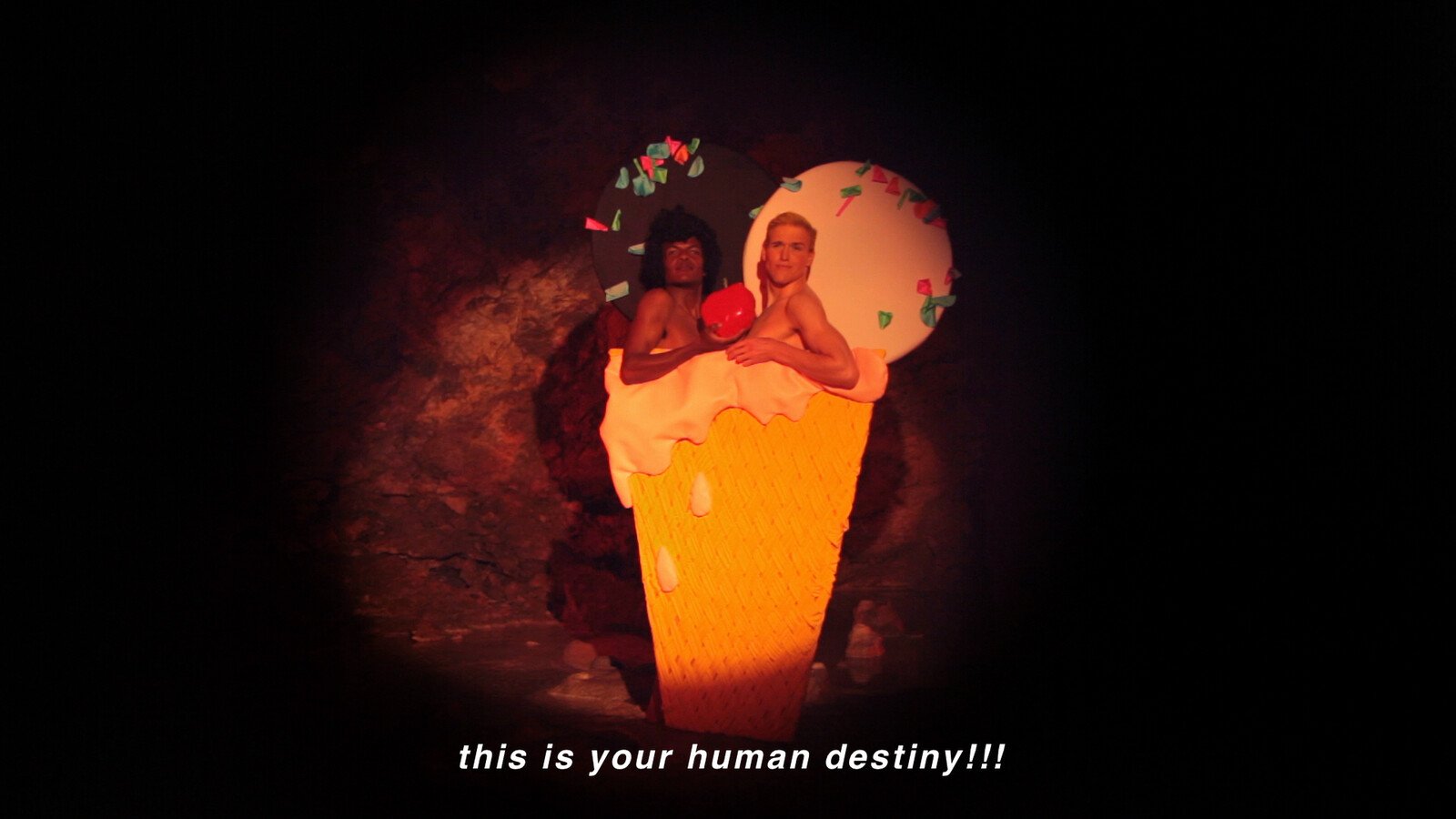
Once a month, art-agenda and TextWork, editorial platform of the Ricard Foundation, jointly publish a Meta text. Here, Ana Teixeira Pinto reflects on her monographic essay on Pauline Curnier Jardin’s work “The World Inside Out.”
It is a strange thing to be a writer who writes in a language that is not her mother tongue. Whenever I write in English—which is almost every time I write, and I write every day—I feel as if I am wearing heavy gear that weighs me down, slowing my pace. Constrained by my lack of vocabulary and grammatical shortcomings, I feel the text never soars, bogged down by doubt, dangling modifiers, subject-verb disagreements, and too many commas. The discomfort is heightened when speaking in public. The experience always feels like wearing a miniskirt that is too tight and too short: somehow your underwear always shows, no matter how composed you try to appear, you always feel exposed and ashamed (yes, I struggle with body image issues, in case you are wondering about my choice of examples). Writing at least has the advantage of allowing me to hide behind a thesaurus and Grammarly. Over the years, I have developed coping mechanisms. I became a syntax …
July 29, 2019 – Feature
“Misbehaving Bodies: Jo Spence and Oreet Ashery”
Philomena Epps

“Everyone who is born holds dual citizenship in the kingdom of the well and the kingdom of the sick,” wrote Susan Sontag in Illness as Metaphor (1978), “although we all prefer to use only the good passport, sooner or later each of us is obliged, at least for a spell, to identify ourselves as citizens of that other place.” This quote opens “Misbehaving Bodies” at the Wellcome Collection, which places Jo Spence’s healthcare work from the 1980s in conversation with Oreet Ashery’s 12-part web series “Revisiting Genesis” (2016). Through references to chronic and fatal illness, identity formation, medical discourse, and the politics of healthcare, the exhibition pays particular attention to how citizenship to the “kingdom of the sick” might productively disrupt and diversify common understandings of life and death, the body, and community.
Spence’s autobiographical artwork Beyond the Family Album (1979) takes the conventional form of the family photo album—photographs and press clippings are affixed to large sheets of paper, accompanied by captions and extended passages of text—but subverts the form by manifesting as a counter-archive of the self. By charting her divorce, her parents’ ill health, and her own struggles with chronic asthma, in addition to interrogating the invisibility …
June 27, 2019 – Feature
The opposite of experience
Mike Sperlinger
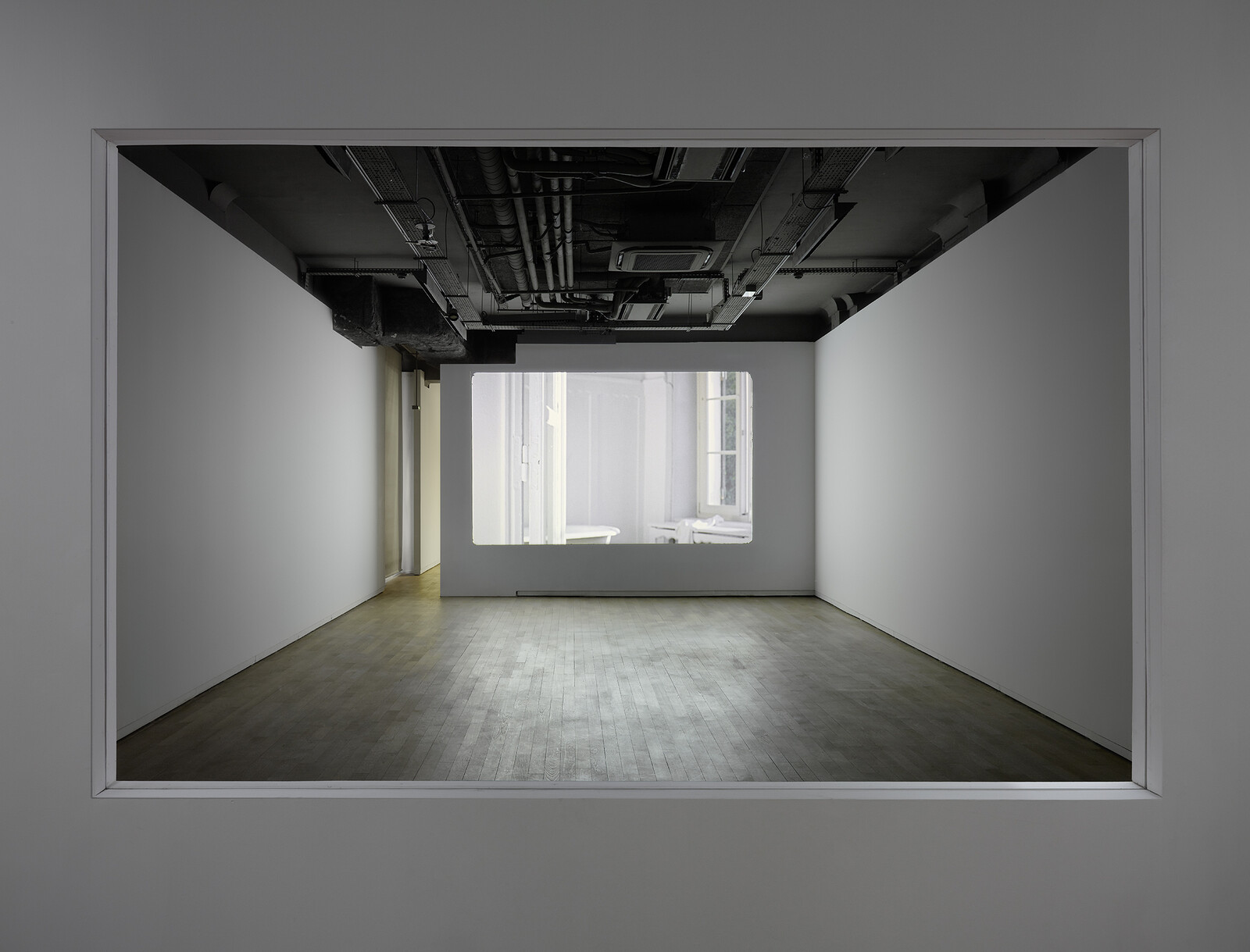
Once a month, art-agenda and TextWork, editorial platform of the Ricard Foundation, jointly publish a Meta text. Here, Mike Sperlinger reflects on his monographic essay on Laurent Montaron’s work, “Machine Learning.”
The exhibition I most regret not seeing is “Voids: A Retrospective,” which took place at the Pompidou Center in Paris ten years ago. The show was a restaging of nine works involving empty gallery spaces (Art & Language, Michael Asher, Maria Eichhorn, Laurie Parsons, and others). I bought a compensatory catalogue online: an almost parodically superdeluxe, 500-plus page production. But I regularly wish I had gotten on a Eurostar to walk through those (as I imagine them) repletely empty rooms.
What is the relation between experiencing something (or nothing) and writing about it? It seems, at first glance, incredibly obvious: that whereof we have not experience, thereof we must remain silent. How can you write about artworks you have never seen, for example? And yet we do, all the time, and I find myself asking, less and less rhetorically, what relationship artworks actually have to the meanings and experiences we ascribe to them.
Just over a year ago, I sat with Laurent Montaron in his farmhouse studio outside of Paris, …
June 18, 2019 – Feature
Basel Roundup
Ingo Niermann
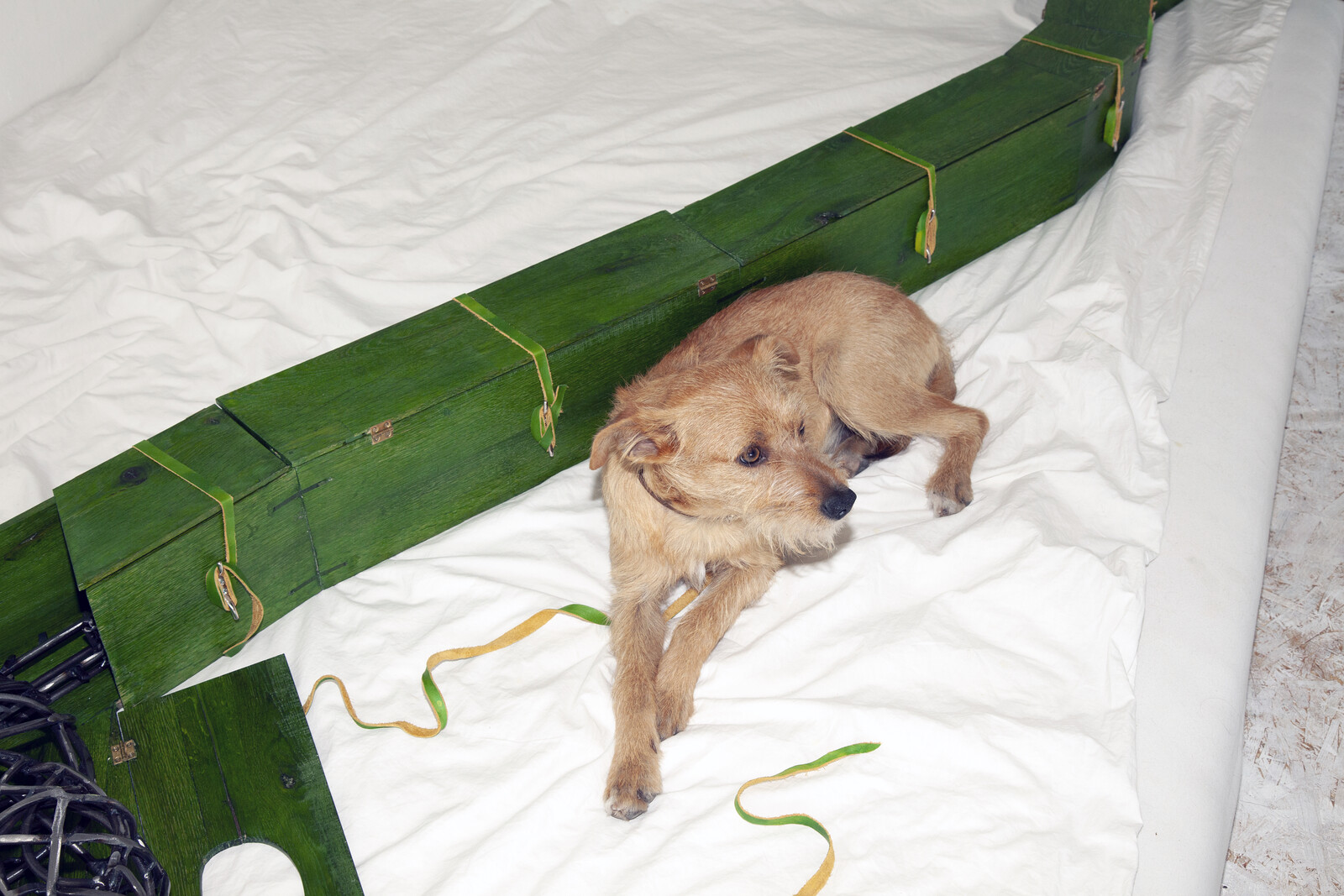
Next year, Art Basel turns 50, and animals are still not allowed. There’s not even a “Pets Lounge,” as there is for kids, even though the fair’s premises are big enough to host a whole circus. Art Basel was founded in 1970, a year before Swiss women gained suffrage. Women were allowed in the fair from the very beginning, but animals will probably have to achieve parliamentary representation before the fair will welcome them. While male collectors of visual art have long been fine with consulting their wives and mistresses, they tend to ignore the taste of their pets. Probably not because they give women’s taste on visual art more importance but because it allows them to bond in placid, post-sexual ways. Sounds boring? That’s what non-humans must think about visual art.
Entertainment needs surprise and trust needs solidity. Visual art tries to combine both: to make a joke that works forever. All arts are polluted by this uncanny ambition, but only visual art confronts us as a permanent physical manifestation. In that sense, it shares similar traits with nationalism. Both intend to eternally occupy Earth’s limited space. Nationalism has caused far more casualties and suffering, because artworks can’t fight …
June 12, 2019 – Feature
In conversation with Stockholm’s Mint
Frida Sandström

In 1939, the German artist Hans Tombrock (1895–1966) inscribed the words of his contemporary Bertolt Brecht’s 1935 poem “Questions From a Worker Who Reads” onto a wooden board. Both in exile from the Nazis, Brecht and Tombrock met in Stockholm earlier in 1939. They collaborated on several works and developed a longstanding dialogue on art in the workers’ movement, a set of riots and strikes at the turn of the twentieth century, and the institutionalization of the Swedish Trade Union Confederation, the Swedish Social Democratic Party (SAP), and social security. This spring, Tombrock’s piece, which borrows its title from Brecht’s poem, was exhibited in the group show “Den folkliga självstyrelsens livsluft” [The air which the autonomy of the people breathe] in Stockholm, alongside contemporary artworks that explore labor, exhaustion, and leisure. It was the first exhibition at Mint, a new non-profit art space in Stockholm founded and run by curators Emily Fahlén and Asrin Haidari. Last year, together with artist Thomas Hämén, Fahlén and Haidari curated the 2018 edition of the Luleå Biennial in northern Sweden. Titled “Tidal Ground,” the biennial critically investigated the local and global extraction of natural resources and workforces, alongside the role of art in antifascist …
May 30, 2019 – Feature
August to May, The Years and a Day’s Work, Writing is a Way of Reading
Orit Gat
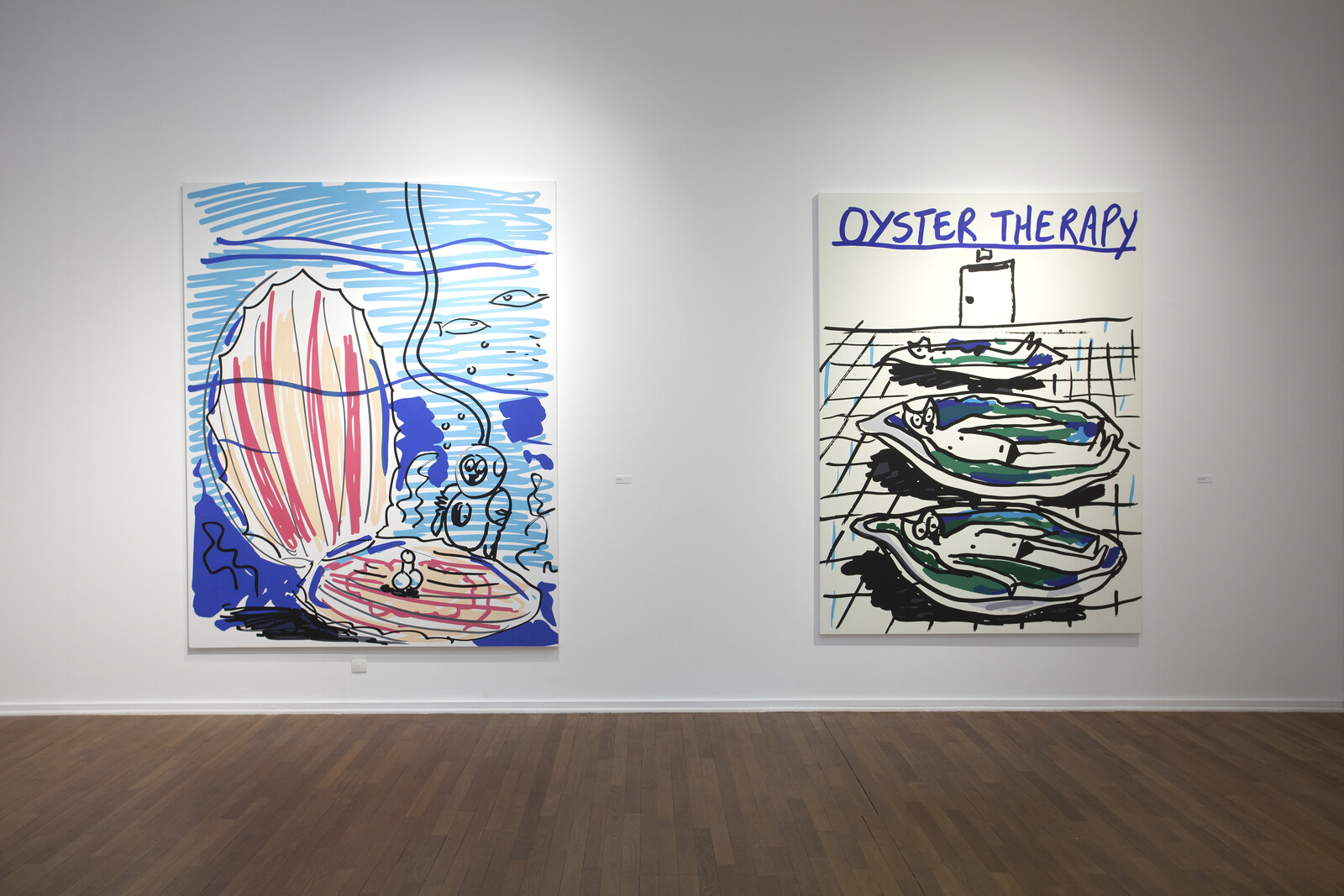
Once a month, art-agenda and TextWork, editorial platform of the Ricard Foundation, jointly publish a Meta text. Here, Orit Gat reflects on her monographic essay on Alain Séchas’s work, “Vacances.”
Essays have invisible bibliographies. The books that are on your desk when writing. The books you reach to because something you looked at or thought about reminds you of something you once read. Books in which you find something new through writing.
I remember what I was reading when I was in France last July. I took the train from London to meet Alain Séchas in Paris. We then took a train together to see his exhibition, “Passe-temps,” at the Musée de l’Abbaye Sainte-Croix in Sables d’Olonnes. On both train rides, I read the same book, Annie Ernaux’s The Years (2008). It was just published in English. Somehow, I had never heard of Ernaux until that summer. (This is not true: in December, I found a copy of La Place, for which she won the Prix Renaudot, at my parents’ house. The price is in francs. I must have bought it as a teenager and forgotten it on a visit more than a decade ago.) But it seemed fitting …
May 28, 2019 – Feature
Plants
Patrick J. Reed
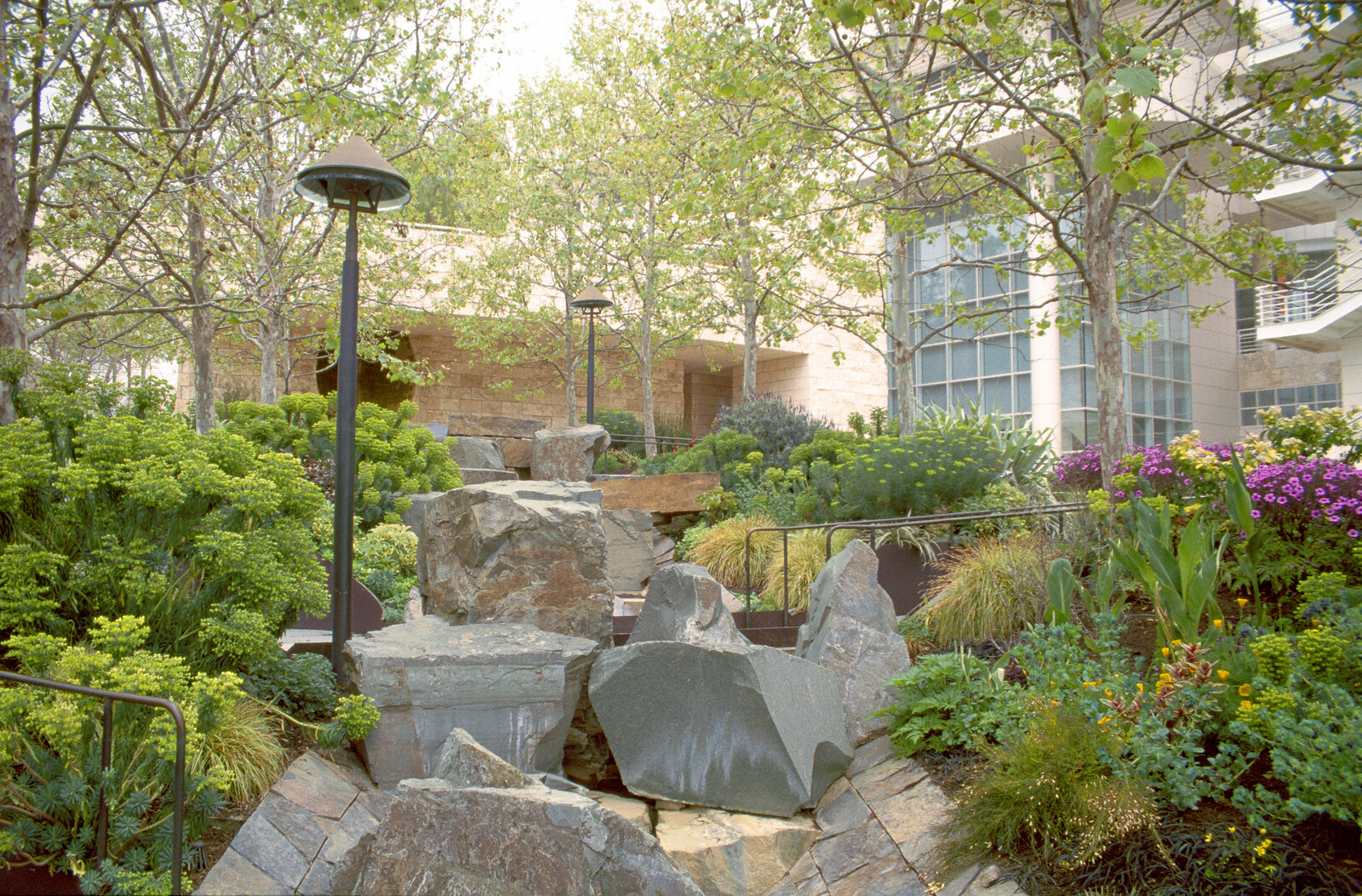
Severed ears make for convenient plot points—they signal instant mystery. An example: To whom did the pair of ears in Hieronymus Bosch’s Garden of Earthly Delights (1490–1500) once belong, and what in the actual hell are they now? Yoked by an arrow and sandwiching a blade, this pictorial element of the Medieval altarpiece is the act of ear amputation compressed into a single, mythological being. The Christian context makes for an easy segue to another moment of religious conjuring: Christ’s last miracle before crucifixion; the replacement of Malchus’s ear (lopped off by Simon Peter) in the Garden of Gethsemane. Recounted in the Gospels but considered apocryphal by some, the story is doubtless a parable about the consequences of blasphemy. It provides a clue as to the meaning of Bosch’s monster.
Hear no evil.
Ear amputation is the most agreeable, maybe the most forgivable, type of mutilation to the human face. Unlike eye gouging or nose cutting, ear amputation creates a surface wound; the orifice is neither widened nor deepened, and the inner organ retains its basic function. Ear amputation is also the furthest logical extent to ear yanking, that schoolyard punishment exerted by bullies and authorities alike. Perhaps …
May 16, 2019 – Feature
Brussels Roundup
Chloe Stead
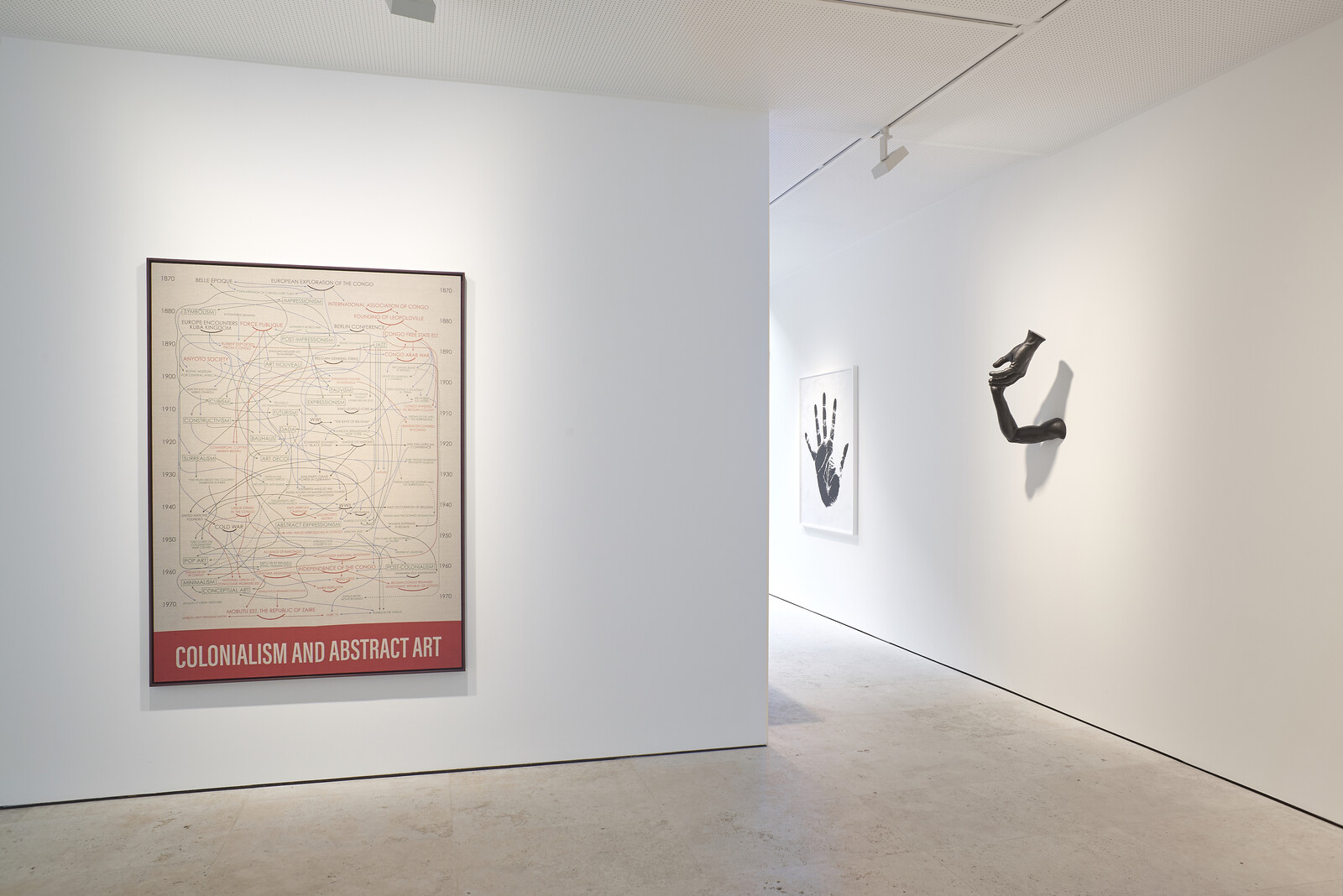
Often referred to as the chocolate capital of the world, it’s said that no visit to Brussels is complete without a trip to one of the city’s famous chocolate shops. In Hank Willis Thomas’s exhibition “Donnez votre main” at Maruani Mercier, the American artist shows a new body of work which posits an uncomfortable truth: Belgium’s predilection for chocolate is explicitly linked to its colonization of Congo under King Leopold II. The grizzly practice of cutting off the hands of the wives and children of workers who didn’t meet the king’s strict quotas for natural resources like cocoa, ivory, and rubber is represented throughout the exhibition, most notably in a collection of framed Antwerpse handjes—traditional Belgian chocolates shaped like hands—which Willis Thomas has arranged into patterns traditionally associated with Congolese textiles. The rest of the exhibition is dedicated to a number of screenprints mostly based on archival photographs of Belgium and Congo during colonization—made on retroreflective material that is only fully revealed when photographed. It can sometimes feel tedious, if not downright gimmicky, to view an exhibition through a cellphone screen, but this is an admittedly clever way of linking historic examples of exploitation and human rights abuses in Congo …
May 13, 2019 – Feature
58th Venice Biennale, “May You Live in Interesting Times”
Adam Kleinman

Gemini came a little too early to Venice. While the 58th edition of the Venice Biennale was clearly born under the sign of Taurus, the exhibition’s mood is that of the mercurial twins who oscillate between opposing states of mind. Don’t let yourself be fooled by the exhibition’s title, mired in borrowed orientalist apocrypha, “May You Live in Interesting Times,” ambiguous mirroring is the true structuring principle of the show. To this end, the curator of the international exhibition, Ralph Rugoff, played his two houses—the Arsenale and the International Pavilion in the Giardini—against each other by having each of the participating artists present work in both venues. The effect of this maneuver creates an odd form of creative bookkeeping wherein 79 artists are stretched to perform the work of 158.
Rugoff’s display is likewise dotted by recombinant forms as salient features of works are meant to act as anchors, but end up flattening the art into objects grouped rather glibly by kind or theme as opposed to intention, code, or context. For example, repetitions of sculptures based on the same source material such as Arthur Jafa’s series of chained monster truck tires, “Big Wheel” (2018), that I read as …
May 2, 2019 – Feature
What to fall back on
Rachel Valinsky
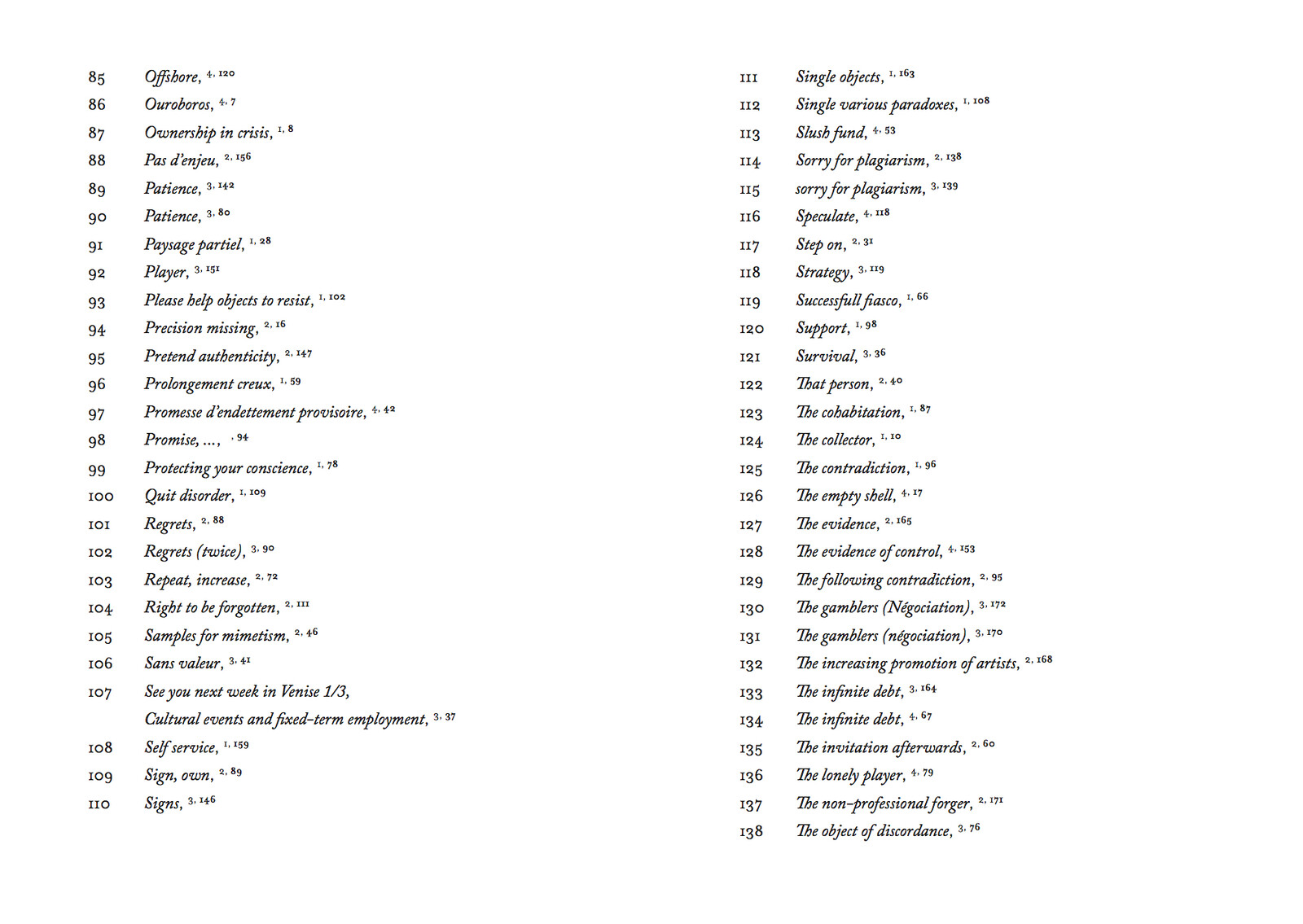
Once a month, art-agenda and TextWork, editorial platform of the Ricard Foundation, jointly publish a Meta text. Here, Rachel Valinsky reflects on her monographic essay on Eva Barto’s work, “Eva Barto’s Gamble.”
There’s trouble in achieving writing’s focus when its objects are most evasive. A year ago, I was writing about an artist, Eva Barto, whose work is willfully fugitive: few photographs of it exist or are available, while its operations and internal mechanisms are complex, inscribed within set logics and systems though often upturning or diverting them from within. I went to visit her in Paris and we spent hours talking about her work in a café near Canal Saint-Martin and continued to send her questions to which she graciously responded over Skype and email after I returned to New York. Finally, I had filled myself to the brim with details of process, form, and reference. I paid intense attention to relations between things brought into focus by someone other than myself, but offered to me so that they might take on, through the text I was writing, some complementary expression and precision. I looked for what poet Lyn Hejinian once described as the writer’s paradise when I finally …
April 9, 2019 – Feature
Hong Kong Roundup
Marcus Yee
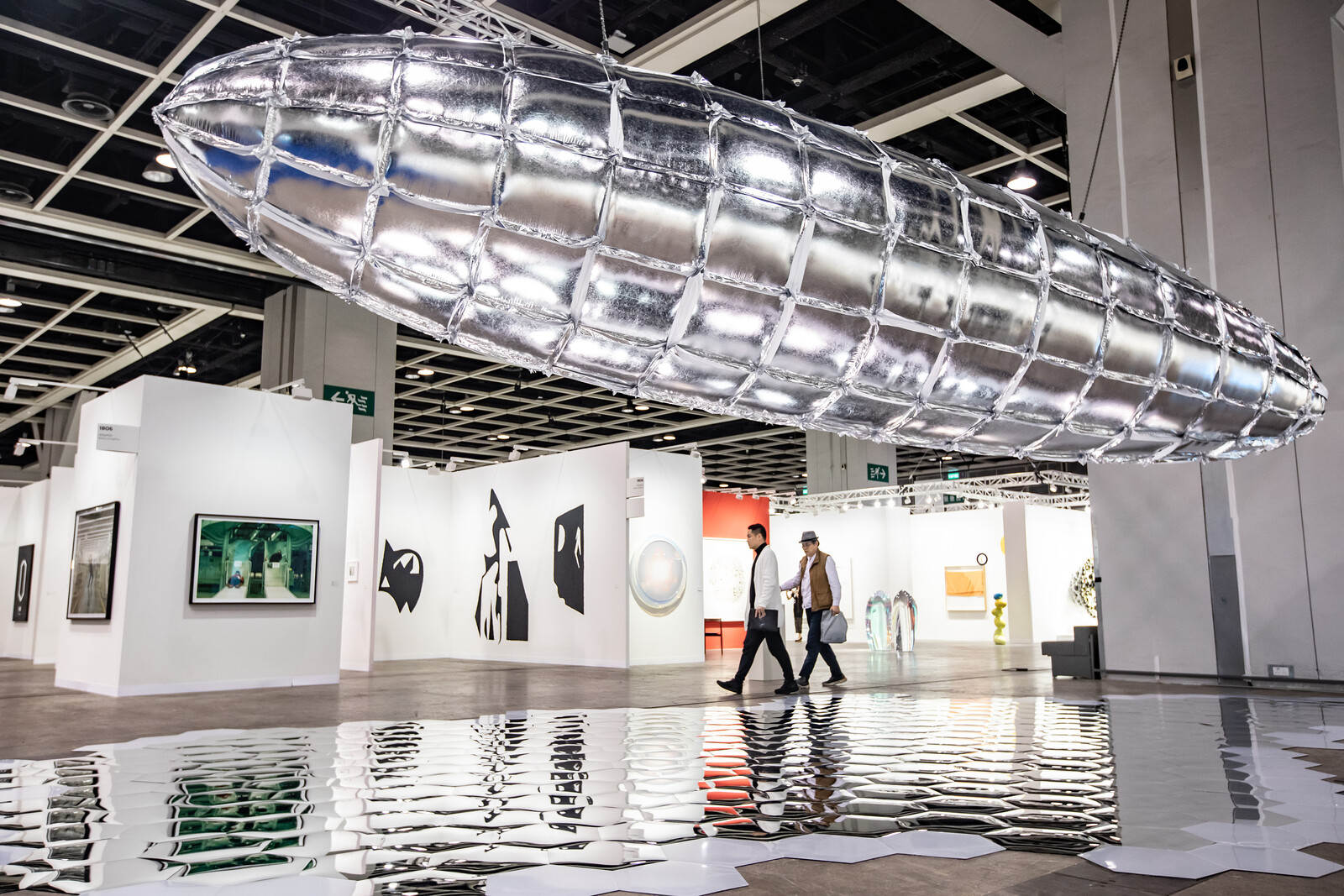
Hong Kong floats, at least according to Xi Xi’s short story, “The Floating City.” In this sensitive portrait of Hong Kong, the city has stabilized into myth, while its inhabitants have turned into a group of happily amnesiac petits bourgeois, desiring only for peaceful homes. After a few years of toil, the city became prosperous and cosmopolitan, boasting art festivals and books from all over the world. The floating city was a miracle.
This sensation of floating is best captured by Art Basel Hong Kong’s public art section, “Encounters.” In Elmgreen & Dragset’s City in the Sky (2019), the global financial metropolis is literally turned upside-down; whereas Lee Bul’s Willing To Be Vulnerable – Metalized Balloon (2019), a shiny emblem of high modernity’s aspirations and failures, hangs languorously from the convention center’s ceiling. By virtue of their scale, these spectacles were well received by a public hungry to update their WeChat or Instagram feeds. At same time, looking at these monuments aloft in the air, the question remains: What keeps everything afloat?
This was also the source of trepidation by inhabitants of Xi’s floating city. Unnerved by the possibility of an Icarian fall, they wished to pack up and leave the city …
March 26, 2019 – Feature
New York City Roundup
Amy Zion
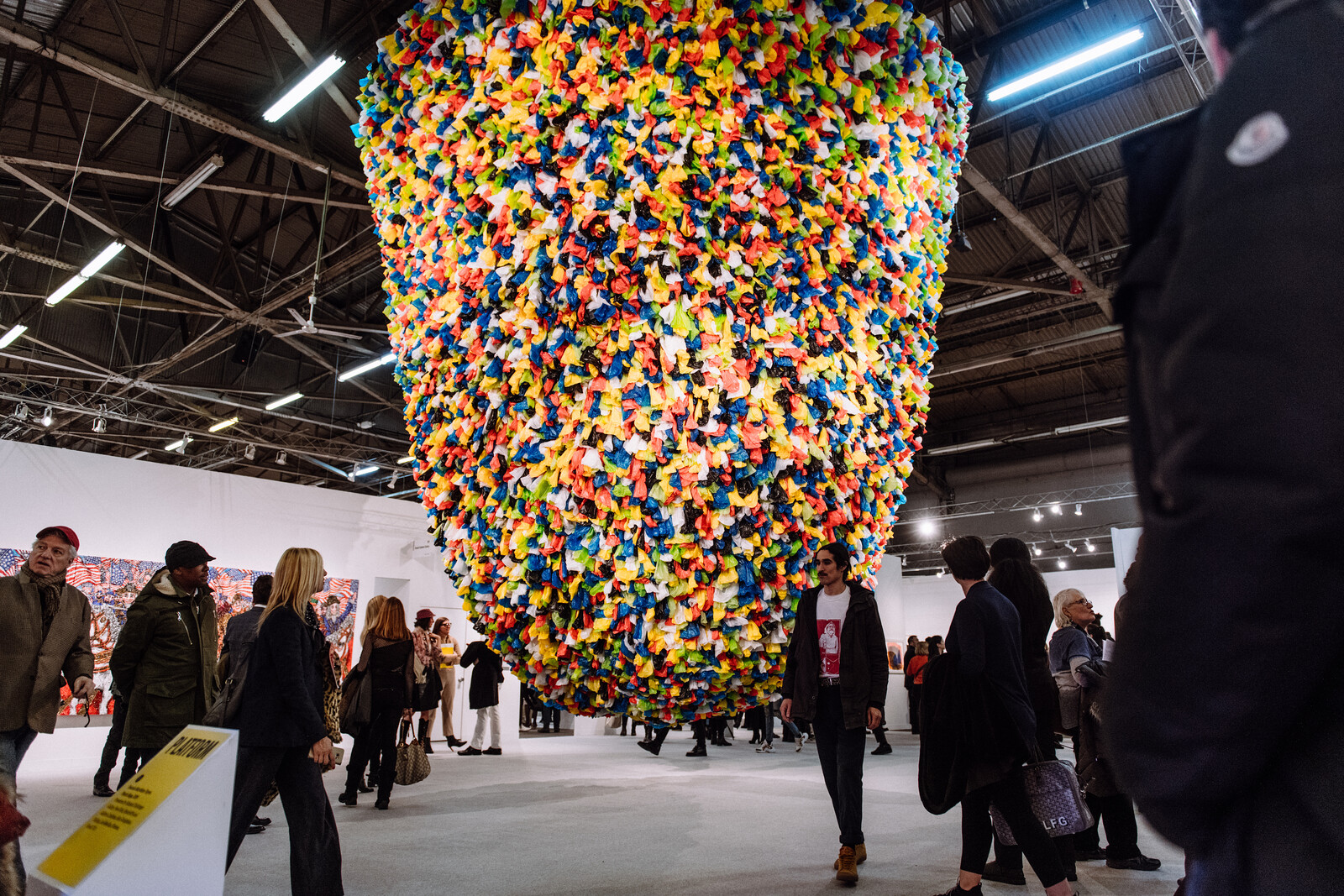
Twenty-five years ago, a group of young dealers, including Pat Hearn, Colin de Land, and Matthew, Marks started the first contemporary art fair in New York at the Gramercy Park Hotel. Titled the Gramercy International Art Fair, it spanned floors 12, 14, and 15 (there is no 13, of course) of the hotel, with each gallery taking over a room or suite. In the first iteration in 1994, Tracey Emin slept in the bed in the room where her work was displayed (by Jay Jopling/White Cube). In 1997, Holly Solomon installed two TV screens as part of a work by Nam June Paik in her room’s bathtub. After outgrowing the hotel, in 1999, the fair moved to the original site of the infamous 1913 Armory Show and changed its name. Now it fills two West Side piers and includes a modern/twentieth-century art portion alongside the contemporary. There are more fairs that share the week with the Armory—the Independent, which celebrated its 10th anniversary, Volta (more on that later), and Spring Break, among others.
Amid talks and other initiatives marking the quarter-century celebrations, at the fair there was a room several booths wide that included documentation and restaging of works from the …
March 5, 2019 – Feature
Mexico City Roundup
Kim Córdova

A man wearing pajamas and a bathrobe clutches a branded coffee mug and ponders the distance through the drawn curtains of the Museo Jumex terrace gallery window, his graying eyebrows knitted in maudlin unease. This is Mike, artist Michael Smith’s alter-ego who in the exhibition at Jumex, “Imagine the view from here!,” considers buying a “curated timeshare living experience” at the museum, marketed by the fictional International Trade and Enrichment Association. In promotional videos and trade fair–like booths, his bone-dry humor critiques the private interests that have a stake in the promotion of Mexico’s contemporary art scene to foreign and local markets as well as the clichéd banality of its consumption.
The show is particularly resonant in the context of Art Week CDMX, the annual week of cultural offerings organized to coincide with Mexico City’s art fairs. Playfully seeding his fictional timeshare with coopted real elements such as photos from past museum events, the omnipresent juice at the museum’s openings, and cameos by the museum’s curator, Smith constructs a conceptual art version of an investable real estate lifestyle package. The show’s trade-fair aesthetic is a reminder of how easy it is to harrumph fairs as too mercantile, too convention center ticky-tacky, …
February 28, 2019 – Feature
Los Angeles Roundup
Christina Catherine Martinez
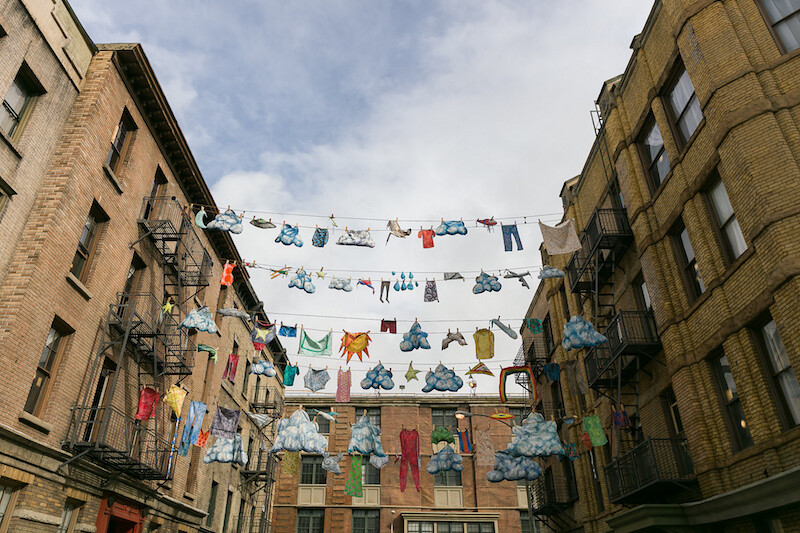
“This is a stupid town. It’s lazy, it’s polite, it’s so sissy in its mentality, so go along with everything that goes along. It’s corporate-owned, it’s a town owned by Hollywood, and it’s about time it grew up. It’s about time that it took art and said come on baby, show me something!” Thus spoke John Cassavetes in a behind-the-scenes documentary for his 1977 film Opening Night. The clip played as part of an intro bumper at Now Instant Image Hall, a microcinema in Highland Park with a bookshop selling various zines and small press titles related to its eclectic programing, from Susan Cianciolo’s films to historical gems like Reyner Banham Loves Los Angeles (1972). The latter screened just a few days before the cultural Leviathan known as Frieze Week descended upon the city, bringing with it a deluge of rain and the attendant disenchantment.
Cassavetes’s diatribe drew laughs and cheers from the 60 or so rain-soaked people nestled into the space (I love the way he hisses out the word sissy—his hatred for Los Angeles is unimpeachably authentic) and it does presciently, if cynically, encapsulate this moment of arrival. The LA art scene grew up. Or at least, the kids …
January 15, 2019 – Feature
Tensta konsthall
James Voorhies

On a late November Saturday morning in Tensta, a suburb 10 miles northwest of downtown Stockholm, a double-decker bus idled in the plaza of a shopping mall. People stood around drinking coffee and chatting. A woman wearing glasses and a hijab informed them in Arabic to board because the bus would soon depart. Her name is Fahyma Alnablsi. Originally from Damascus, she is 68 years old and has lived in Tensta for 25 years. While her official duties at Tensta konsthall include administration and education, Alnablsi is by all accounts a social conduit between the arts institution and community of Tensta. Built between 1967 and 1972 to provide homes to young families, today people from Afghanistan, Ethiopia, Iraq, Iran, Jordan, Kurdistan, Somalia, Syria, and Turkey live in the suburb. Alnablsi, trained as an educator, previously worked with some of these communities by volunteering at women’s organizations, teaching Swedish language classes, and advising on maneuvering government bureaucracy. In 2012, she was hired by the curator Maria Lind, who in December 2018 finished an eight-year tenure leading the institution. I visited Stockholm to conduct research for a new book that will study in part how modest-scaled institutions in Western cities connect to …
December 13, 2018 – Feature
Gary Indiana, “Janet Malcolm Gets It Wrong—Part II” (1986)
Kim Levin
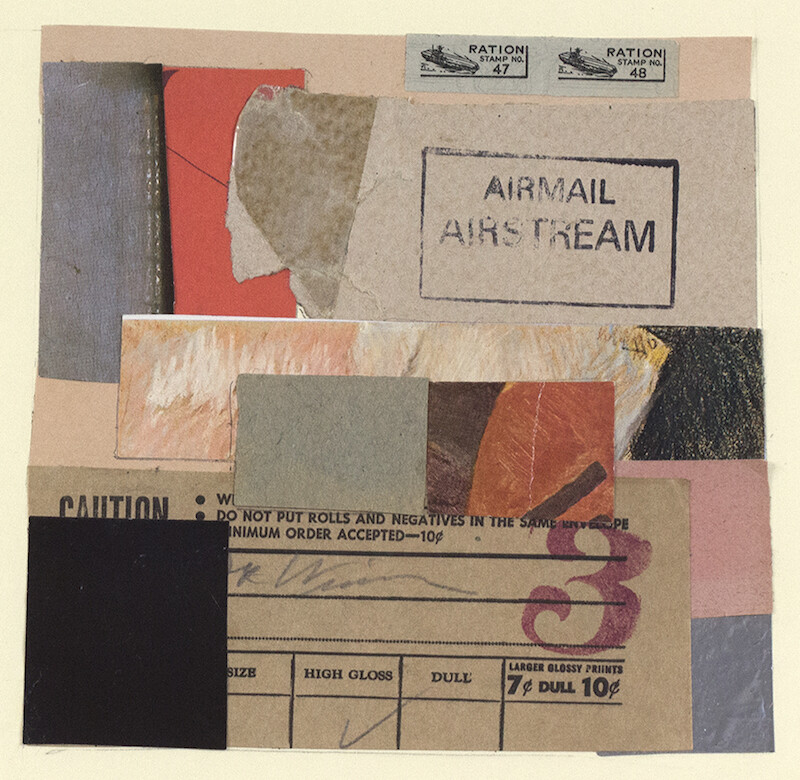
This is the second part of Gary Indiana’s “Janet Malcolm Gets It Wrong—Part II” (1986). See the first part here.
Between 1985 and 1988, early in his career as transgressive downtown playwright, director, and actor, and before he became known for his true-crime novels, Gary Indiana wrote art criticism for the Village Voice. For those three years his weekly columns caustically deconstructed exhibitions, critiqued the art world, and questioned the limits of art itself. Individually his highly personal and insidiously political columns always provided a terrific read. As a whole, the newly republished essays in Vile Days: The Village Voice Art Columns 1985–1988, edited by Bruce Hainley and published by Semiotext(e), add up to something much more. They are an essential account of the East Village art scene and its context. They are also institutional critique with an early focus on women artists. Their appearance in print is especially timely at this semi-nostalgic moment after the demise of what remained of the Village Voice, which in its heyday was an alternative paper known round the world.
This is the second half of Gary Indiana’s two-part article from 1986, in which he slyly deconstructed Janet Malcolm’s pair of 1986 New Yorker profiles …
November 20, 2018 – Feature
Detroit Roundup
Rob Goyanes
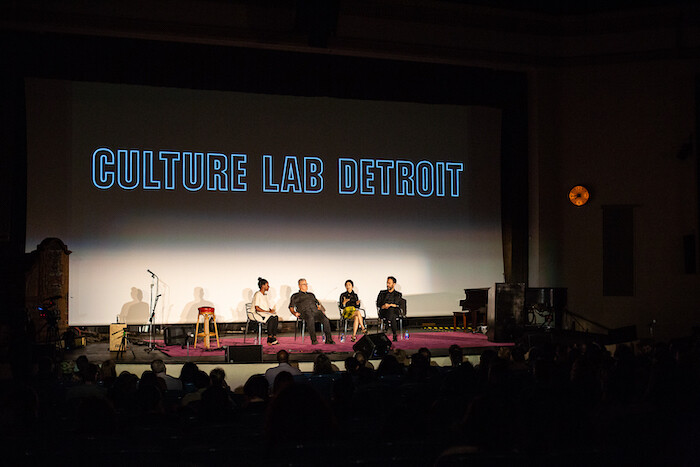
In early October, I went to Detroit for the first time. I was invited on a press trip by Culture Lab Detroit. Positioning itself as a socially conscious arts organization, its annual conference hosts discussions at different sites throughout the city. This year’s summit was dubbed “The Crisis of Beauty,” which to me sounded like a hollow if catchy turn of phrase. While waiting for my Lyft at the airport, a huge Ford truck approached with a bright blue LED Uber sign in the windshield. The driver was a large white man wearing a camo Trump hat. It portended a weekend of strange, overlapping contradictions regarding the future of Detroit, the political fungibility of what is deemed beautiful, and who finds beauty where—especially within the industrial ruins of Midwestern American cities.
Much contemporary art operates on an axis of crisis capitalism, with the promise of revitalizing downtrodden places. The name Culture Lab is a bit sus, considering that Detroit has been revolutionizing culture for a long time. The first panel, “The Aesthetics of Tomorrow,” was held at the Senate Theater, in Southwest Detroit. With a burning-red marquis and rectangular art deco flourishes, the building is an old silent film theater from …
November 13, 2018 – Feature
57th Carnegie International, “International”
Orit Gat
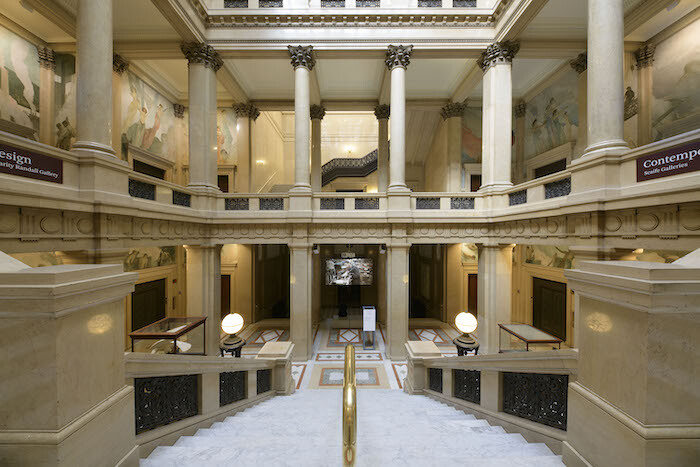
I first came to the United States as an “international student.” At the risk of bothering the current administration, I stayed here. I remember every moment that I’ve learned something new about the culture and place I live in: class, labor, and racial relations, geography, history, the political system. I picked it up as I went along in an attempt to seem less foreign, never feeling the positive spin of the description “international” except on my university paperwork.
At the Carnegie International, I learned about an American cultural phenomenon I haven’t been privy to: the children’s television show Mister Rogers’ Neighborhood, a staple of American childhoods which aired from 1968 to 2001. There’s a local connection—Mister Rogers was from Pittsburgh—but I learned about it from Alex Da Corte’s Rubber Pencil Devil (2018), a house made of neon lights and populated with a three-hour loop of 57 videos in which Da Corte and friends play Rogers as well as other characters, from Bugs Bunny to Big Bird. It’s a colorful, light-hearted installation that encapsulates the exhibition’s attitude, what its curator Ingrid Schaffner calls “museum joy”—the satisfaction of seeing art, in public, and the contemporary work of interpretation, of creating connections and making …
November 2, 2018 – Feature
Gary Indiana, “Janet Malcolm Gets It Wrong—Part I” (1986)
Kim Levin
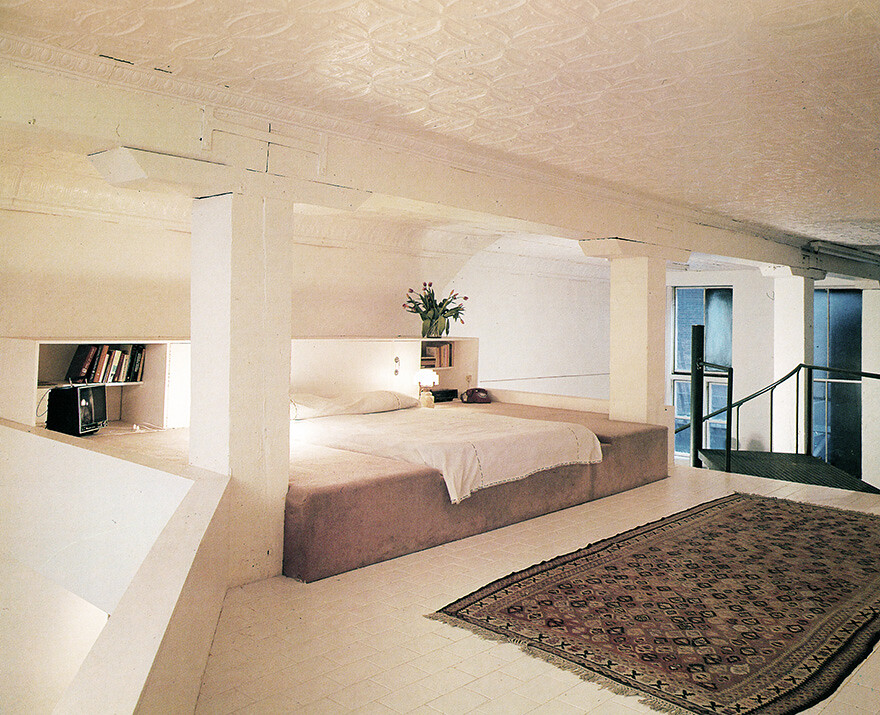
For three years early in his career, Gary Indiana—“toxic downtown savant” and novelist—was an art critic for The Village Voice. Born in New Hampshire and schooled at UC Berkeley, Indiana has written, directed, and acted in off-off-Broadway plays produced in such places as the Mudd Club and in experimental films. The year after he left The Voice, he published the first of his novels, Horse Crazy (1989), based on those three critical years. William Borroughs compared him to Jean Genet and Tobi Haslett, who introduced the novel in its reissuing this year, called him “among the best living prose stylists in English.”
Indiana’s weekly columns for The Village Voice have now been gathered by Bruce Hainley and will be published by Semiotext(e) this month. Vile Days: The Village Voice Art Columns 1985–1988 is a terrific read, especially if you happened to be there during that “stunningly deranged decade” (to quote Indiana quoting Carol Squiers) that saw the thrilling rise and tragic fall of the East Village art scene. During those years, I was also writing on art for The Village Voice but, intimidated by Gary’s unapproachable aura, I barely knew him. In those days, most of us wrote at home and …
October 22, 2018 – Feature
Paris Roundup
Lauren Mackler
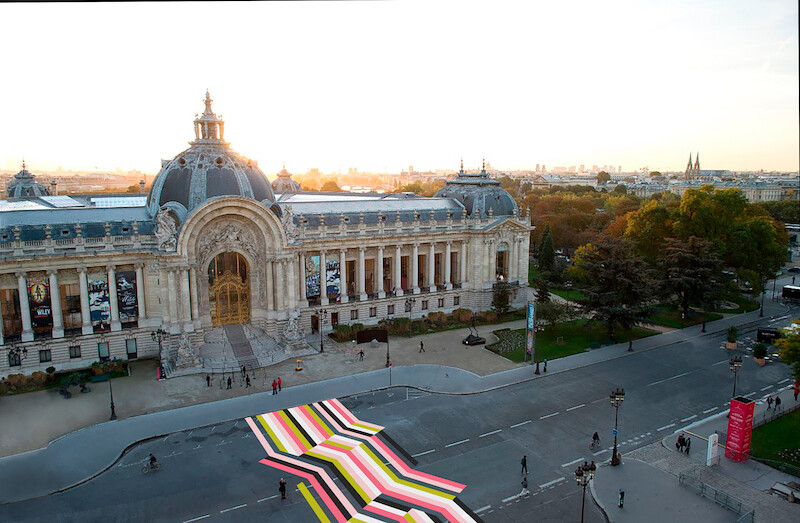
Stamina This is by no means comprehensive, so I’ll get my highlights out of the way. Rounding down, and starting with the experiential: I found the hunt for the various venues of Avant-Première compelling. This casually organized event was comprised of small Parisian galleries and emerging ventures opening their shows a few days before the fairs and driving traffic from post-Frieze London. Out-of-towners (this year, Los Angeles galleries) were embedded in unconventional spaces: up spiraling staircases and behind doorbell-laden portals. At the Beaux Arts, Nairy Baghramian’s exhibition of self-reflexive, materially seductive sculptures—in which shims and buffers, made of aluminum and cork, held up large unwieldy shapes—defied definitions of form; at Balice Hertling’s Marais space, Isabelle Cornaro’s detail-oriented objects and careful placement evoked stilled narratives; small captivating pictures by Lisetta Carmi hung quietly in Galerie Antoine Levi, capturing tender backstage scenes between sex-workers, trans lovers, and friends. A night, at the legendary club Les Bains Douches, where the smell of chlorine and the reflection of the indoor pool added to the intemperance of its crowd; a day prior, at a small hotel lounge, when our bartender told us that Oscar Wilde died just over there, a few feet away from our …
October 12, 2018 – Feature
London Roundup
Mariana Cánepa Luna

Just as Frieze Art Fair opened last Wednesday, Prime Minister Theresa May gave her keynote speech—and dared to dance again—at the Conservative Party Conference in Birmingham. She announced that freedom of movement would be terminated “once and for all” by limiting access to “highly skilled workers” (in short, migrants earning over 30,000 British pounds per year). Countless art professionals earn much less (including entry-level curatorial staff at Tate, and yours truly), as well as doubtless many of the myriad gallery and museum folks involved in the city-wide jamboree of Frieze week. How do we imagine London’s contemporary art ecology post-Brexit, a scene that has grown exponentially since Tate Modern’s opening in 2000 and the first Frieze Art Fair in 2003? The question of how the 2019 edition of the fair is going to be affected was the elephant in the tent. Most people I asked shrugged: negotiations are still ongoing, consequences are yet to be seen. “It’ll be fiiiiine,” a London museum director told me. “Maybe we’ll visit a smaller fair, like the first editions—remember those days?” opined a British gallerist friend working in New York. Although one could put this upbeat denial down to the cliché of dark British …
October 5, 2018 – Feature
Chicago Roundup
Orit Gat
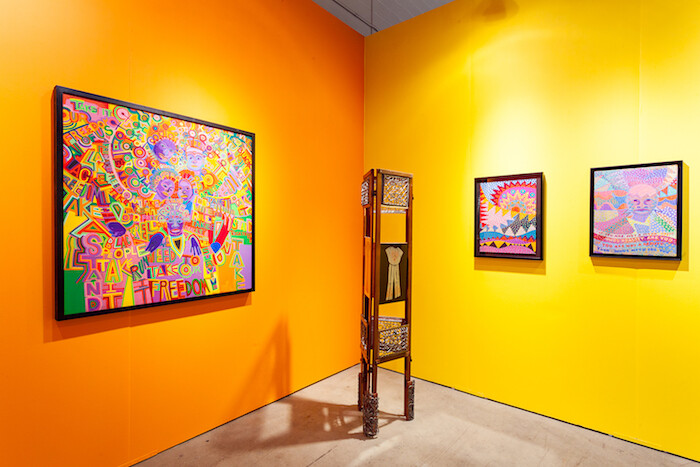
The Tribune Tower in Chicago’s Downtown, home to the Chicago Tribune until a few months ago—it is being converted to luxury apartments—includes a collection of stones from famous buildings around the world embedded into its exterior. The newspaper’s journalists on assignment brought these stones back from Notre Dame and the Taj Mahal, the Parthenon and Hagia Sophia, and they were laid into the building with an engraving noting their origin. It epitomized the spirit of the place: a historically international city whose architectural monuments, from Louis Sullivan’s skyscrapers to Ludwig Mies van der Rohe’s modernism, are studied around the world, but also a city which attempts to bridge regionalism and internationalism, allowing this dichotomy to become a defining sense of its culture.
At the Art Institute of Chicago, one of the world’s most illustrious encyclopedic museums, both temporary exhibitions relate to Chicago’s history: there is “John Singer Sargent and Chicago’s Gilded Age,” focusing on his Chicago patrons (the painter never lived in the Windy City, these are simply the Chicago elite who traveled to Paris or London, and one patron who took Sargent on a watercoloring trip to the Florida Keys). Alongside it is an exhibition charting the short history of …
July 18, 2018 – Feature
“Signals: If You Like I Shall Grow”
Isobel Harbison
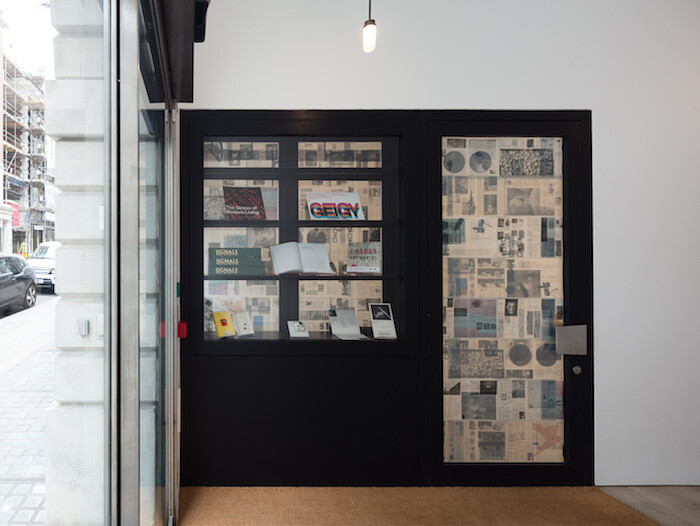
“Signals: If You Like I Shall Grow” is an exhibition of works that come from a past that was alive to the future. Initiated by Mexico City’s kurimanzutto, held across the two spaces of London’s Thomas Dane gallery, and curated by Isobel Whitelegg, the exhibition echoes the interdisciplinary alliances of its subject matter: London gallery Signals’ activity between 1964 and 1966. As well as being a commercial entity, Signals was also an innovative project space, an experimental publishing endeavor, and a loosely associated set of artists primarily active between the UK (London and various regional centers) and Latin America (Venezuela and Brazil, primarily).
Both moderately sized spaces are dense with works, 42 in each. But an absence of durational work (with the exception of Gustav Metzger: Auto Destructive Art, by Harold Liversidge [1965] and Free Radicals by Len Lye [1958–79], shown consecutively on a monitor, on loop) and the careful editing of archive material (there’s a vitrine of editions near the entrance and, further into the gallery, a bench/table structure featuring excerpts from several publications), means that navigating through it is not an overwhelming documentation-heavy endeavor. There are no wall labels; the works are not divided by medium, geographical origin, theme, …
June 6, 2018 – Feature
The Colonial Museum
Natasha Marie Llorens
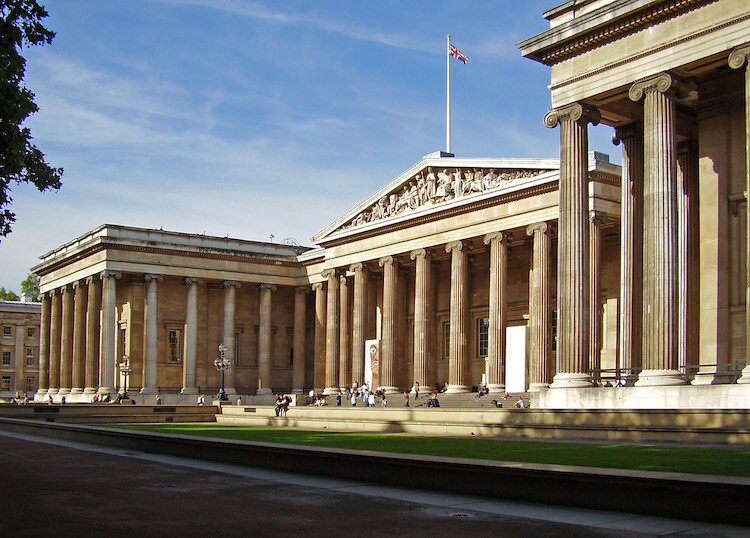
The main floor of the Musée du quai Branly, inaugurated in 2006, is structured with thick, earth-toned walls. Like the walls of homes one would imagine in villages where an ambient heat requires two feet of earth to maintain the cool of the interior. I run my fingers along one wall lightly, reveling in its softness, before turning to really look at the surface that extends everywhere, like an organizing logic. It is leather. Real leather, aged by the passage of myriad fingertips over it, embossed at strategic intersections of the exhibition plan with maps and other contextual information. The galleries are lined with skin dyed in a lustrous and uniform shade of golden brown. The symbolism of spatially delineating an exhibition space that is exclusively devoted to the arts and material cultures of indigenous and “non-European” civilizations with animal skin reads immediately as a metaphor for the psychological and economic structures of colonialism.
The use of leathered skin throughout the permanent galleries of the quai Branly reminds the viewer that what is really at stake in glorifying the material cultures of the colonized is the exposition of a colonial prerogative to treat living beings as things to be captured and …
May 3, 2018 – Feature
Goutam Ghosh’s “Morph, blend and flatten (space) of Bird, Reptiles and Flower”
Milena Hoegsberg
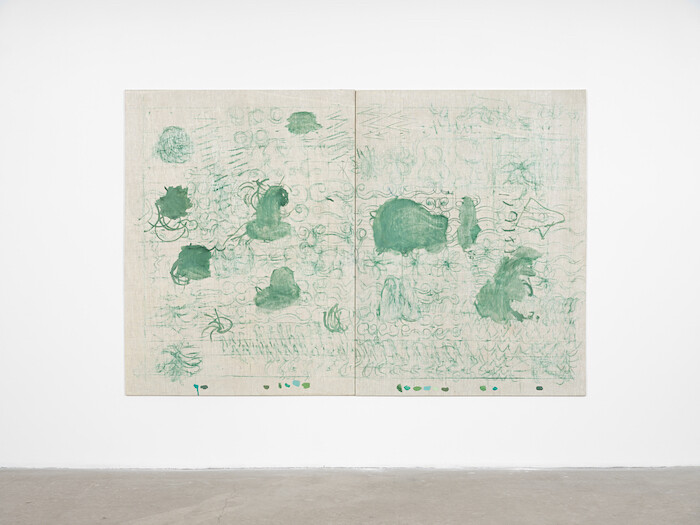
Religion, magic, art, physics, and mathematics blend in Goutam Ghosh’s solo exhibition “Morph, blend and flatten (space) of Bird, Reptiles and Flower.” The delicate, sometimes dreamlike paintings gain energy from the friction between ideas from different disciplines and systems of thought as they come into contact. Ghosh draws on conversations with Indian scholar Kaustubh Das about tantra and its understanding of consciousness as a source for both his thinking and making. “Tantra,” Sanskrit for loom, weaves together complex concepts and practices. In the tradition of sacred art, tantra drawings and paintings of abstract geometric shapes were used as meditative tools to awaken heightened states of embodied consciousness. Tantra is of interest to Ghosh because it is a phenomenological tradition that validates knowledge resulting from direct experience which would be difficult to empirically account for, like the movement of energy or time. Yet, his paintings also show an awareness of the human process of cognition and its reliance on quantifiable data or pattern. The mind wants to recognize and categorize, to find a pattern.
Paintings like Untitled (all works 2018), Glycerin, and Tennis Ball exhibit a subjective pattern, while they bring up references to systems of order and logic. All three paintings …
March 7, 2018 – Feature
Helsinki Roundup
Patrick Langley
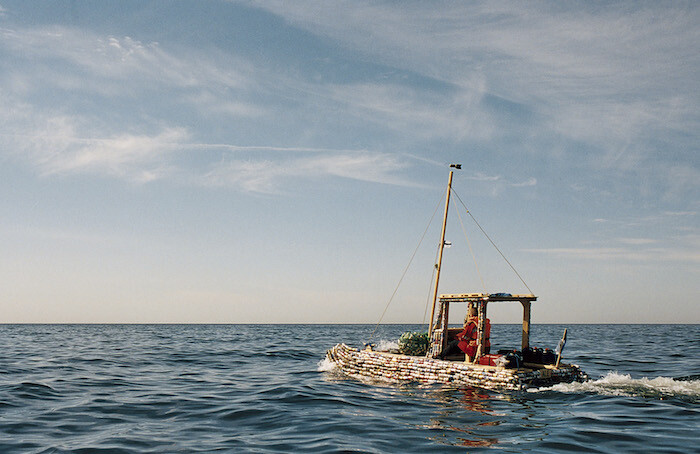
En route to Helsinki this February, as the plane dropped through patchy cloud on its descent to the Finnish capital, I peered through the window at the country’s south coast. Instead of a clean line demarcating land from sea, there was a fragmentary confusion of dark islands set amid wastes of ice. From the elevated vantage of the plane, the arrangement of earth and water, snow and stone formed a dazzling pattern of light and dark, making it hard to tell where Finland ended and the Baltic Sea began. Here was a place where boundaries, if not exactly meaningless, were complex and hard to map. For the next three days, walking the snow-laden streets to the national museums, commercial galleries, and artist-run spaces of the city, the ongoing negotiation of borders—geographical, political, and cultural—emerged as a pertinent theme.
At Kiasma, the recently renovated airy museum in central Helsinki, the group exhibition “There and Back Again” presented contemporary art from the Baltic region. As the title of the show made explicit, Baltic art and identity were here understood through the lens of transport, of departure and return, implying that travel between nations was a defining feature of the region. Being in-between, in …
November 28, 2017 – Feature
Vienna Roundup
Orit Gat
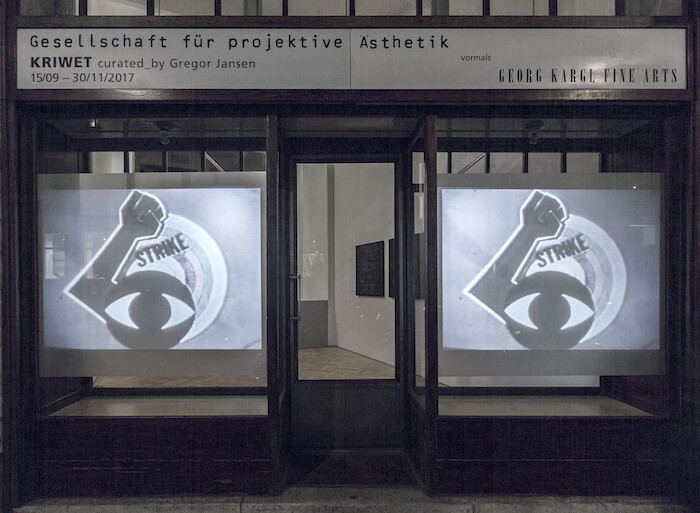
Walking home at night, I pass by Campaign (1972), a two-channel video installation by Ferdinand Kriwet projected onto the storefront windows of Georg Kargl Fine Arts. In the dark street, the images of television footage from the 1972 US presidential campaign fronting Richard Nixon and George McGovern are silent; at the gallery during the day, they almost disappear against the light, but the field recordings, collected by the artist on a trip to the US to witness the primaries, are audible.
The sound of talking heads and debates shapes the experience of the exhibition, a last remnant still on view from curated by_Vienna, a festival inviting international curators to organize fall exhibitions in the city’s galleries. The theme of this year’s iteration was language in contemporary art, and curator Gregor Jansen honed in on the 75-year-old German artist’s longstanding interest in media and focus on text and dissemination. These are crucial issues in our divided societies, in which it is inconceivable that any candidate could win a landslide like Nixon’s (who won 62 per cent of the vote, taking every state except Massachusetts and Washington DC). Jansen did not need to spell out a connection to contemporary politics: speech and its …
October 20, 2017 – Feature
Paris Roundup
Tom Jeffreys
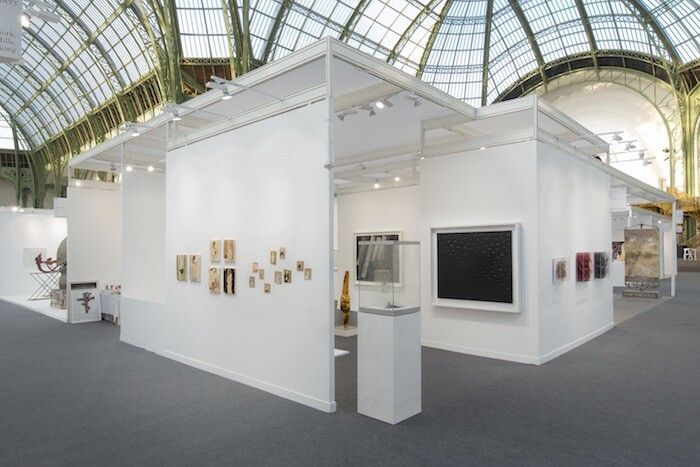
The wide eyes and open mouth of a child are a reminder that, even at art fairs, there is still space for the occasional moment of wonder. The girl has good taste: she’s enthralled by Endless (2012), a sculpture by Claire Morgan at the FIAC booth of Galerie Karsten Greve. A three-dimensional grid of dead flies has been suspended in mid-air on vertical lines of nylon weighted with little pieces of lead. Around them, similarly hung dandelion heads form a slim, delicate frame. It is a gossamer-light and enchanting piece, whose dark eco-political agenda has been lent new urgency by recent research into insect decline.
Animals seem, nonetheless, to be scampering throughout Paris this week. Also at FIAC, London’s Sadie Coles’ booth lures visitors in with Rudolf Stingel’s Untitled (2015), a black-and-white painting of a photograph of a squirrel. At the Musée de la Chasse et de la Nature, Sophie Calle interweaves the personal, the political, and the philosophical through a series of interventions, including covering the museum’s famous stuffed bear in a white shroud. Especially intriguing is a series of photographs (“Liberté Surveillée,” 2014) of deer, pheasants, and hares taken at night by automated cameras sited on the bridges and …
September 18, 2017 – Feature
15th Istanbul Biennial, “a good neighbour”
Jörg Heiser
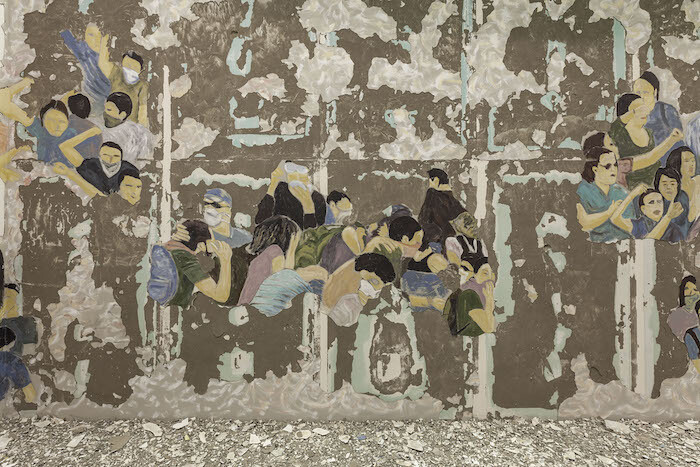
Given the current political situation in Turkey, I wouldn’t have been surprised if the curators of this year’s Istanbul Biennial, Berlin-based artist duo Michael Elmgreen and Ingar Dragset, and IKSV, the corporate-funded foundation organizing the event, had decided to call the whole thing off. Since its first edition in 1987, the biennial has weathered numerous crises in Turkey. But this time, things are especially grim: in the wake of the attempted coup in July 2016, political purges have antagonized the country under the authoritarian rule of President Erdoğan. Tens of thousands of university teachers, hospital doctors, and judges have been dismissed while not only dozens of members of parliament have been imprisoned, but also hundreds of journalists. Artists have also been targeted, usually based on sweeping allegations ranging from insulting the president to supposedly supporting Kurdish terrorism: in March, the painter Zehra Doğan was sentenced to two years and ten months in prison for a picture in which she painted Turkish flags on buildings destroyed by the Turkish army in the Mardi province, a Kurdish region of Turkey; and in August the writer Doğan Akhanlı, who is a German citizen, was briefly detained in Spain due to an Interpol warrant …
July 28, 2017 – Feature
Containers
Travis Diehl

The latest installment of Spaces considers the history of displaying contemporary art in shipping containers.
In August 2016, as global logistics firms slumped toward overcapacity, South Korean shipping giant Hanjin went conspicuously belly up. Over 80 of their cargo ships were suddenly turned away from ports around the world, while hundreds of multinational crew faced the further problem of securing either safe repatriation or another job. It was disaster for Hanjin, but a lucky break for Vancouver’s Access Gallery: among the sailors on a Hanjin carrier drifting beyond Tokyo was an artist, Rebecca Moss, whose “Twenty-Three Days at Sea” travelling artist residency stretched to a tense twenty-five. Suddenly, the obscure transit over distant ocean—what Allan Sekula calls the “forgotten space”—was making headlines in a way that an art project rarely does.
Hanjin bowed out just 60 years after Malcom McLean, a truck driver-turned-logistics capitalist, patented the 33-foot precursor to today’s standardized 40-foot container. Thanks to containerized shipping, irregular goods became regularized “flows”—timetables, tonnages, coordinates, and costs—and the calculus of global trade achieved truly incomprehensible scale. This smooth logistical abstraction, by which we can forget that most goods still travel by ship, is coupled, dramatically, with the visual abstraction of the container—rack …
July 20, 2017 – Feature
“Letter from Istanbul”
Filipa Ramos / Morgan Quaintance
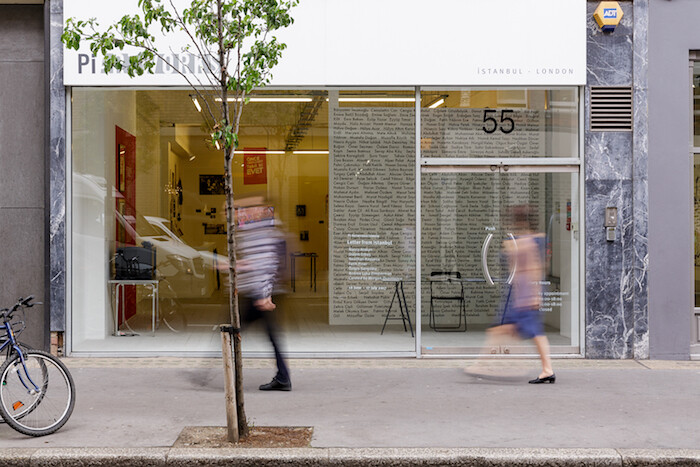
In curating “Letter from Istanbul” at Pi Artworks, London, Morgan Quaintance combined multiple approaches to examine the cultural, social, and political life of Istanbul. He expanded the format of the exhibition to open a direct dialogue between artworks and diverse materials and documents, while also including radio broadcasts and a documentary film. In this conversation with Filipa Ramos, Quaintance reflects on his intentions, interests, and methodologies while also considering the limits of grasping, displacing, and presenting the socio-cultural context of a city in the form of an “informal dispatch.”
Filipa Ramos: When I first visited “Letter from Istanbul,” a group of students were using the public space of the show to reflect upon it. I was particularly interested by one overheard comment, in which a woman maintained that “it’s difficult to know where the curator ends and the art begins due to the combination of documentation and artworks.” So maybe we could address this first: what was your intention in presenting journalistic materials—music pamphlets, political documents, scenes from various demonstrations, books, and texts—alongside artworks?
Morgan Quaintance: I think at the root of “Letter from Istanbul” was the impulse to curate an exhibition as abstracted city report or informal dispatch. But, instead of …
July 7, 2017 – Feature
Buenos Aires Roundup
Juan Canela
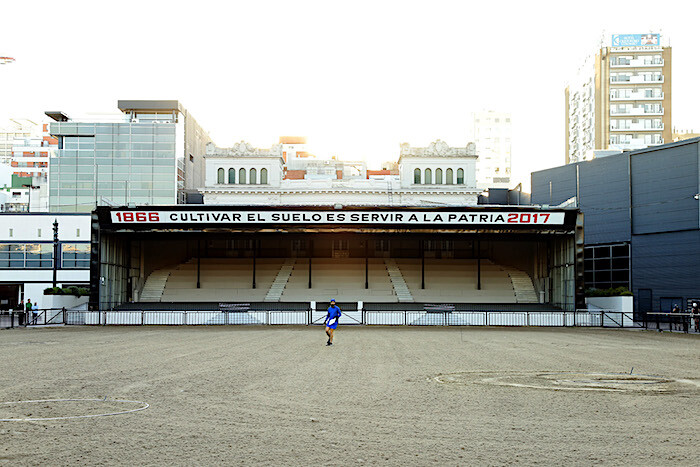
“1866 - TO CULTIVATE YOUR LAND IS TO SERVE YOUR COUNTRY - 2017.”
This is the phrase that appears on a billboard above the bleachers at the central courtyard of La Rural fair and congress center, a neuralgic space of Argentine agricultural policy with deep symbolic and affective roots. On May 23, in the same space where several Argentine presidents—from Juan Domingo Perón to Mauricio Macri through Jorge Rafael Videla and Cristina Kirchner—have given impassioned speeches to the masses, several roller derby skaters circled around, while in the arena artist Osías Yanov made holes in the ground using different geometric iron structures, simulating a kind of acupuncture on the site.
The appealing and challenging performance, entitled Antena Vaginal (Vaginal Antenna) (2017), was part of “rro,” a program curated by Javier Villa and Sarah Demeuse for arteBA 2017. During the action, when Yanov showed part of his butt and laid it on the ground, one of the fairground’s security guards watching the event shouted at him to stop. This could simply be one more anecdote of the reactions that arise at this type of art event when held outside of art spaces, but I found it a clear indication of where we were, …
May 23, 2017 – Feature
New York City Roundup
Orit Gat
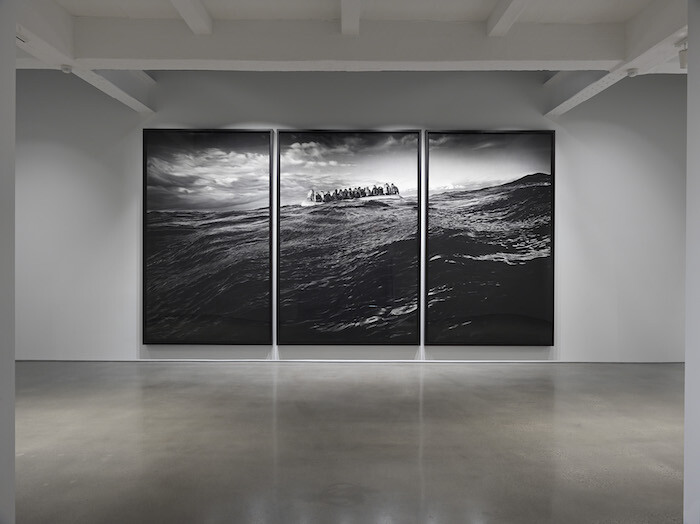
As I missed out on international art events this season because New York is so far away, all I could think of was how unlucky their curators are. You work on Venice or Documenta for a year or two or four. You start out researching when there’s a somewhat liberal president in the US and some island off the coast of Europe still considers itself part of the union. Though the war in Syria, the refugee crisis, and economic instability in the EU were already present, there’s still a feeling that this past year has served too many blows. And those large-scale exhibitions, years in the making, all opened to a great unknown.
On Instagram, almost all the photos I see from Venice are of the same works, and I wonder how and if they respond to the current situation, whether there is a way for art not to seem detached. In New York, few of the exhibitions currently on view in commercial galleries and museums focus directly on contemporary politics. At Metro Pictures, Robert Longo’s show, “The Destroyer Cycle,” does just that. It’s comprised of large-scale charcoal-and-graphite drawings of riot cops in full gear, prisoners being led to a CIA …
April 4, 2017 – Feature
The Historical Gallery
Leigh Markopoulos
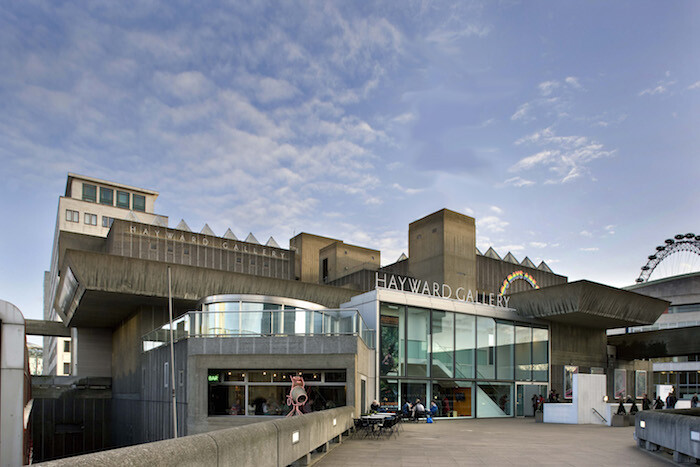
Leigh Markopoulos’s Spaces feature, dedicated to “The Historical Gallery,” appears here in its original draft. The editorial process was interrupted by Leigh’s sudden death, which left her words, alongside all her future projects, forever suspended. Those who had the privilege of knowing Leigh will recognize the tone of her voice along these lines; those who weren’t personally acquainted with her will have the opportunity to encounter her sharp mind directly.
It still seems impossible to write about Leigh using the past tense. This text, alongside her previous contributions to art-agenda and other publications, will ensure that her ideas remain alive. Through it she exists in a continuous present, having an impact on all those who shared her passion for art.
Leigh was a beloved educator, an intelligent writer, a curator’s curator. In memorial to her, this feature is preceded by tributes from some of her closest colleagues, co-workers, and friends.
—-
Leigh was a passionate scholar, writer, teacher, and curator who was dearly loved by her students and colleagues. She first came to California College of the Arts in 2002 to serve as deputy director of the CCA Wattis Institute, a job she quickly mastered and performed with diligence, grace, and enthusiasm. But it …
March 21, 2017 – Feature
78th Whitney Biennial
Chris Sharp

The stakes surrounding this Whitney Biennial are, to say the least, high. Indeed, it’s hard to imagine a biennial being under more pressure to signify, to mean, to produce meaning, to attempt to offer some special and tangible insight into our current moment. Instead, what the curators Christopher Lew and Mia Locks offer is art. This is not to say, of course, that the art presented here is divorced from our current harrowing reality, by any means, but that it does not forfeit its unique transformative power in the face of it. Lew’s and Locks’s love of and faith in art is refreshingly unequivocal. Nor is this to say that the biennial they have curated is devoid of the political, insofar as one of the capacities of the political is to seek to imagine alternatives to the status quo. In the alternative imagined here, an ideal diversity and gender balance reigns. Of the agreeably modest and negotiable number of 63 artists and artist collectives, this biennial possesses more artists of color than any other in its past. That diversity is not limited to ethnicity, gender, and geography (artists hail from as far afield here as Puerto Rico and Seattle, although …
February 23, 2017 – Feature
Dore Ashton, “Response to Crisis in American Art” (1969)
Leigh Markopoulos
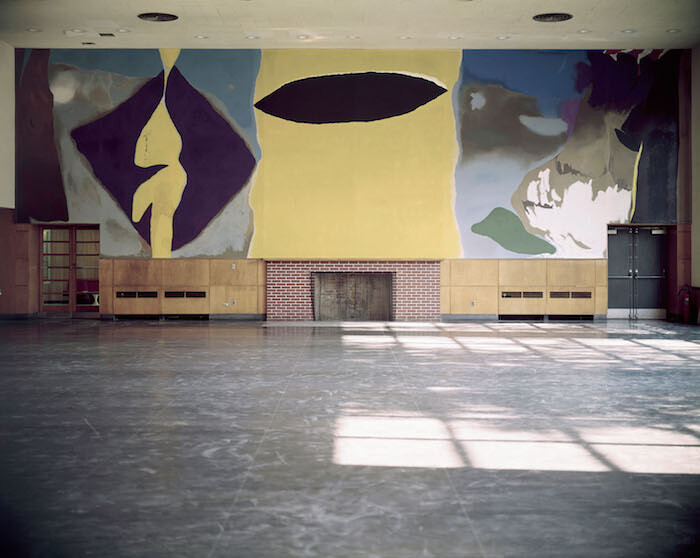
The American art historian and critic Dore Ashton, who recently died at the age of 88, began her lifelong career as an art writer in the years after World War II. From 1955, as the New York Times associate art critic, she made her mark as a proponent of Abstract Expressionism and an opponent of mediocrity in any form. Her unashamedly left-leaning politics and modernist stance garnered both allies and enemies—most notably the senior art critic of the Times, John Canaday, who fired her in 1960.
Reflecting a more enlightened editorial policy, the first 1969 issue of Art in America positions Ashton as the lead contributor while Canaday’s successor, the equally conservative Hilton Kramer, appears a good deal later in the magazine. His review is preceded by Charlotte Willard’s “Violence and Art,” which asks whether “art in the seventies [can] help channel aggression into achievement instead of destruction,” and Jane Holtz Kay’s “regional case study” of urban Bostonian, and in this case predominantly black, artists who have “committed much of their (…) creative effort to community causes” (“Artists as Social Reformers”). Together with Ashton’s “Response to Crisis in American Art,” these three powerful texts—notably all by women—paint a picture of “crisis, …
December 22, 2016 – Feature
Maria Lind in conversation with Goldin+Senneby: An Opera
Maria Lind
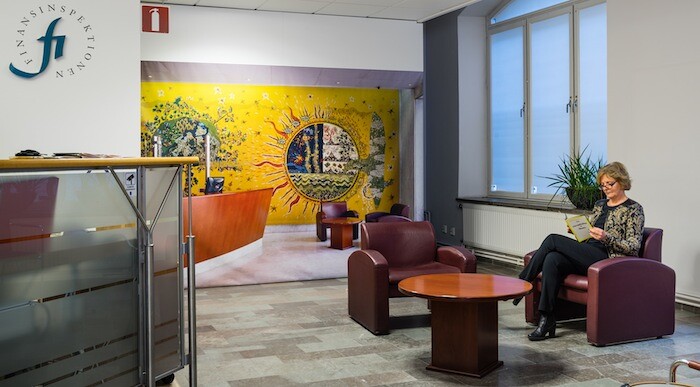
(Libretto Adapted by Pamela Carter)
Cast
Maria Lind — Mezzo-Soprano Goldin — Tenor Senneby — Baritone Security Manager — Soprano Staff and Visitors — Chorus Elephant — Non-singing
Scene
The lobby of the Financial Supervisory Authority, Stockholm. 3 p.m., November 23, 2016.
Artists Goldin and Senneby are waiting for curator Maria Lind, with whom they have agreed to record a conversation for art-agenda. Earlier in the year, Lind curated “Standard Length of a Miracle,” a retrospective of their work staged in different locations across Stockholm.
Goldin holds a large package. Senneby sets up recording equipment.
Visitors and staff come and go.
Elephant sits alone by the street entrance.
Lind enters.
Lind/Goldin/Senneby
Hej hej Hej hej hej Hej hej hej hej hej
Lind
So. Shall we start with a question?
Goldin/Senneby
Let’s start with the bribe.
Lind
Ha. And what do you want in return?
Goldin/Senneby
Maria, It’s not a simple balance of payments In the gift economy.
Lind
Is it long-term emotional debt?
(Lind unwraps her gift)
Chorus
This is the Financial Supervisory Authority. It’s a state agency Promoting stability, efficiency Ensuring our financial protection.
Goldin/Senneby
It’s a map
Lind
Beautiful.
Goldin/Senneby
Of the retrospective we produced together. It was your idea to stage all of our older works In outside locations.
Lind
I wanted to activate your older works Have them resonate in relation To …
December 7, 2016 – Feature
Experimental Education Protocol
Tess Edmonson
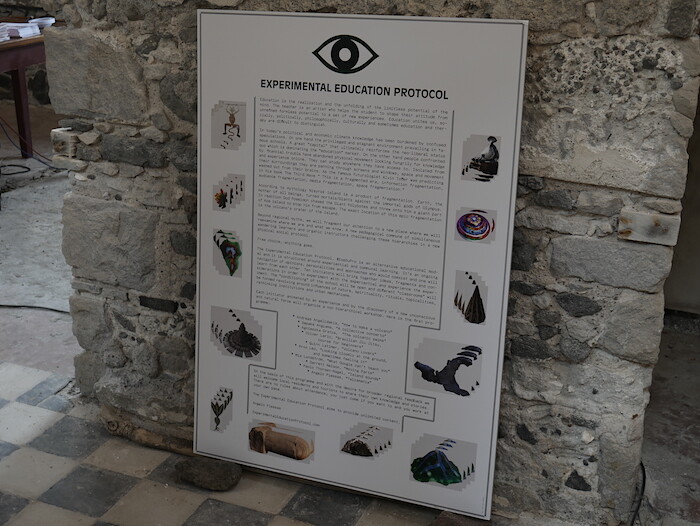
The latest feature of Spaces considers the Experimental Education Protocol on the Greek island of Nisyros as a mode to consider an alternative pedagogical case study.
A manifesto published on the occasion of the Experimental Education Protocol, a meeting of artists and sympathizers on a volcanic Dodecanese island in the Aegean sea this past July, maintains that “sometimes education and therapy are difficult to distinguish.” Under the aegis of Sterna Art Project, artist Angelo Plessas organized a twelve-day retreat devoted to nonhierarchical pedagogy and “communal learning.” By the time I arrived to the island as an invited observer of the Protocol, halfway through its course, fellow guests had taken to using the nomenclature of formal education to organize undivided time, but in a way that didn’t especially seem to change the tone or direction of casual being-togetherness. A second-floor room of a century-old thermal bathhouse on the island’s north shore, windows facing the sea, became a makeshift classroom, while other, more exploratory learning was scheduled to take place in a variety of wilder locations. What isn’t pedagogy?
The Protocol’s guests were continuously participating in workshops. There was a relaxation workshop, where Plessas fitted residents with a headpiece that measured their brain …
November 23, 2016 – Feature
Lima Gallery Roundup
Kim Córdova
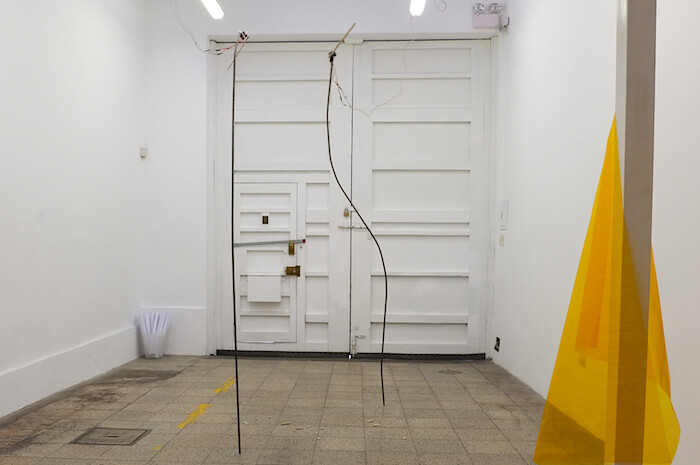
I’ve often found myself wondering whether it would really be such a radical gesture to show a majority of work by women without bracketing it as women’s work. What would it be like to experience a city filled with exhibitions that weren’t reinforcing the patriarchal tendencies of the art world?
In Lima this possibility came true.
It’s unclear if these exhibitions were coordinated to coincide with the #NiUnaMenos (NotOneLess) demonstration that drew more than 200,000 people to march on Lima to protest violence against women on August 13. Despite being an international movement, Ni Una Menos’s “cry against impunity” seems to have struck a particularly resonant chord in Peru where, according to Ana María Romero-Lozada, the country’s Minister for Women and Vulnerable Persons, ten women are murdered every month and twenty more are victims of attempted femicide, amounting to “about one [attack] per day.”
For a city of ten million people, Lima’s art scene is small, with few progressive contemporary art galleries. As often happens elsewhere, Lima’s most experimental exhibition programs are found either in alternative spaces or galleries that started as alternative spaces, and curiously all of them were showing solo exhibitions by women.
“Body Moves,” at Garúa, is named after Pamela Arce’s …
September 27, 2016 – Feature
Madrid Roundup
Arielle Bier
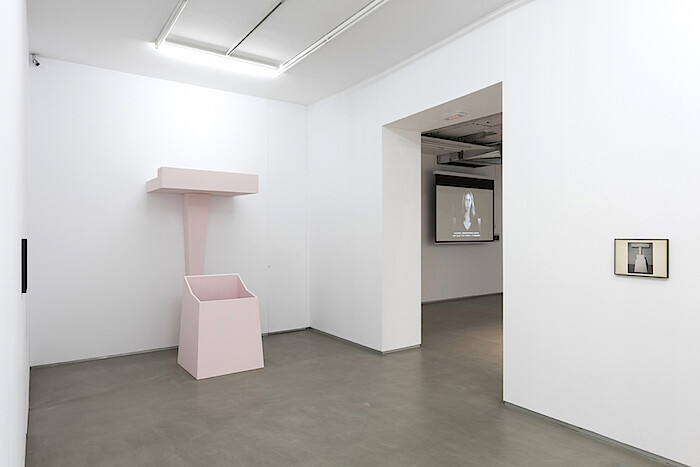
In 2015, Spain’s Prime Minister Mariano Rajoy declared that the financial crisis, which began when global markets collapsed in 2008, was over, but that its legacy still endured. When recession hits, luxury goods dealers are among the first to panic, and the art market is no exception; luckily for Spain, government funding has kept cultural initiatives afloat. Even ARCOmadrid, the country’s main fair, which is one of the best attended in the world and comparatively hosts the most expensive VIP program, only managed to sidestep the recession because it is heavily subsidized. But beyond the temporary glamour and inflated sales reports, net profits on the global fair circuit are often meager, especially for small or mid-size galleries. This model is proving hard to sustain and puts the squeeze on gallerists to look for alternatives. This year, the seventh annual edition of Apertura Madrid Gallery Weekend, organized by the Art Galleries Association Arte_Madrid, substantially expanded its program in an effort to put Madrid’s gallery scene on the international map, bringing in for the first time collectors, curators, residency organizers, and journalists to visit over 43 solo and group exhibitions across the city.
Conversation about local versus global art networks arose multiple times …
September 23, 2016 – Feature
Bergen Assembly
Kjetil Røed

This year’s Bergen Triennial is a mix of carnival, dry reflection, and the reshuffling of archives. The first Bergen Assembly, held in 2013, was preceded by several years of seminars and panels aimed at thoroughly understanding and researching its format. The highlight of this research period was The Biennial Reader (2010), which remains a bible of sorts for the topic. Yet the triennial was, in a sense, too well researched, because “Monday Begins on Saturday” addressed a professional art crowd rather than the local scene. Curated by Ekaterina Degot and David Riff, it was based on a Russian science fiction novel of the same name by Arkady and Boris Strugatsky and attempted to render the book’s ideas about science and research into the triennial’s different venues, which had such titles as “Institute of Love and the Lack Thereof” or “Institute of Lyrical Sociology,” with the artists figured as researchers. It was intriguing and the eccentricity of the curatorial blueprint deserved more credit than it received.
This time the public research side of the Triennial consists of talks and panel discussions, most of them arranged by the curatorial collective freethought—the consequence being that it often felt less like a triennial than a …
September 20, 2016 – Feature
Berlin Roundup
Matthew Evans
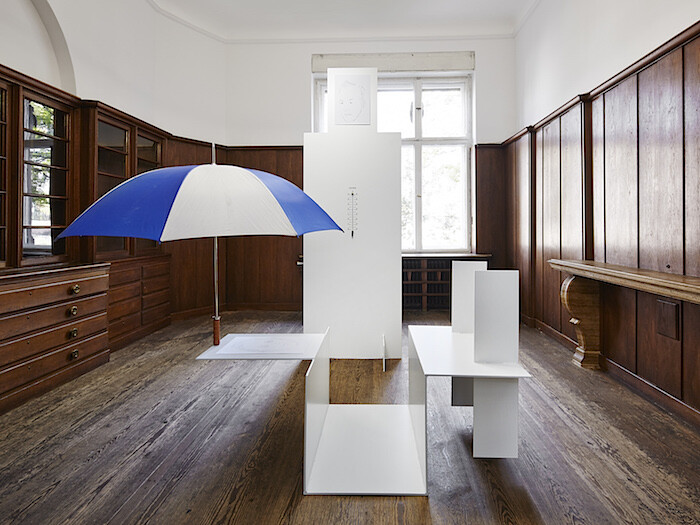
Berlin affluence is an oxymoron that might describe something in the big gap between pilsner and champagne, or pork schnitzel and sous-vide. Events like Berlin Art Week and its commercial fair abc art berlin contemporary have been pushing the German capital onto the national and international buyers’ tour for nine years now. It remains an odd positioning, as Berlin isn’t an obviously digestible city for many collectors; it lacks their creature comforts: the ubiquity of restricted access and unaffordable prices with enough locals who can afford to keep them that way. And art fairs (not to be confused with life) are most successful—and most distracting—when the rich feel hungry and foot the bill for the entertainment. But it’s an important exercise to distinguish between wealth and security (not to be confused with fear). The former is an uncertain orgasm of contrasts, which has become aesthetic cliché, while the latter is more interesting and maybe even radical today. Without the pressure (and pleasure) of fast and fat capital in recent history, Berlin has profited from this advantage, and although events like abc might be experimenting to revise that, the city still remains at one remove, which is a privilege, because the …
August 1, 2016 – Feature
The Sexual Potential of the Gallery
Amanda Lee Koe
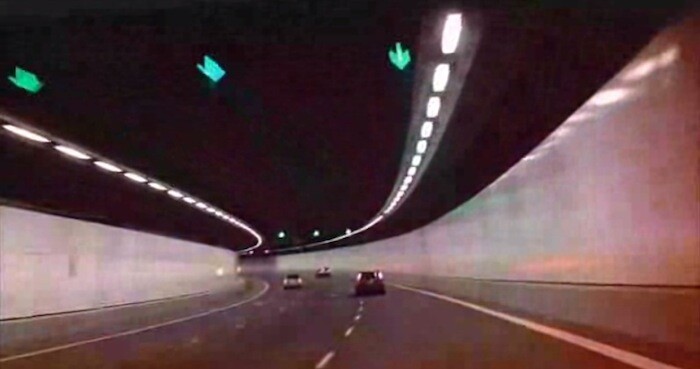
They had been to an opening.
Now they were driving around the island with no aim, he had a fast car. He put the roof down and her hair whipped about her face and neck and shoulders, she was curious to see how long it would take for him to put the roof back up if she said nothing. But he did not put it back up, so her hair was in her mouth when he asked how she found the show.
She took her hair out of her mouth and held it back from her face with one hand and said, I did not like the space. He said that wasn’t his question, she said it affected her answer so it seemed fair enough to say so. He put a hand on her knee and she looked at his hand as first it related in concentric circles his thumb, her kneecap, his index finger, then, perhaps under her stare, it fell quite still, but remained there all the same.
You want to walk in and say yes, she said. You want to walk in and be able to smell it.
Smell what?
The sexual potential of the gallery space, she said. Looking at his …
May 26, 2016 – Feature
San Francisco Roundup
Jeanne Gerrity
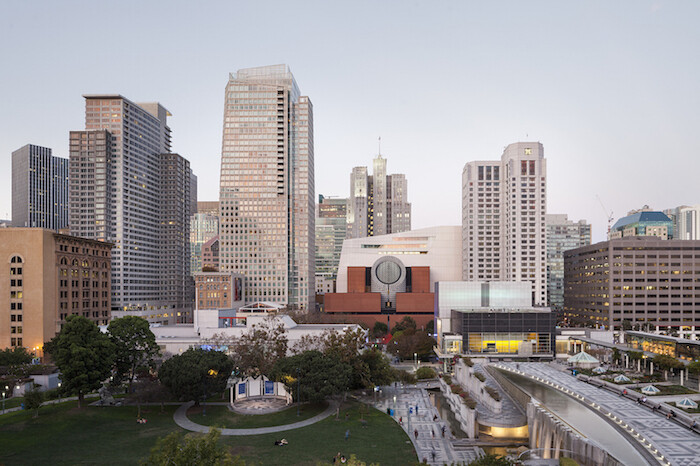
The opening of a temporary exhibition space co-hosted by Andrew Kreps and Anton Kern, at a new gallery complex called Minnesota Street Project in San Francisco’s Dogpatch district, was timed to correspond with the arrival of the international art world elite to fête SFMOMA. These openings and reopenings come at a moment when the future of the Bay Area art scene seems uncertain. The new SFMOMA, billed after three years of refurbishment as the largest museum dedicated to modern art in the country, is a major tourist attraction—but what impact will it have on the local arts economy? The opening has already inspired galleries from New York to set up shop in San Francisco, but will it help make San Francisco’s existing scene more visible, or damage it as burgeoning collectors (read new tech wealth) buy established names rather than investing in young Bay Area-based artists? Will these developments help keep artists in San Francisco or force them out?
Designed by Snøhetta, the new SFMOMA’s spacious galleries are empty containers suited to the blue-chip work within. The impetus for the expansion was the 100-year-loan of the private collection of Gap founders Donald and Doris Fisher. During the press preview, Donald’s son …
May 18, 2016 – Feature
Below the ground
Barbara Sirieix

The fourth feature of Spaces goes underground.
There is a popular conspiracy theory, supported by shady photographs, that the Earth is hollow. The idea traces back through various ancient mythologies to modern times, when visionaries such as John Cleves Symmes, Jr. and Marshall Gardner elaborated speculative hypotheses about the content of the space below ground, including the possibility of it hosting another civilization that lives in the center of the earth. Further conspiracies hold that Hitler escaped by submarine to Antarctica, where a subterranean passage allowed him access to the Earth’s interior. The underground clearly exerts a peculiar hold over our imagination.
In the context of contemporary art, the experience of the underground is generally limited to climbing down a narrow flight of stairs to visit an exhibition, as many commercial galleries have extended their display surfaces by exploiting otherwise empty basements to which access is often convoluted and humidity high, meaning they aren’t appropriate for the storage of artworks. Appearing first as a handicap, the absence of windows can actually be an asset, as it offers complete control over lighting and allows for the entire surface of the walls to be at the disposal of the gallery, the underground space …
May 16, 2016 – Feature
Brussels Roundup
Arielle Bier
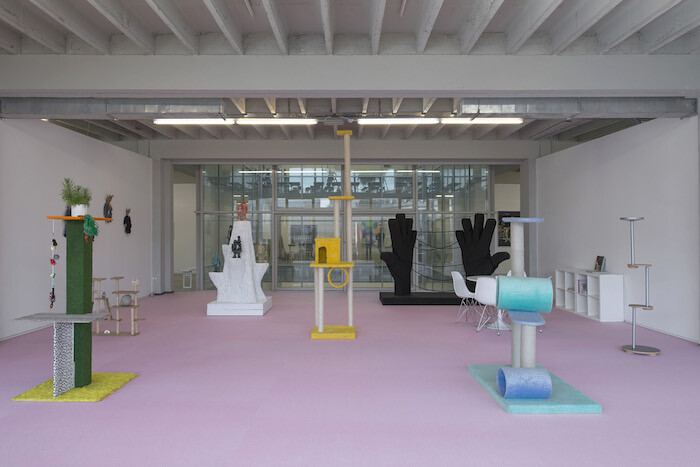
Brussels, still reeling from the ISIS nail-bomb attacks at Zaventem Airport and Maalbeek metro station in March, was raw and rough around the edges when the time for its scheduled art fairs arrived—the more traditional Art Brussels and the progressive New York transplant Independent. Needless to say, cautionary sentiments preceded all the fanfare this year. Partial closure of the airport’s departure halls and rerouted flights steered away many would-be visitors, while the subways operated at half-capacity with travelers favoring the perceived safety of Uber taxis. The doubling of machine-gun-touting military, Humvees, and tanks patrolling the streets and train stations didn’t necessarily help to calm nerves. Yet the bombings didn’t come as a surprise for many in town, considering the now evident links between disenfranchised radicals in Brussels and Paris. Endemic violence is all too familiar in this polyglot city, rife with racism and economic inequality—both sustained vestiges of its colonial past, riding on the shoulders of contemporary socio-political issues.
Despite the major funding cuts in 2014-2015 to established institutions for dance and theater like La Monnaie, BOZAR, and Beursschouwburg, Brussels’s contemporary visual art scene is flourishing. Why? This is a historic city that offers rich creative fodder, but that’s already a …
May 13, 2016 – Feature
Art Fair Roundup: Berlin, Brussels, Cologne, New York
Stefan Kobel

When Claus Föttinger installed his Bar 60/99-16 (2016) in the booth of Düsseldorf’s Van Horn Gallery at Art Cologne, Rhinelanders did what they are said to do best and partied, using the installation as an actual bar. Yet what might have been expected to be the biggest celebration—the opening of the 50th Art Cologne, the oldest continuously running contemporary art fair—was a rather sober event. Everything was in place: after a long and painful downturn, some important international galleries have returned to the fair since Daniel Hug became director in 2008. Almost all of the predominant German protagonists have become regulars again since the death of Art Forum Berlin in 2010, and collectors from neighboring countries visit the fair, even some Britons and Americans. All this adds to the unrivaled (in Europe) density of private collectors and institutions in the Rhine region. Sales have always been solid—rarely spectacular—at Art Cologne, where the collectors are traditionally educated and savvy but not deep-pocketed.
But for a 50th jubilee one would have expected more. The low-key atmosphere was only partly due the general sentiment of a world in crisis, and there are structural reasons why the fair felt uninspiring. One of its strengths has …
April 8, 2016 – Feature
Kunsthalle Athena, 2010–2015
Dimitris Politakis
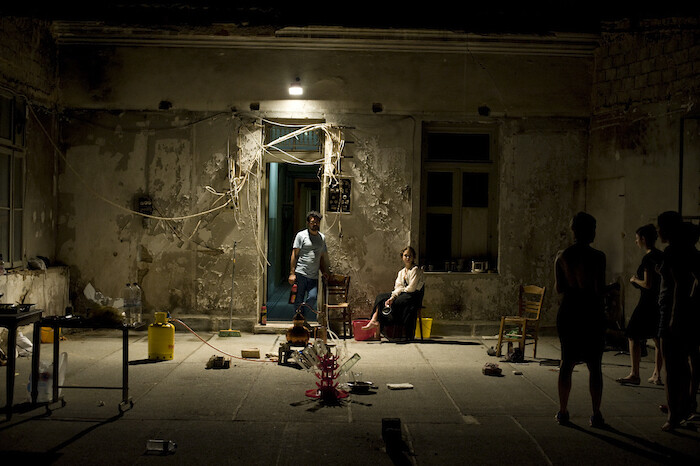
You had to be there, I guess. To feel the strange vibes of the re-inhabited derelict neoclassical building, evoking faded grandeur and post-industrial urban decay, from the point of entrance and up the old staircase that leads to the rooms, the corridor, and the terraces. To sense the urgency of a unique event taking place in a unique location that seemed to encompass and transcend its “shoddy” surroundings (brothels, sweatshops, and such) in a “bad” neighborhood on the fringes of the city center. To inhabit for a while—as a privileged guest, not as a cultural tourist—certain spaces of the old town where, for the most part, gentrification processes were indefinitely postponed (abruptly aborted, really) as the whole country was hit hard by severe recession. To hear the echoes of hypnotic loops, sound installations, video projections, and bands sound-checking reverberating across the halls of a magnificent building—abandoned yet totally functional in its new role as an ideal(istic) space for contemporary artistic expression—with several small rooms (a few secret ones, too) and a great outdoors area with patios and courtyards where everyone—from the so-called cultural elite to the anarchopunk refuseniks—gathered in-between shows to chat, drink, smoke, watch a gig or a performance, …
April 7, 2016 – Feature
Hong Kong Roundup
Qinyi Lim

Despite this year’s Art Basel Hong Kong taking place over the coldest and wettest Easter experienced in Hong Kong since 1978, the buffeting winds and rain did little to deter the audience from exploring beyond the confines of the Convention Center. Rather, the weather provided a common topic of commiseration between people with umbrellas lost, broken, and unlawfully gained.
In these exchanges often lay the contrasting perspectives of a city held in a delicate balance between the celebration of possibilities and entrepreneurship, the oft-perpetuated stereotype of being exotically between the East and West, and the anxious foreshadowing of an impending loss of governmental and personal autonomy in light of an encroaching mainland China. This heady mix of apprehension and celebration became apparent in the different energies and temporalities channeled into events and exhibitions outside of the fair—a mixture of elation, of adulation, and of consideration.
One of these events was Alexander Geist and Ming Wong’s performance for the album launch of That Girl (2016), a commission by UBS, which the duo presented twice in one night—first at a private party hosted by UBS at Ping Pong, and secondly at a public “Emergency Party” hosted by Flash Art, ArtReview Asia, and LEAP. Geist …
April 1, 2016 – Feature
"These times of ours": Louise Hervé and Chloé Maillet in conversation with Marcelle Alix
Louise Hervé / Chloé Maillet
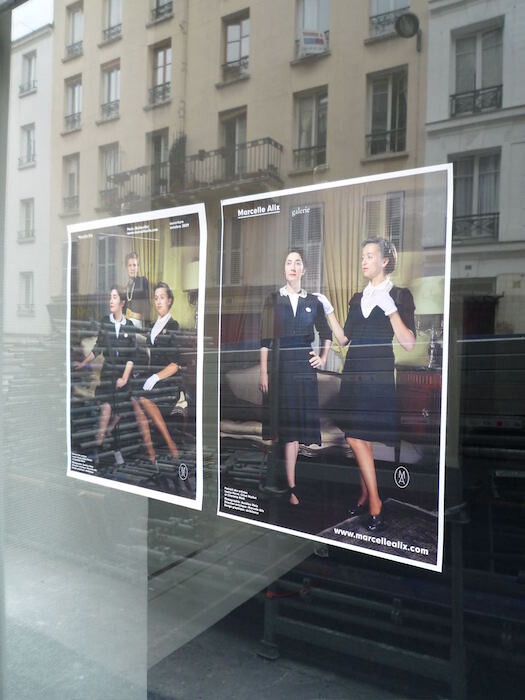
In November 2009, Isabelle Alfonsi and Cécilia Becanovic brought Marcelle Alix into the world. Located since then in the multiethnic neighborhood of Belleville, in the northeast of Paris, Marcelle Alix expresses its dual nature through its title, constituted by two French female forenames, Marcelle and Alix, neither of which corresponds to those of its founders. Bypassing conventional branding systems, proposing complex, often cryptic means of communication, and constantly engaging in forms of self-reflection, Marcelle Alix offers a rare example of what a gallery can be beyond its plain commercial vocation. In a four-person conversation, Isabelle Alfonsi and Cécilia Becanovic talk with Louise Hervé and Chloé Maillet—the artistic duo whose performance inaugurated the gallery almost six years ago—about the past, present, and future of Marcelle Alix.
Louise Hervé: When the four of us first met in 2008, Chloé and I had already been working as a duo for some years and had just finished a film, Un projet important [An Important Project], which relied heavily on collective work, with several performers and dancers. We were very touched by your own work as a duo. Later, when we started to get to know you better, we saw the duos Pauline Boudry and Renate …
March 29, 2016 – Feature
Lisbon & Madrid Roundup
Ben Eastham
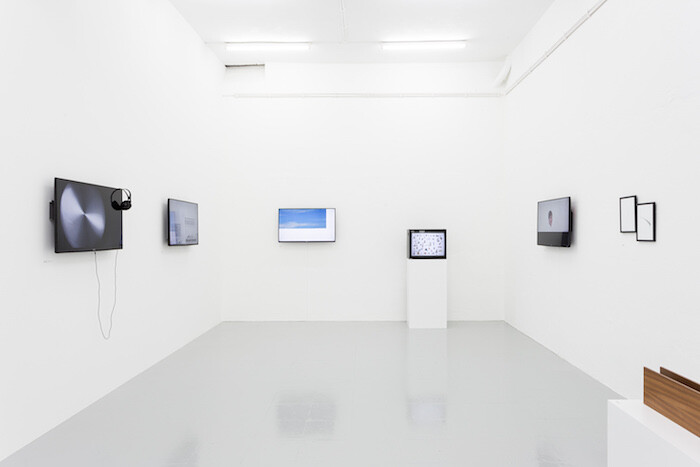
The inaugural edition of ARCO Lisbon (May 26–29, 2016) was announced to the world on the same day that an anti-austerity alliance in Portugal’s parliament passed a vote to dissolve its center-right government. On the day that journalists came to preview the venue at which the fair would be held, the country’s new leftist coalition approved a budget that reversed many of the cuts imposed as a condition of Portugal’s bailout at the height of the Eurozone crisis in 2011.
It is difficult to overlook these coincidences of timing when an art fair is conceived of as an instrument of national economic policy, as our press trip to Portugal’s capital made abundantly clear. The country’s recent emergence from recession has been ascribed in part to booming tourism revenues, and now contemporary art is being enlisted—alongside Lisbon’s historic architecture, the proximity to the city of several golf courses, and the agreeable climate—as further incentive to assist its journey back from the brink of bankruptcy. Our precisely scheduled trip—which included visits to urban regeneration sites and bustling hotel restaurants, alongside a well-intentioned but uncomfortable tour of the city’s state-sponsored street art sites—seemed designed to make clear that Lisbon looks forward to welcoming the …
March 10, 2016 – Feature
Daria Martin’s “At The Threshold”
Morgan Quaintance
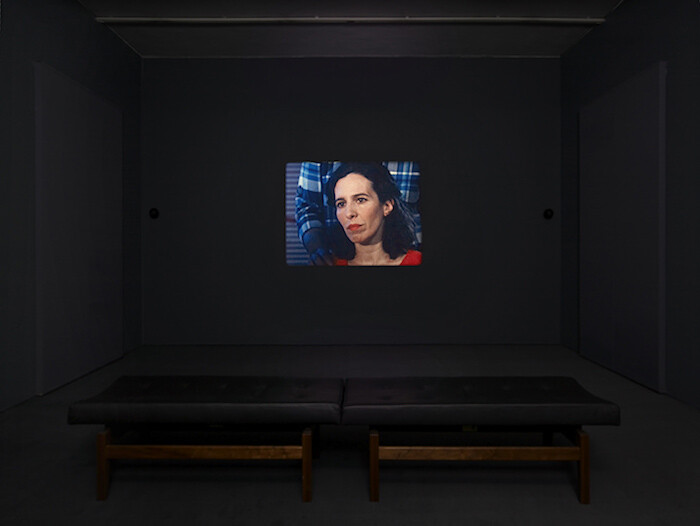
“I experience pain and sensation in response to seeing or thinking about another individual getting hit or touched on part of their body.” This description of mirror-touch synesthesia—the ability to feel the same or sympathetic physiological sensations and emotional states in sync with another human being, animal, or sometimes an object—is given by Sophie. Her written account is part of a correspondence between London-based filmmaker Daria Martin and other mirror-touch synesthetes. All provide insights into experiences of highly empathic intersubjectivity, and informed Martin’s development of three short films. At The Threshold (2014-2015), a narrative of domestic co-dependency threatened by an outside force, is the second and most recent installment in the trilogy. Projected in a small, dark room, it is a hypnotic vision of uncanny sensuality, shot in saturated 16mm film, in which the lines between self, other, and object dissolve into a holistic sensory continuum.
The setup is simple. A mother and son are housebound synesthetes. Theirs is an interior world of wonder, a microcosm of things and materials that open a universe of rich associative and intensely poetic sensory experience. A red jumper, a cracked eggshell, a ball of wool: each cause a rush of psychophysiological associations for the …
February 18, 2016 – Feature
Riga Roundup
Barbara Casavecchia
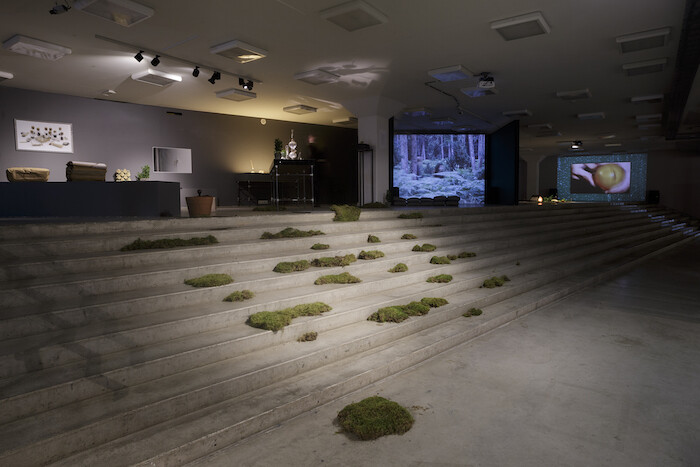
A man goes back and forth, slowly, silently, carefully balancing framed paintings and works on paper. He transports them from a pile perched atop a canyon to a Mondrianesque storage grid positioned on another peak nearby. From beginning to end, he walks on a tightrope. Shot against the spectacular background of the mountains of the Caucasus, the 73-minute video Tightrope (2015) by Daghestani-Russian artist Taus Makhacheva is a natural testimonial for “Lost in the Archive,” a group show organized by the Latvian Centre for Contemporary Art (LCCA) at the Riga Art Space, a vast underground exhibition hall at the heart of Old Riga.
Tightrope is a clear, visually powerful allegory for the difficulties of juggling with heritage and memory, of performing and preserving them, and making them travel across time and space. A tricky exercise, especially in the context of a “peripheral” post-Soviet culture which allocates modest means to the task. The artworks are reproductions of the Daghestani Museum of Fine Arts’ collection from the late nineteenth century to the year 2000.
By contrast, the almost invisible installation Untitled (from the series “Cannot Think in Words,” 2016) by Lithuanian artist Žilvinas Landzbergas, who mimetically dressed up a few of the gallery’s columns …
February 1, 2016 – Feature
The Cinema
Erika Balsom
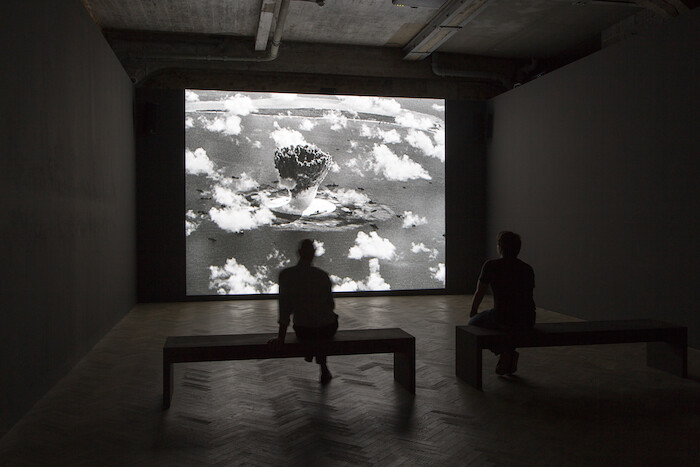
In recent months, two film works from 1976 made their belated débuts on the art market, retroactively issued in limited editions. Last June, London’s Thomas Dane Gallery showed the meticulous restoration of Bruce Conner’s Crossroads, while in September, New York’s Greene Naftali exhibited Paul Sharits’s Dream Displacement, also recently restored. Crossroads was notably unaccompanied, departing from the common tendency—exemplified by the Sharits exhibition—of presenting films alongside works by the artist in other, more traditional media. This latter practice has a double function: it contextualizes moving-image works as part of a broader practice rooted firmly in the domain of art (rather than that of cinema), while also more pragmatically situating the film as a loss leader that might be less likely to sell, but which will direct interest towards items that are more readily collectible, such as drawings or prints. Nevertheless, in both of these exhibitions a significant metamorphosis was occurring: after possessing no real financial value on the art market for decades, Conner and Sharits’s films were posthumously entering a new economy. Following the success of Crossroads, further films by Conner will be restored and editioned; Dream Displacement is the second work of Sharits’s to receive this treatment, after Shutter …
January 12, 2016 – Feature
Julie Ault’s “afterlife”
Pedro Neves Marques

Dear Ted Kaczynski,
It will soon be twenty years since you entered prison. I saw that you finally changed your occupation status to “prisoner” in the Harvard alumni magazine, and that you’ve listed your eight life sentences as “awards.” Controversial as always. Twenty years have done a lot to New York… Luddite that you are, you’d hate it right now. Hell, I’m sure you’d be up for bombing the whole place! The thing is, there are so many tech start-ups, services, and businesses nowadays you wouldn’t know where to begin…
Julie Ault has a solo show at Galerie Buchholz’s new space uptown. I didn’t know that you had corresponded before, but in the show she says so, and who am I not to believe her? I’m sure you must have happened to discuss New York at some point. The city has always been a subject for her work—her life downtown in the 1980s, the artist’s collective Group Material. While Ault’s work has become more intimate, quieter, it’s definitely not mute. It’s just a different politics: of friendship, of details, her own affective archive.
Ault’s archive has traveled some: to the Museum für Gegenwartskunst, Basel; Culturgest, Lisbon (both 2013); and the 2014 Whitney Biennial …
November 25, 2015 – Feature
Turin Roundup
Ben Eastham
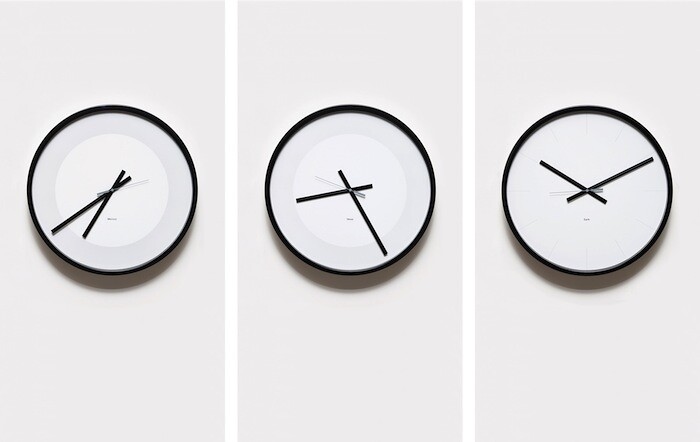
It was difficult, having recently attended the opening of an art fair, to dispute Carolyn Christov-Bakargiev’s assertion that “we live in the age of oligarchs.” The newly appointed director of two of Turin’s most celebrated arts institutions told me, as we meandered through the halfway re-hung galleries of the Castello di Rivoli, that one consequence of the international proliferation of private museums showcasing collections amassed by a small number of competitive collectors “with little interest in the past” is a phenomenon akin to cultural-historical amnesia. It is her responsibility, she said, to use the extensive public collections at her disposal to foster interactions between past and present, teasing out the connections between different eras rather than reinforcing the illusion that our times (and by extension our artists) are divorced from the past.
The architecture of Turin provides a neat analogue for the productivity of such intergenerational dialogue. My taxi from Castello di Rivoli—situated in the former residence of the Royal House of Savoy on the city’s picturesque outskirts—to Artissima—which occupies a Renzo Piano-designed conference center in the heart of what was once the city’s industrial district—passes ancient Roman settlements, Guarini’s dome for the Chiesa di San Lorenzo, and, adjacent to the …
November 23, 2015 – Feature
Abu Dhabi / Dubai Roundup
Melissa Gronlund

On November 17, Abu Dhabi Art opened to its VIPs: an event so popular authorities had to redirect traffic off the highway to a new exit. Now in its seventh year under this name, the art fair of the United Arab Emirates’ capital city hosts a smattering of blue-chip galleries—Lisson, Hauser & Wirth, David Zwirner—as well as good lesser-known galleries from beyond art’s Western power centers, like Le Violon Bleu from Tunis or the Third Line from Dubai. It is held every November, and rather pales in comparison to the larger and better attended Art Dubai, in March. The local collecting scene is still forming, and one of the major buyers at the fair is the Guggenheim Abu Dhabi, part of the trio of future museums—the others being the Louvre Abu Dhabi and a national museum designed by Norman Foster—whose promise dominates thinking about art in the city.
A number of the panel discussions at the fair revolved around the new museums, including the starry talk by Guggenheim director Richard Armstrong, outgoing British Museum director Neil MacGregor, and Agence France-Muséums chair Manuel Rabaté (standing in for Louvre president Jean-Luc Martinez, who stayed in Paris because of the events there). The museums—the …
October 23, 2015 – Feature
FIAC, Paris Internationale, and Paris Roundup
Claire Moulène
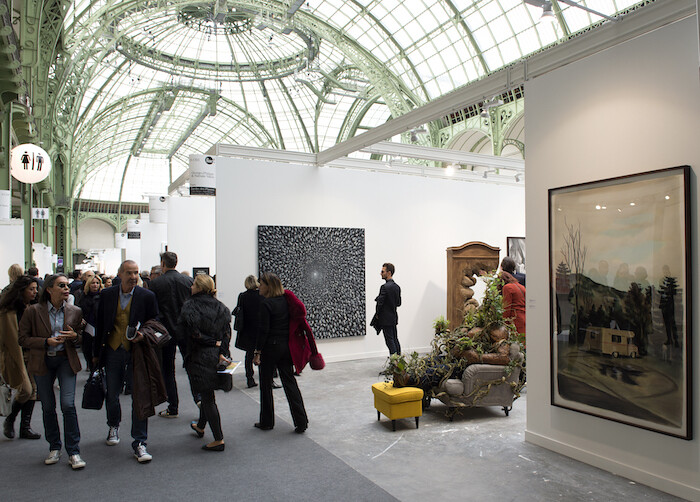
Emancipation. Such could be the keyword of this FIAC week in Paris. Since its 2003 takeover by the duo Martin Béthenod and Jennifer Flay (and then by the latter, on her own), the grand old lady that is FIAC has regained the golden splendor of the Grand Palais and the heart of the French capital. This move also allowed FIAC to return to the chessboard of the major international circuit, skillfully playing on both the modern and the contemporary tables. Yet this year the fair, upright on its two legs, flamboyant but not flambé, has been stabbed in the back. It was not betrayed by its detractors or by the “refusés” (and many were excluded from the final selection, which decreased to 172 from last year’s 191 participating galleries) but rather by new and timely independent initiatives in Paris, shaped by the desire for an overhaul of the landscape.
The first breakaway operation is Paris Internationale, which leaves all the other off fairs in the dust. Even FIAC’s sister fair, “Officielle”—founded in 2014 to host younger galleries—has a grim look this year, with the exception of a small handful of stands. Among them is Paris’s Galerie Olivier Robert, which presents a …
October 19, 2015 – Feature
London Roundup
Orit Gat
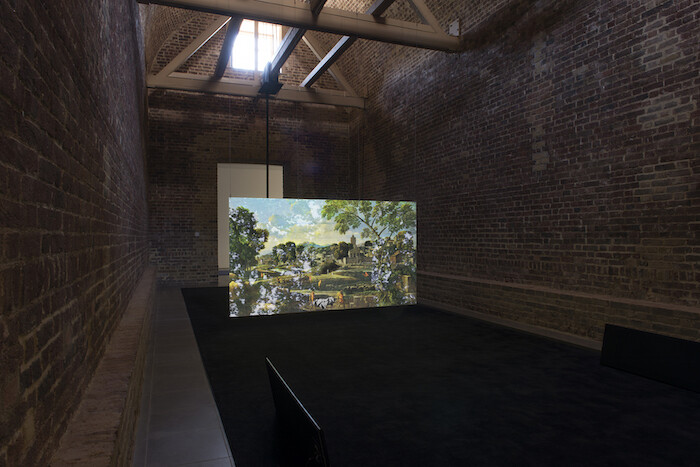
In an art fair week, when it seems like everyone around is constantly discussing where they were, what they saw, and how it was, discourse is dependent on physical participation, on the encounter with art in a space, strengthening the primacy of the exhibition as a mode of experiencing artwork. While there is still a lot of thinking to be made about how display has historically shaped production and continues to do so, Frieze week in London is a great moment to assess whether there is something about the exhibition that makes it such a lasting form.
So why do we still go see exhibitions? Chisenhale Gallery is showing Jumana Manna’s A magical substance flows into me (2015), a 70-minute film screened five times a day. It is an exploration of traditional local music in Palestine/Israel, based on Manna’s research into the work of the German-Jewish ethnomusicologist Robert Lachmann (1892-1939) in Mandatory Palestine. Manna plays radio recordings made by Lachmann on an iPhone to the participants in her film, ranging from a young Jewish musician singing the Arabic songs her Moroccan grandmother taught her to a Palestinian flute maker who explains that traditional Palestinian music is more fashionable in the West …
September 1, 2015 – Feature
Felix Gonzalez-Torres’s "1990: L.A., ‘The Gold Field’"
Felix Gonzalez-Torres
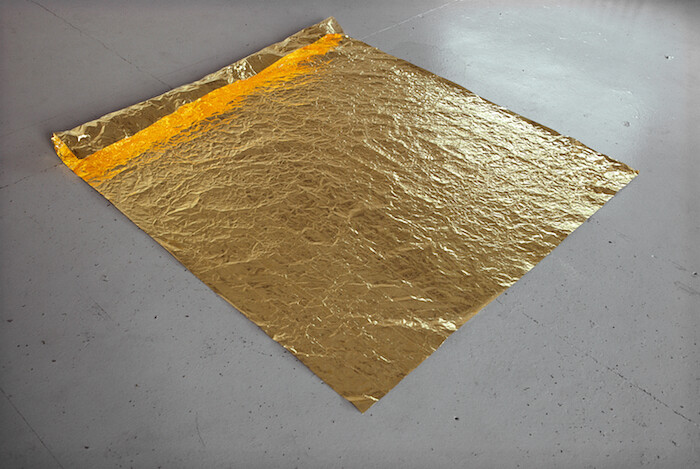
A dialogue made of gold: such was the conversation between artists Roni Horn and Felix Gonzalez-Torres, initiated in the early 1990s and only interrupted due to Gonzalez-Torres’s death in 1996. It all started on a spring afternoon in 1990, when Gonzalez-Torres, along with his partner Ross Laycock, visited Horn’s solo exhibition (April 22–July 22, 1990) at Temporary Contemporary, the temporary venue of the Museum of Contemporary Art in Los Angeles, and encountered her 1982 work Gold Field.
Placed directly on the floor, Gold Field consists of a large and thin rectangular sheet made of one kilo of pure, annealed gold. Gold Field presented itself as “a new landscape, a possible horizon, a place of rest and absolute beauty,” giving the couple solace from their dramatic situation: Laycock was dying of AIDS, surviving the show only by six months, and the overall vision of the U.S. as a country that was facing “the abandonment of the ideals on which (it) was supposedly founded” was somber and asphyxiating.
Three years after this encounter with Gold Field, Gonzalez-Torres and Horn meet. Touched by their common affinities, Roni Horn sends Felix Gonzalez-Torres a square of gold foil, a sheet similar to those made by the …
July 27, 2015 – Feature
The Live/Work Gallery
Jonathan Griffin
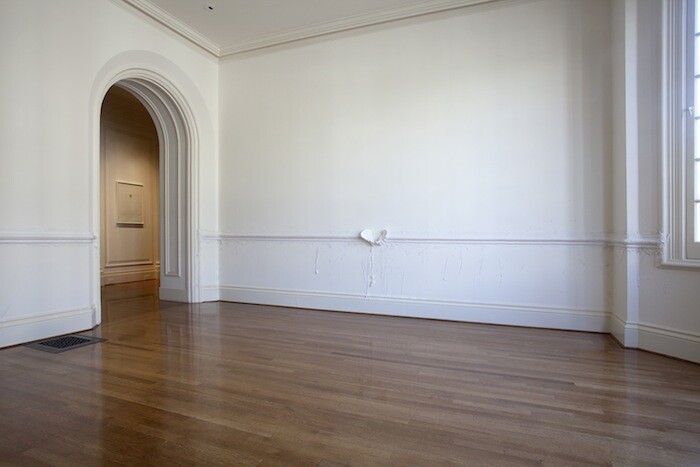
In the first feature in art-agenda’s Spaces series, Chris Sharp enumerated the various species of apartment gallery, a family of spaces that he described as having evolved in contradistinction to the white cube. Sharp’s analysis was made largely along architectural—and thus stylistic and perceptual—lines. Wainscoting, paneling, and cabinetry are all pertinent identifiers of the apartment gallery, unless, as Sharp puts it, the room as been “white-cubified.”
Before reading his piece, I myself had been reflecting on the growing number of commercial galleries that are operated from dealers’ homes. My interest, however, was quite different to Sharp’s. What did it mean, I had begun to wonder, when the proprietor of a gallery actually lived in (or above) the space where they did business? Under what circumstances can art and life, commerce and domesticity, productively exist under the same roof?
On a recent visit to the uptown (and original) premises of Salon 94, the New York Gallery that opened in 2003 and which now has additional spaces on the Bowery and Lower East Side, I could hear owner Jeanne Greenberg Rohatyn’s daughter having a music lesson upstairs. Greenberg Rohatyn juggles her roles as a mother and a wife, a business owner and a socialite. …
May 1, 2015 – Feature
The Apartment Gallery
Chris Sharp
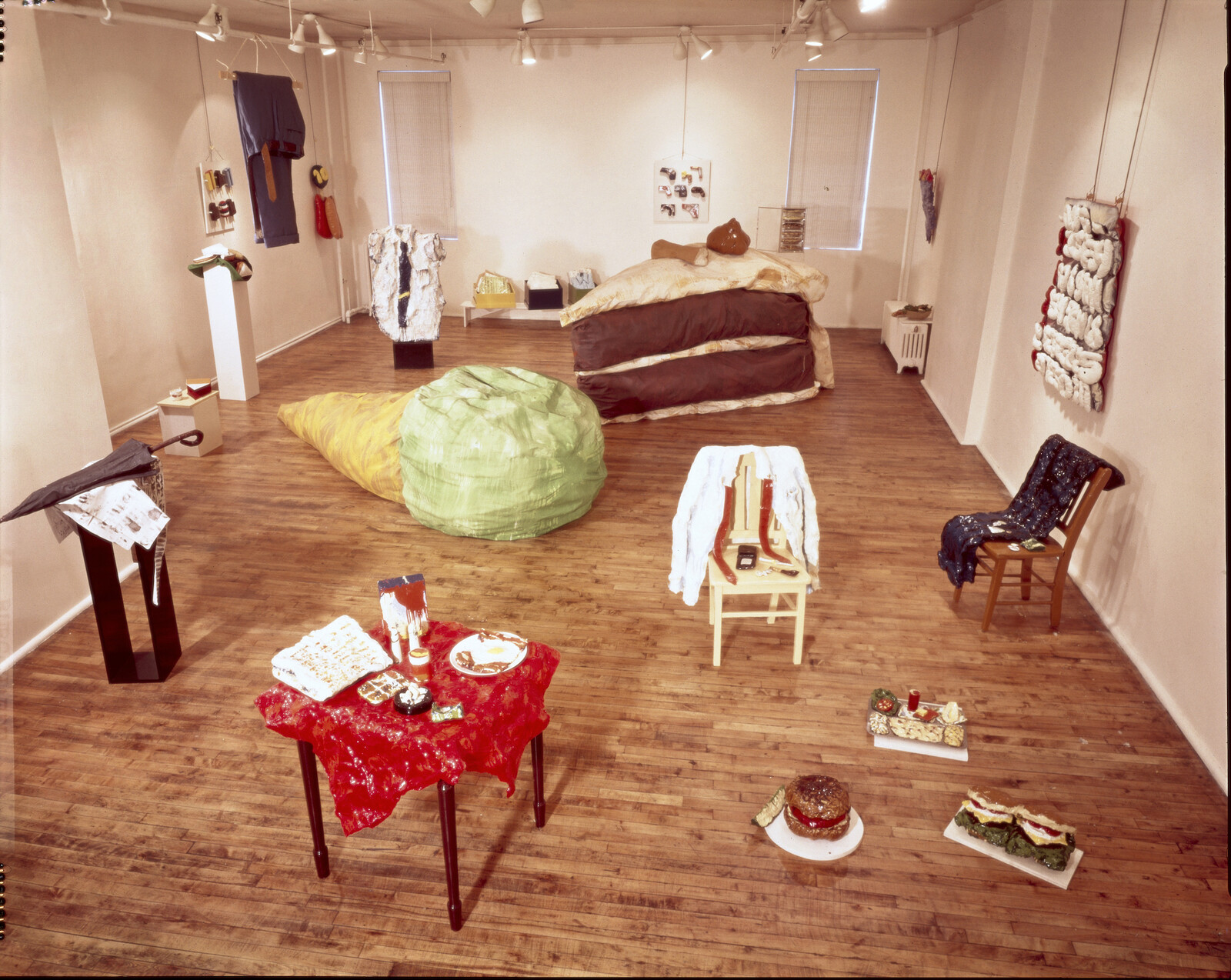
The first feature of Spaces proposes a taxonomy of four phyla to classify the apartment gallery.
Any reflection on an exhibition space alternative to the white cube would seem to imply some kind of critique of the latter. But this, at least for me, is not necessarily the case. At the risk of seeming conservative or reactionary, or somehow even gleefully politically incorrect, I’ll say that I actually like the white cube. As a viewer, writer, and curator, I like the specific conditions it unequivocally establishes—be it in a museum or gallery space—which, with the exception of the opening (for socializing, networking), is to look at and experience art. For while a certain political correctness implicitly obliges us to condemn the ideological nexus of the white cube as a pseudo-religious perpetuator of mere commodity fetishization, it cannot be denied that the vast majority of people who enter galleries do not do so to buy art. What is more, even though gallery conditions tend to foster a certain kind of self-contained art, in a quasi-sacral silence which is as auditory as it is architectural, this environment cannot be found anywhere else. The singular purpose to which white cubes aspire is plain: …
October 17, 2014 – Feature
London Round-up
Colin Perry
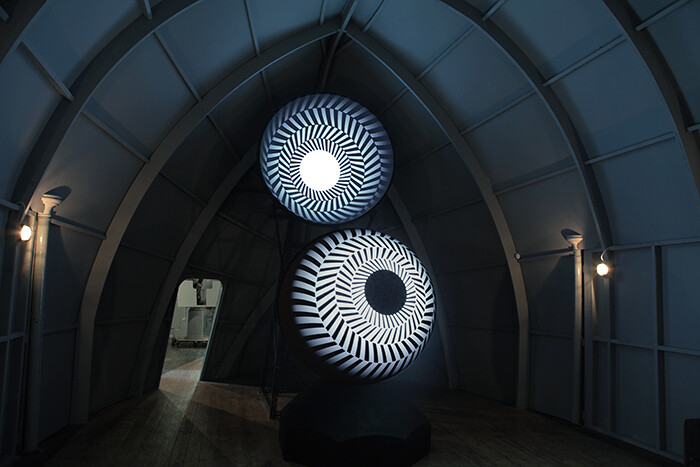
Outside the Frieze Art Fair’s tented metropolis in Regent’s Park, London’s more permanent gallery spaces this week offered countless illuminated or screen-based spectacles. I was transported, more than once, into other worlds: dizzying screen-spaces in which gender, geography, and time blur and fracture. This was all the more pronounced because, inside the fair, such works were scarce: the Frieze Film section has been abandoned, replaced by a lackluster performance programme. Nevertheless, the city’s commercial and public galleries host a vast array of moving-image works, immersive installations, and soundscapes.
The biggest of these otherworldly media-friendly extravaganzas is “MIRRORCITY”—the zaniest and therefore the best show I’ve seen at Hayward Gallery in years. Dealing with the “digital revolution,” science fiction, and the city, the exhibition is wonderfully muddled. Phlegmatic hacks such as The Guardian’s Jonathan Jones hated it, and failed to engage with its challenges. “MIRRORCITY” is not a one-liner show: it stakes a claim to the muddy terrain of human experience in toto—sexuality, identity, fantasy, and geopolitics—and there are delights aplenty: a vast, upturned boat-shaped edifice, which houses a moving-image work by Lindsay Seers (Nowhere Less Now, 2014, a new version of a work first presented in 2012 as an Artangel commission); Ursula …
May 27, 2014 – Feature
Les Immatériaux: A Conversation with Jean-François Lyotard and Bernard Blistène
Tara McDowell
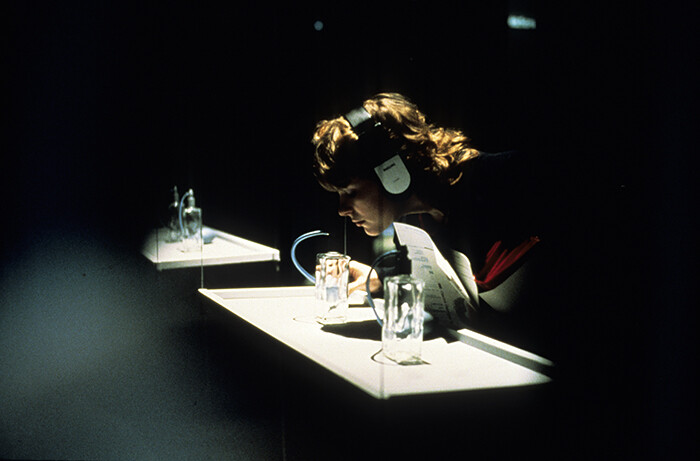
From our contemporary vantage point, is there anything—whether philosophical inquiry or historical phenomenon—more anachronistic than postmodernism? Jean-François Lyotard published The Postmodern Condition in French in 1979, but the intervening three-and-a-half decades cover a period we now call “the contemporary,” even as the label struggles with each passing year to contain all that falls within its temporal and now global bounds. In March 1985, the Centre Georges Pompidou in Paris opened “Les Immatériaux,” an exhibition organized by Lyotard—then at the height of his influence—and Thierry Chaput, project manager at the Centre de Création Industrielle in Paris.
While Lyotard’s attempt to convey the profoundly destabilizing experience of contemporary life via an exhibition may now seem as outmoded as the clunky IBMs he included, our current interest in new materialisms and attendant critiques of the relations between objects and humans, exhibition histories and their dramaturgies, and a spate of publications theorizing the contemporary all converge at the Beaubourg in 1985. In “Les Immatériaux” Lyotard attempted to use all the tools in his arsenal, from the latest technology to the full human sensorium, to query if and how our relationship to the world had fundamentally changed. For the tangle of conviction and ambivalence found in …
September 13, 2013 – Feature
The Magic of the State: A Conversation with Silvia Sgualdini and Beirut (Sarah Rifky, Jens Maier-Rothe, Antonia Alampi)
Laura McLean-Ferris
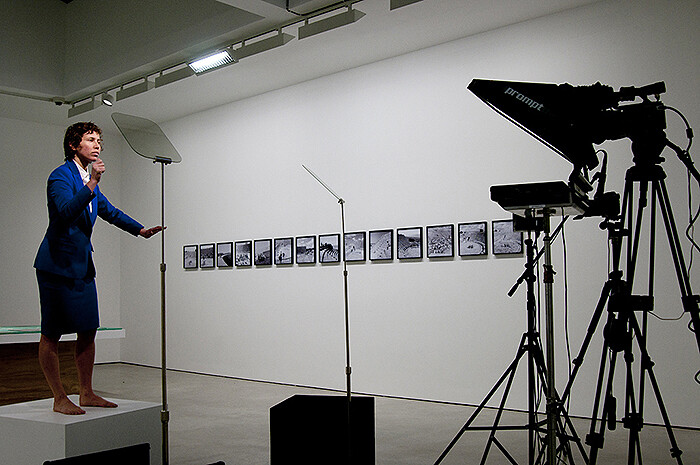
This spring, two interconnected exhibitions with the same title, “The Magic of the State,” were on view in London, at venerable commercial space Lisson Gallery (March 27–May 4) and in Cairo, at the fledgling not-for-profit space Beirut (March 3–April 6). Both shows featured the same list of artists—Ryan Gander, Goldin+Senneby, Rana Hamadeh, Anja Kirschner and David Panos, Liz Magic Laser, Christodoulos Panayiotou, and Lili Reynaud-Dewar—and an overlapping selection of works. The project, which borrows its title from a book by anthropologist Michael Taussig, presented artists drawn together for their shared interest in articulating or responding to the mechanisms of state power, and the high theatrics and tactics that endure across civilizations in seizing and maintaining such power. Each identified particular instances in which cracks in the armor of the state might be made—at moments of state formation, climactic political upheaval, or regime dissolution—and through which this certain “magic” might be glimpsed, glittering seductively.
Money, for example, was a form of magic that returned again and again in the exhibition, as a symbol once connected to the value of gold, and now loosened from any material connection. You want proof that magic works? Look at money. In fact, look at it “physically,” …
December 21, 2012 – Feature
Clement Greenberg’s “Bertolt Brecht’s Poetry”
Clement Greenberg / Antek Walczak
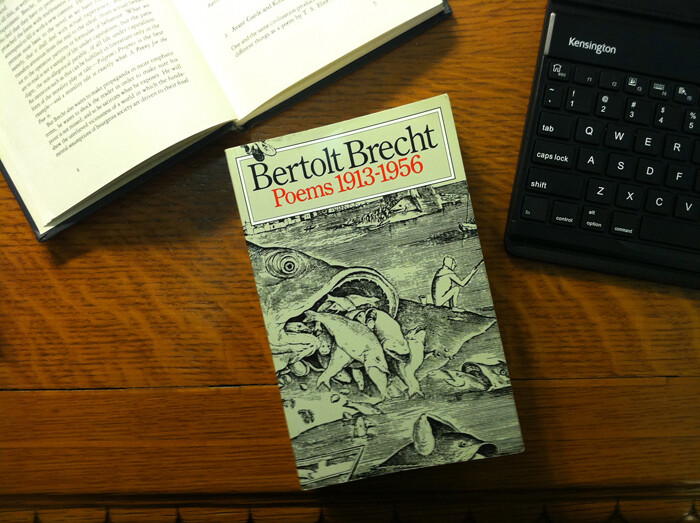
Friday in the Kali Yuga: Clement Greenberg and Bertolt Brecht
There’s a strong whiff of Abrahamic eschatology around all the web-geekery and folkloric appeal of Friday December 21, 2012. A single day of reckoning to put in your iCal, when the Messiah shows his cards. But like a ramped-up lottery pushing past the half-billion mark, this holiday fantasy cannot go on forever. Eventually the jackpot drops to zero because someone else has a winning ticket, or in the case of the day of reckoning and ultimate radical transformation: nothing happens, and see you all at work on Monday. Specific eschatological dates are harder to pin down in Indian and East Asian religions, where time’s ending is rather an endpoint in a cycle in symmetry with surrounding cycles, like the Hindu “age of the demon,” or Kali Yuga, with some 430,000 years of degradation, strife, and lust before the next cycle of ages recommences. In terms of kitsch signification, one could say that this conception of time is terribly complacent, where the dream of a better tomorrow becomes a simmering stew on low flame, a continuous browbeating and oppression that never finds relief in the flashiness of a revolutionary powder keg. On …
November 14, 2012 – Feature
Chelsea after Sandy
Kareem Estefan
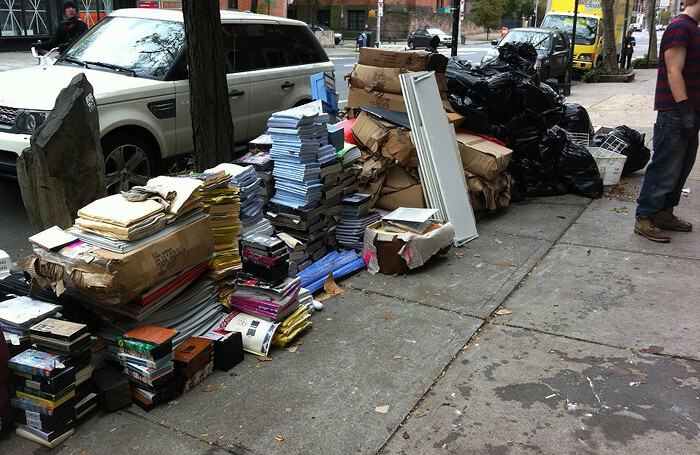
From houses scorched to the earth in Breezy Point, Queens, to homes completely swept away in Staten Island, when it came ashore late last month Hurricane Sandy wreaked unprecedented havoc on life as we know it in New York City. The storm cut off power for nearly a million New Yorkers, and tens of thousands remained without electricity, heat, or water for ten days or more. Artists, whose studios and galleries are disproportionately situated in coastal areas of Brooklyn and Manhattan like Red Hook, Dumbo, Greenpoint, Chelsea, the Lower East Side, and the East Village, have been among the hardest hit.
Two weeks after the storm, a besieged Chelsea art district is slowly coming to grips with the hurricane’s immense personal and economic impact, in artworks ruined and high-season sales foregone. To put a figure on the losses is, for now, a futile exercise. The neighborhood’s largest art insurance company, AXA, has received $40 million in claims from its clients, but many galleries were not insured by AXA—or at all—and even among those that were, the above sum does not even include equipment and infrastructure damage. If there is good news for the area west of Tenth Avenue, between 19th and …
June 17, 2012 – Feature
Art Basel roundup
Laura McLean-Ferris
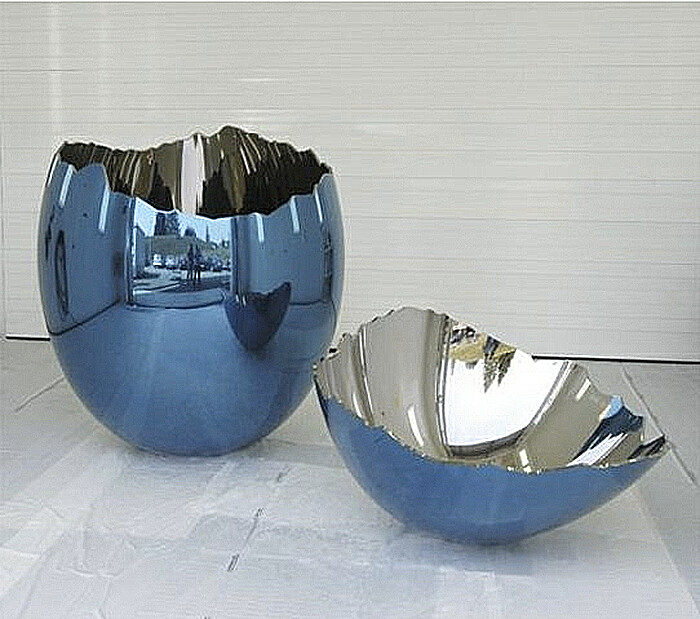
Jeff Koons’s giant blue egg sculpture—that outlandishly chatoyant and seductive object—looks as though it could have landed from another planet or another time. Its cracked top serves as a reminder of the way that Koons created a fundamental fracture within art history with his compelling work, and I was reminded of the artist’s monumental impact as I visited his exhibition at the Fondation Beyeler coinciding with the Art Basel fair, partly because it informed nearly everything I saw subsequently. The very first work in the show is the utterly eerie The New Jeff Koons (1980), a lightbox displaying an image of the artist as a young boy posing with crayons and a coloring book like the perfect child, his expression every bit the airy adult Jeff we have come to know: clear-eyed, polite and unnervingly serene, with his “how may I help you” smile. This image serves as an introduction to the artist’s brilliant Hoover sculptures and shampoo polishers in Plexiglas cubes, which revel in the purity of their box-fresh newness and aspirational product names—Celebrity and so forth, and assisted by Koons’s presentation and uncanny doublings. These, now more than thirty years old, are nothing short of visionary. They seem …
May 6, 2012 – Feature
Reyner Banham’s "Los Angeles: The Architecture of Four Ecologies"
Peter Plagens / Tyler Coburn
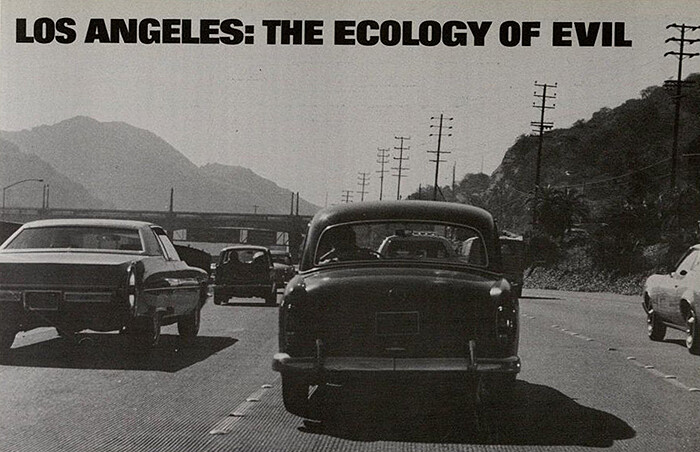
A year since first reading this review, in the arts library of the author’s alma mater, I remain utterly bewildered by its impassioned, personal rhetoric. Peter Plagens speaks with a proprietary and intimate knowledge of Los Angeles that neither reduces his role to that of regional gatekeeper, nor lapses into the vitriol that flows easiest from the pen. To defend his adopted city from encroaching optimism he chooses, rather, to measure the full mess from extremity to center and plumb the shallow histories of its asphalt face. So fucked a place has rarely been better written; and, contrary to present discursive apprehensions, Plagens’s belletrism performs a demonstrative service to his critical ethos.
—Tyler Coburn
“Los Angeles: The Ecology of Evil”
The city of L.A., it ain’t the way the posters say that it’ll be. Behind the palm trees and chrome I find a stucco home, And another factory. —from “The San Diego Freeway,” an unpublished song by Dave Hickey
Los Angeles once had to defend itself against snotty Eastern culture critics, English novelists, and middlebrow gossip columnists like Herb Caen who, from Provincetown-on-the-Thyroid, condescendingly refers to “that city down south.” The implication was always that Los Angeles, the world’s most spacious city, was in …
January 31, 2012 – Feature
"Environments, Situations, Spaces"
Jill Johnston / Media Farzin
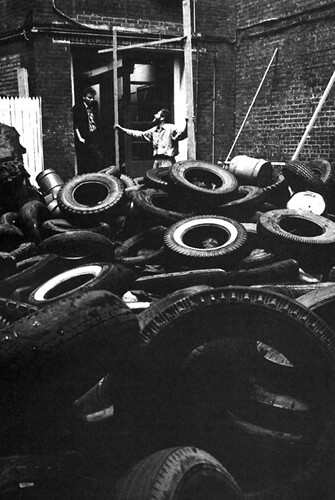
The critic, Jill Johnston once archly observed, is “one who practices the ART of criticism.” Johnston honed her skills through deep immersion in the New York scene of the 1960s, as a dance critic and later columnist for the Village Voice, and subsequently as a contributor to Art News, Art in America, and The New York Review of Books. Her brief, punchy reviews document an art that had not yet acquired a descriptive language, giving words to events that required a new sort of prose. Her writing style was intuitively suited to the task—an easy, fluid stream of consciousness; a direct response to things seen and felt; an informed, authoritative voice that could be funny, disparaging, and provocative in turns. More than a historic document of incredible immediacy, her work offers a model of art writing that recognizes its own stakes in creative production.
—Media Farzin
“Environments” at Martha Jackson’s
The “terrible children” invaded Martha Jackson’s Gallery last May and June with more of those baffling noncommercial commodities, things you can’t use or sell or label even, which nobody could be too clear about why they should be encouraged or endured much less considered the prestige items they obviously are, or …
December 9, 2011 – Feature
"9 Evenings: Theatre and Engineering"
Robert Smithson / April Lamm
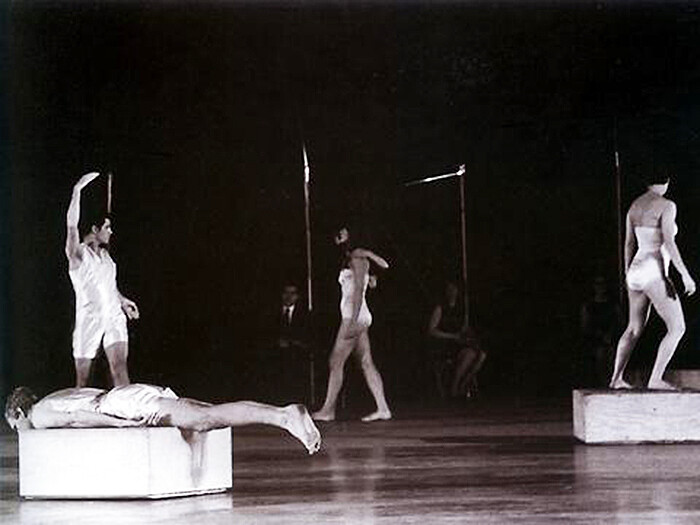
After stumbling across Robert Smithson’s vituperative response to a show that took place in 1966 at the Armory, I had to wonder what exactly it was that he saw. “Bovine formalism, tired painting, eccentric concentrics or numb structures”? His focus on the “funeral of technology” made me imagine that he’d seen a really bad Tinguely (which wouldn’t have surprised me) or maybe a bad Nam June Paik (which would). As it turns out, his ire was directed at an exhibition organized by Billy Klüver (an engineer) that included 10 artists, including Robert Rauschenberg, John Cage, Öyvind Fahlström, and Yvonne Rainer. Under the witty acronym E.A.T. (Experiments in Art and Technology) the performances, nonetheless, pioneered the way for the now-common practice of artists collaborating with practitioners from different fields. For the most part, the result of bringing 30 engineers together with 10 artists yielded performance kitsch at its worst (John Cage’s recordings of brain waves being the exception). You can watch a condensed (20-minute) version of the “Nine Evenings”: here.
—April Lamm
An Esthetics of Disappointment ON THE OCCASION OF THE ART AND TECHNOLOGY SHOW AT THE ARMORY
Many are disappointed at the nullity of art. Many try to pump life or space into …
June 19, 2011 – Feature
Art Basel roundup
Vivian Sky Rehberg
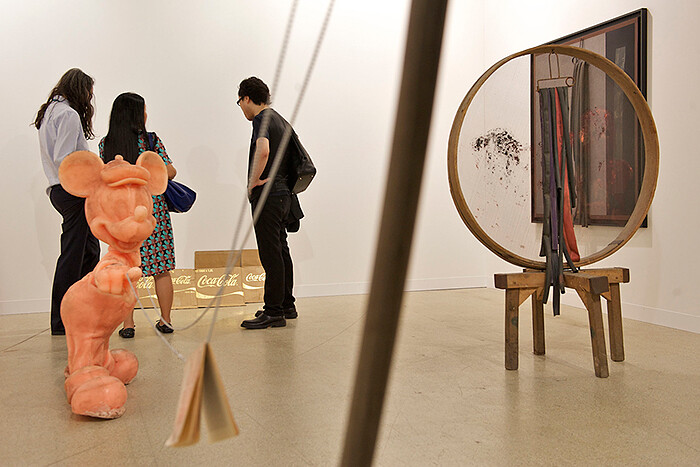
One hears a lot of grumbling about Art Basel. Or maybe it’s just the leftist company I keep. Still, I was surprised to meet more than a few people who had travelled all the way to Basel for reasons peripherally related to the fair but who had refused to step foot in it, according to the misguided “principle” that blinding oneself to the commerce of art is proof of genuine anti-capitalist credentials. Whatever happened to “know thine enemy”? And is the fair really the enemy? Well, historical materialists like me don’t believe in fairy tales and—guess what?—ignoring the art market does not make it go away. My choreographed wander through the behemoth Hall 2 was exhausting, terribly instructive and, in some cases, more aesthetically gratifying than many of the exhibitions I’ve recently seen in non-profit institutions.
Worth the trip alone: Isabella Bortolozzi’s stand, especially Carol Rama’s Movimento e Immobilita’ di Birnam (1977) with its limp bouquet of flaccid black rubber bicycle tire tubes, visually spare yet enticing. In an entirely different register, at Air de Paris, I didn’t know how to quit Dorothy Iannone’s Brokeback Mountain (2010), a brightly painted freestanding object, like a miniature altar, featuring portraits of the characters …
Load more